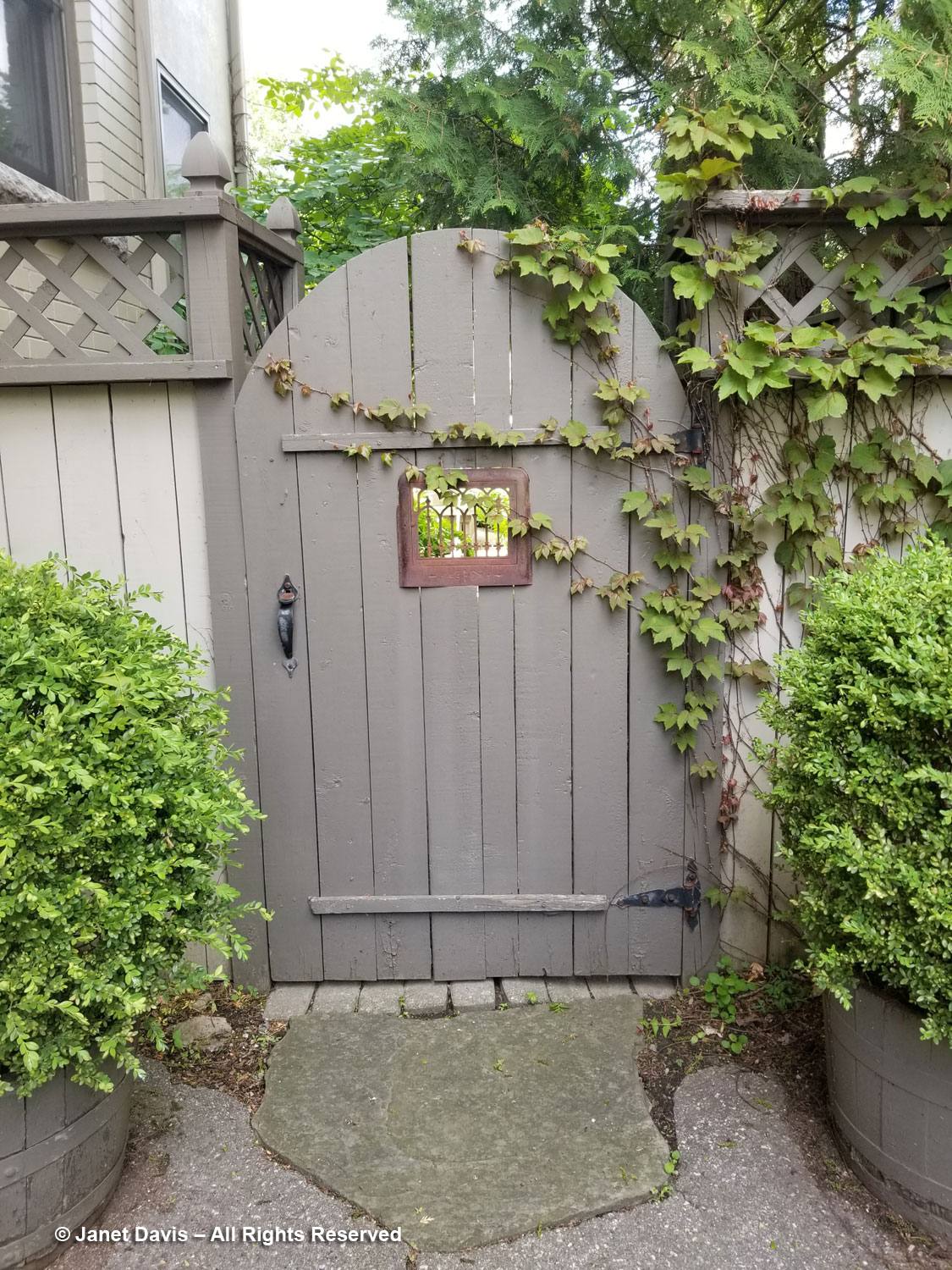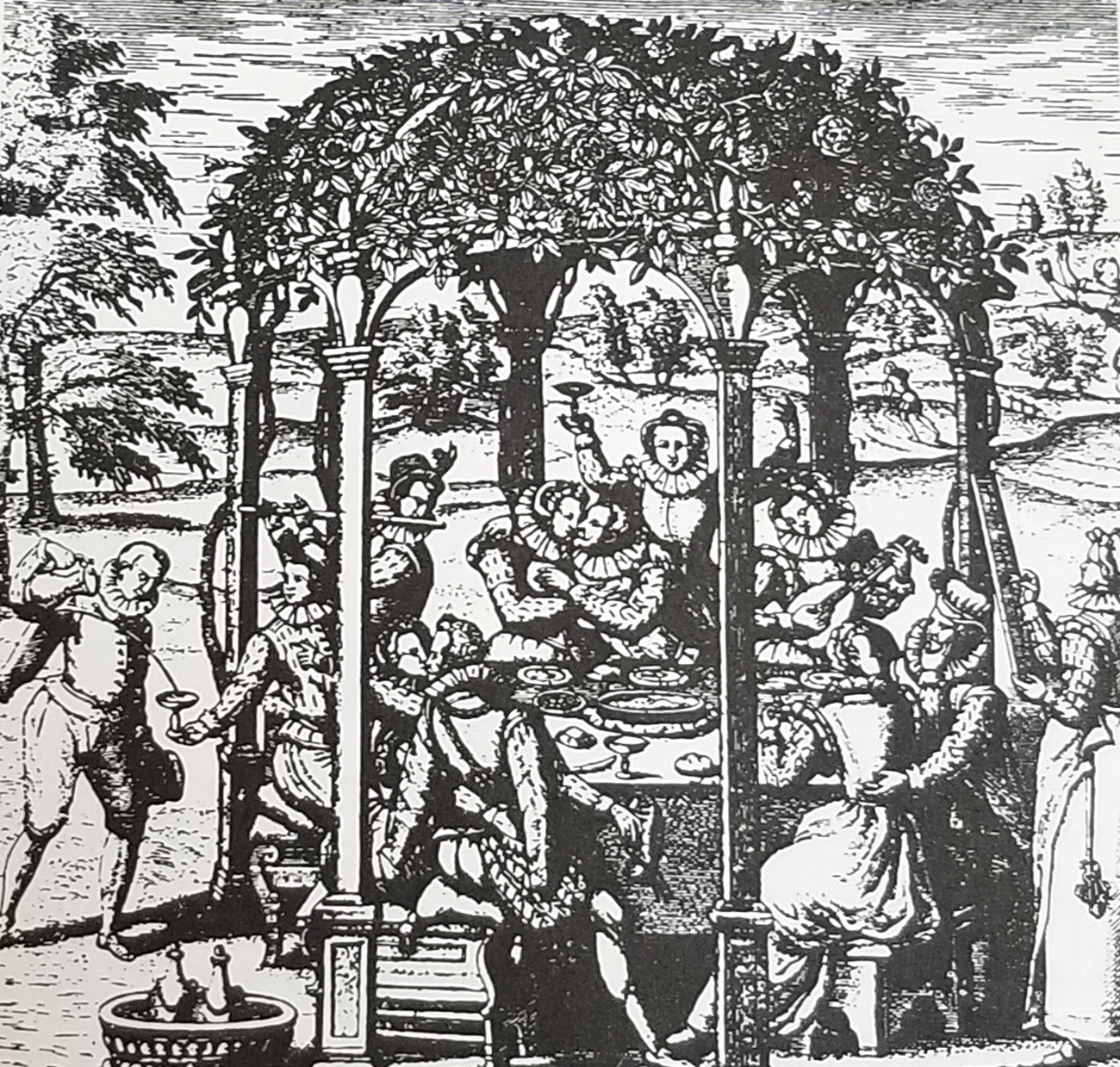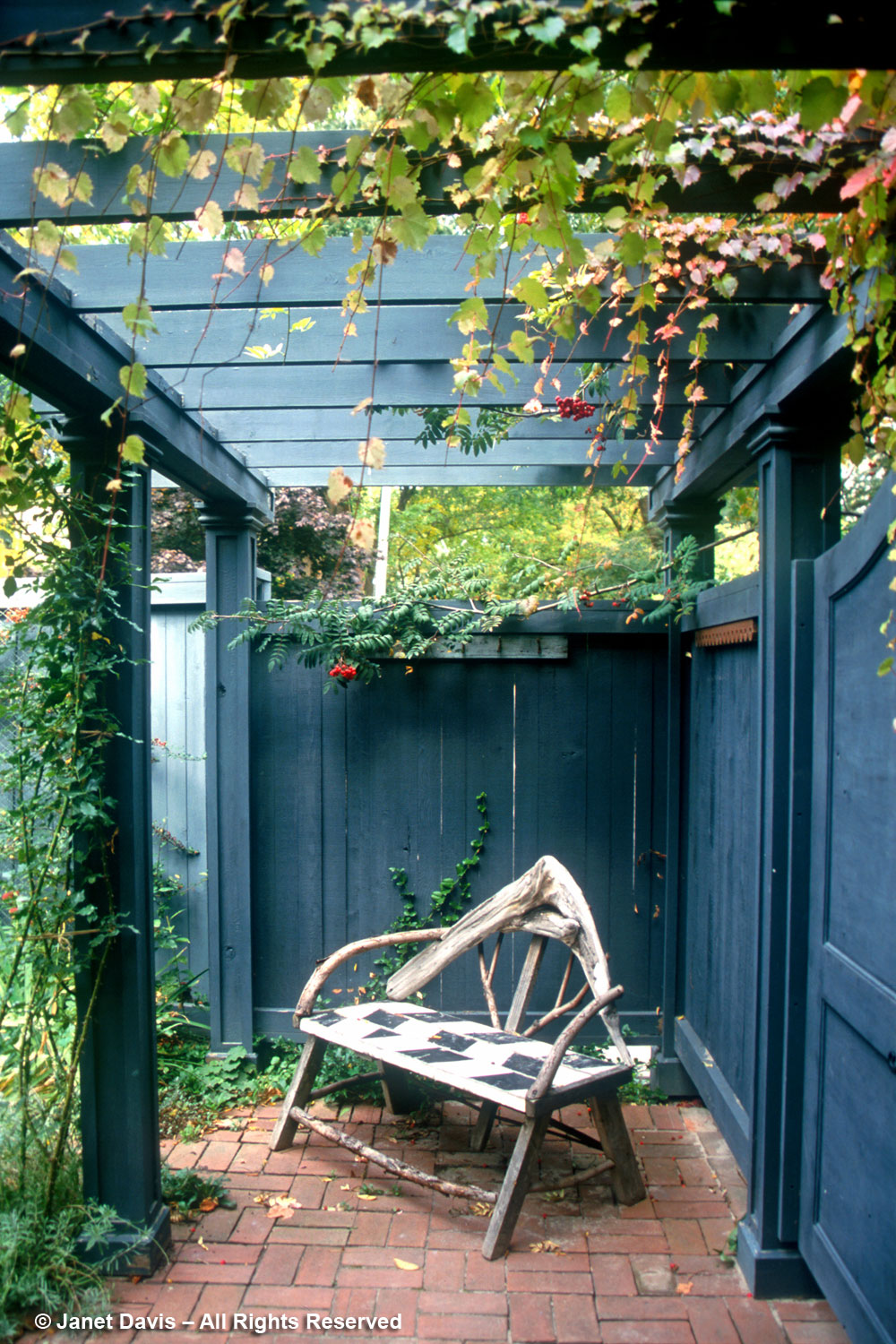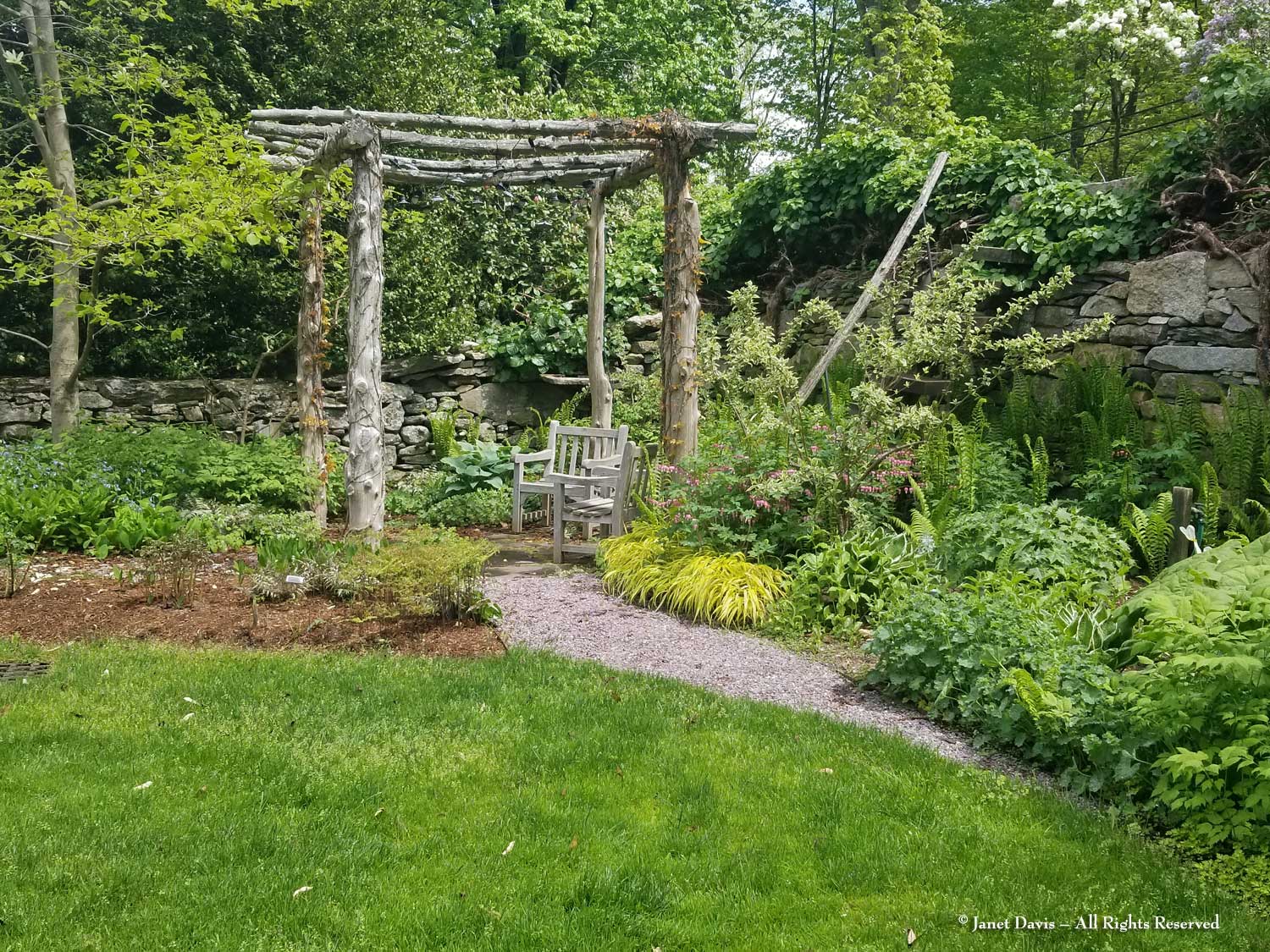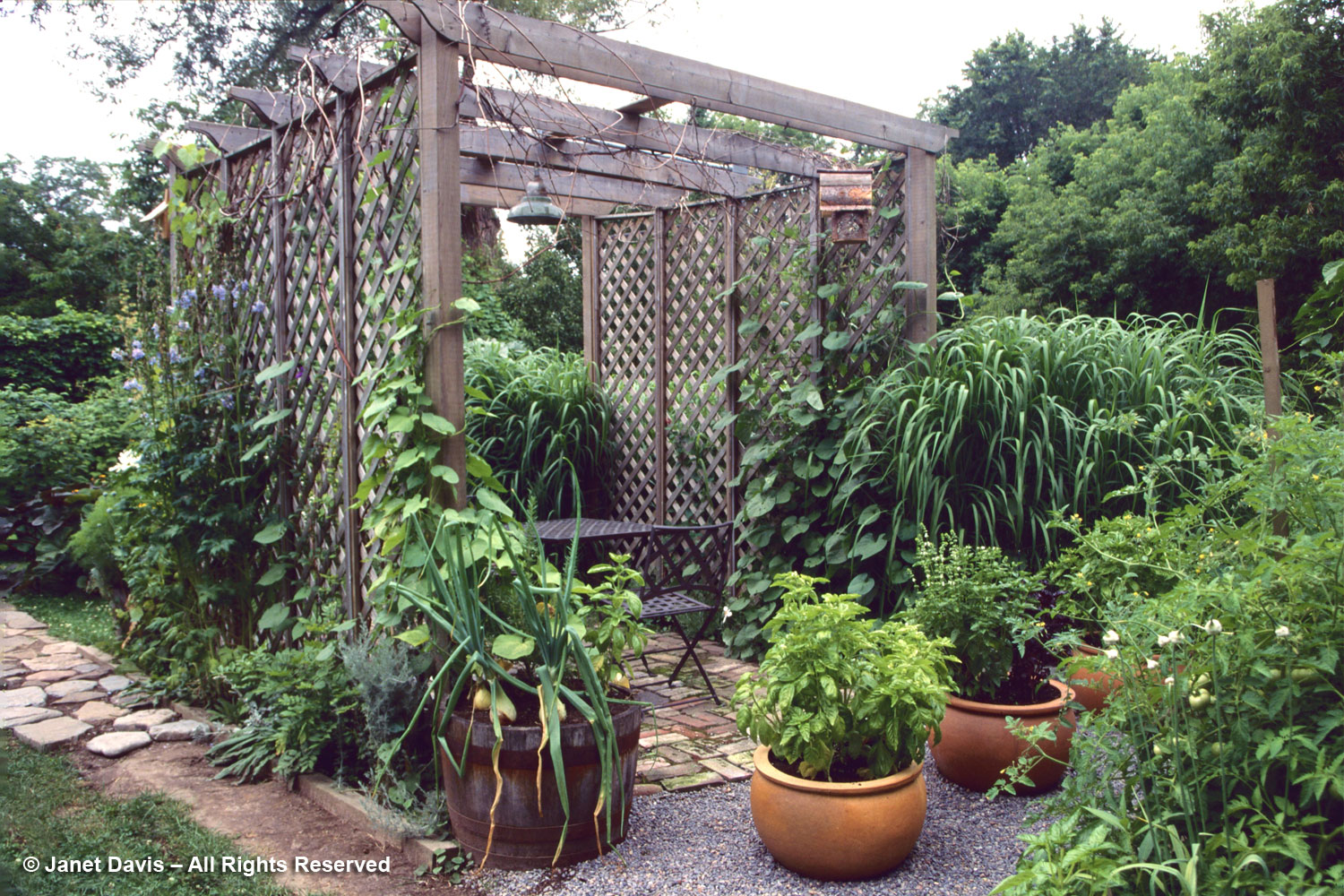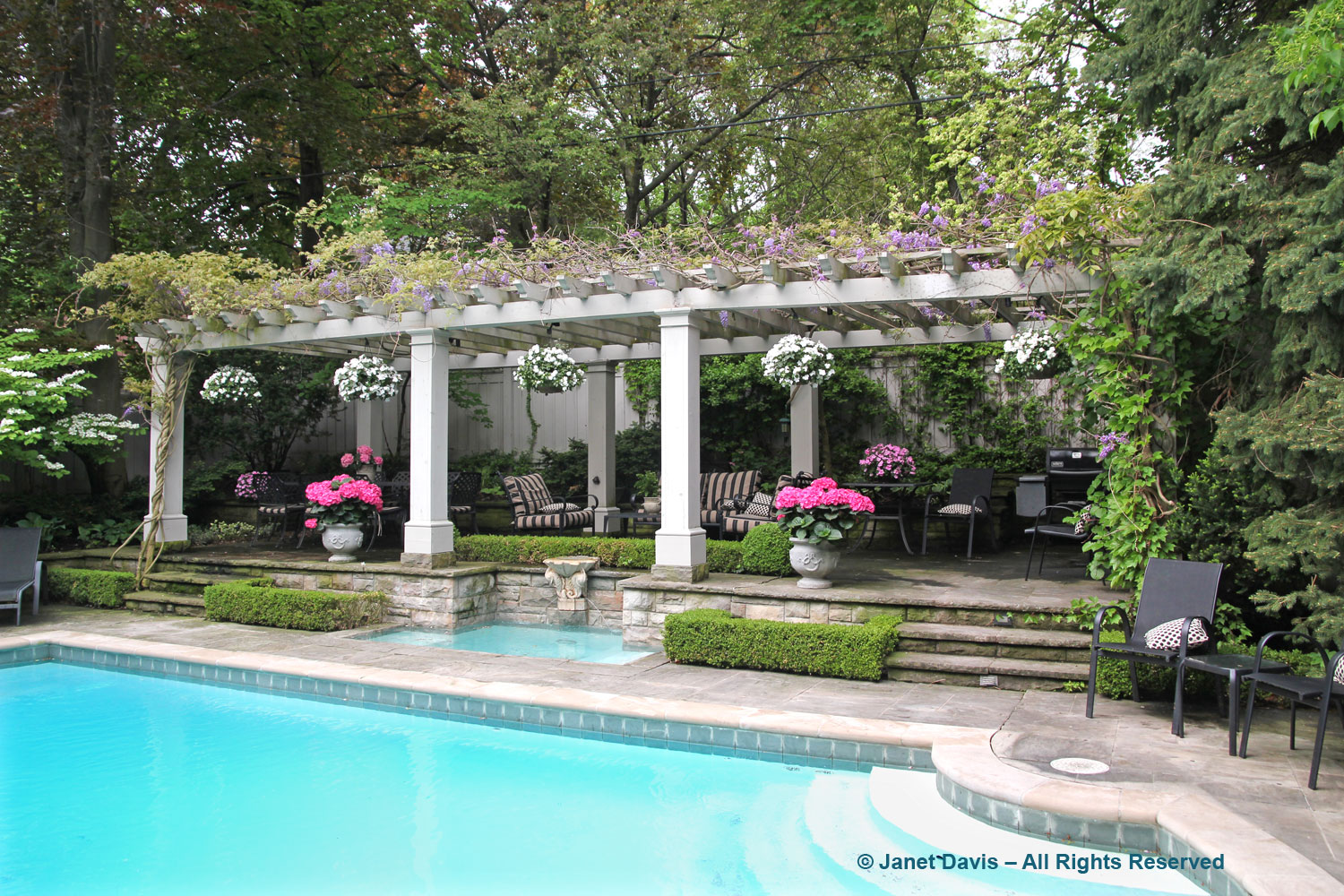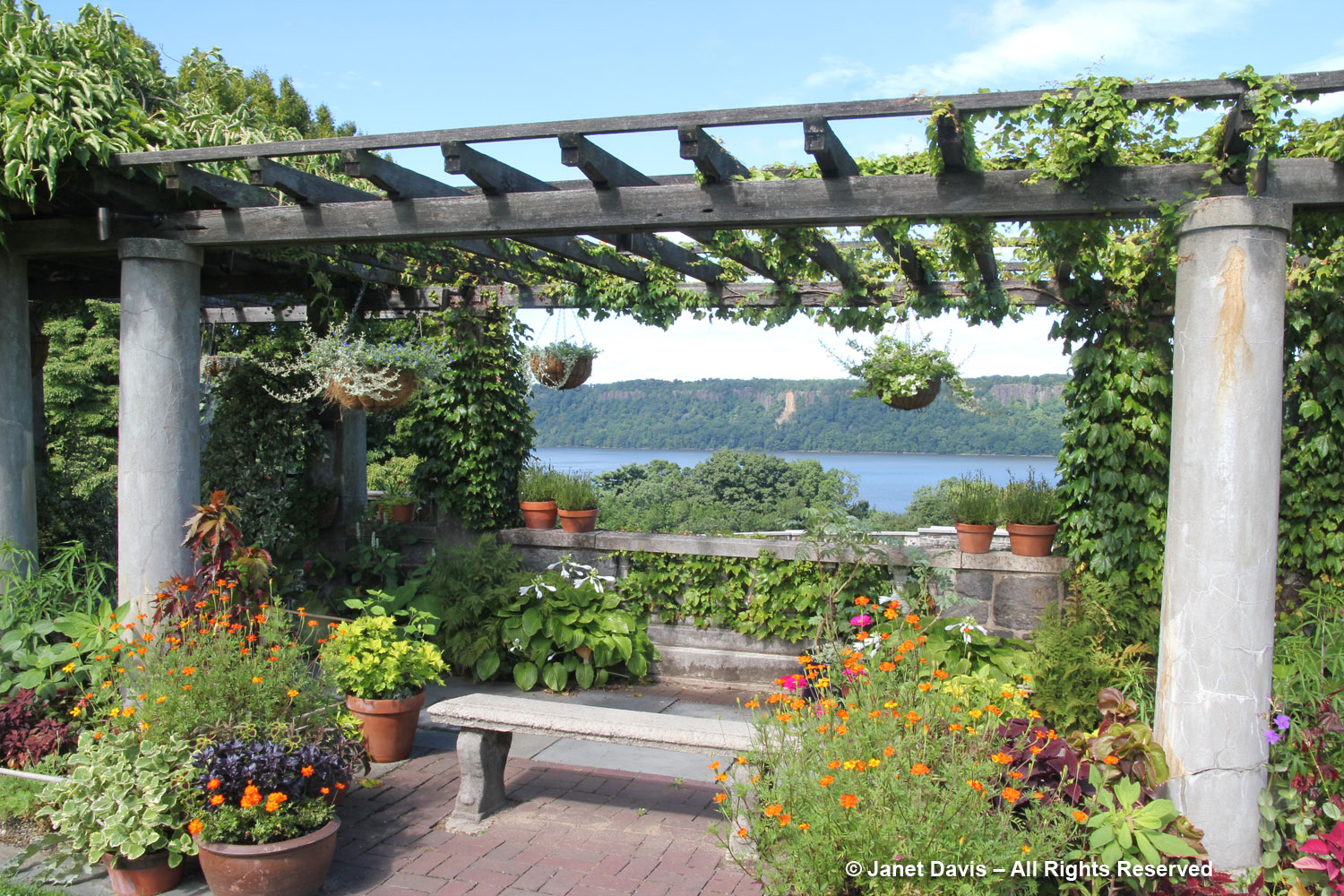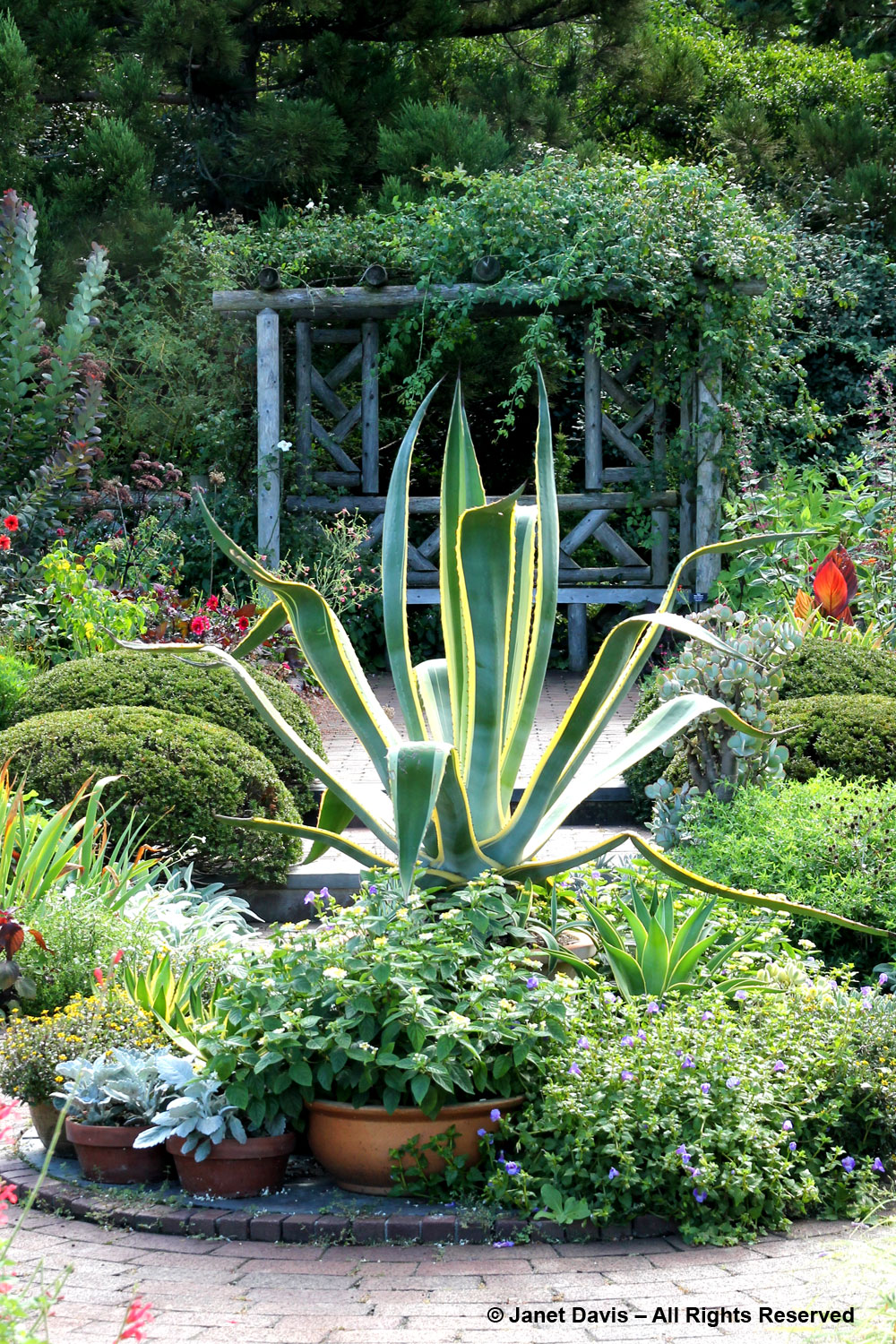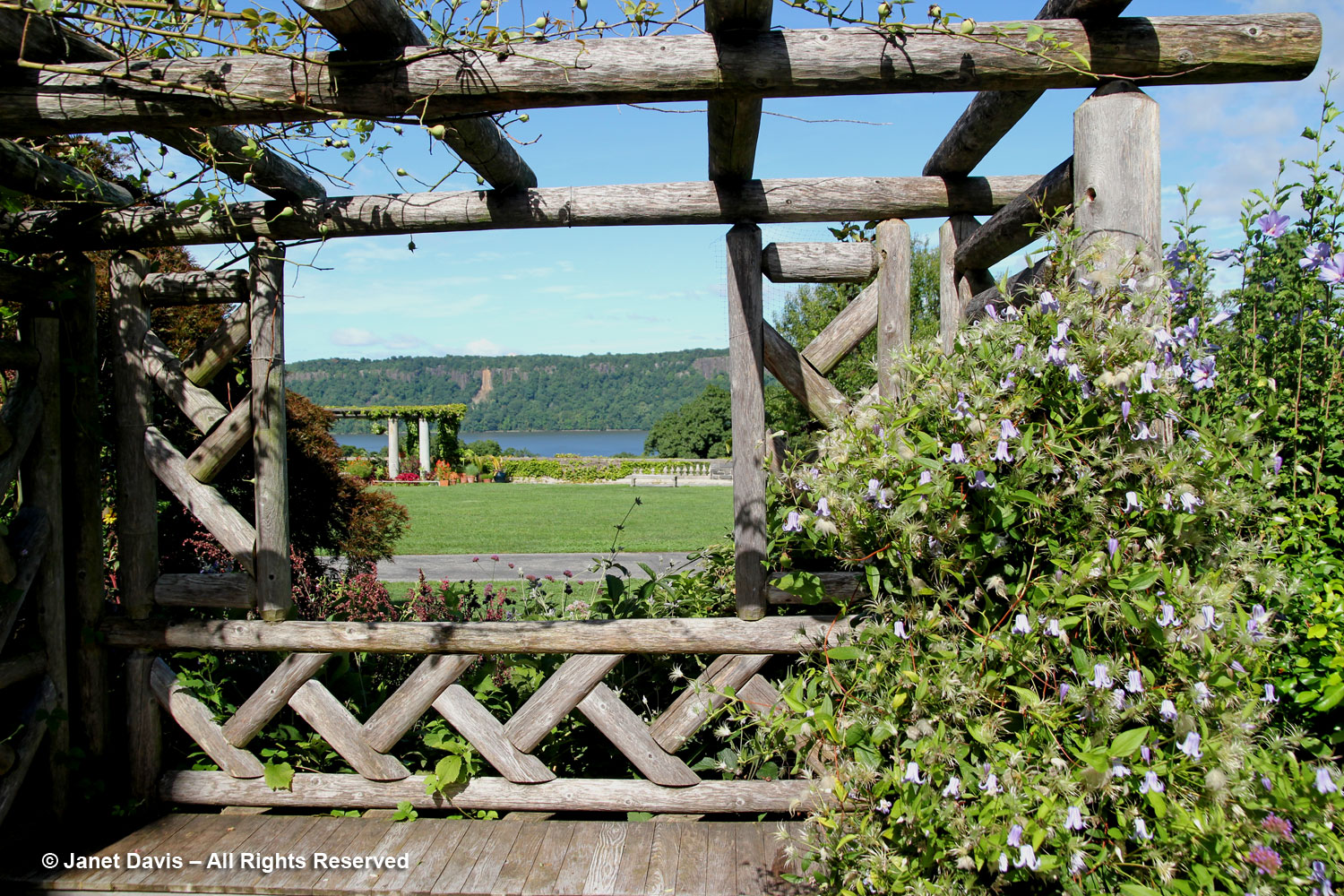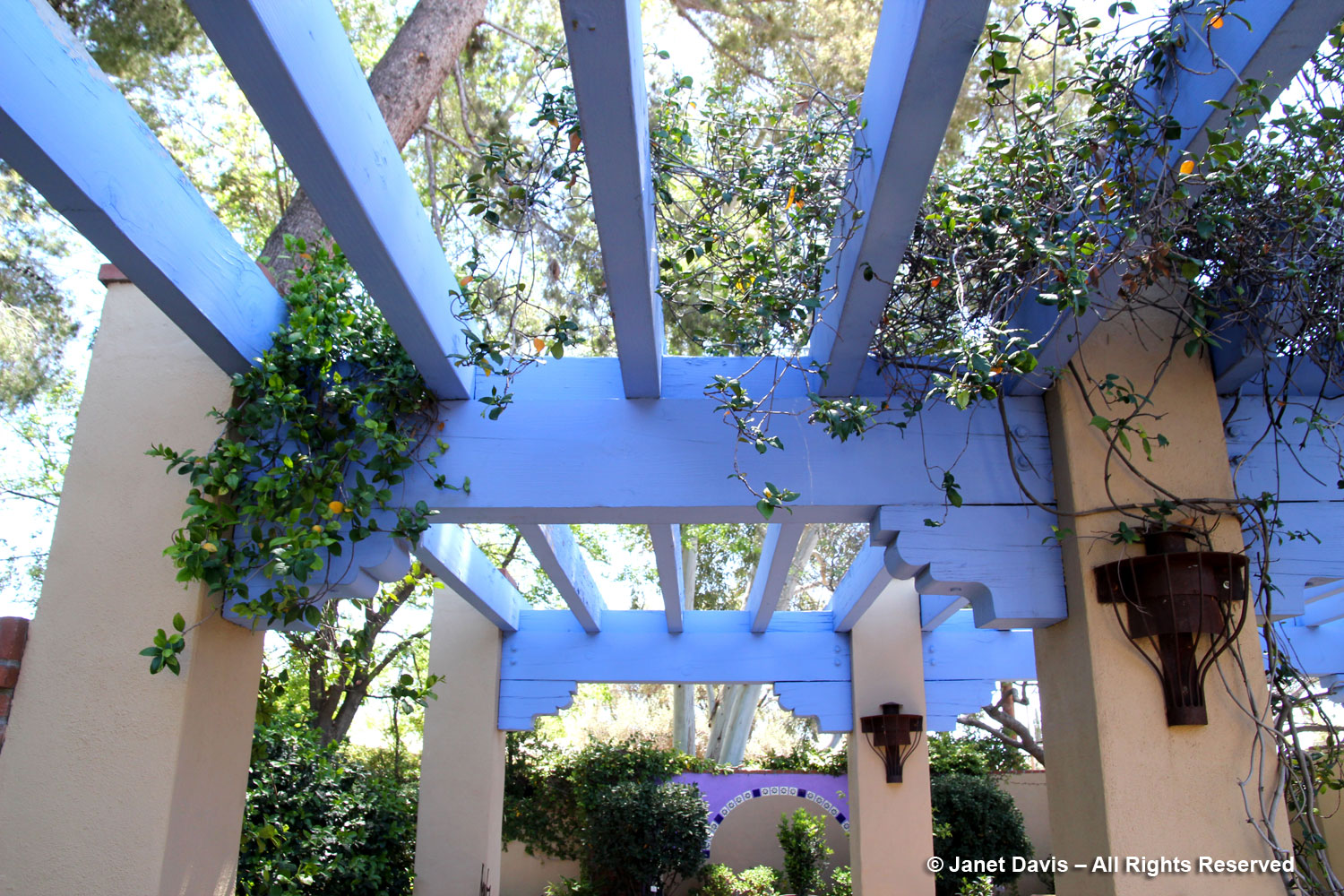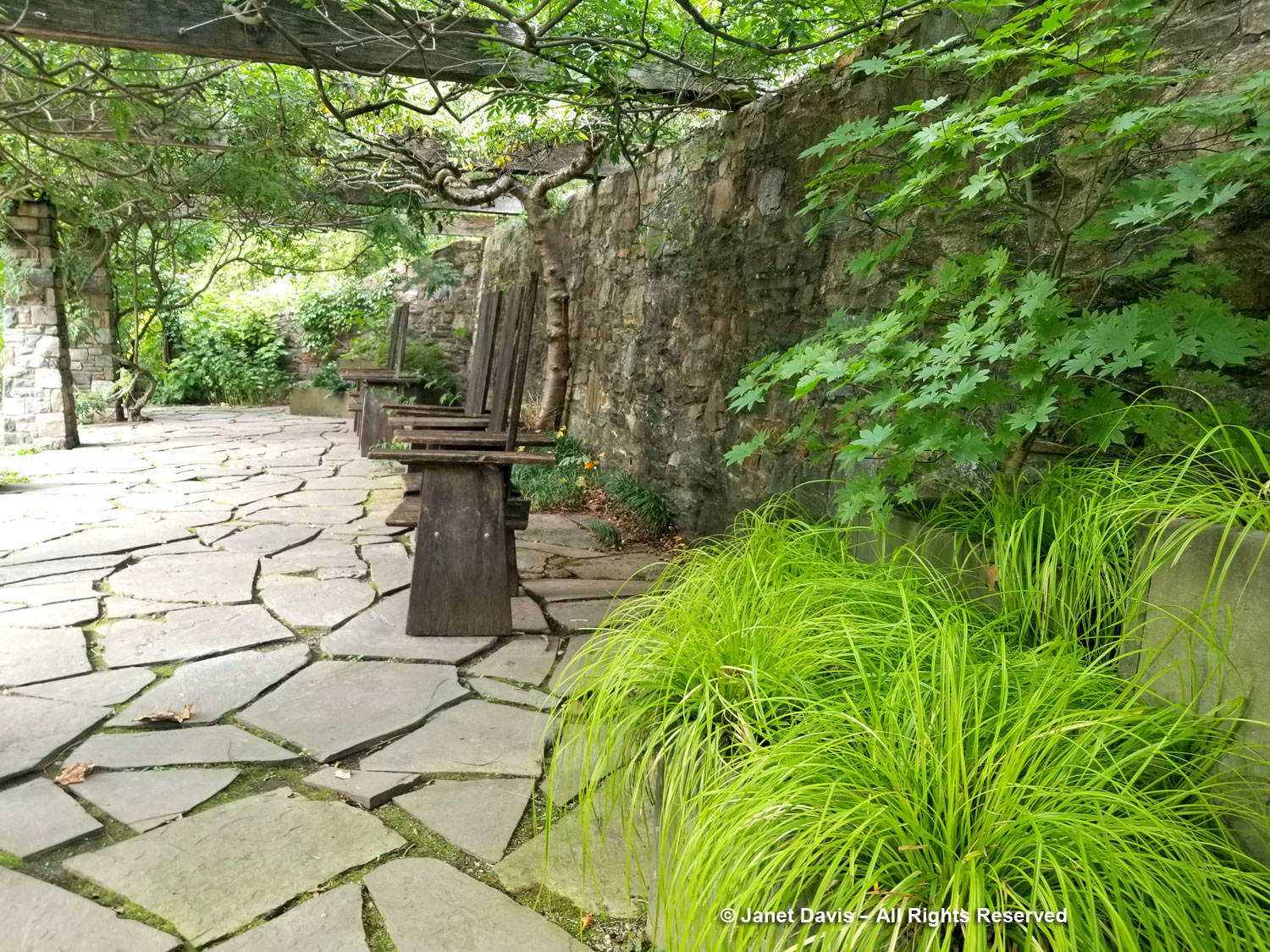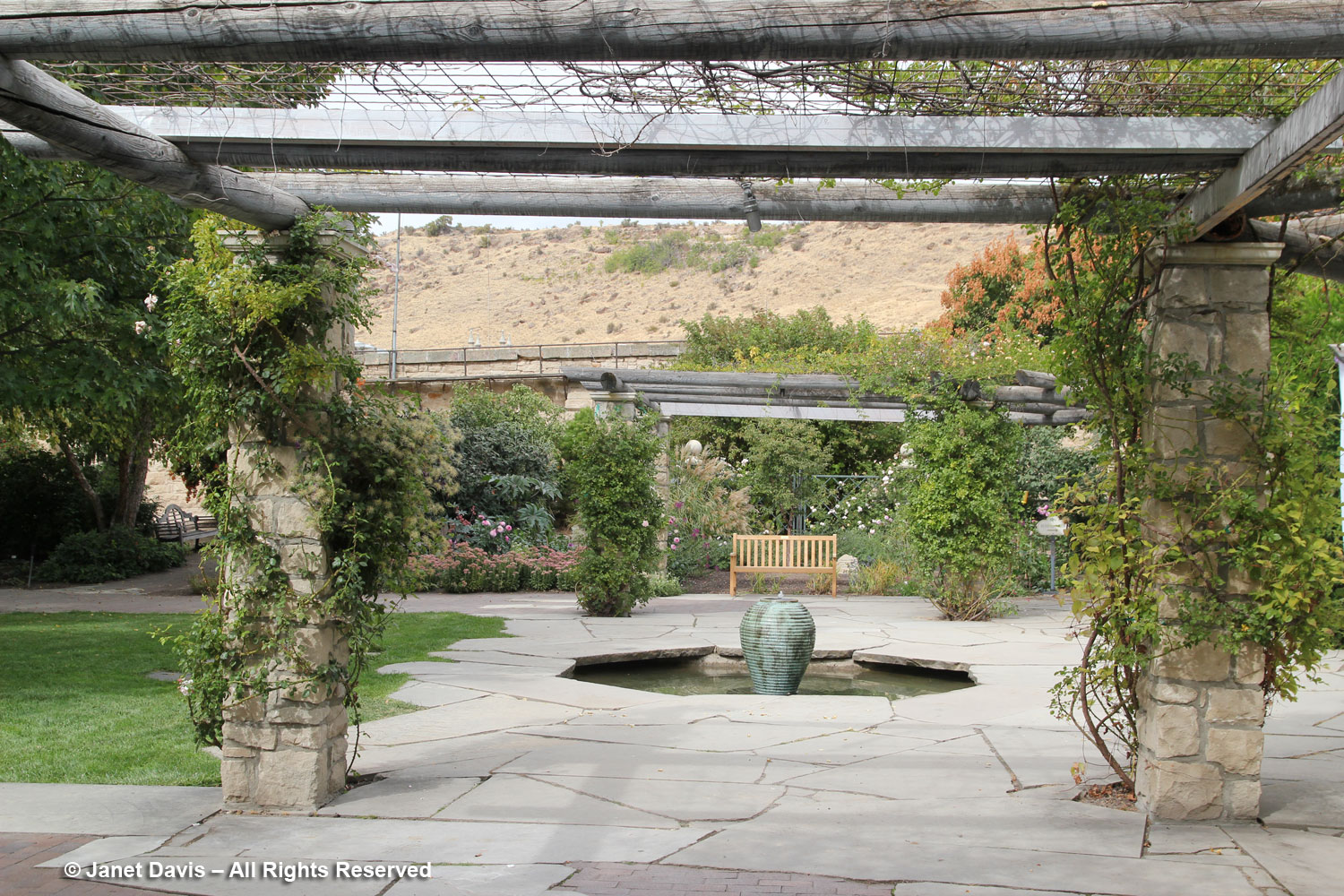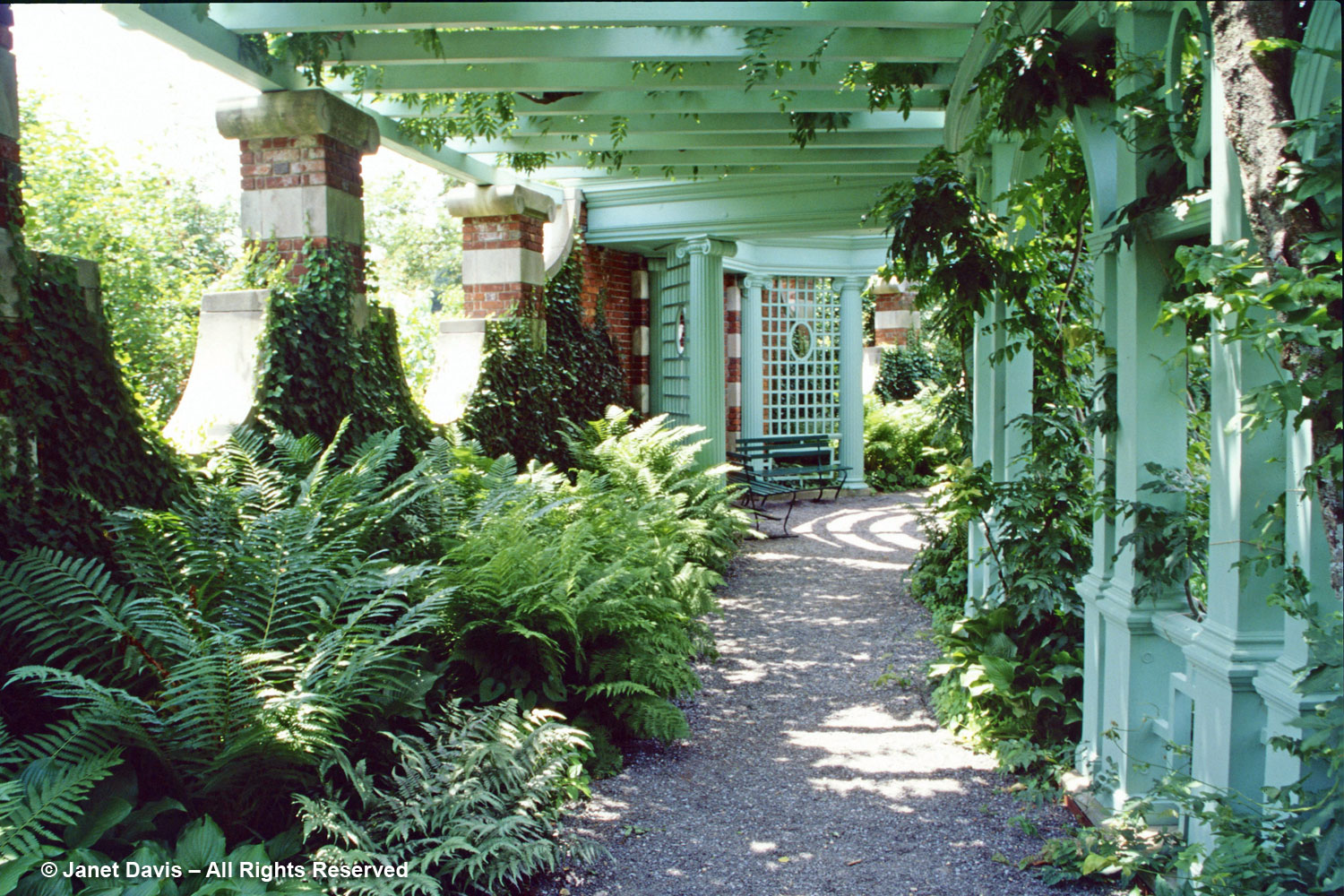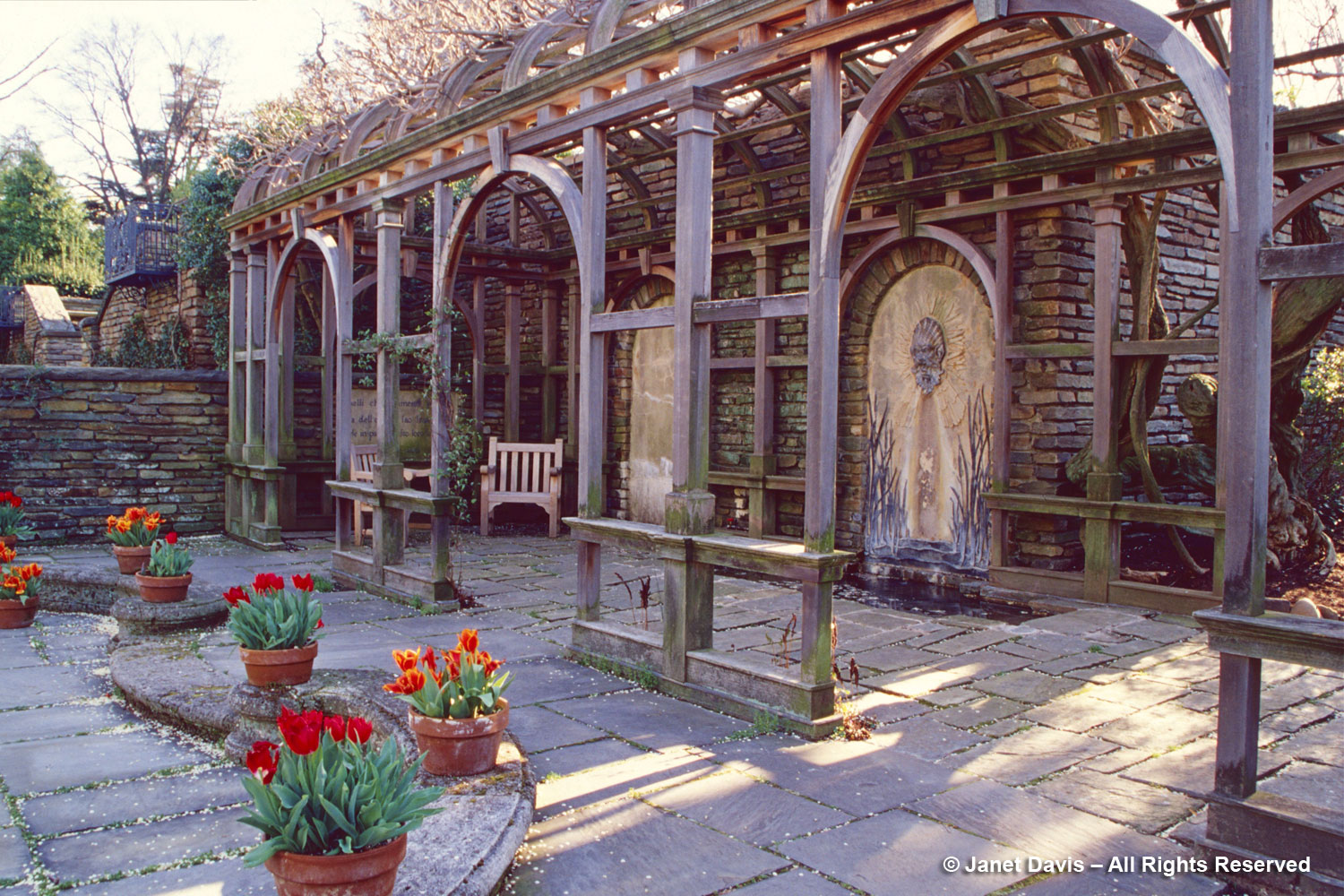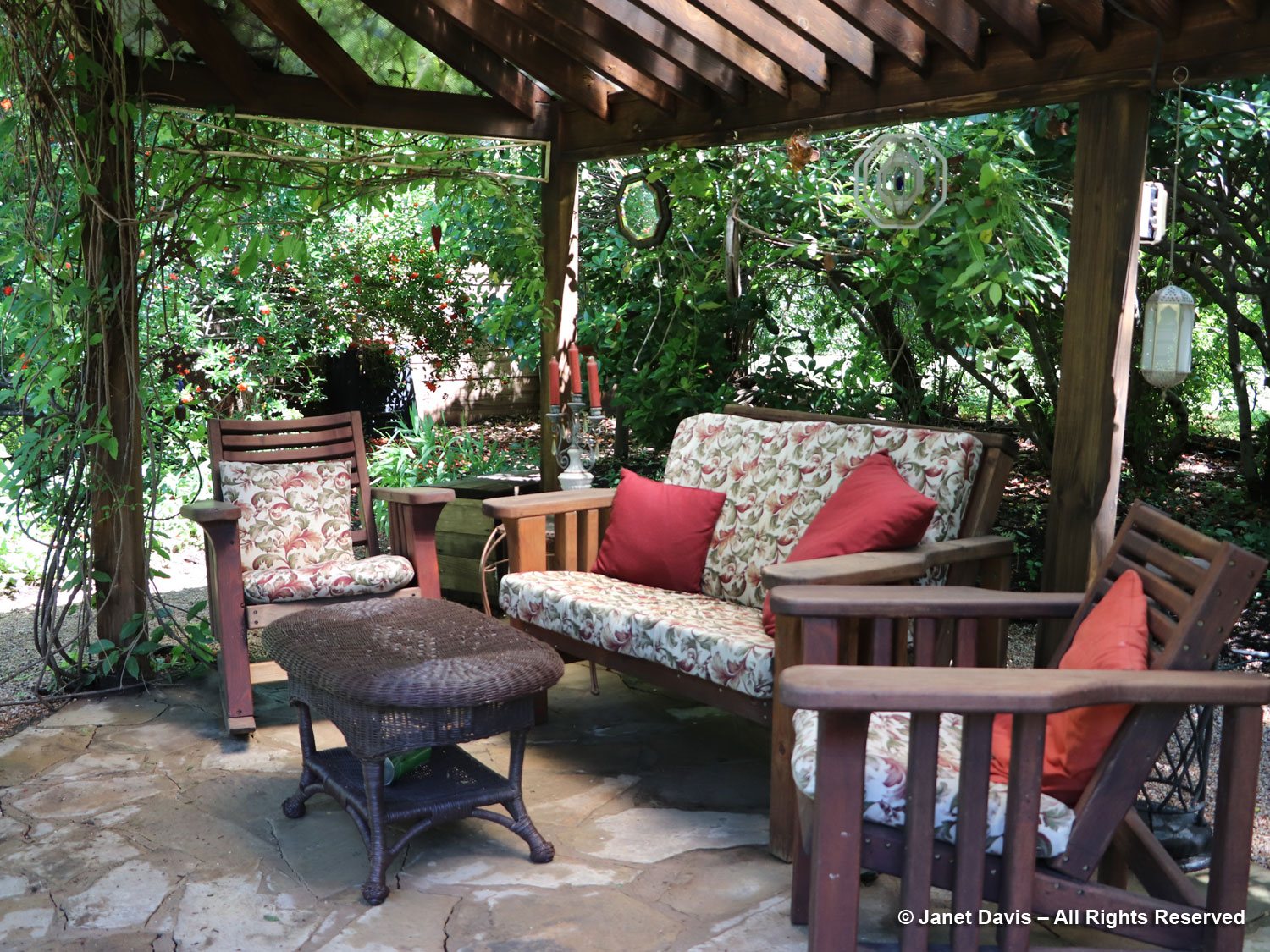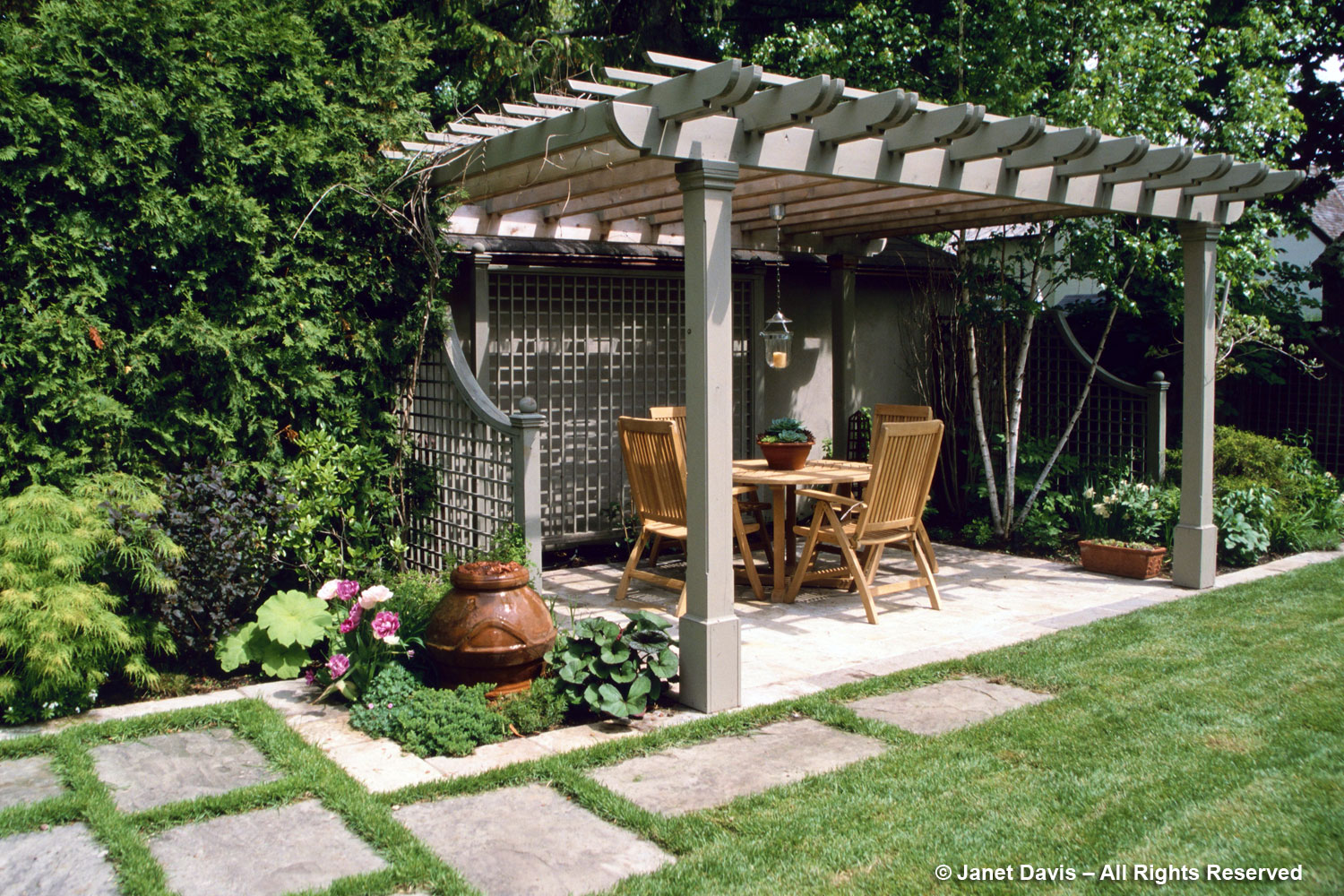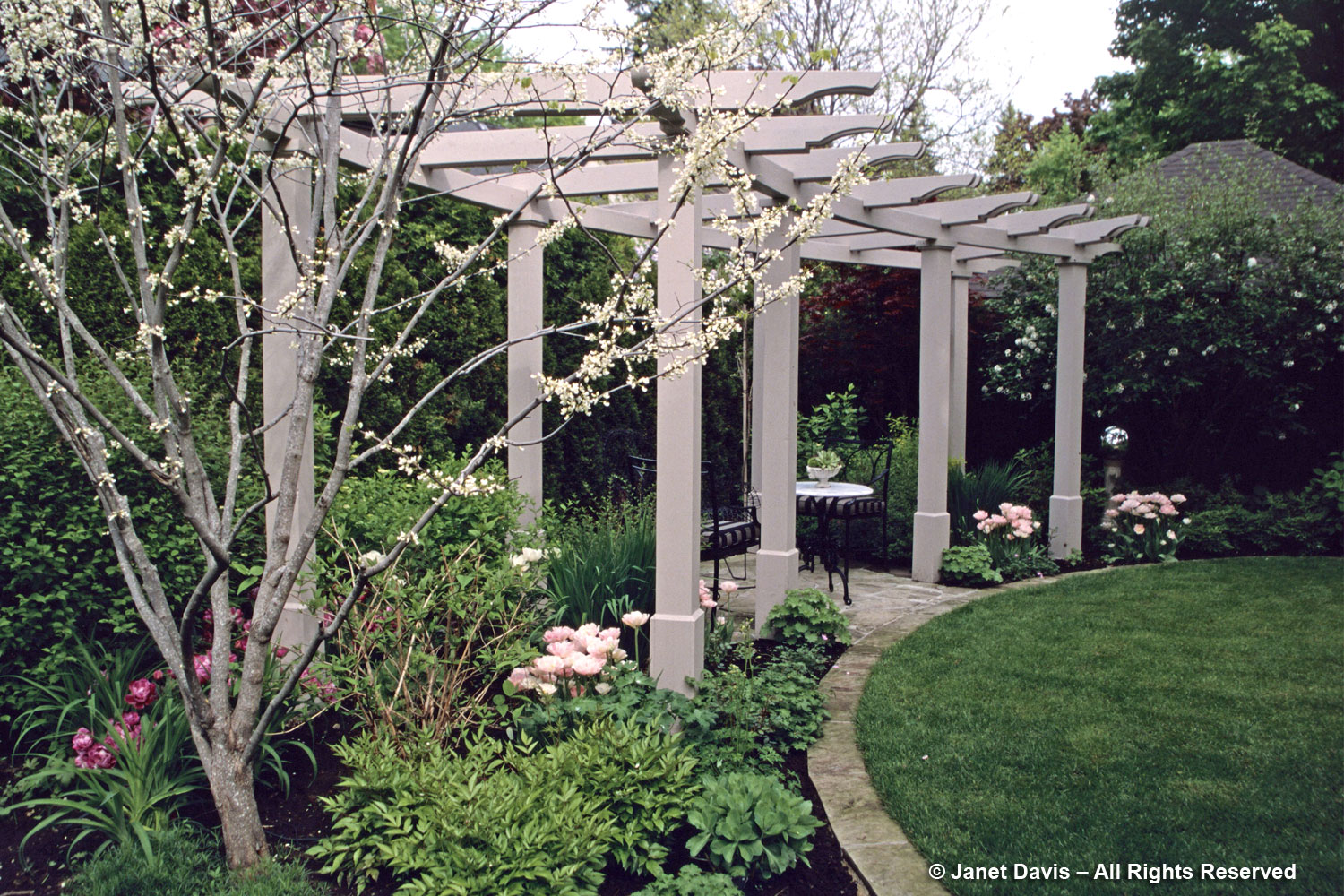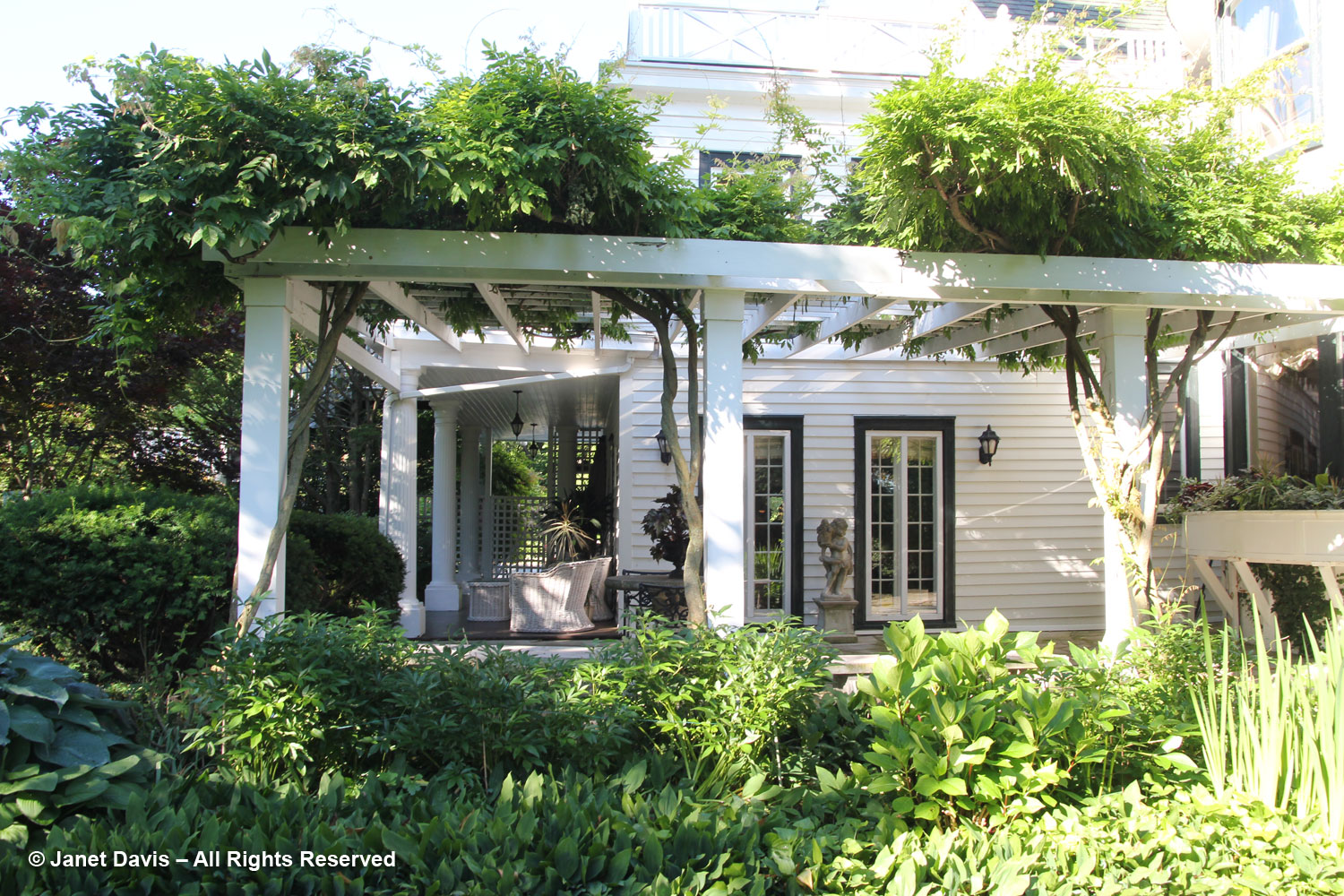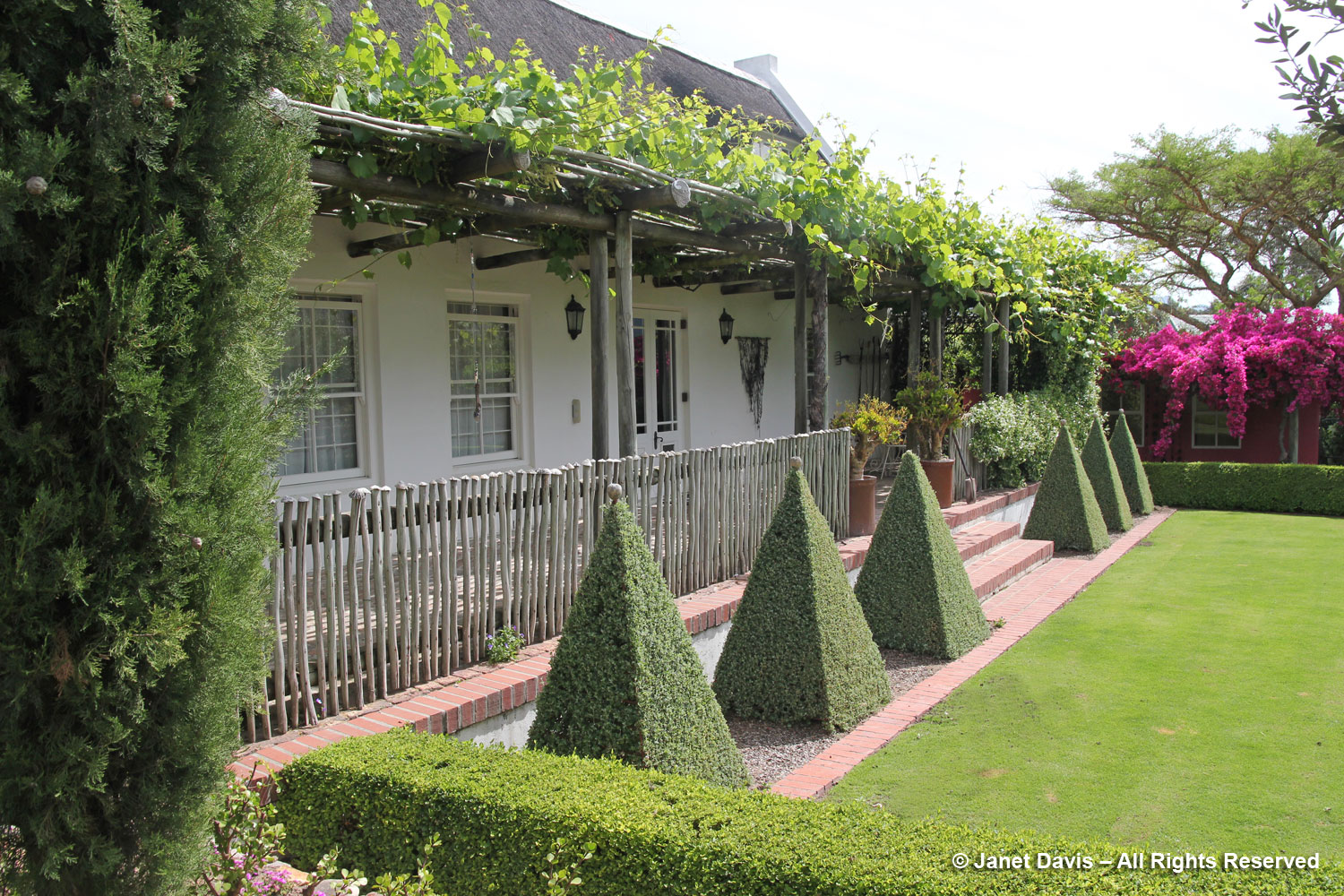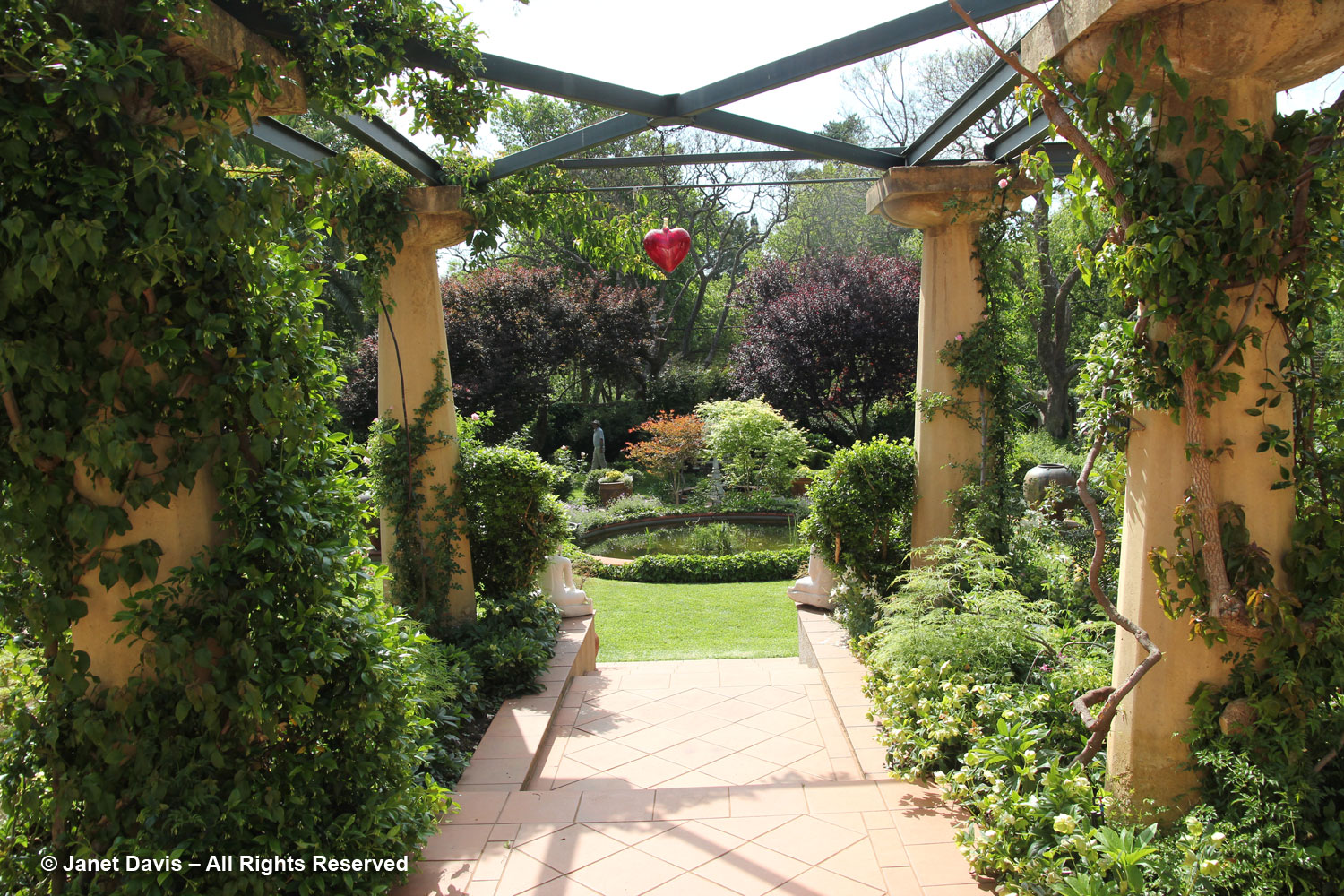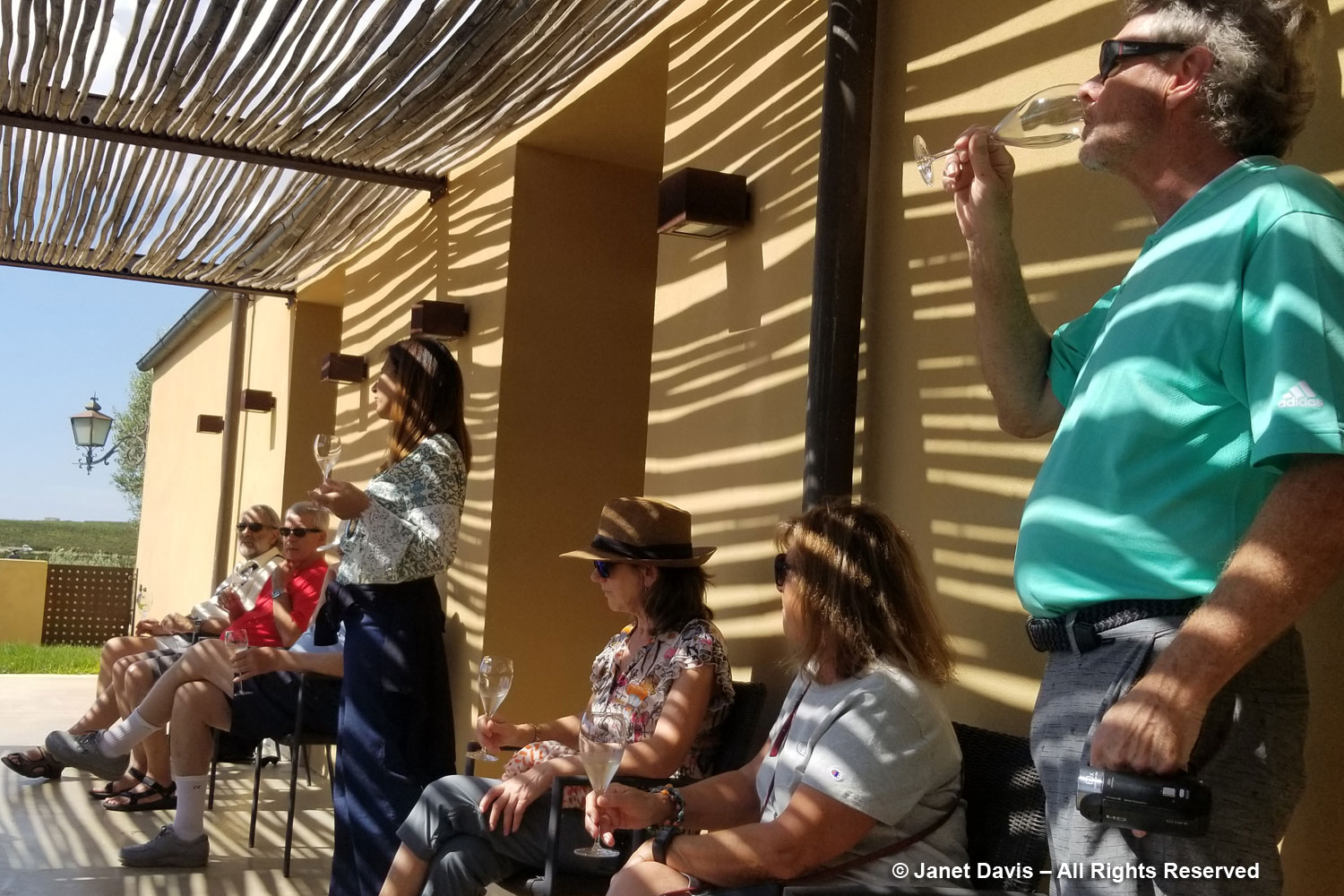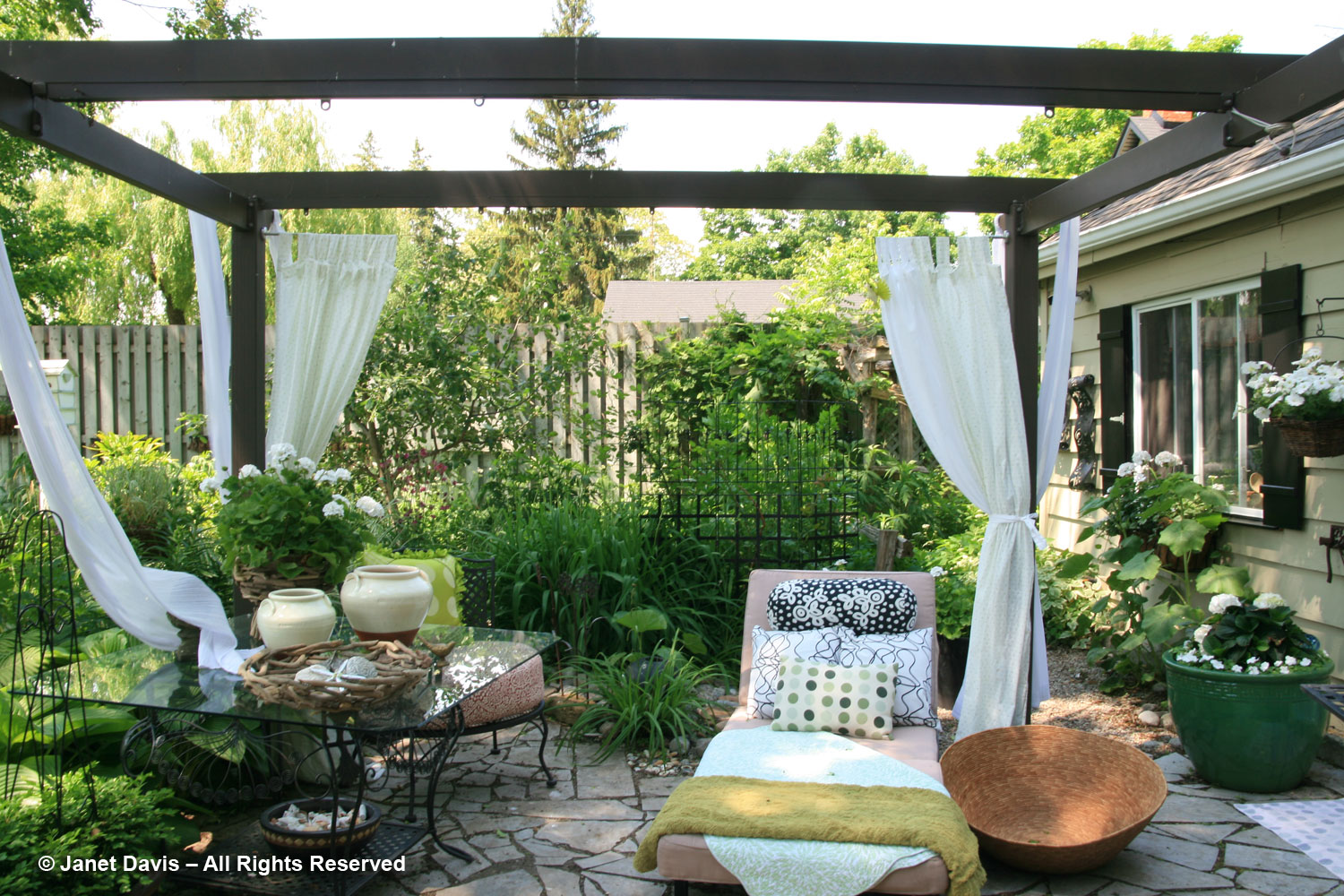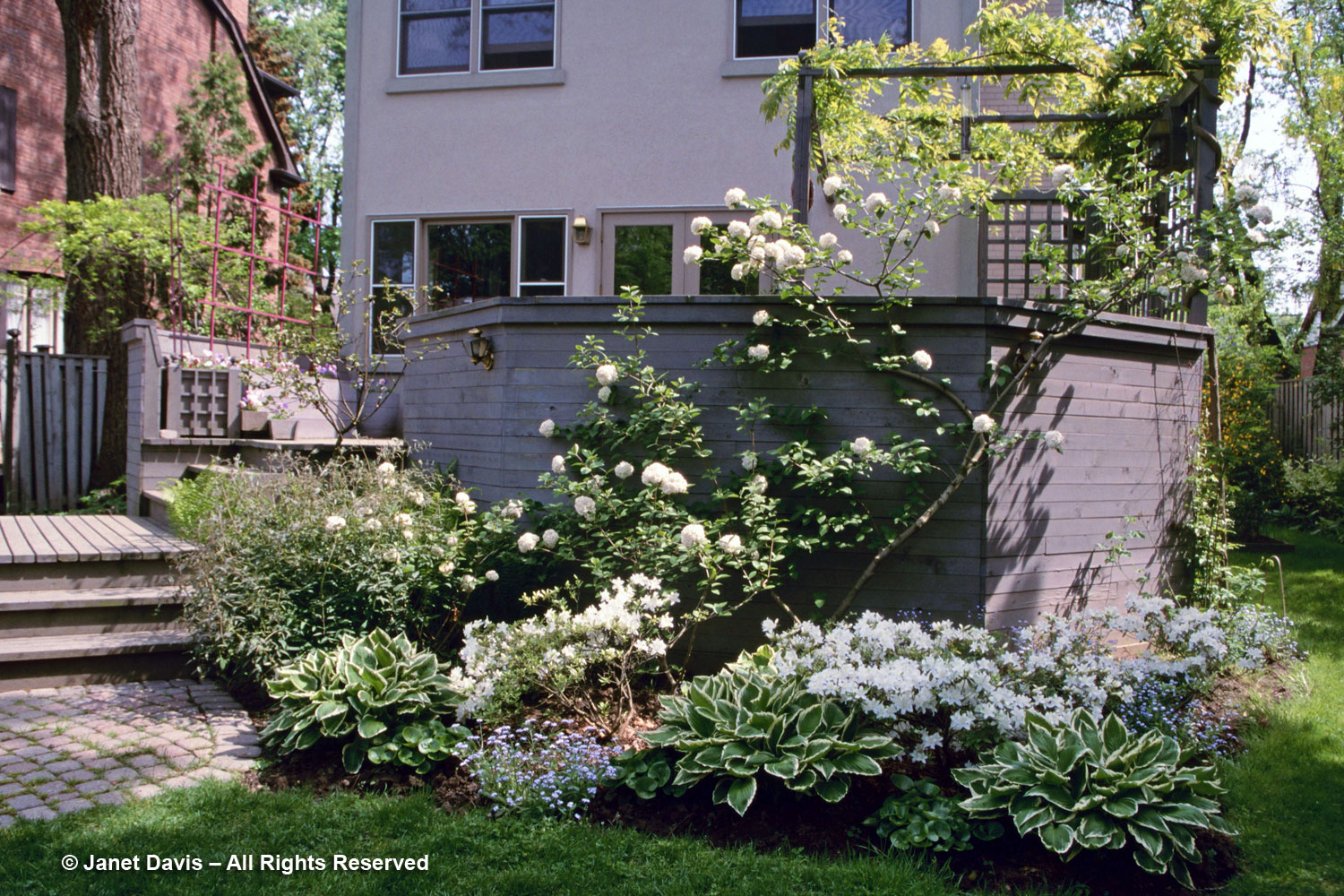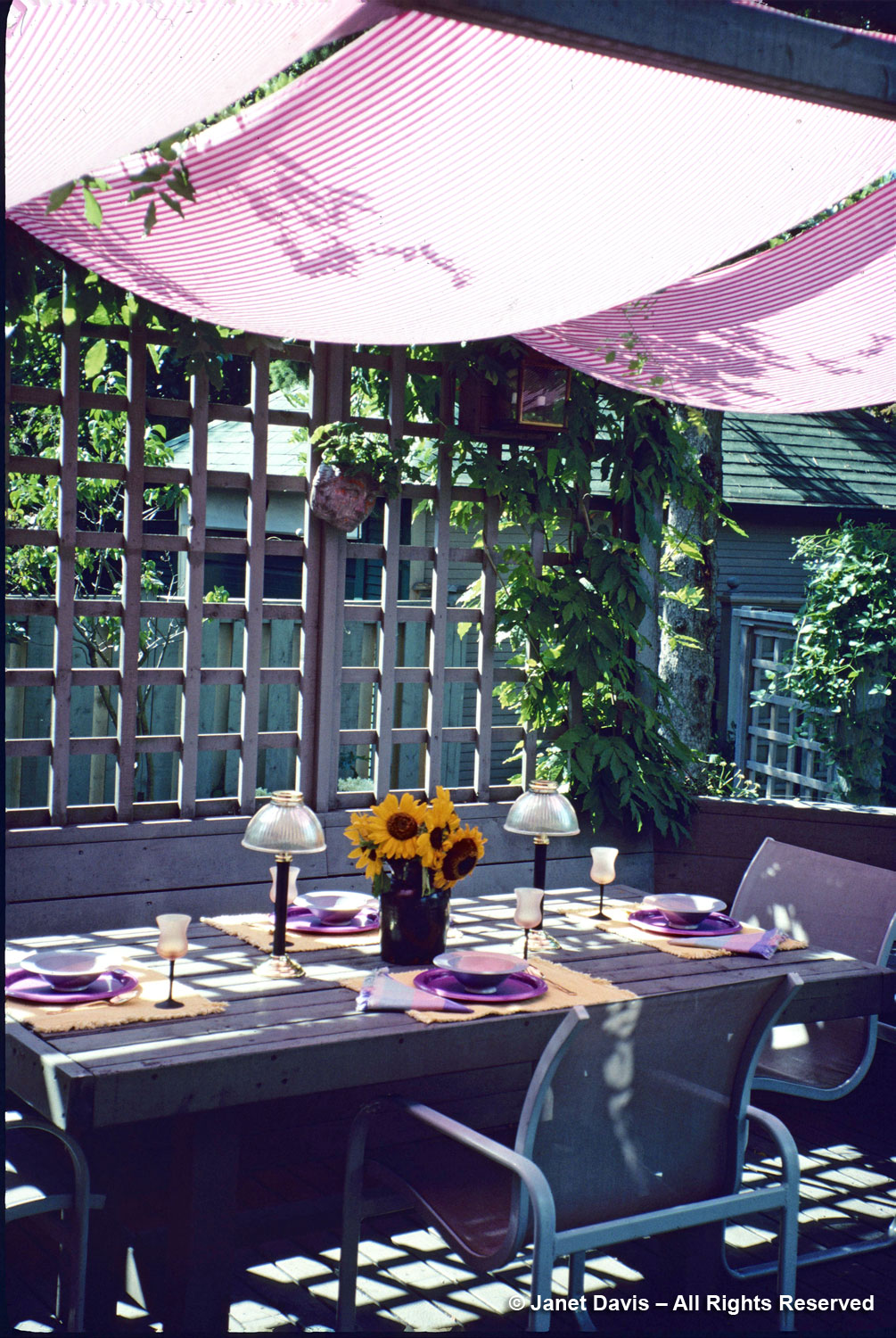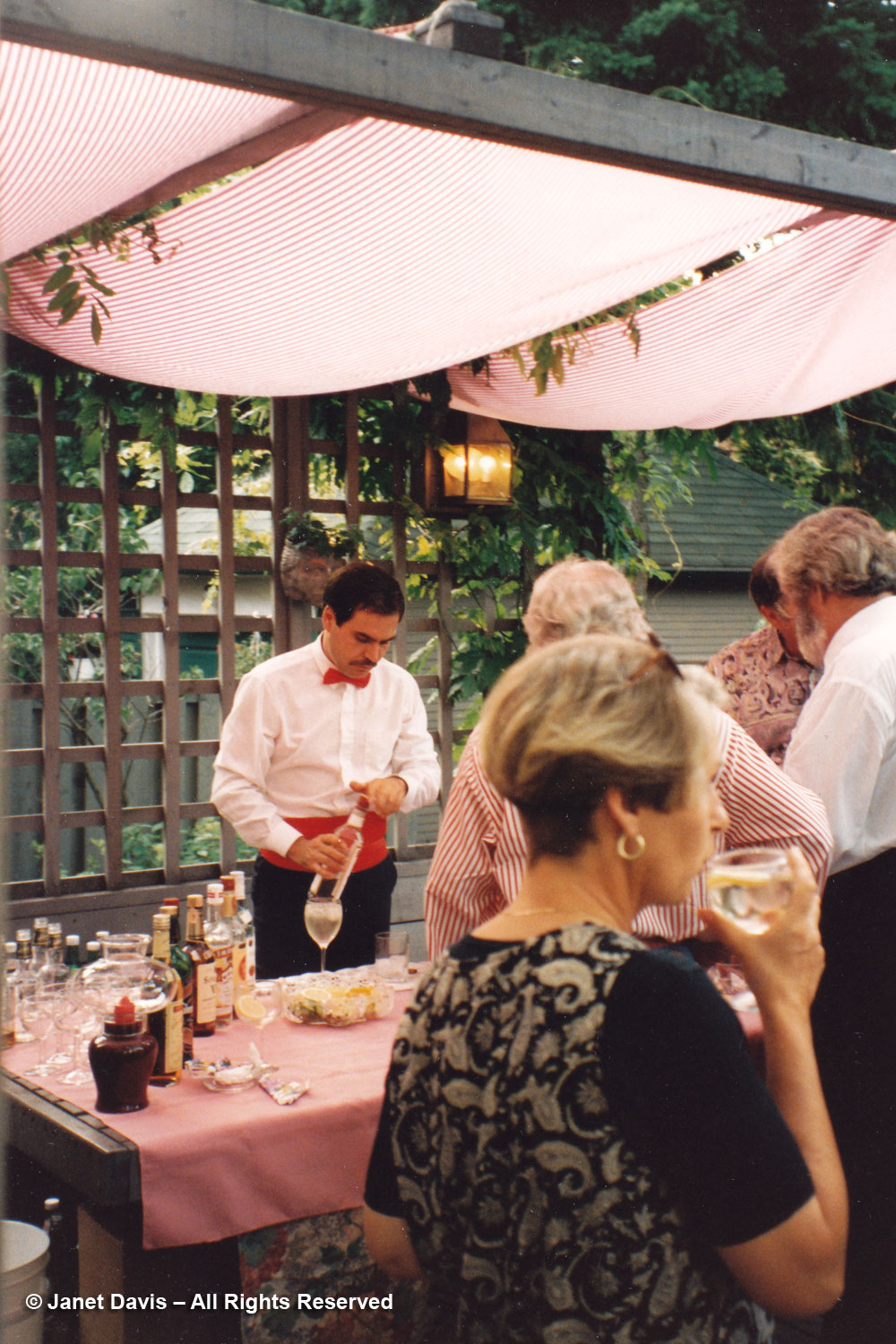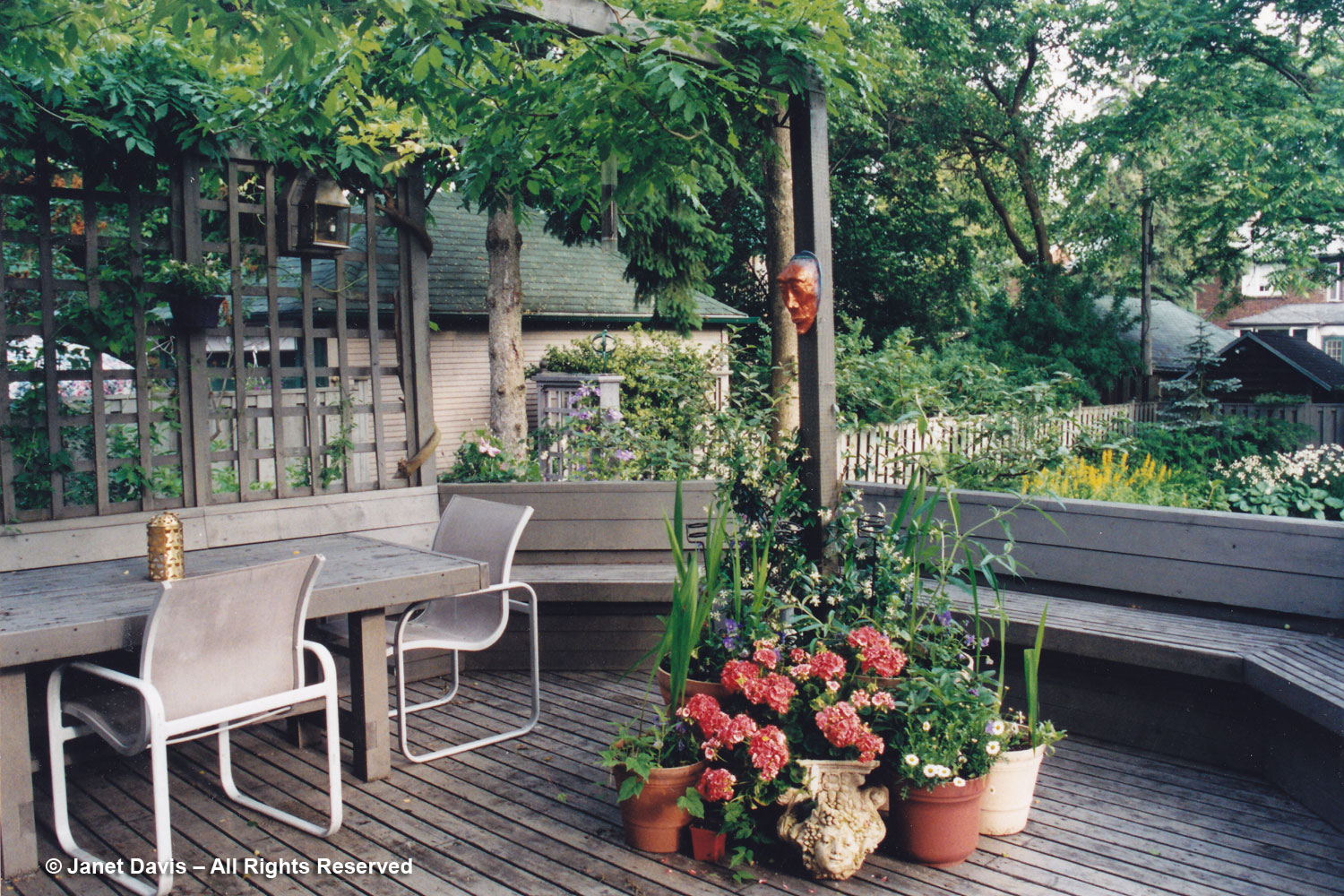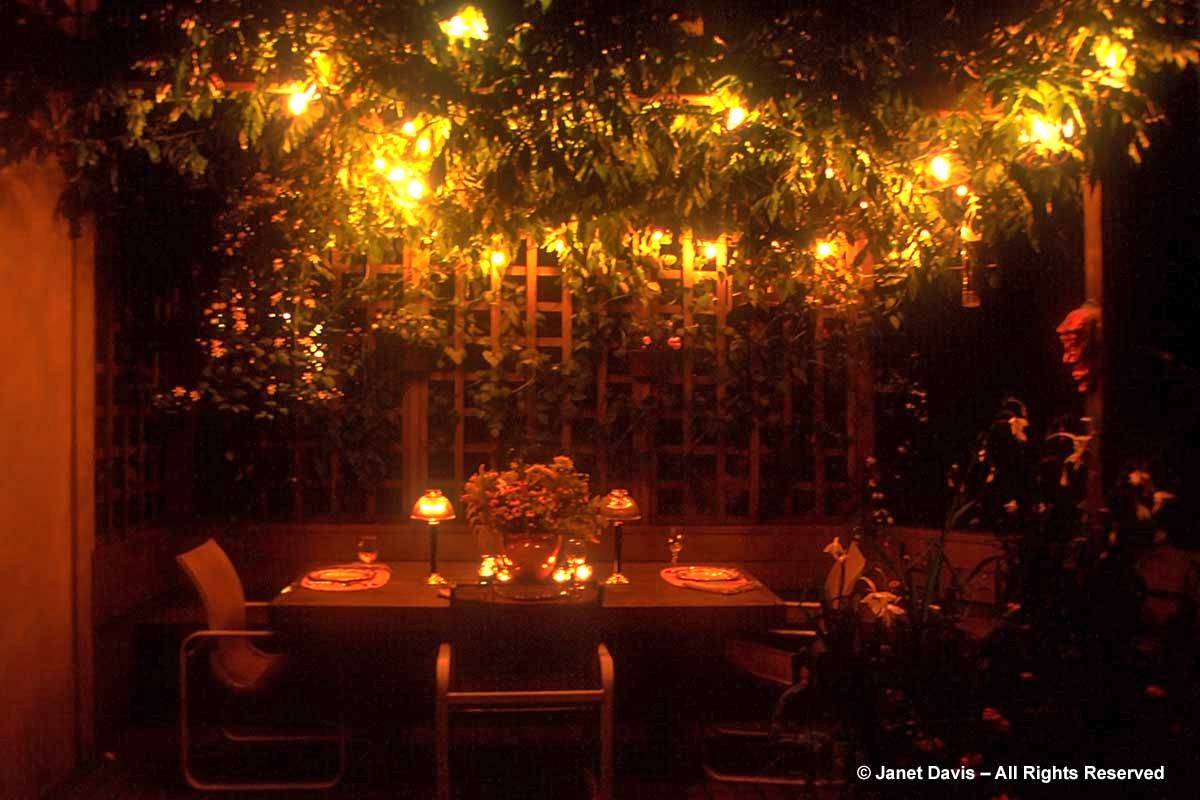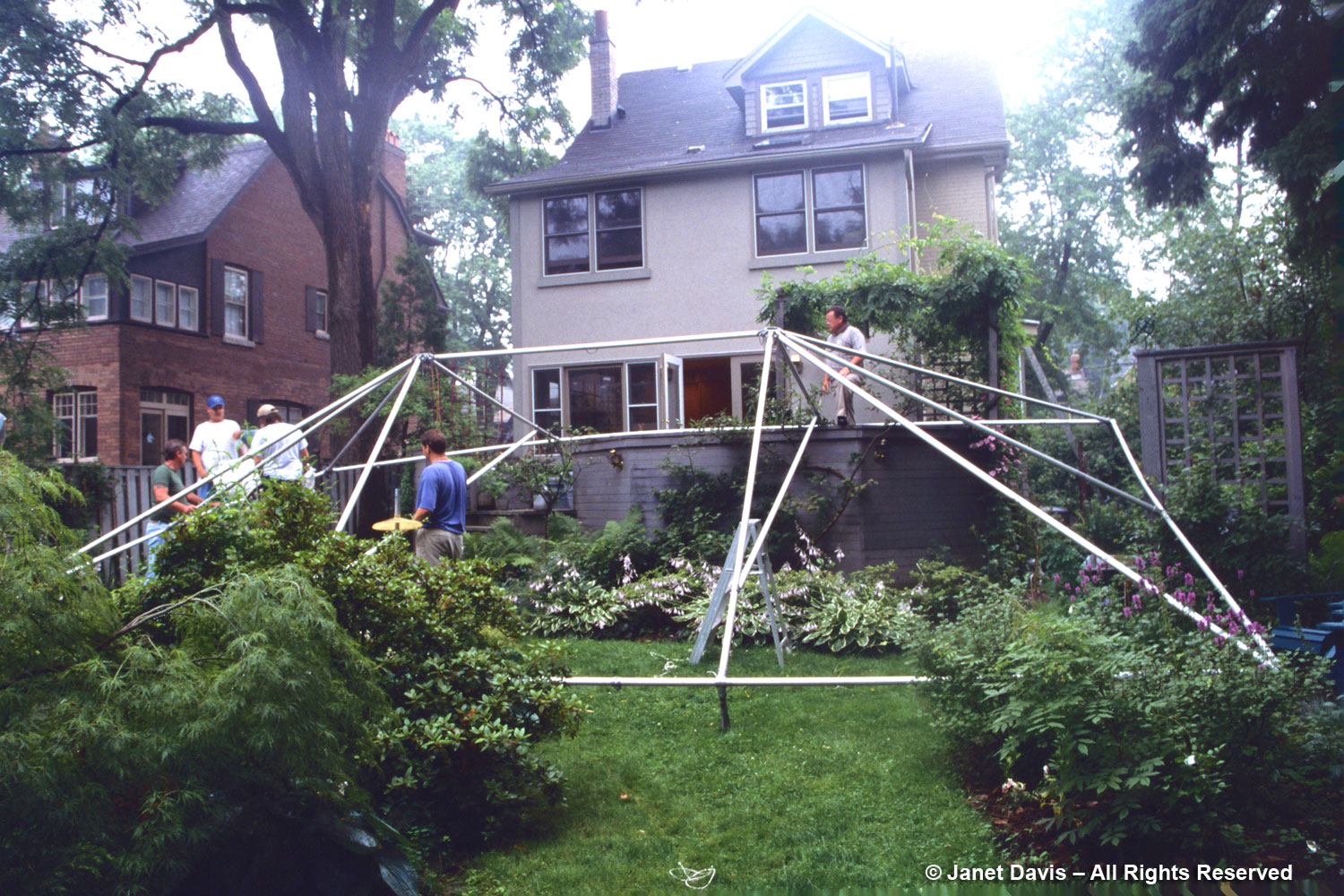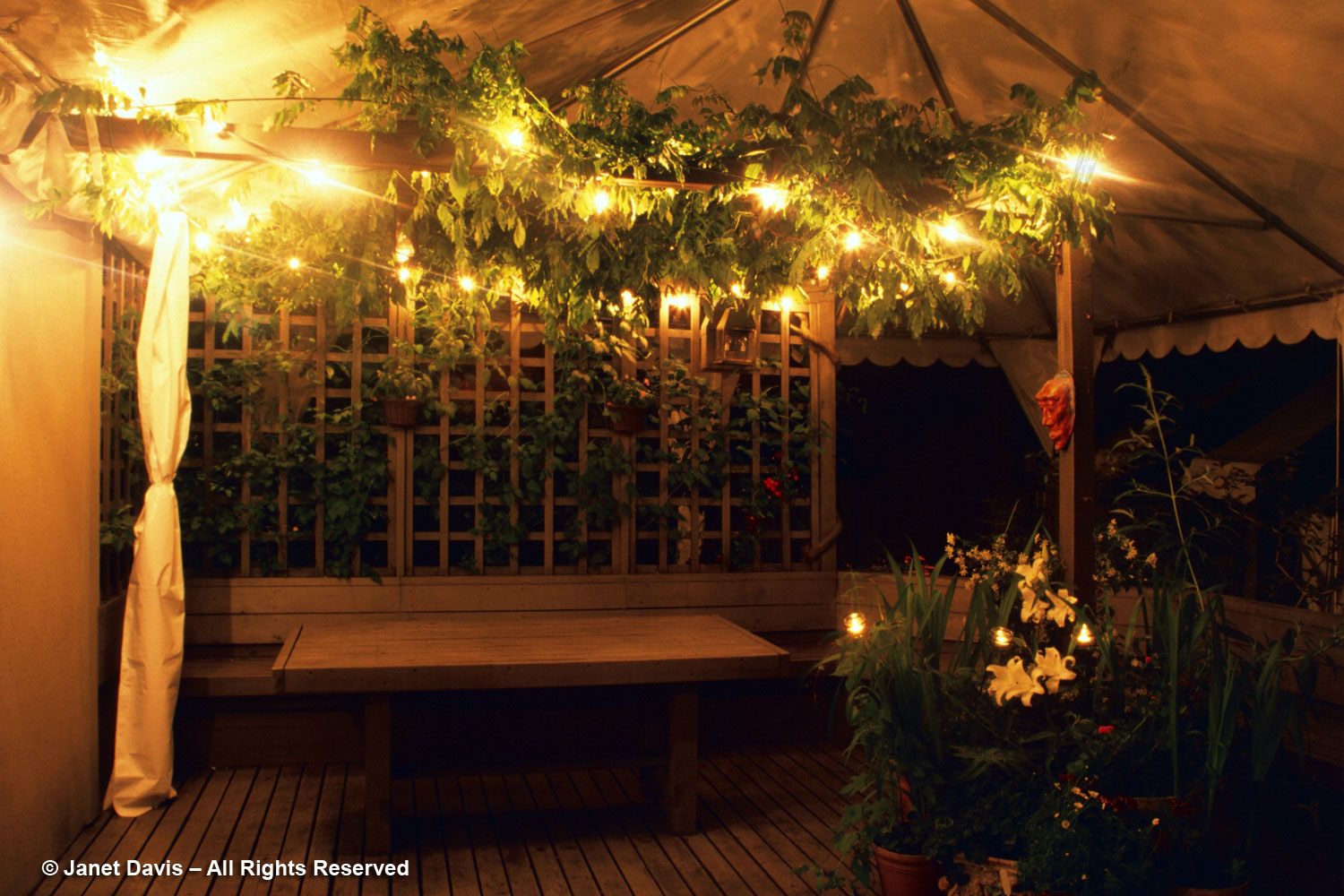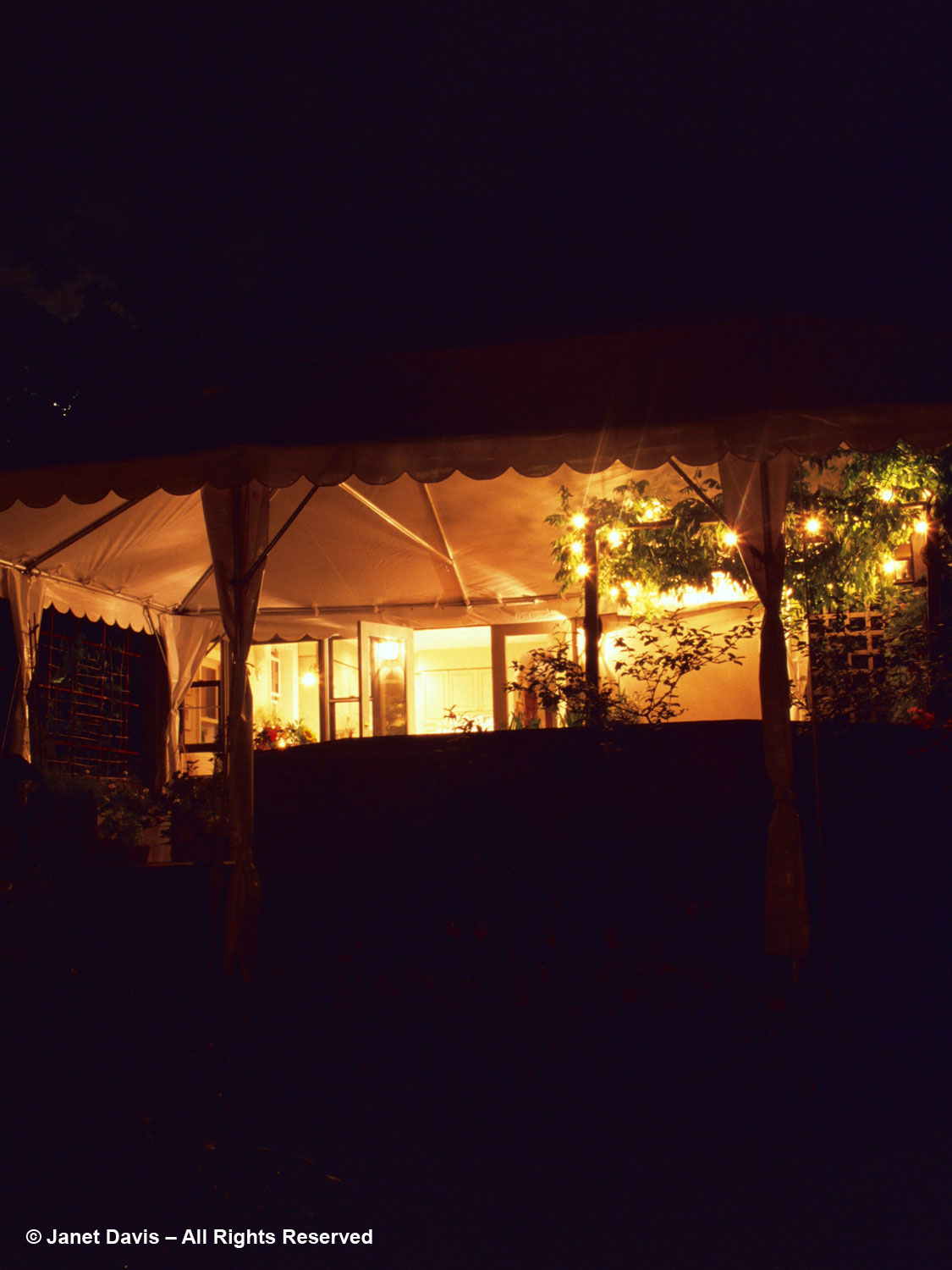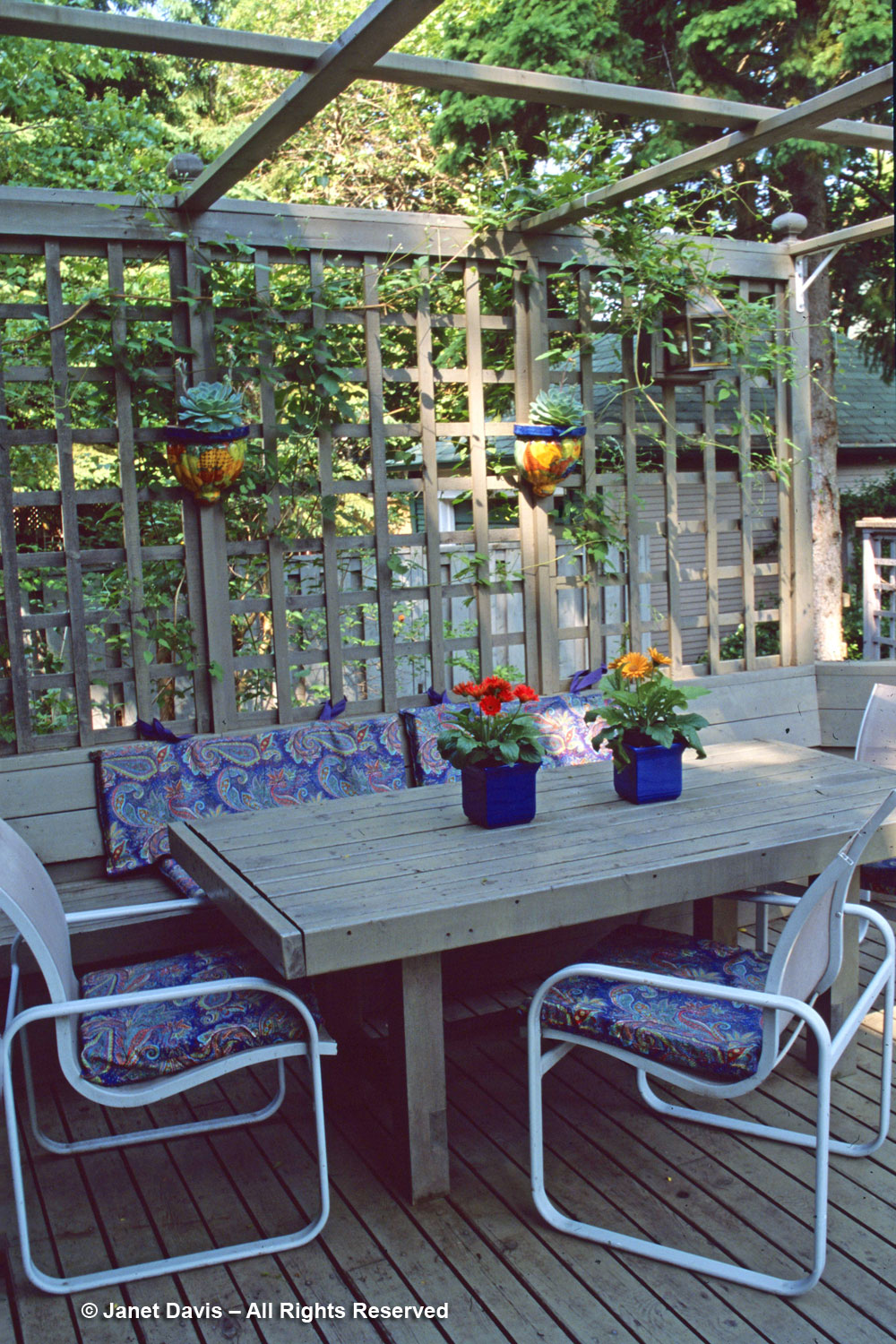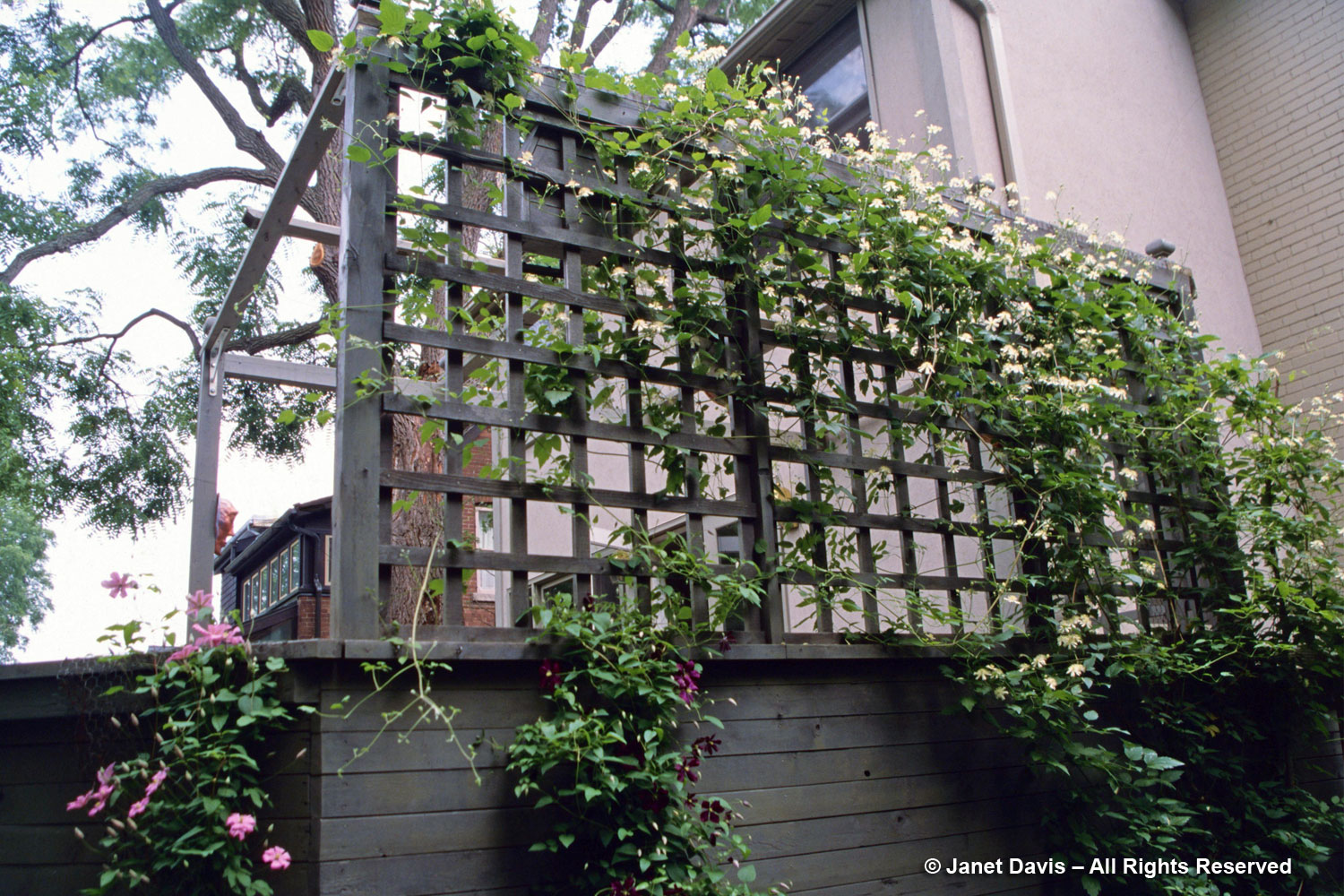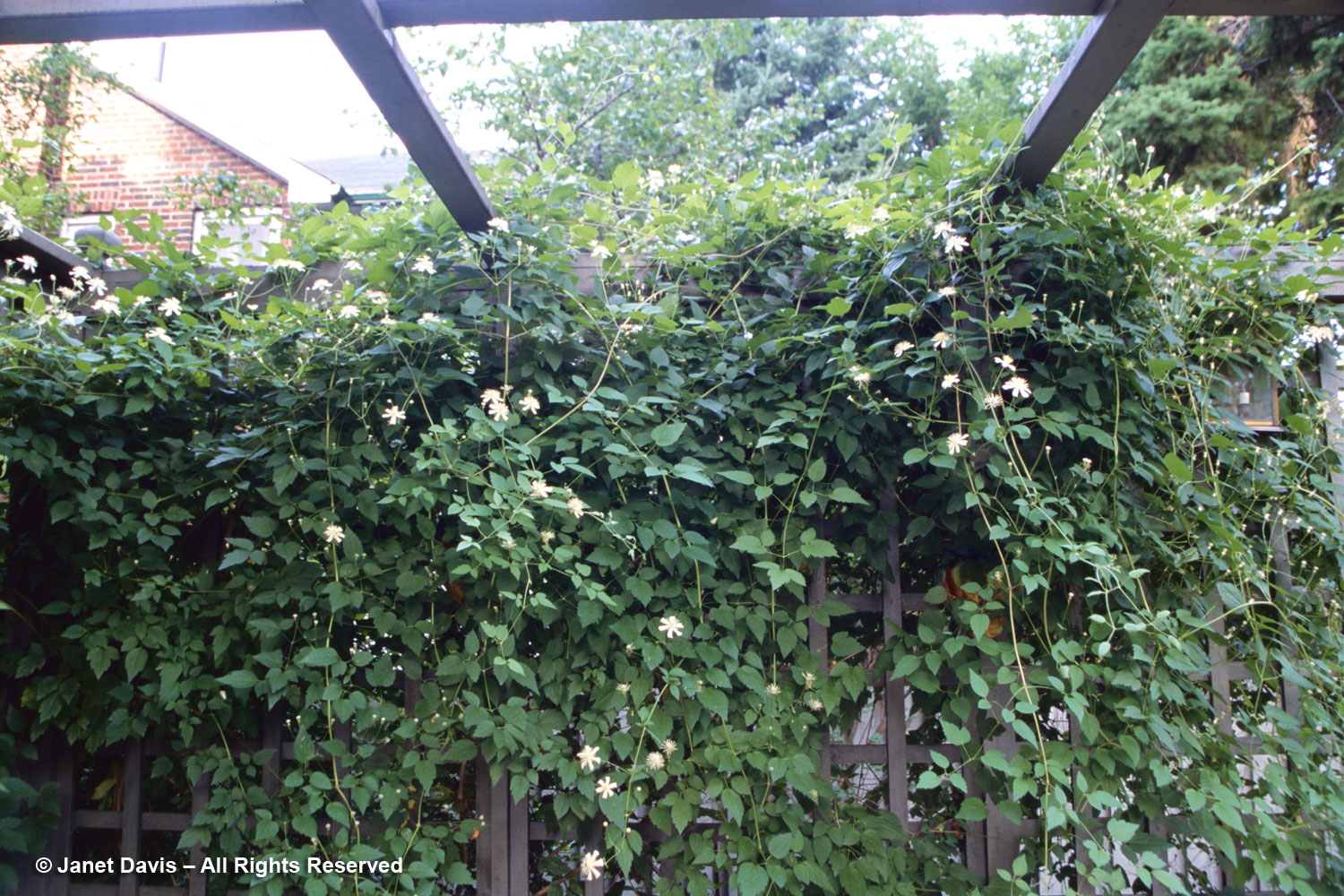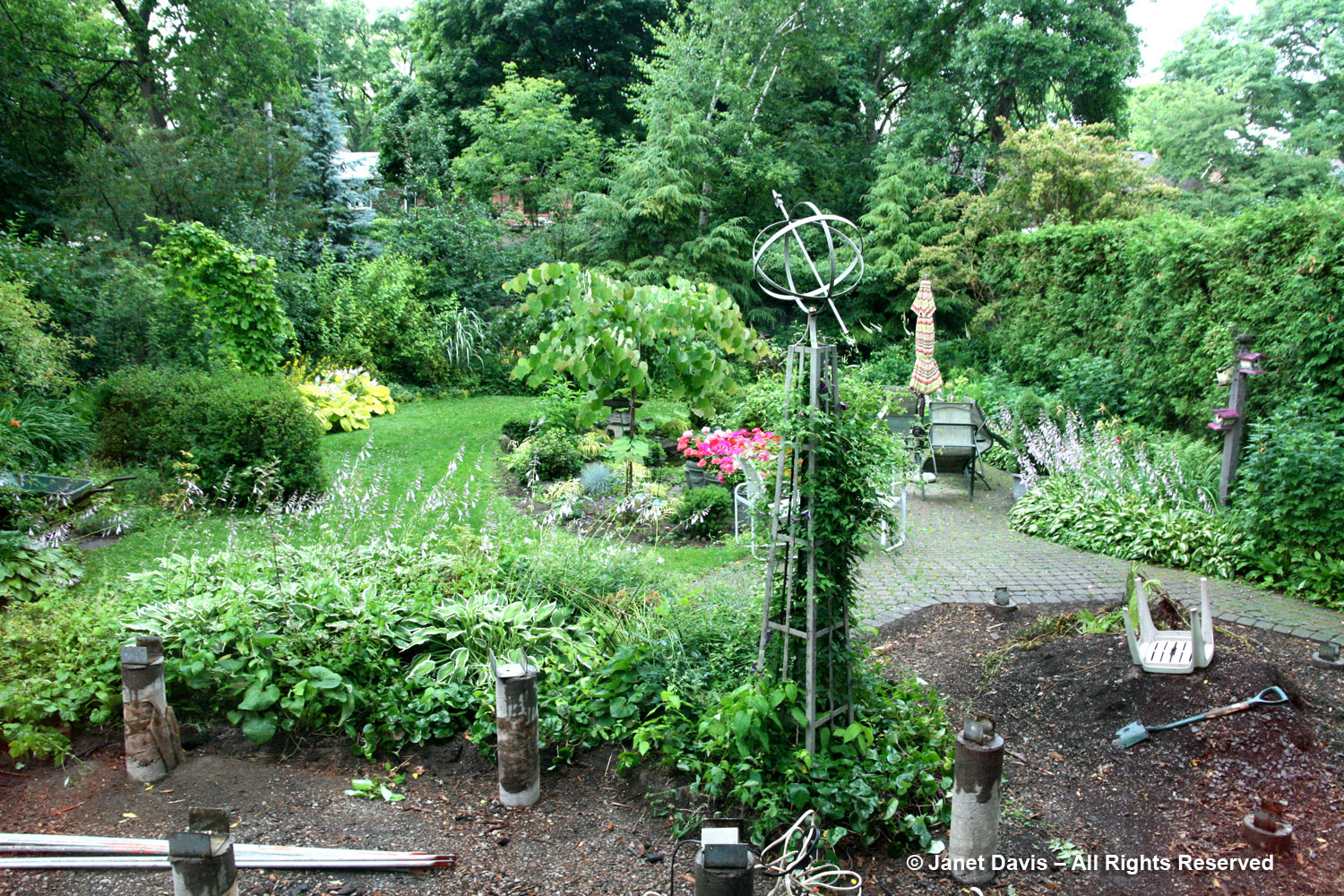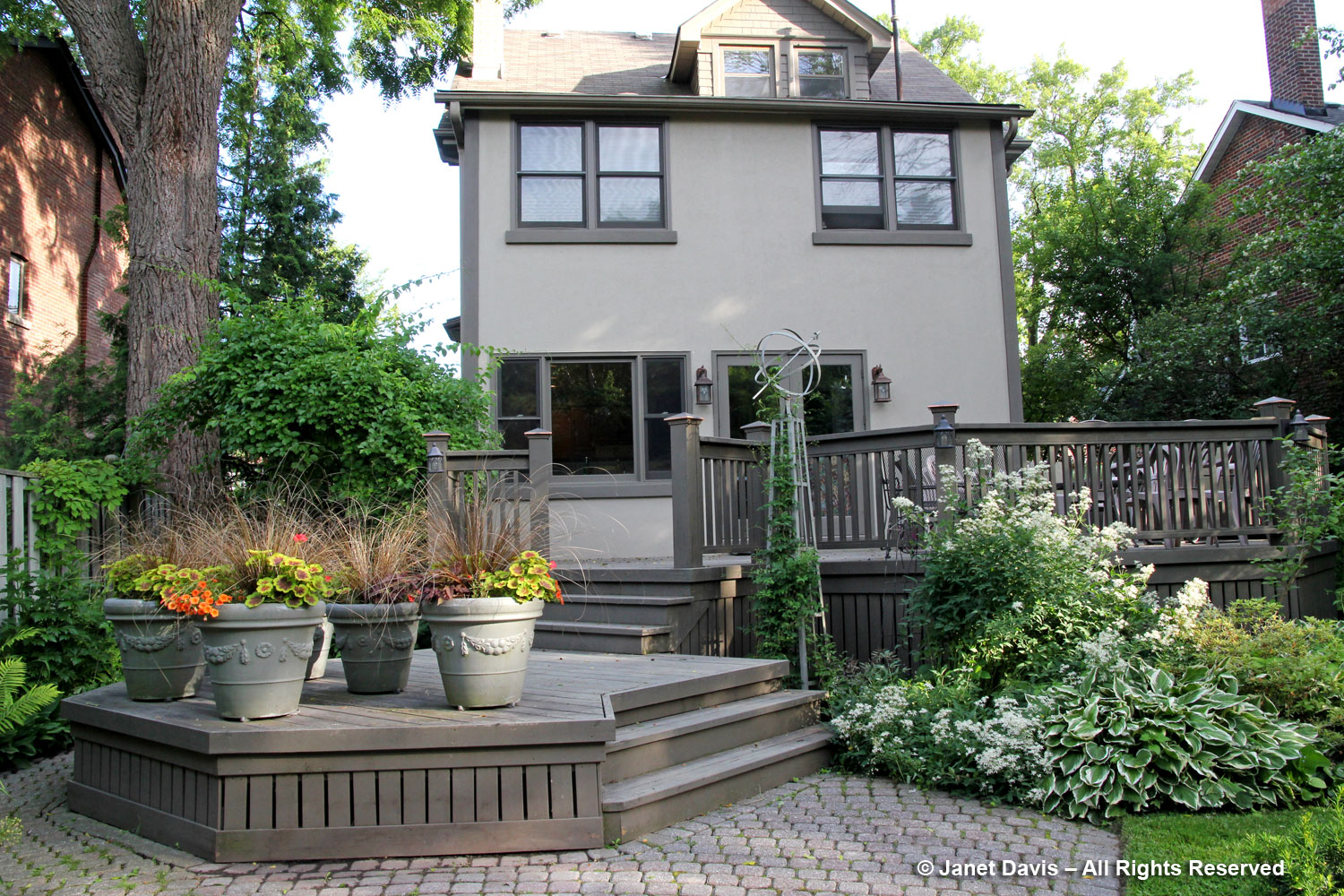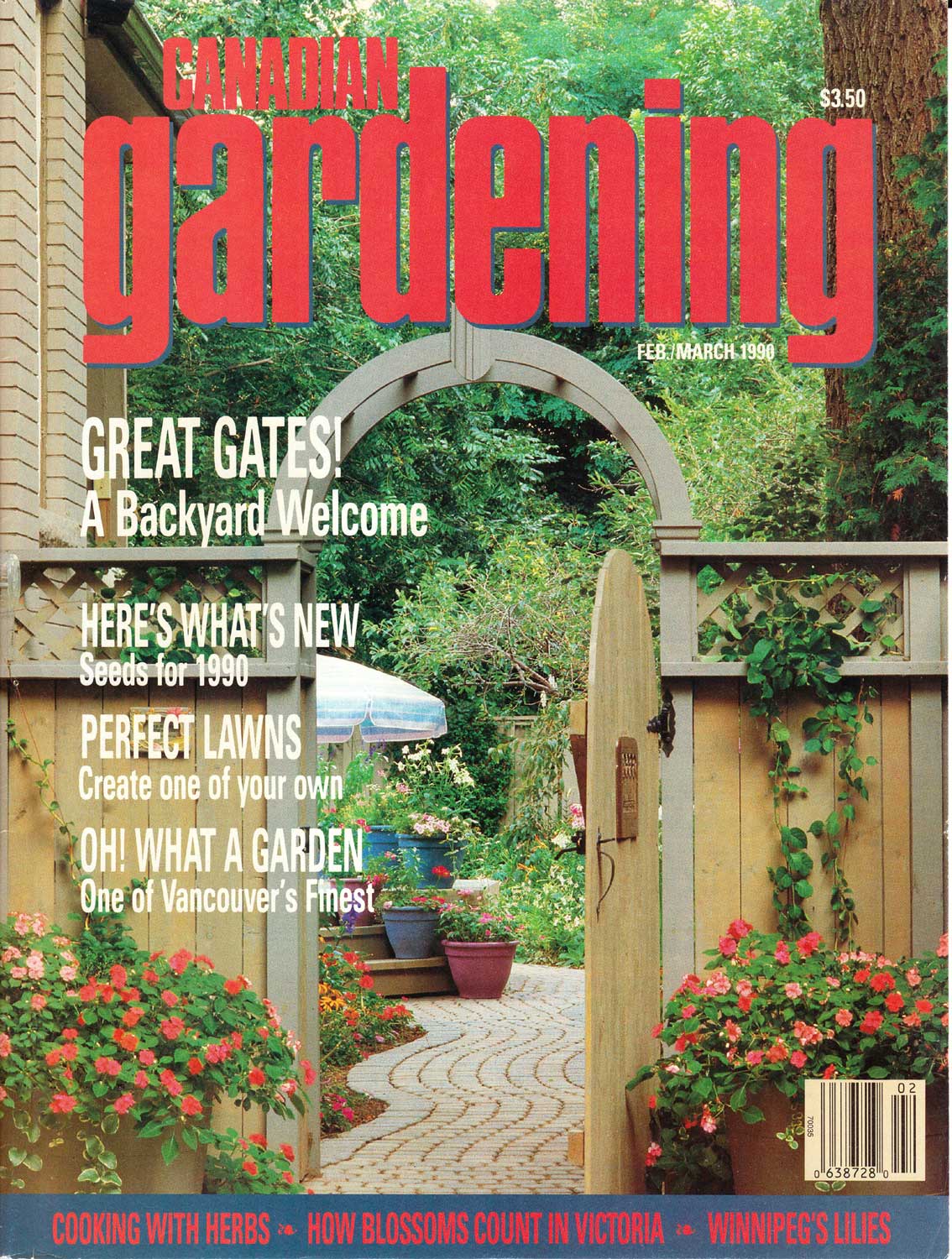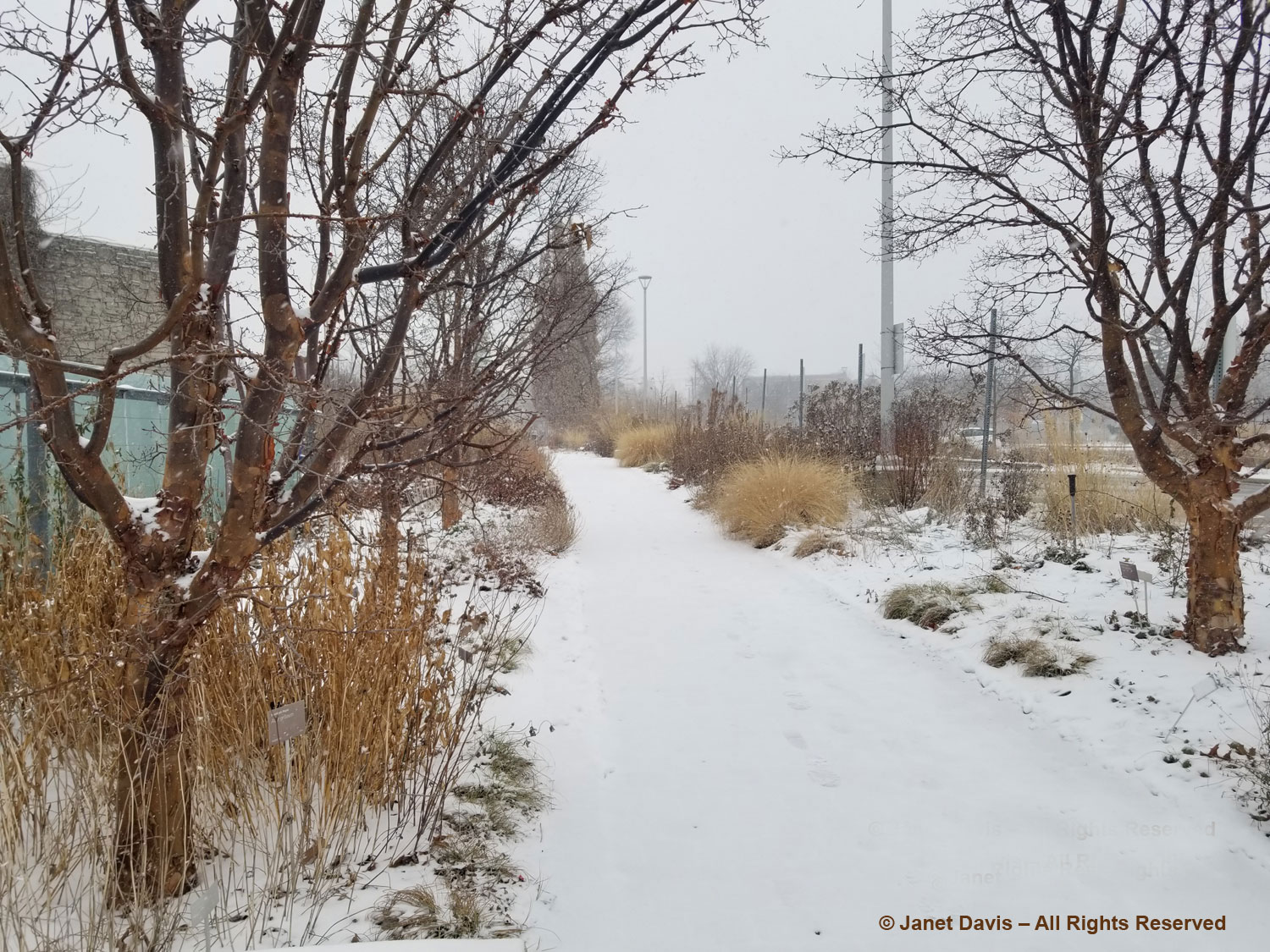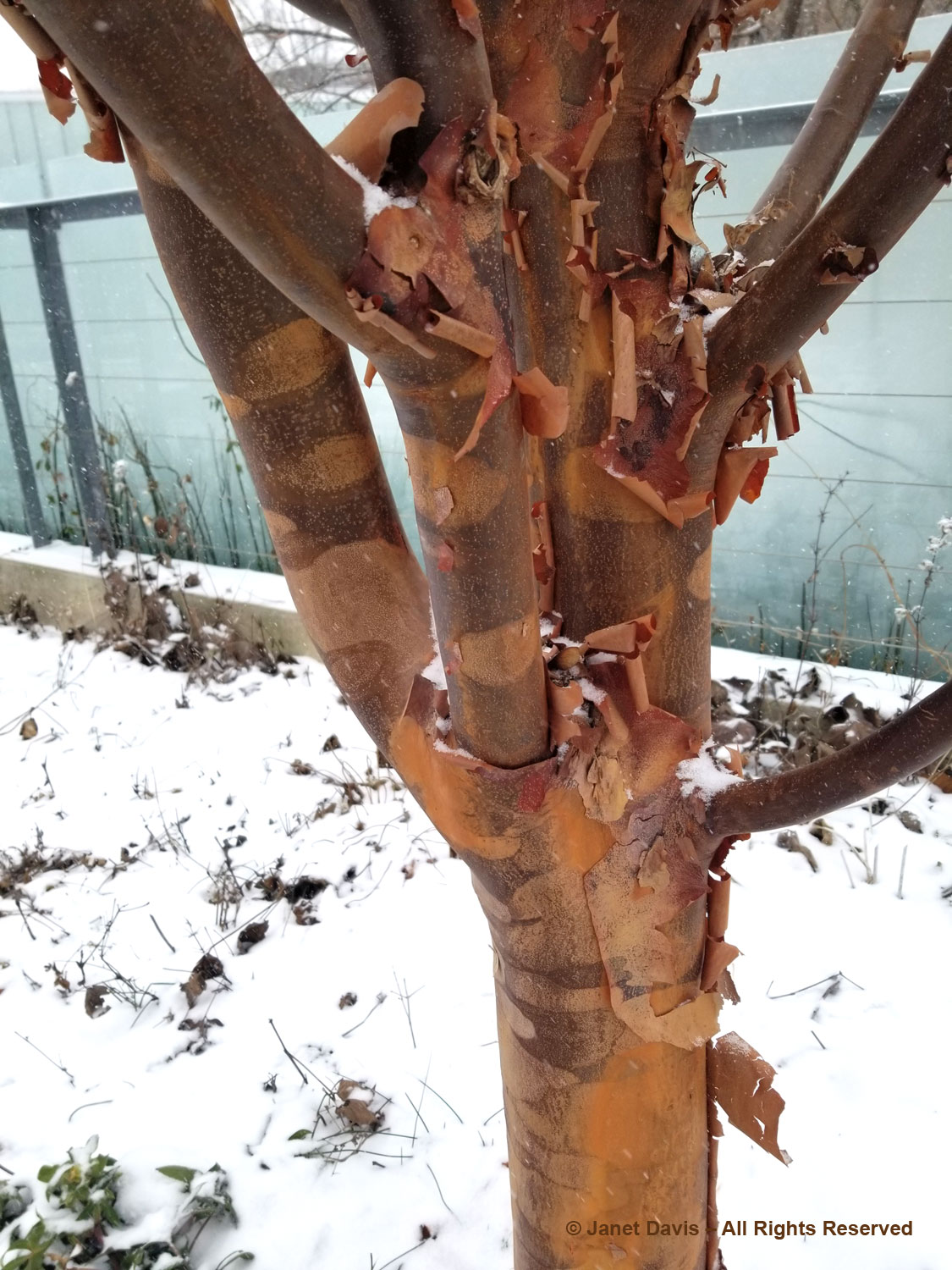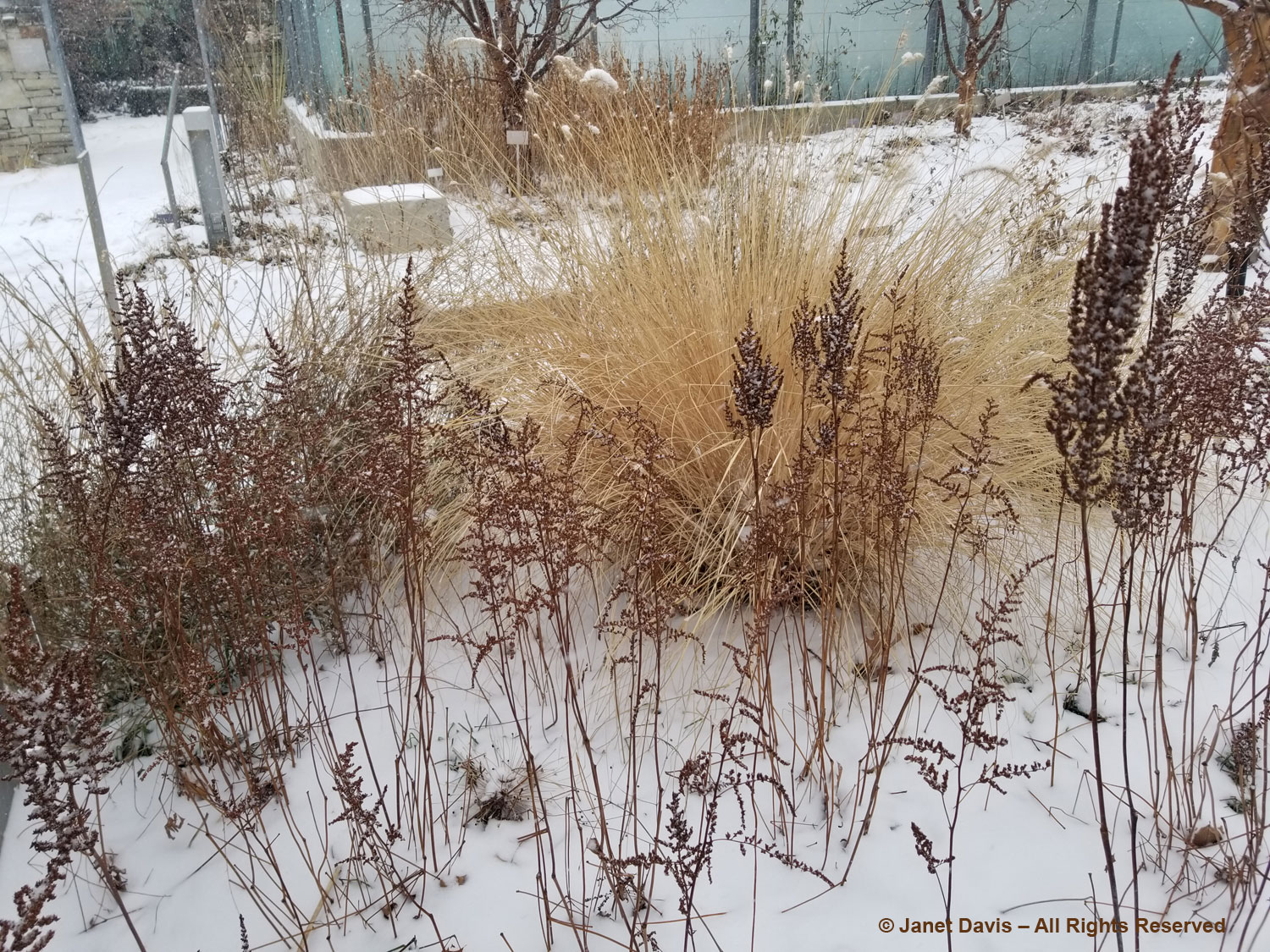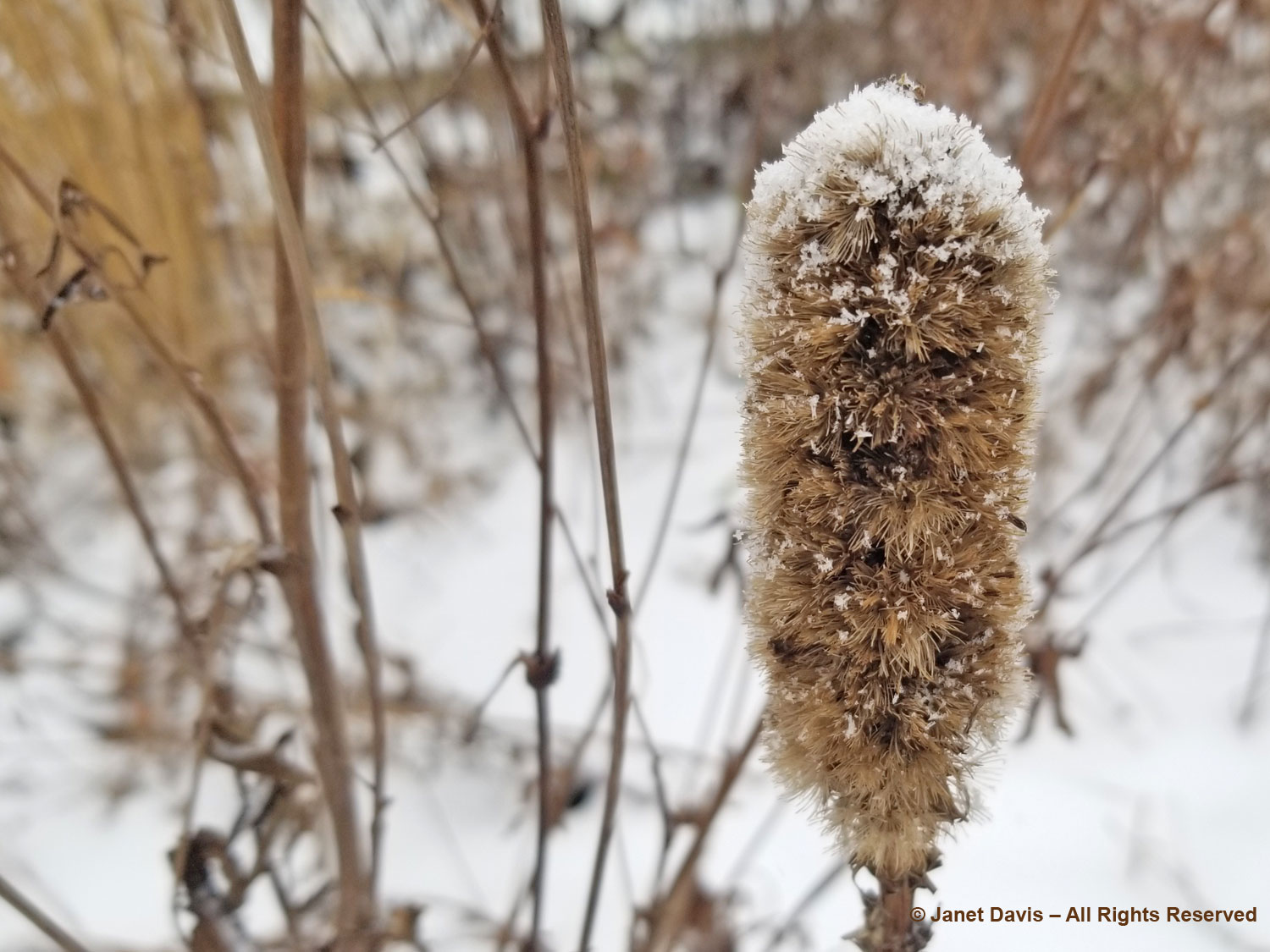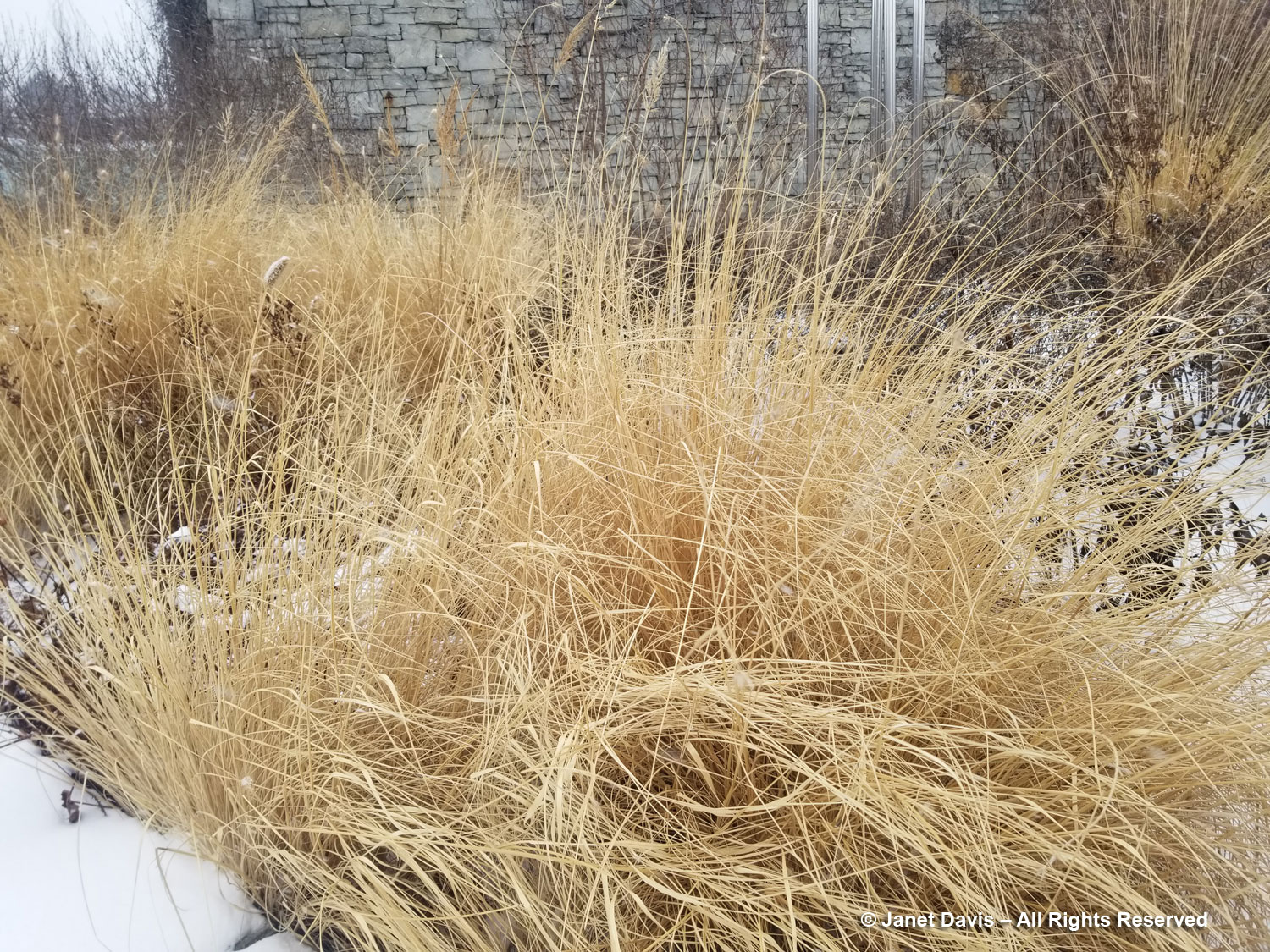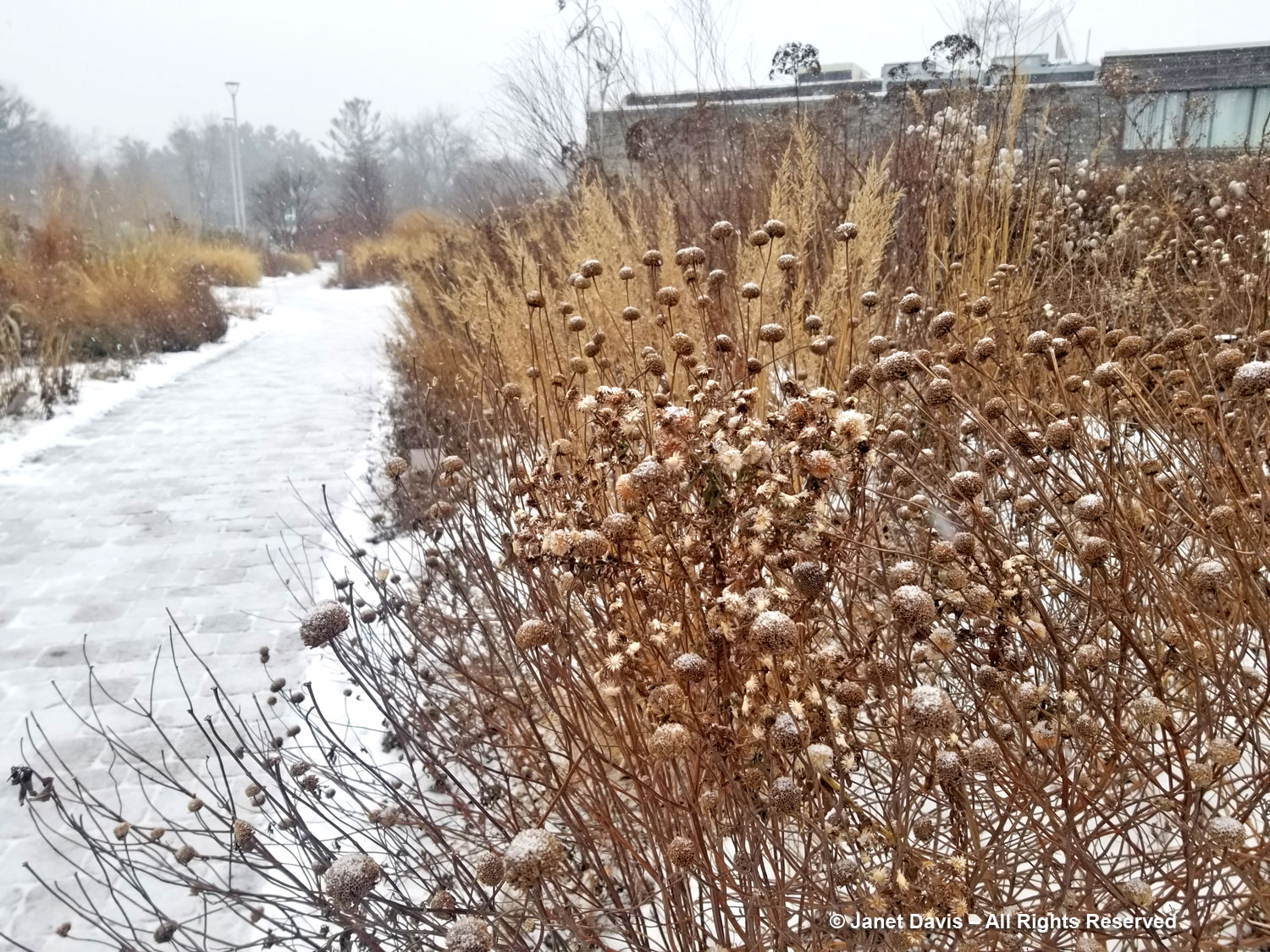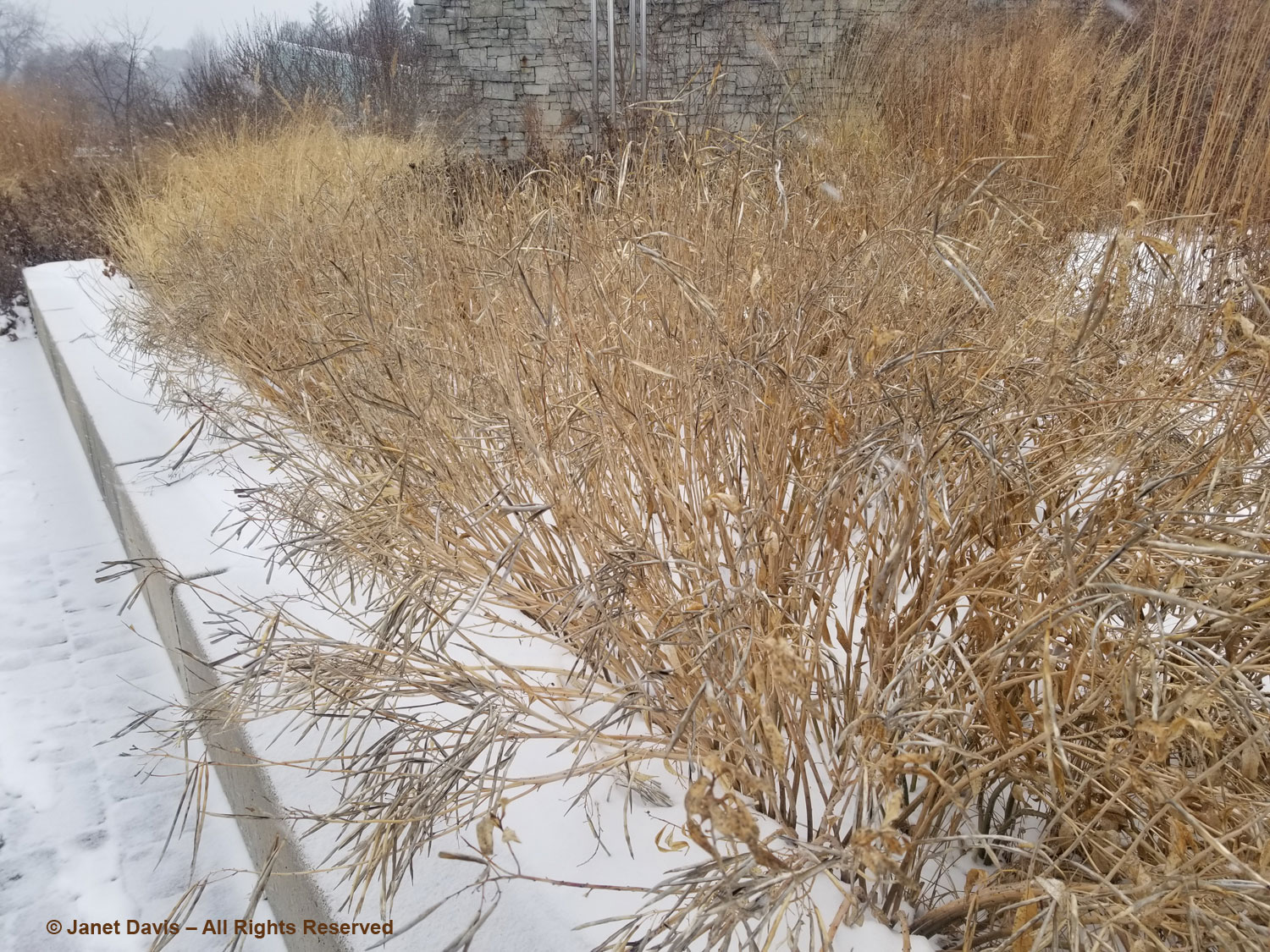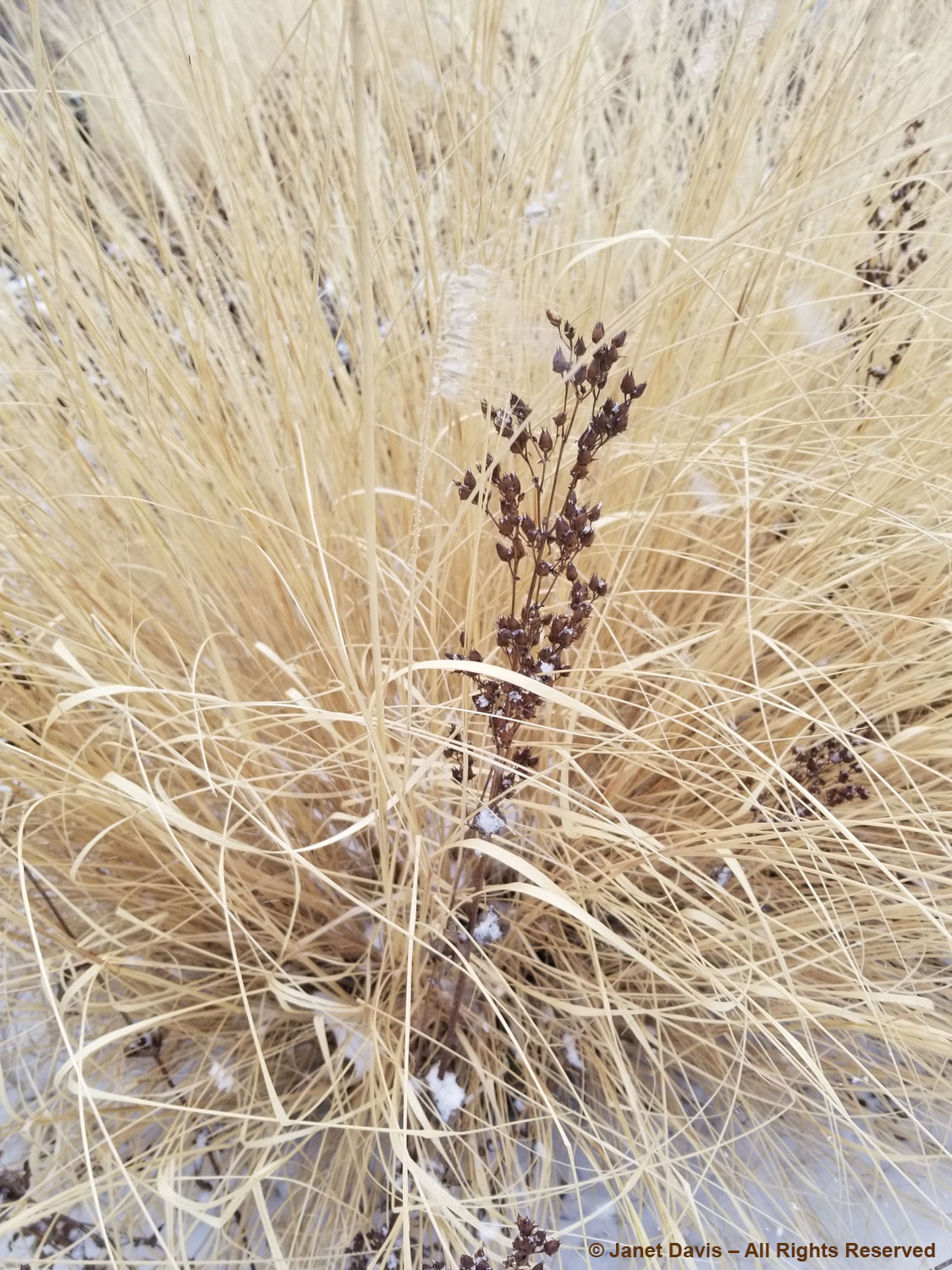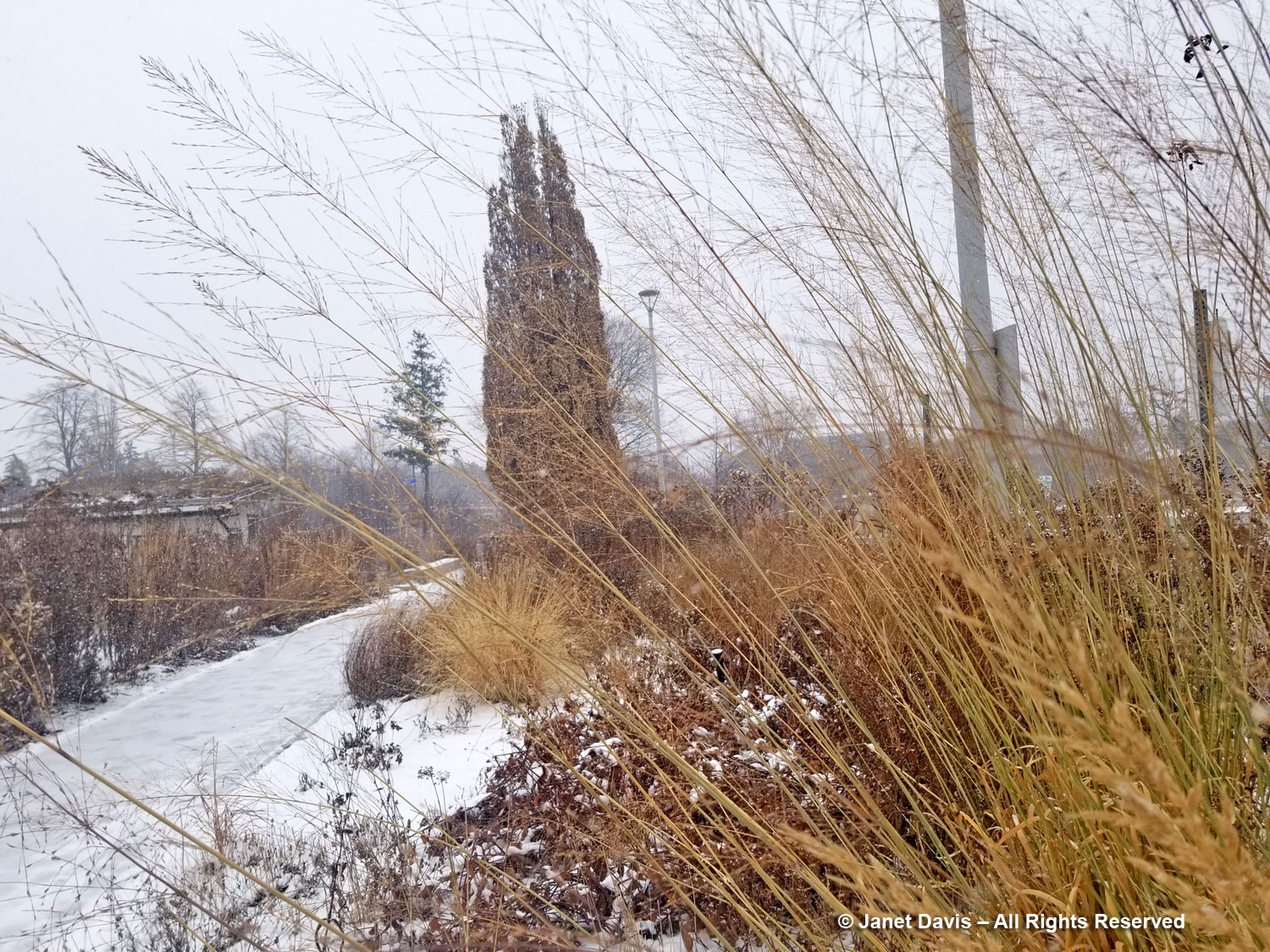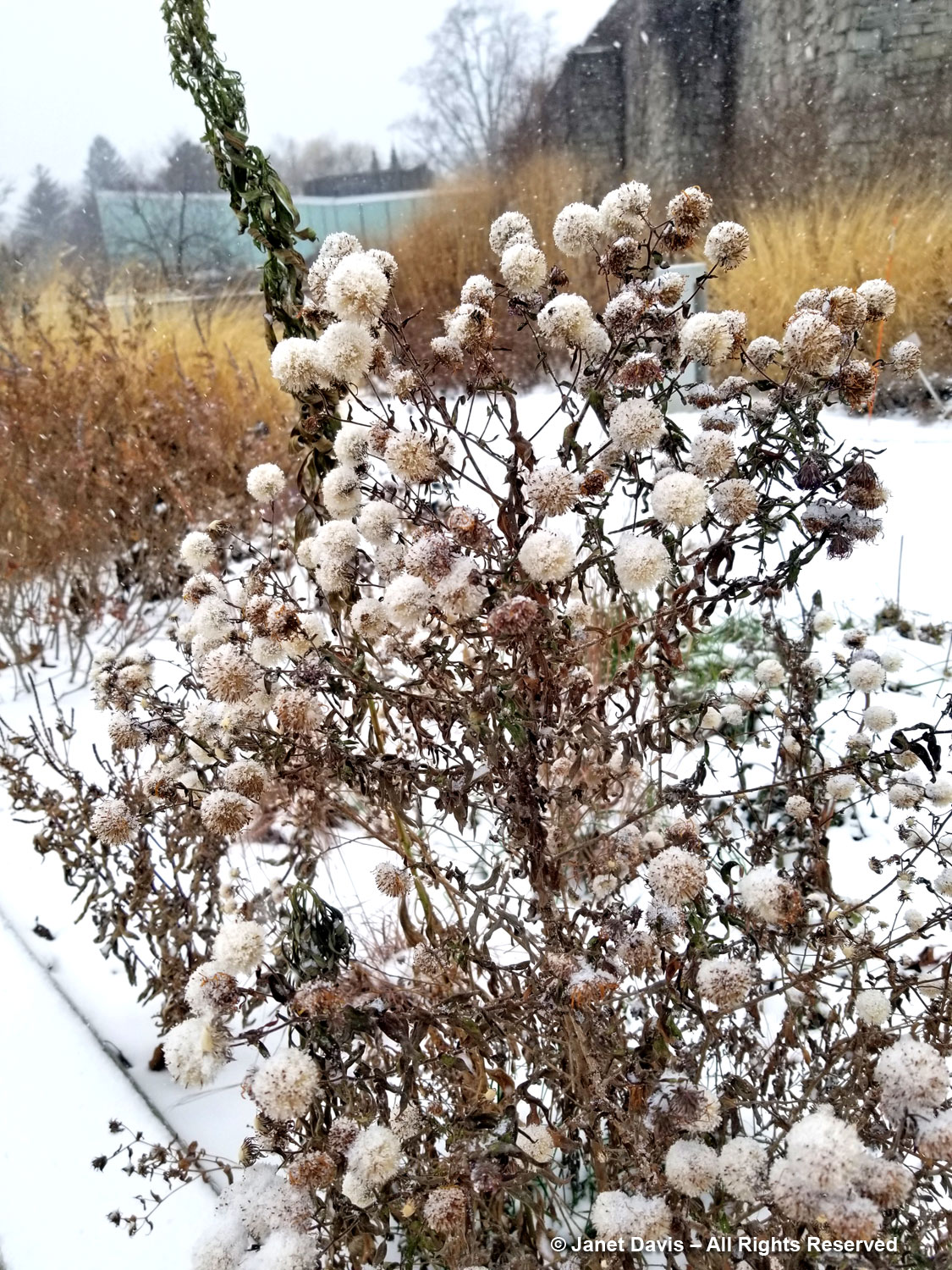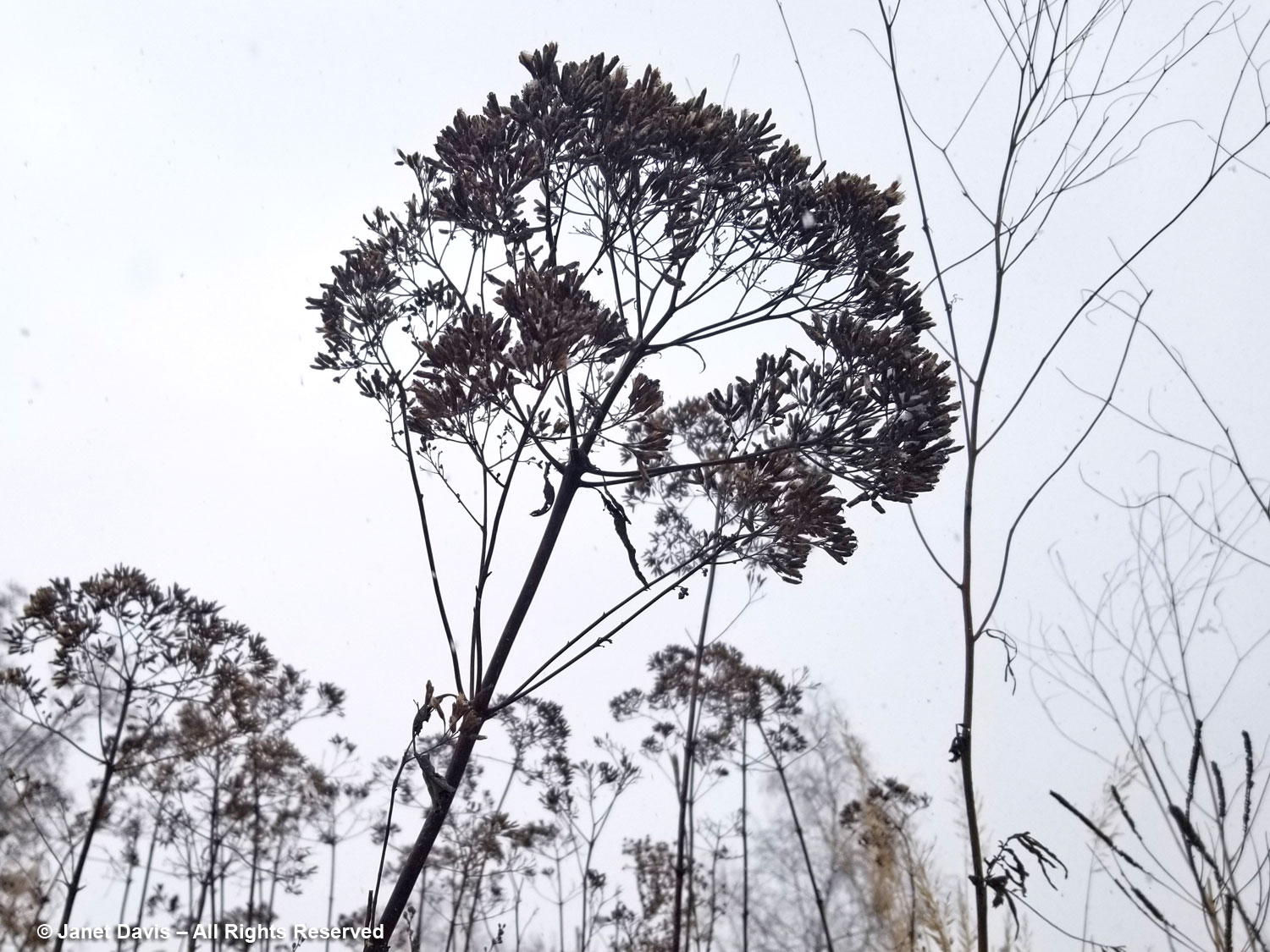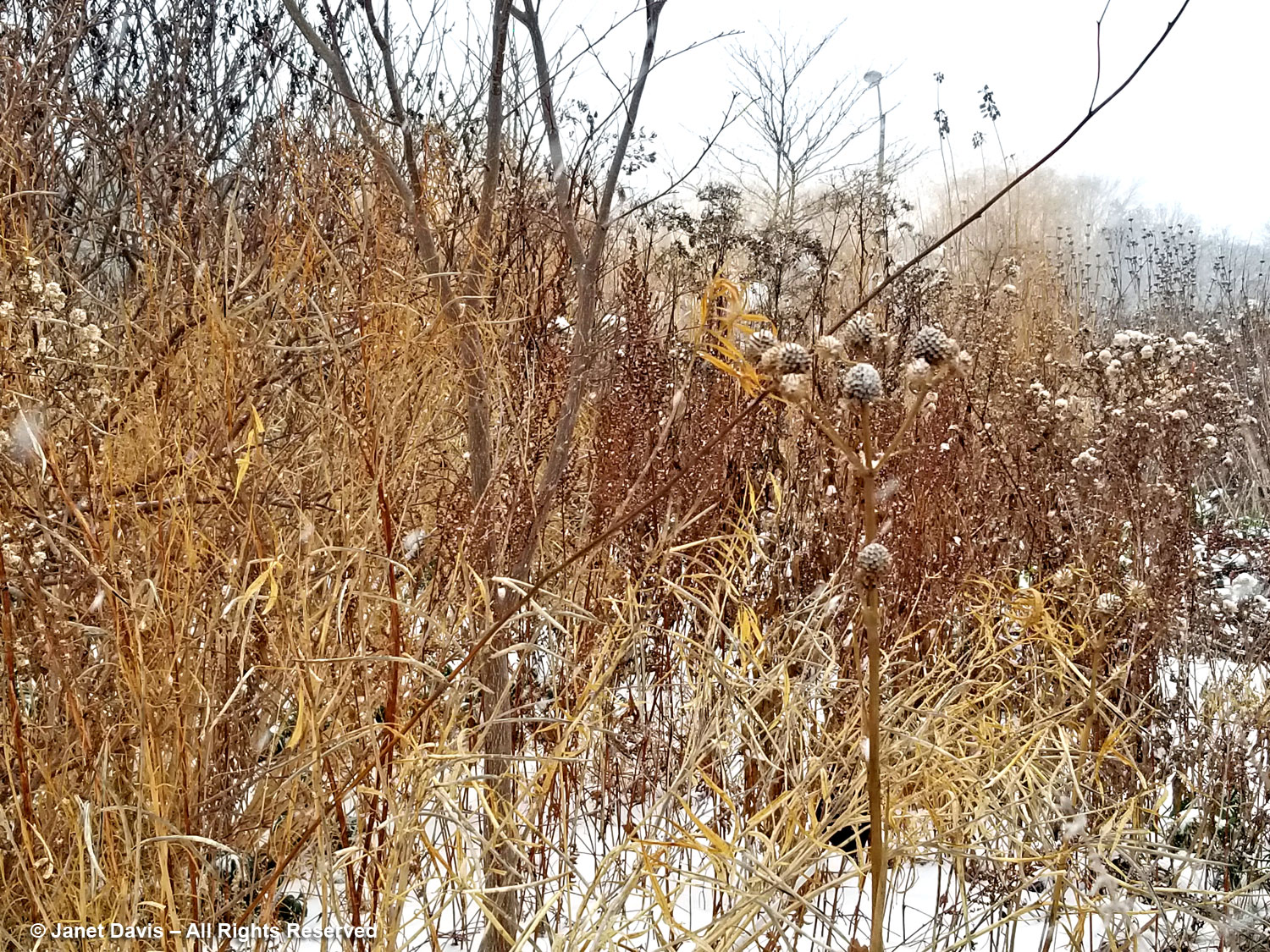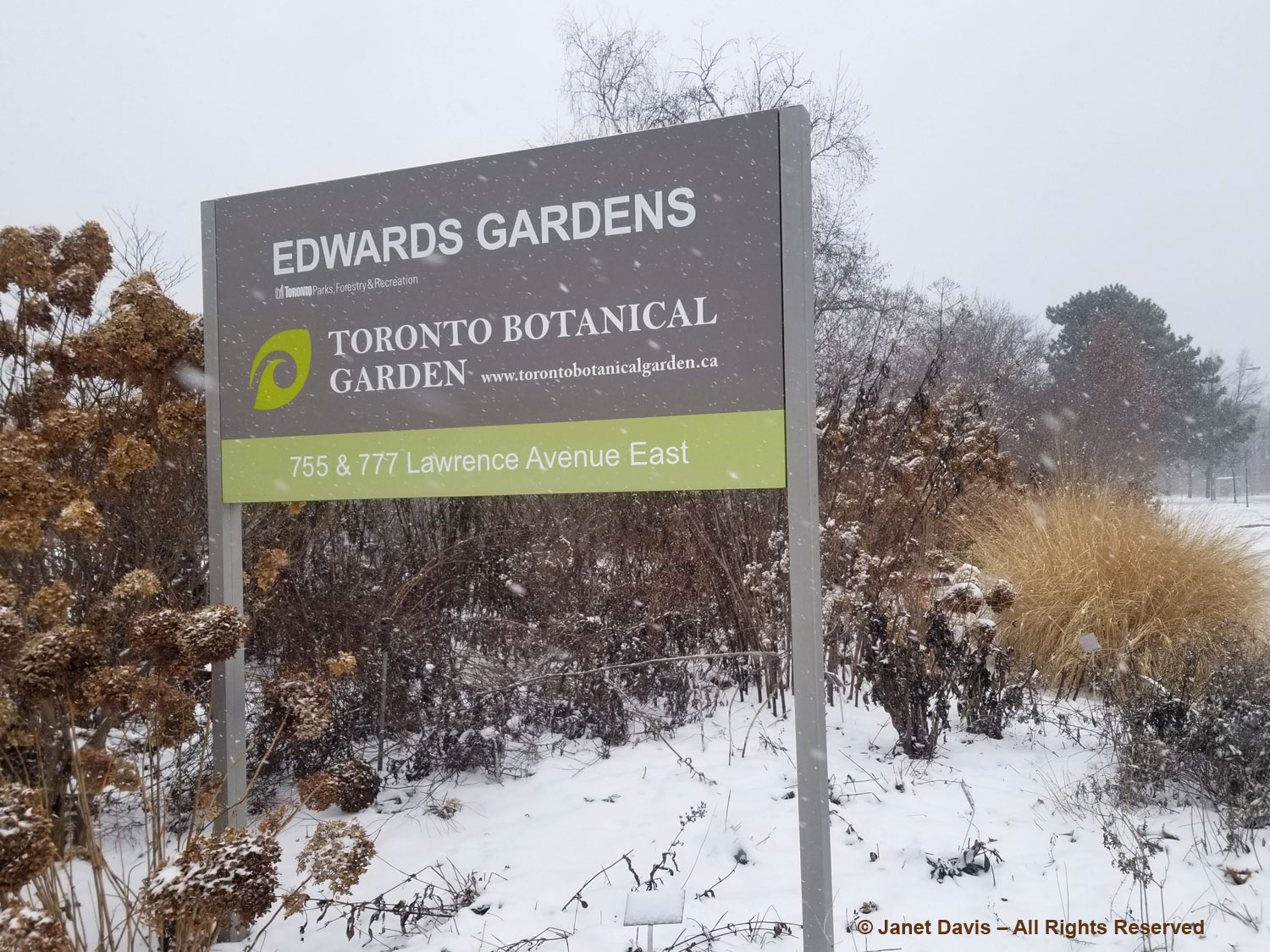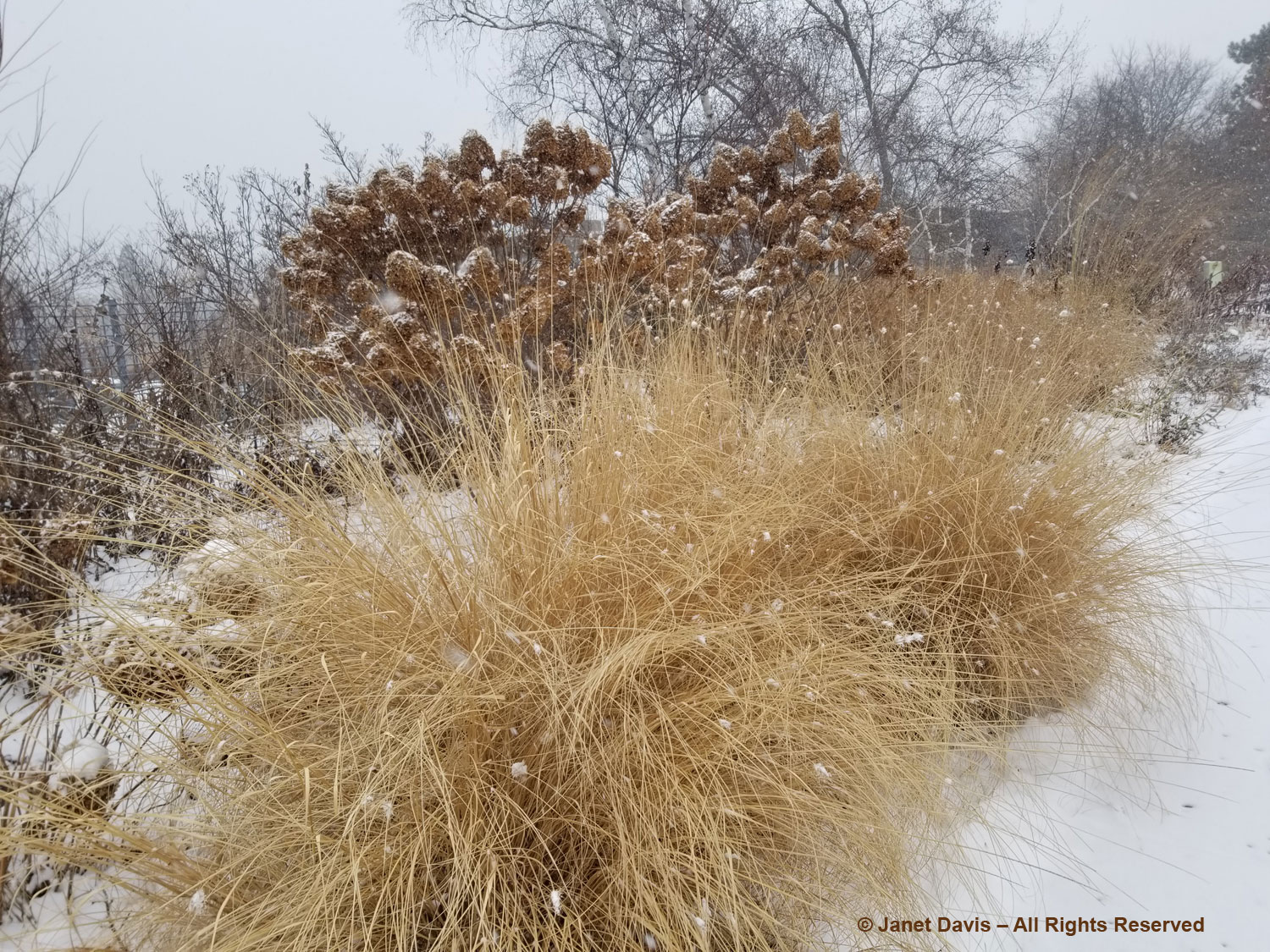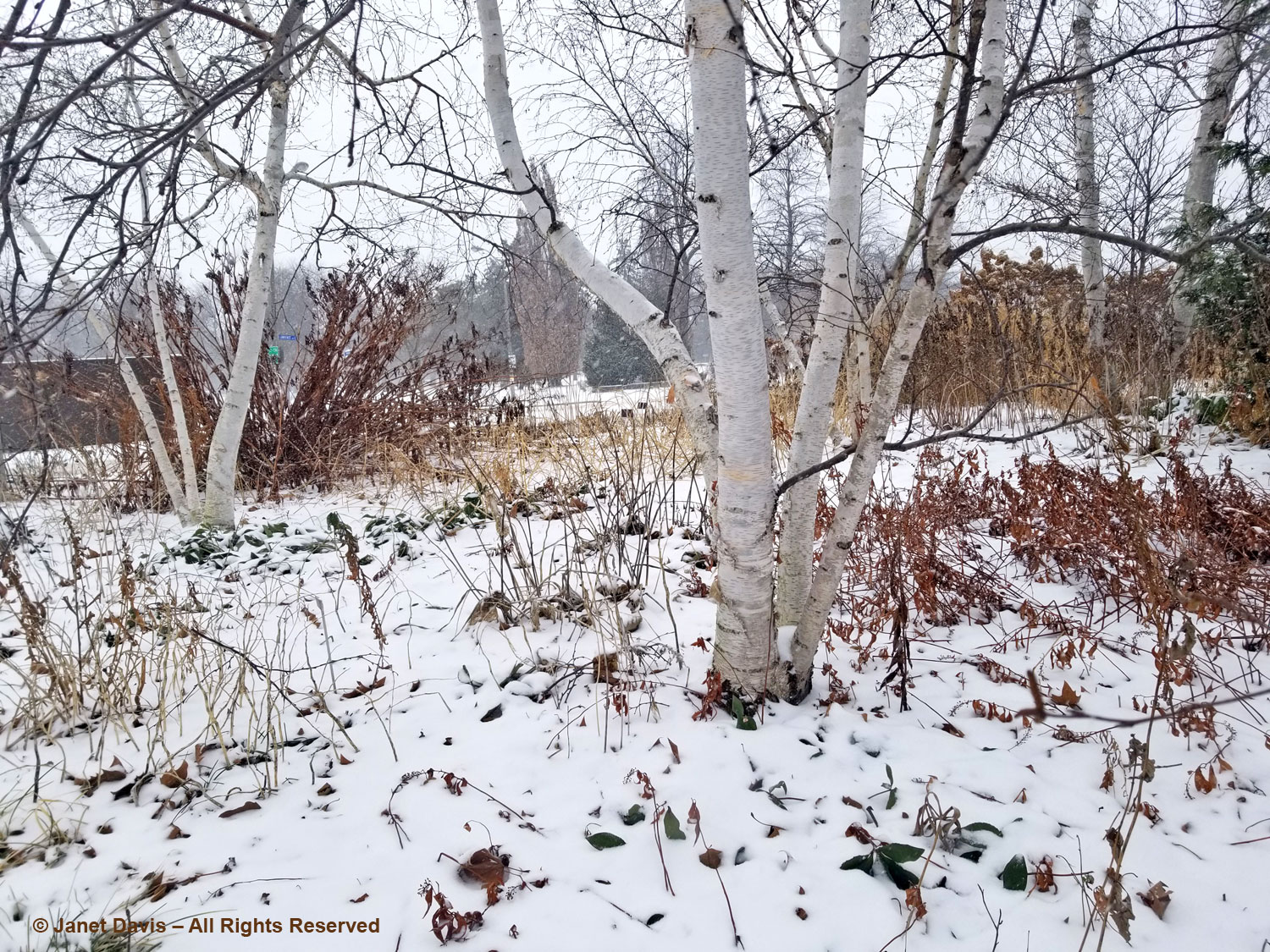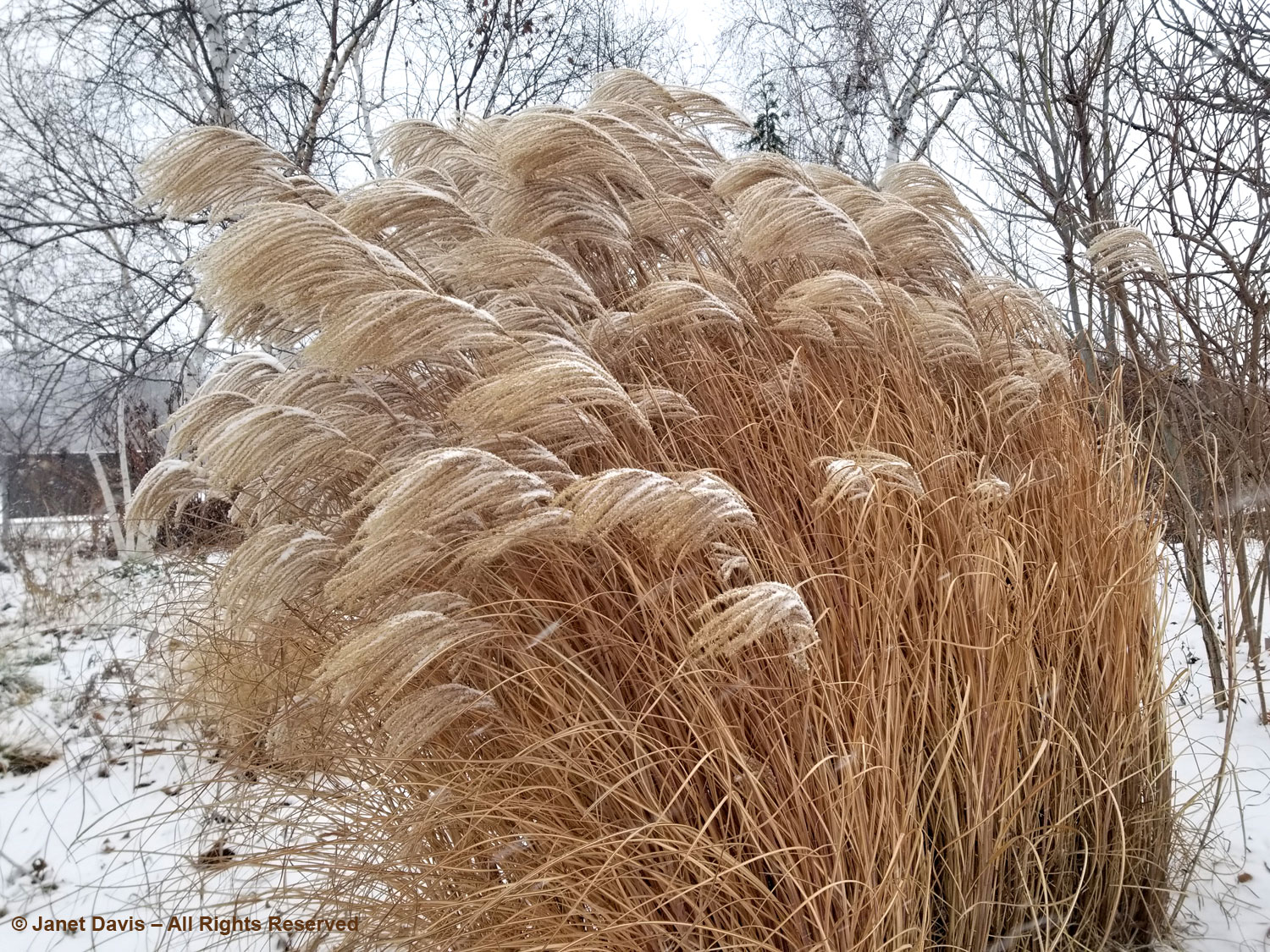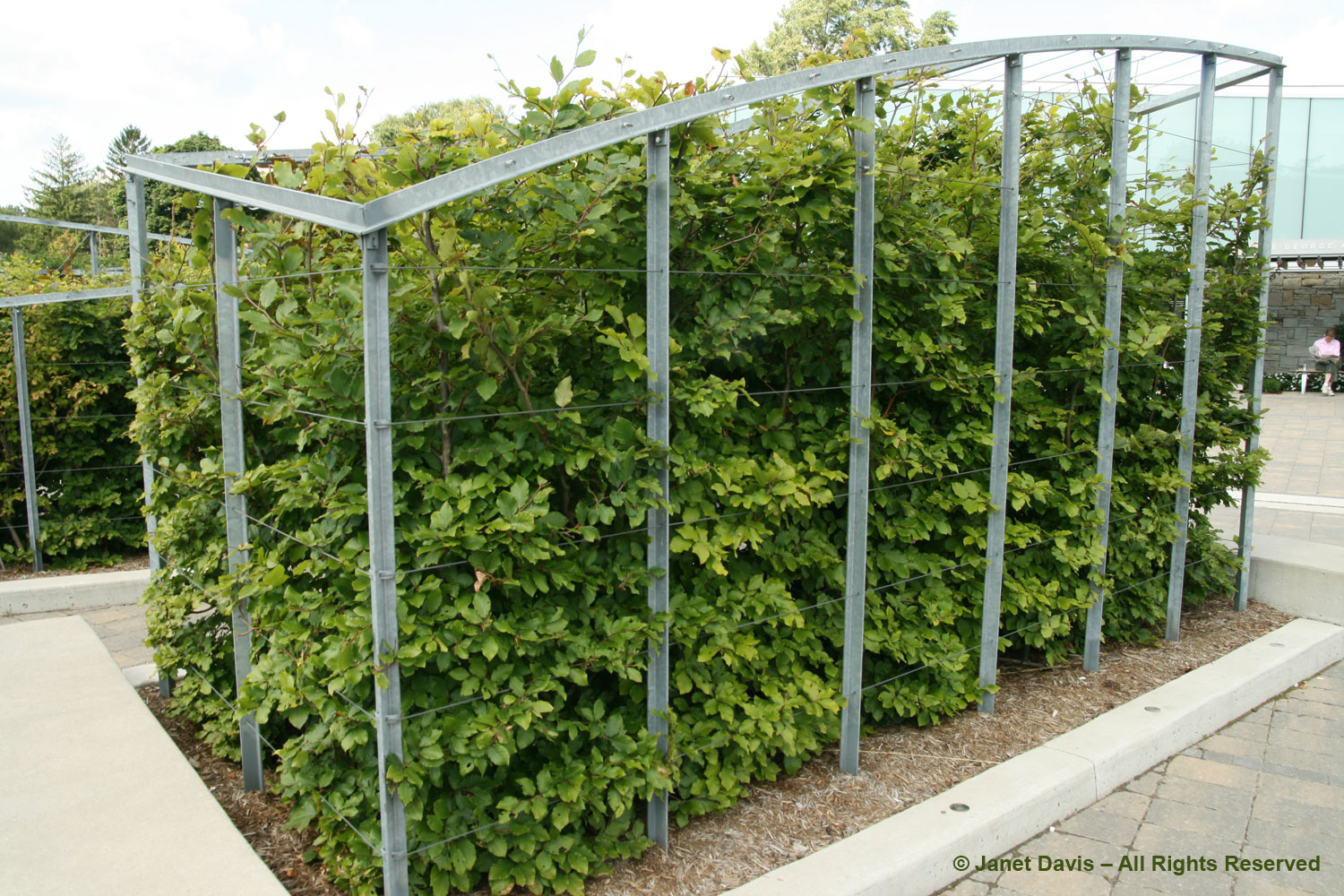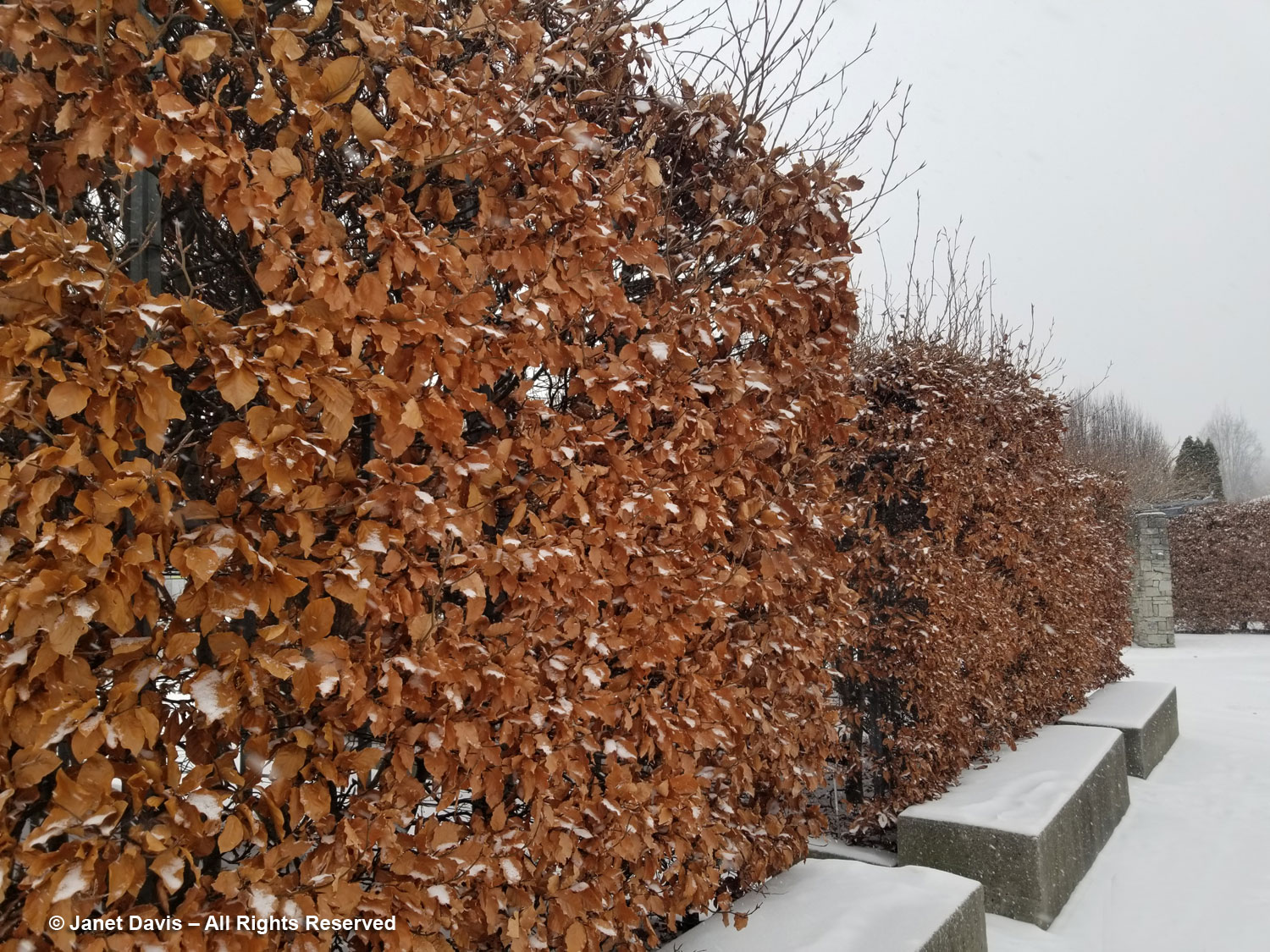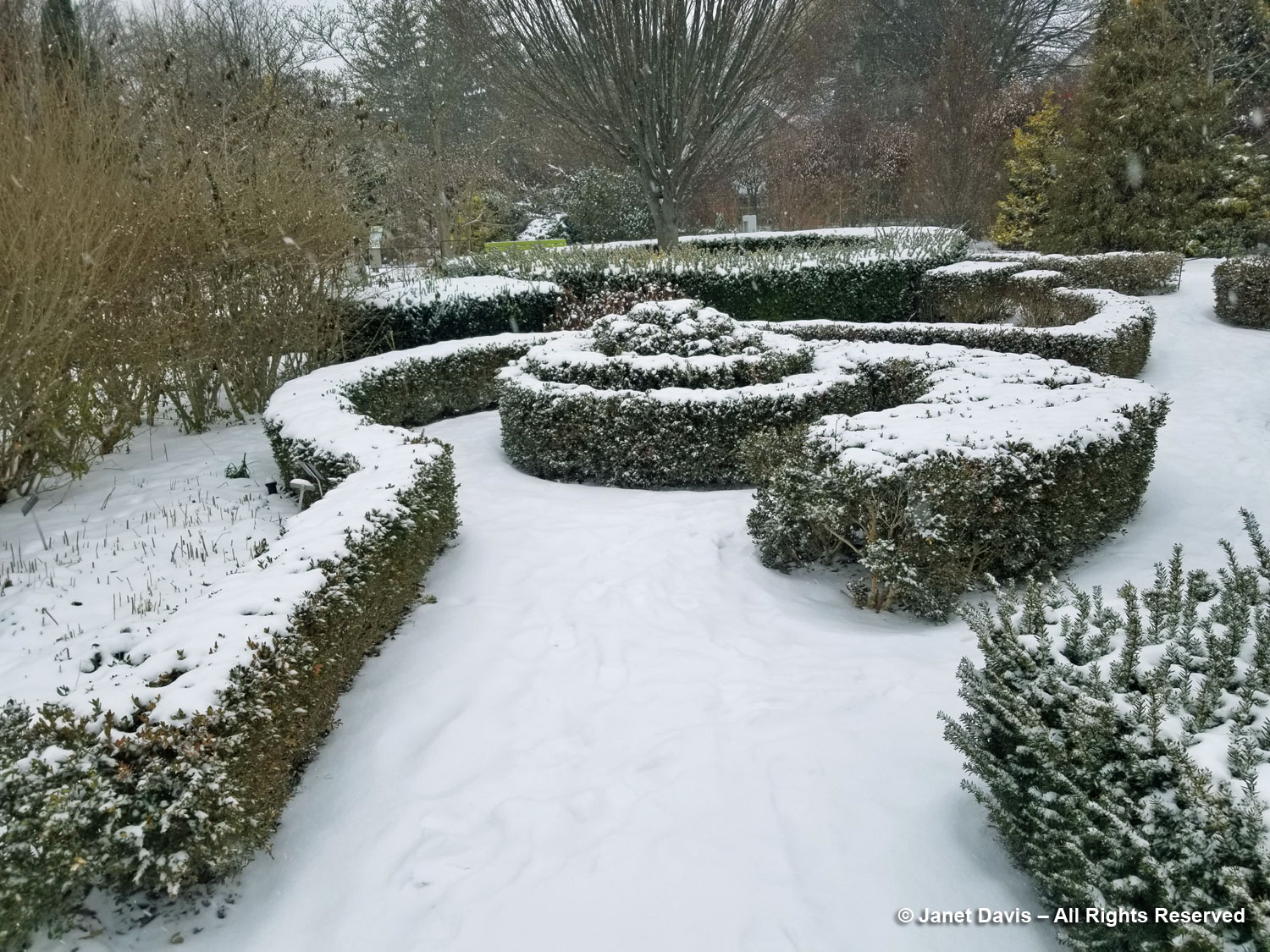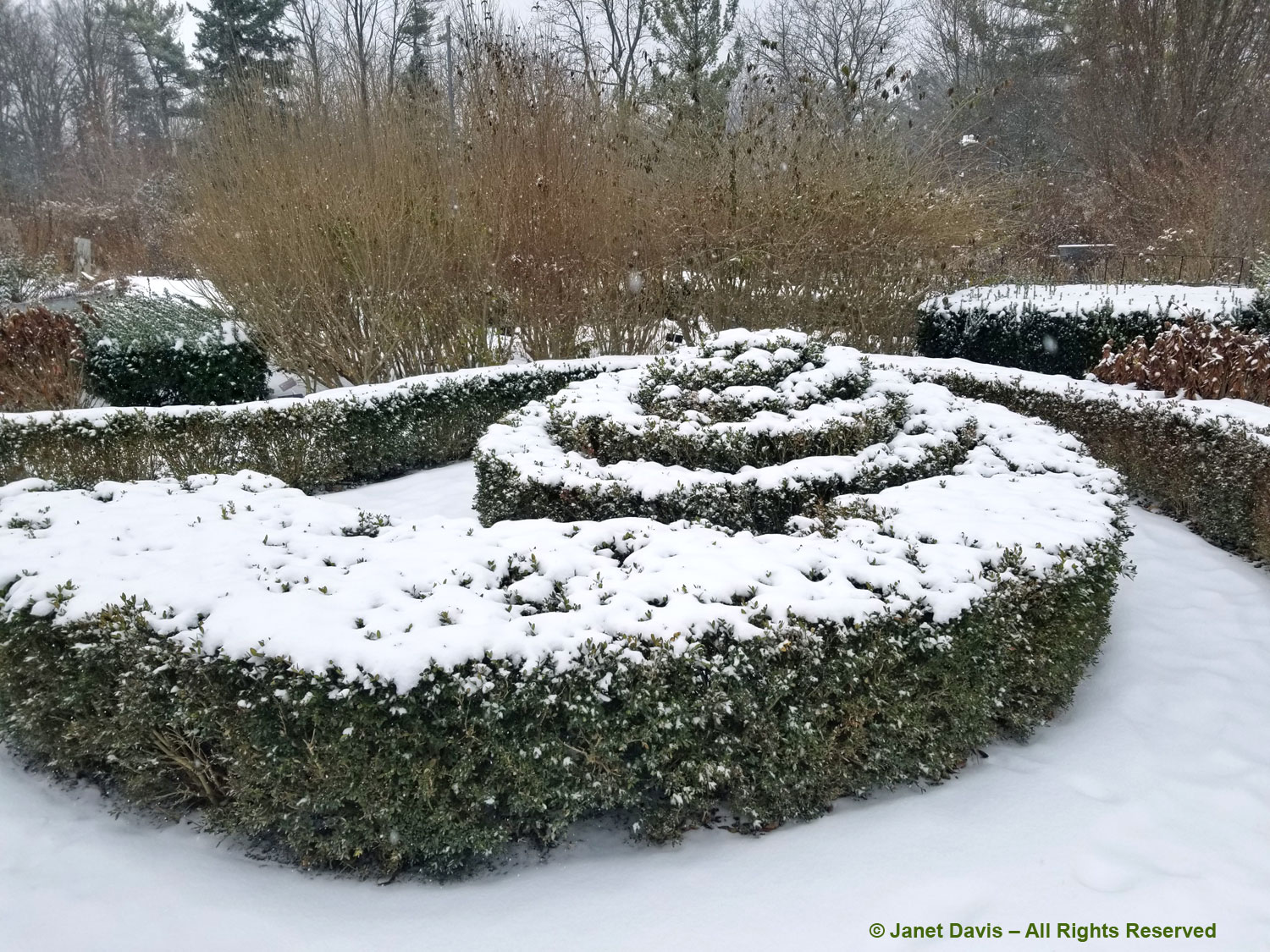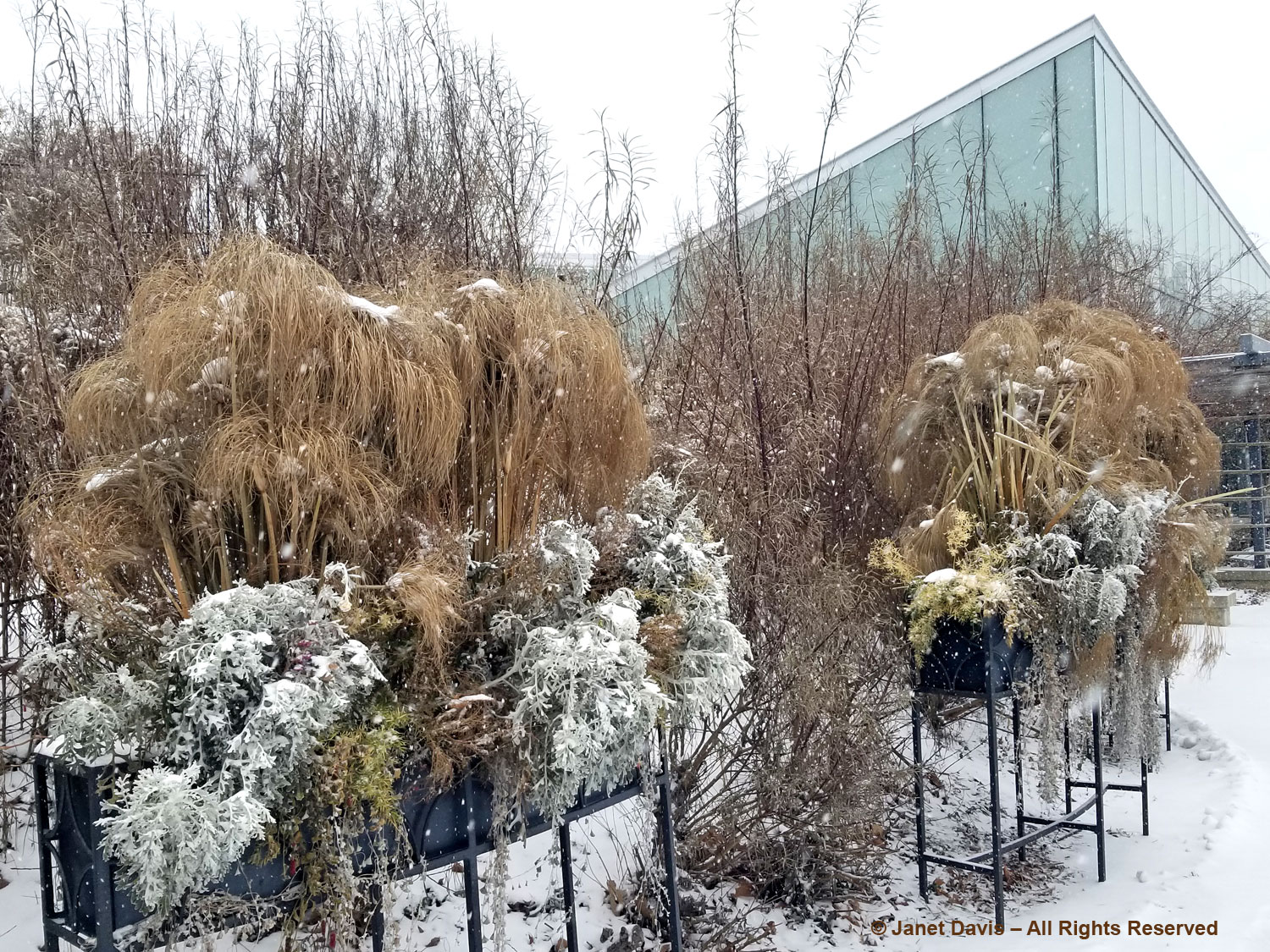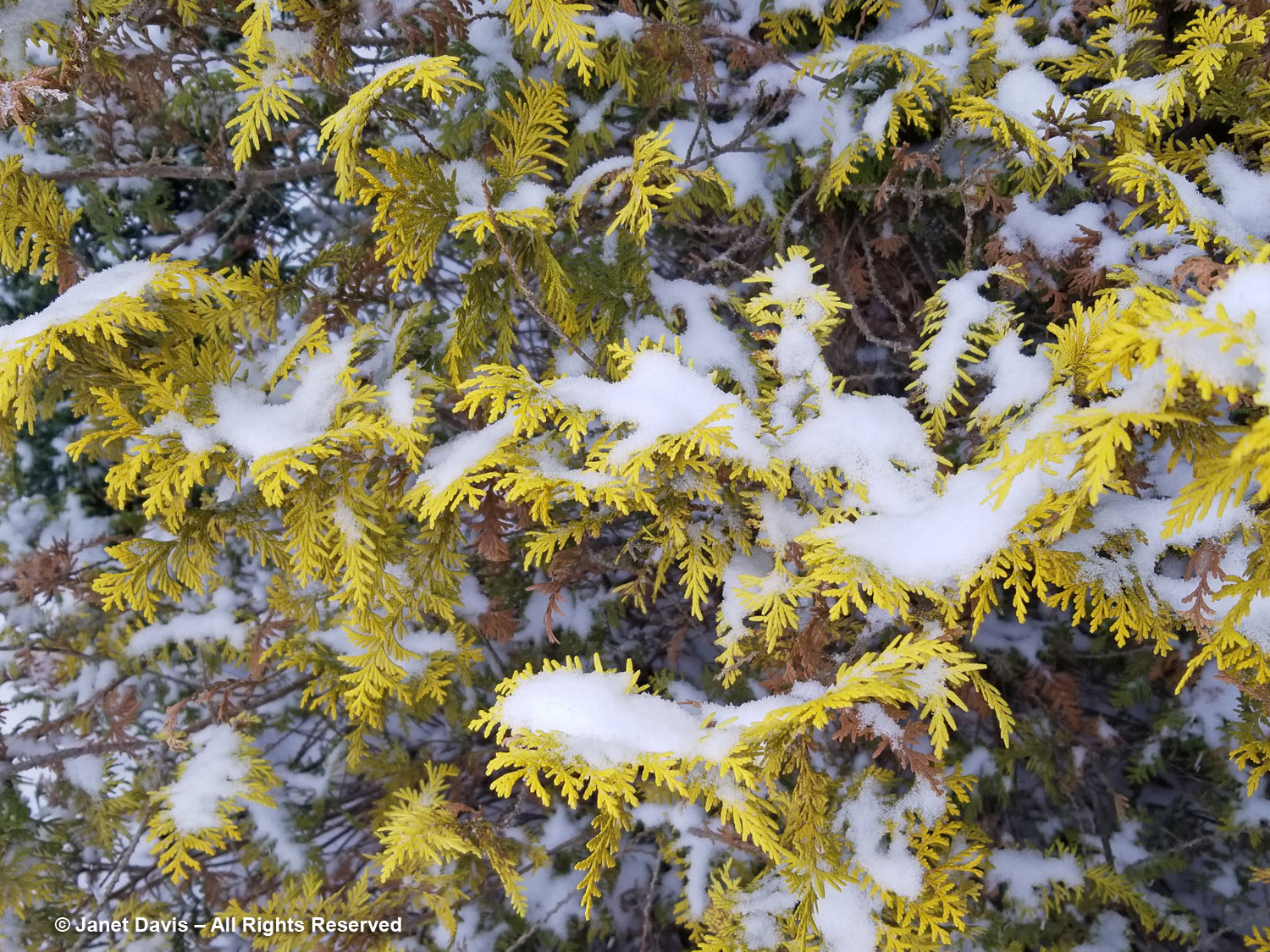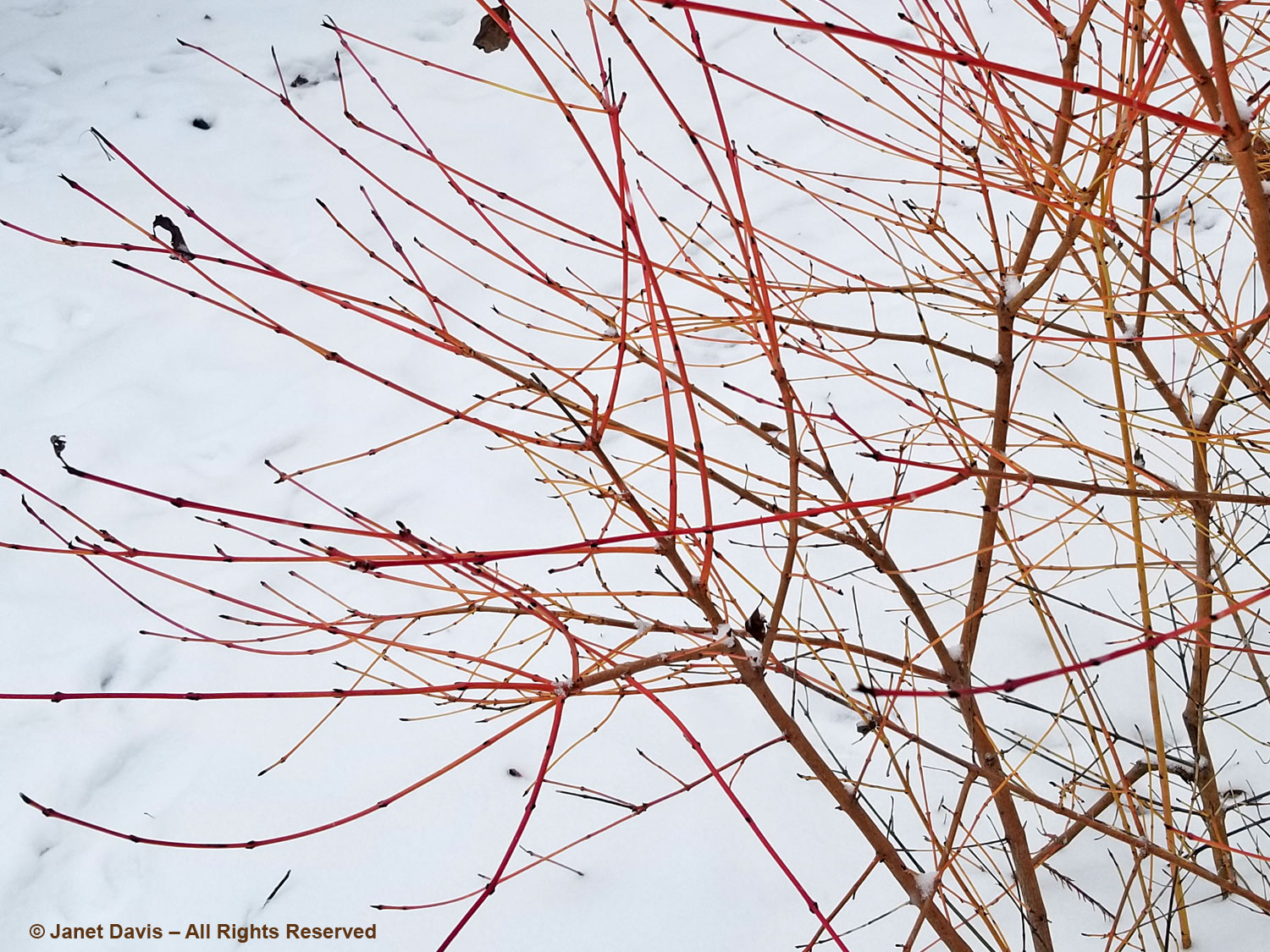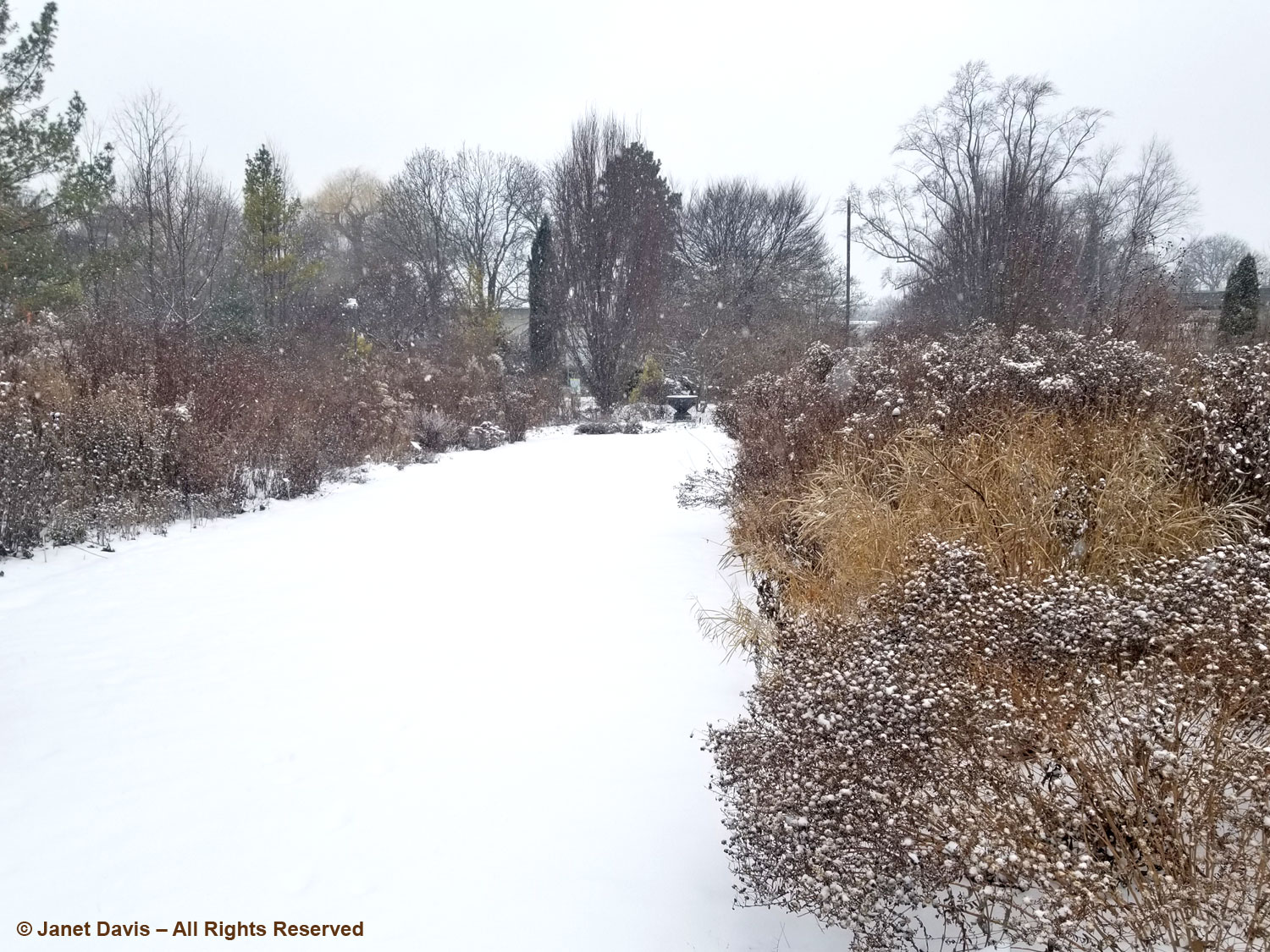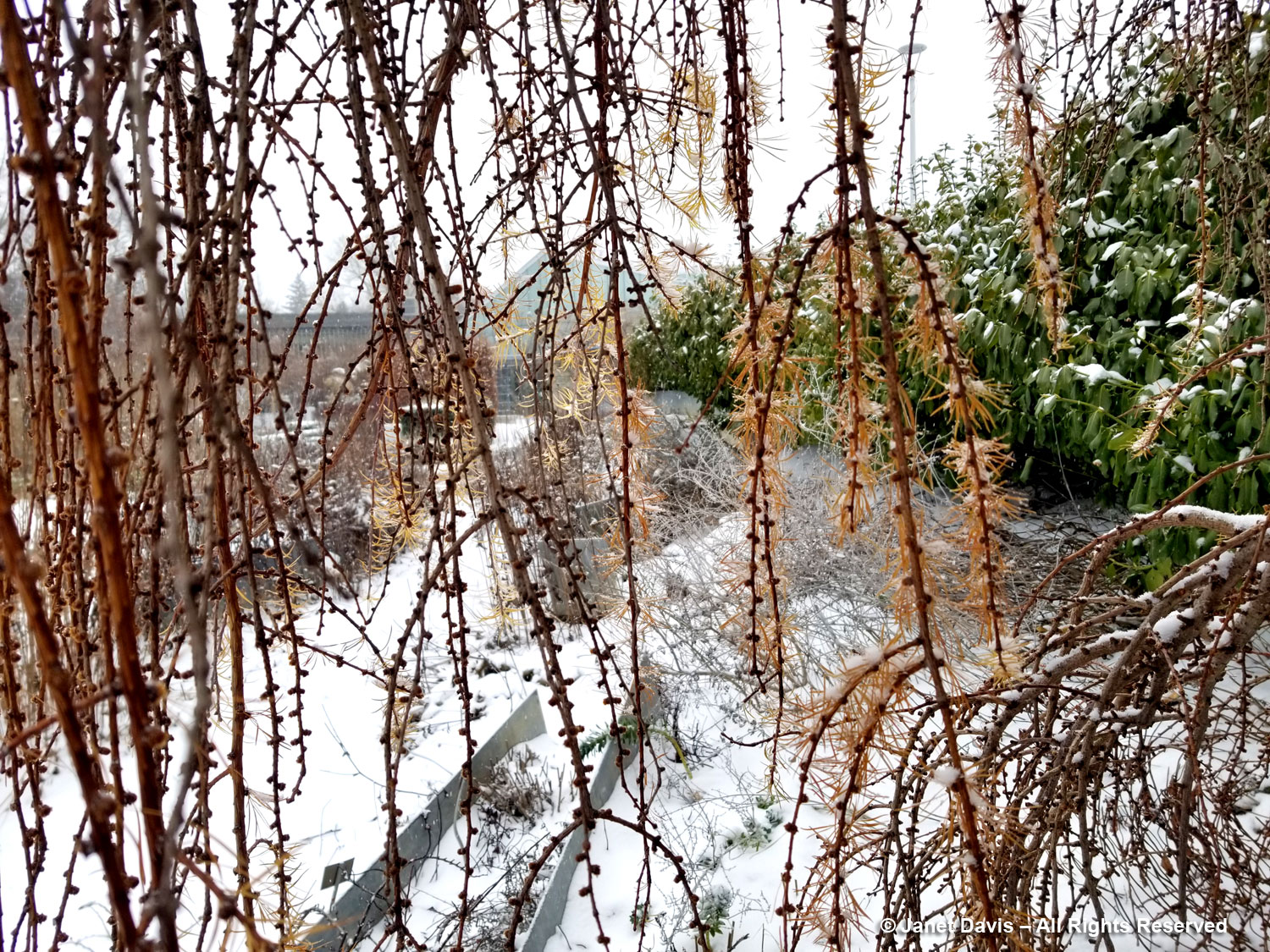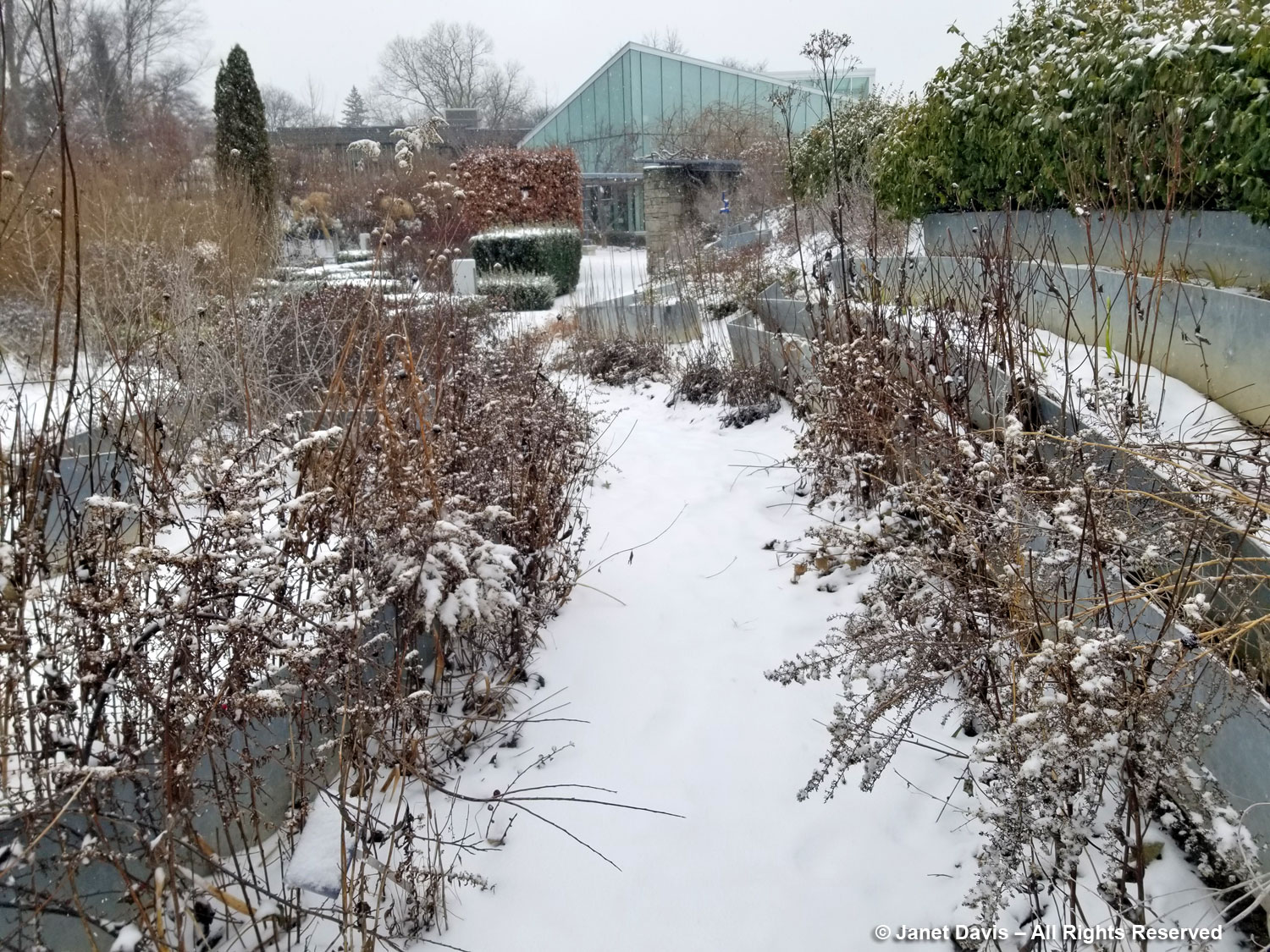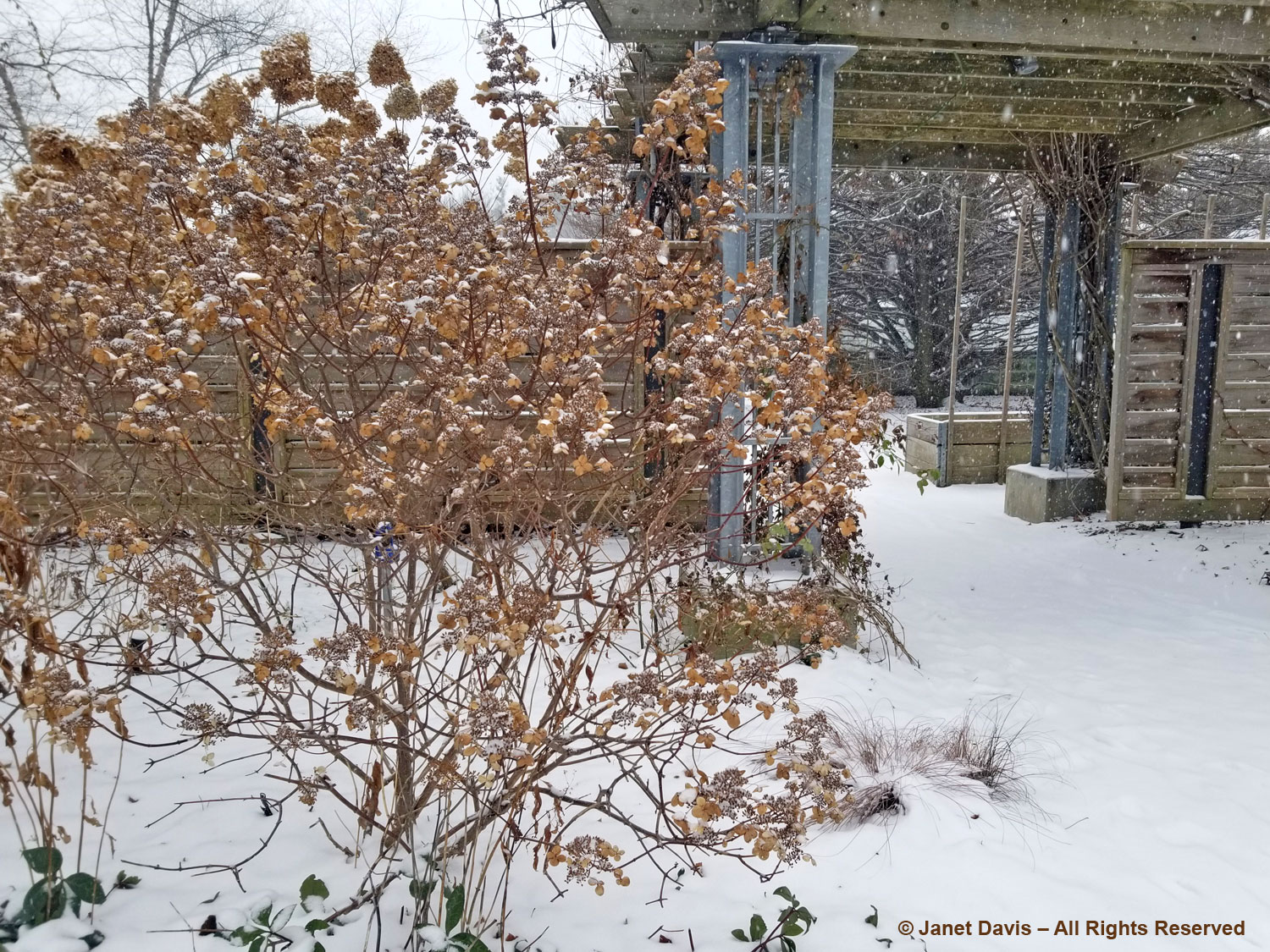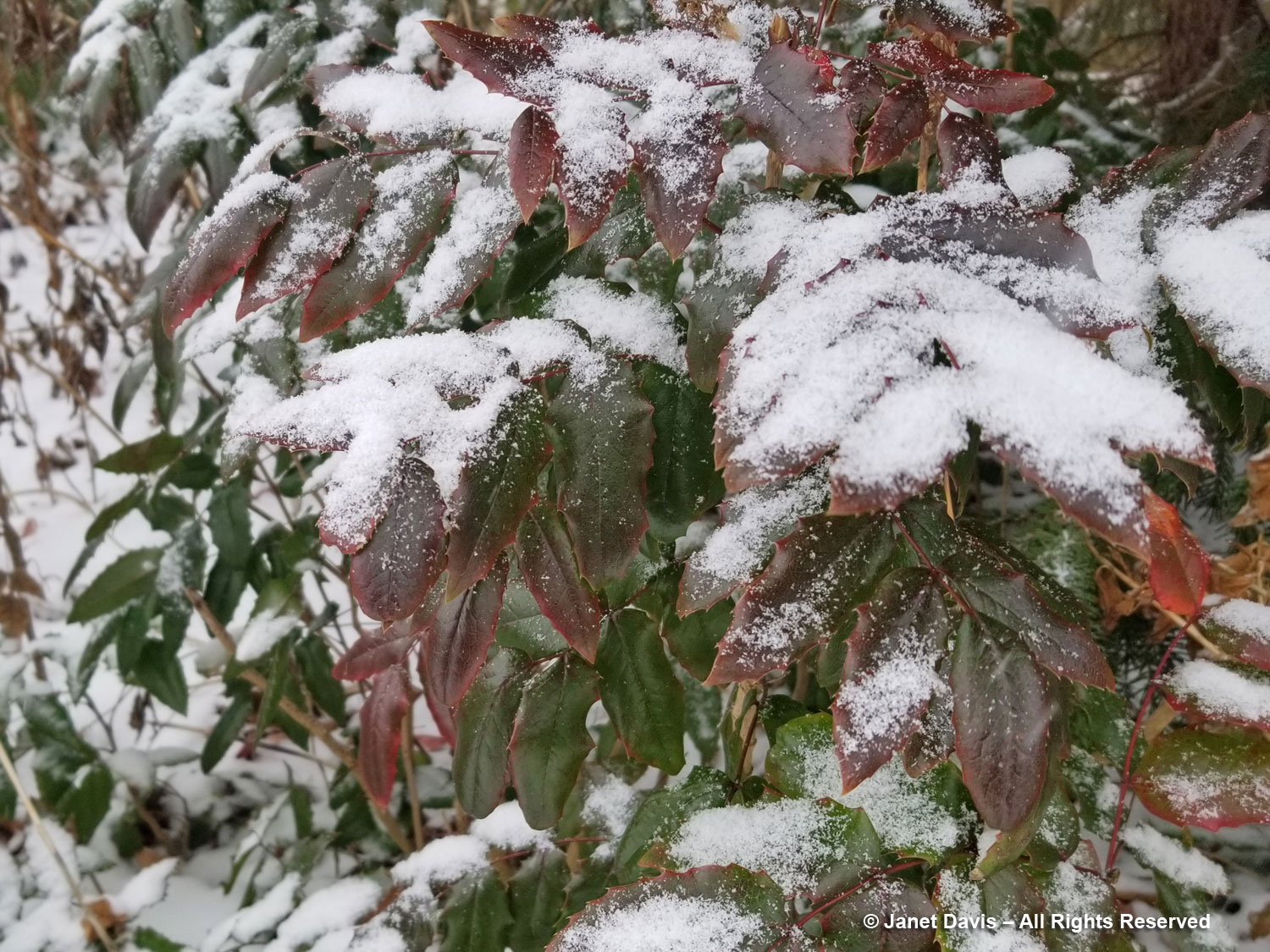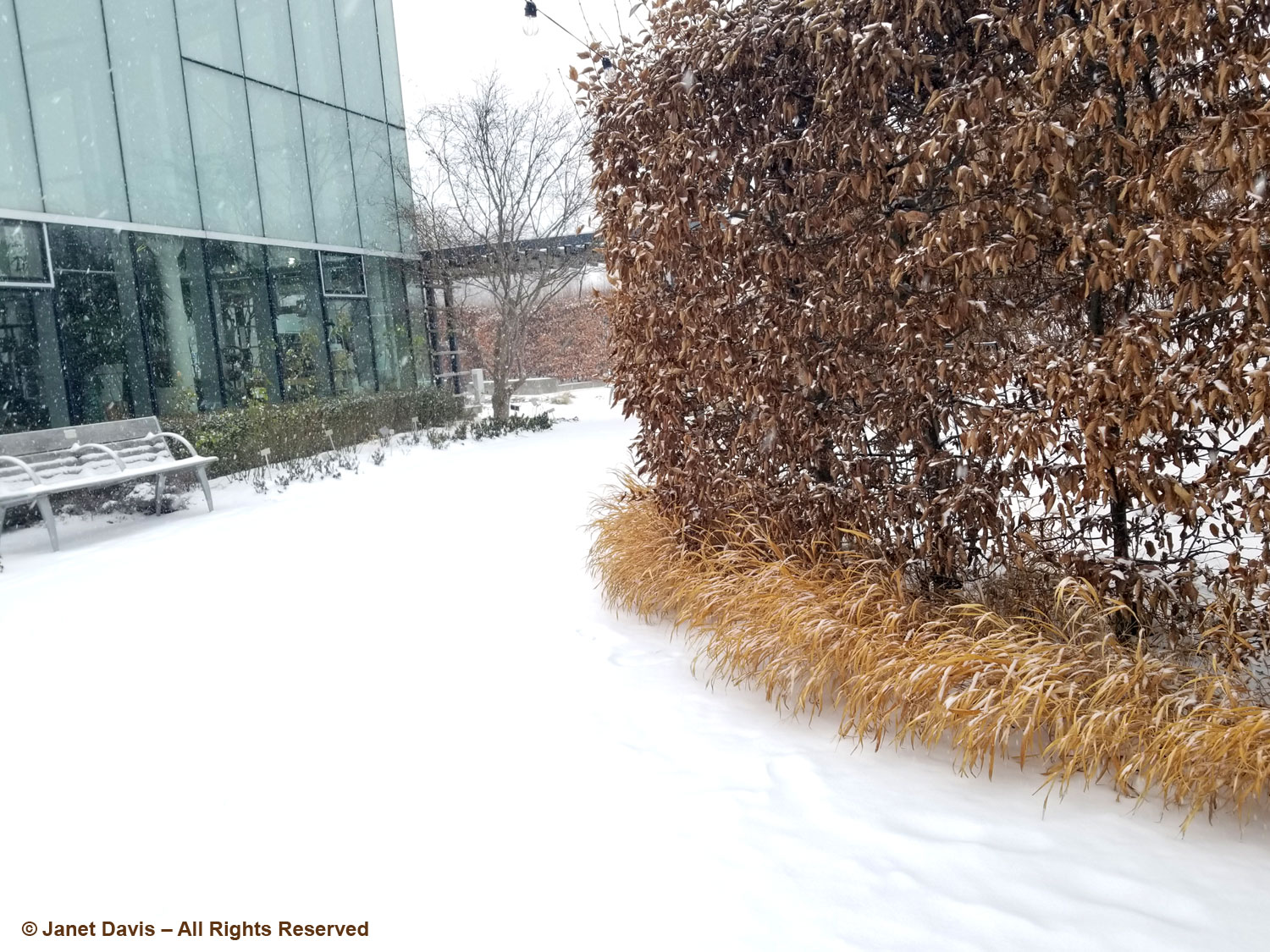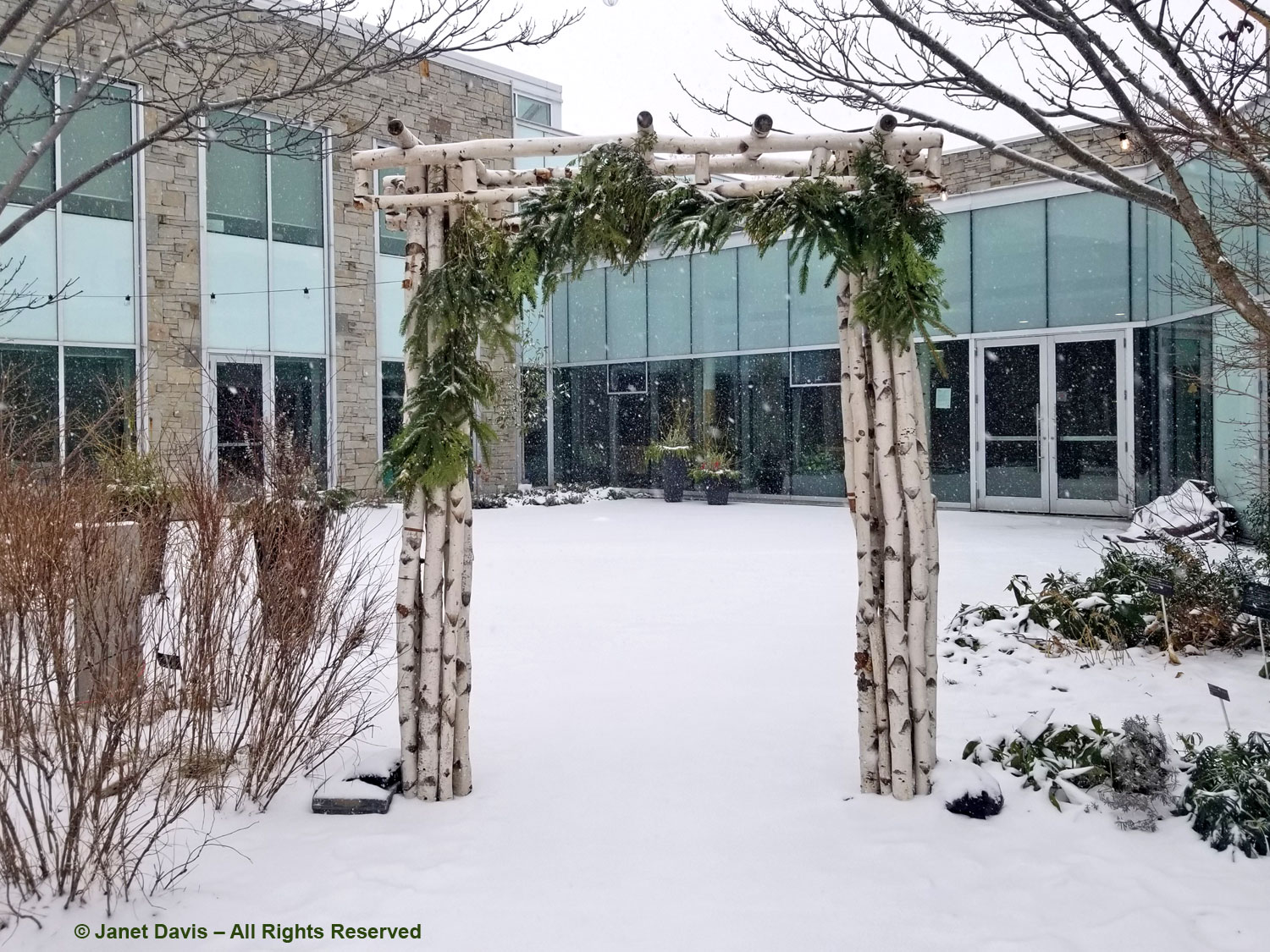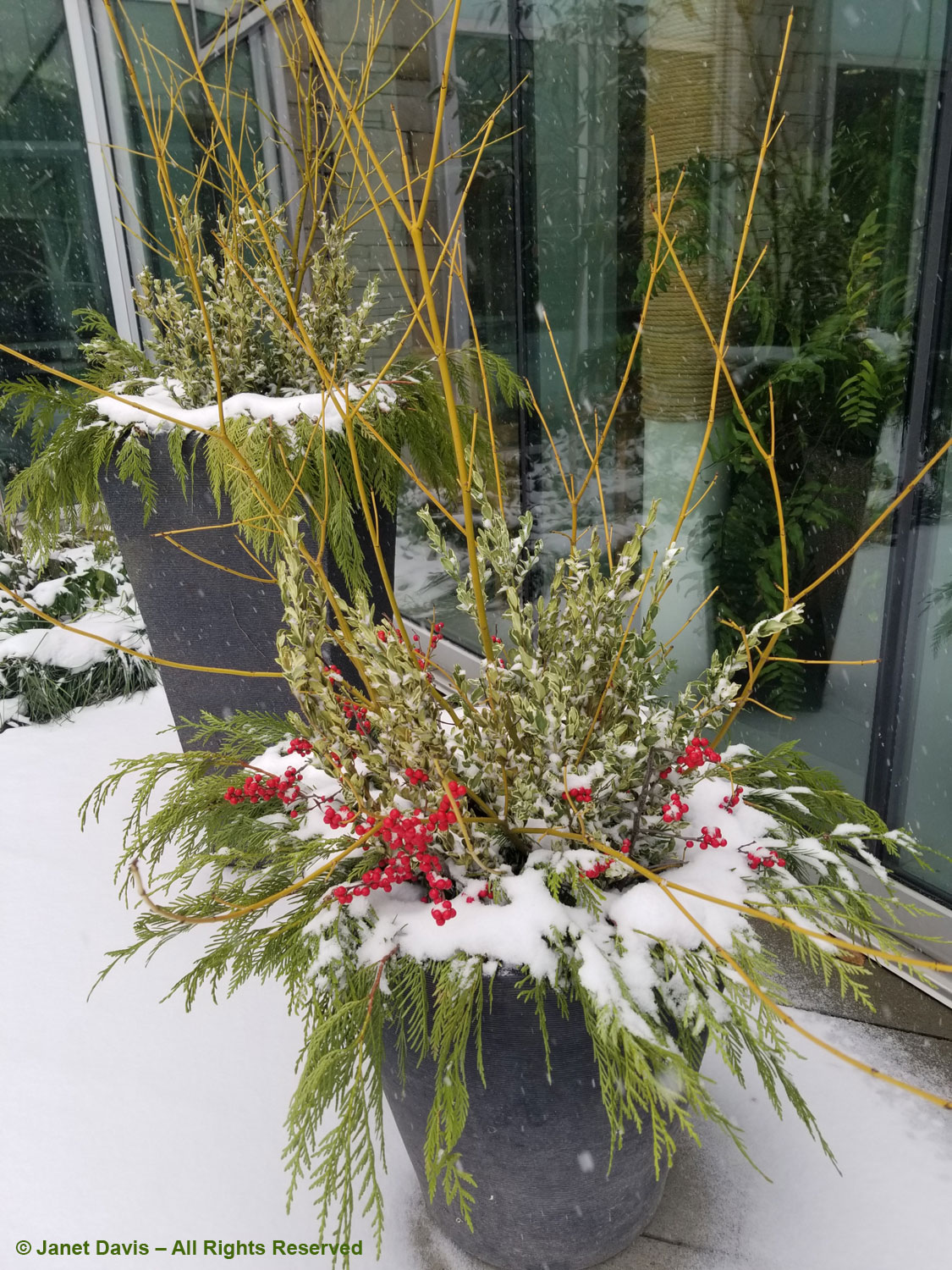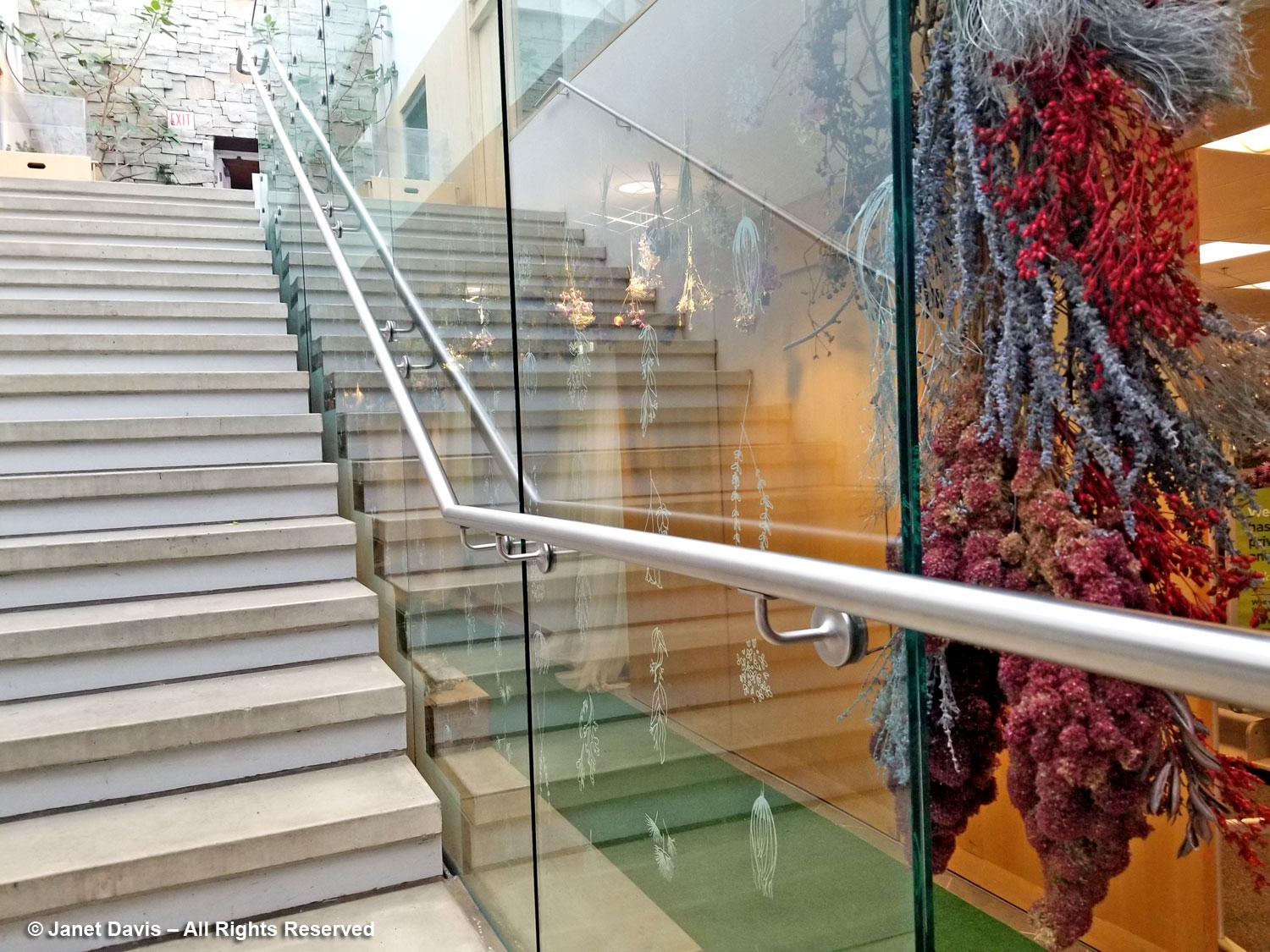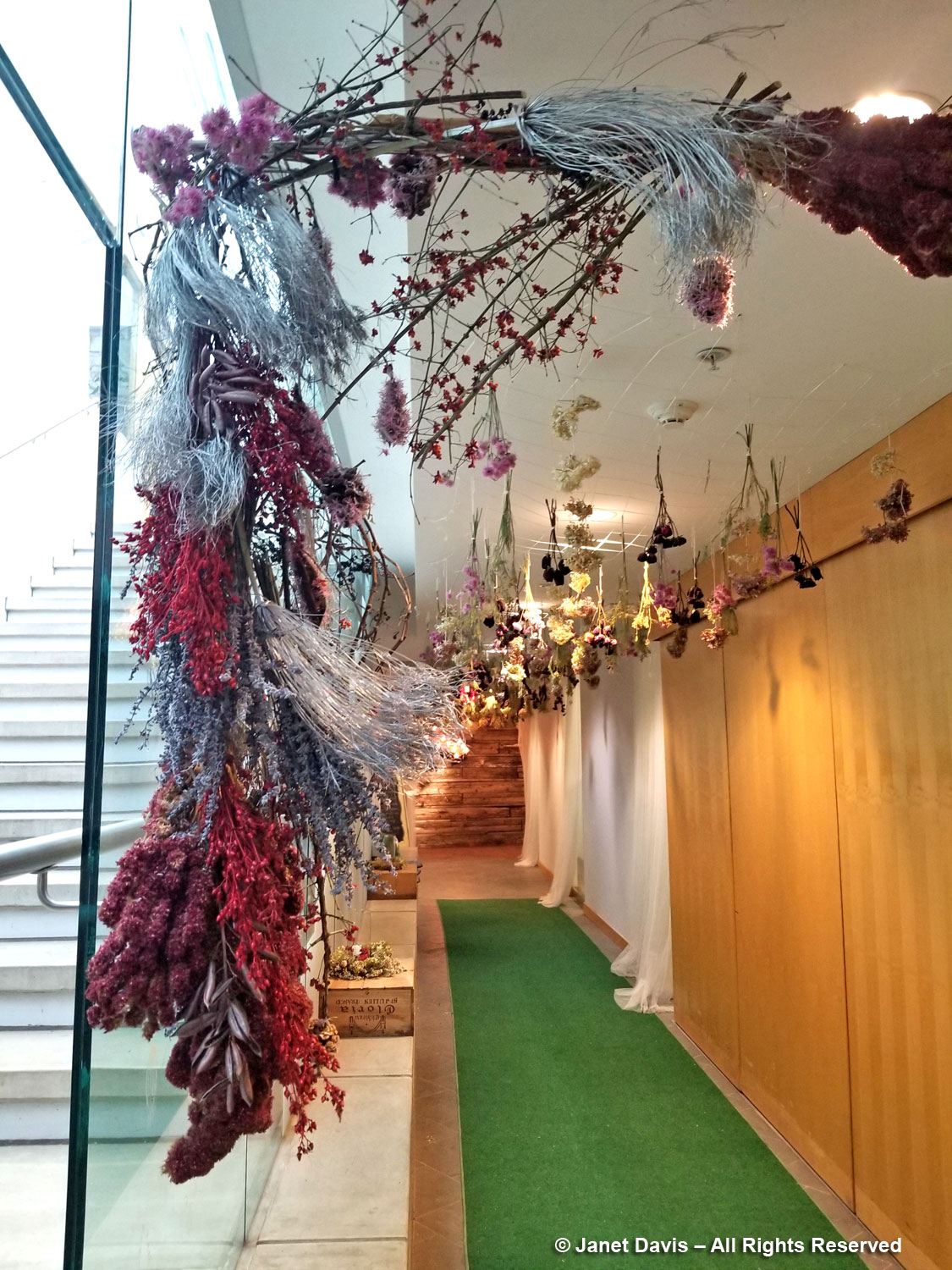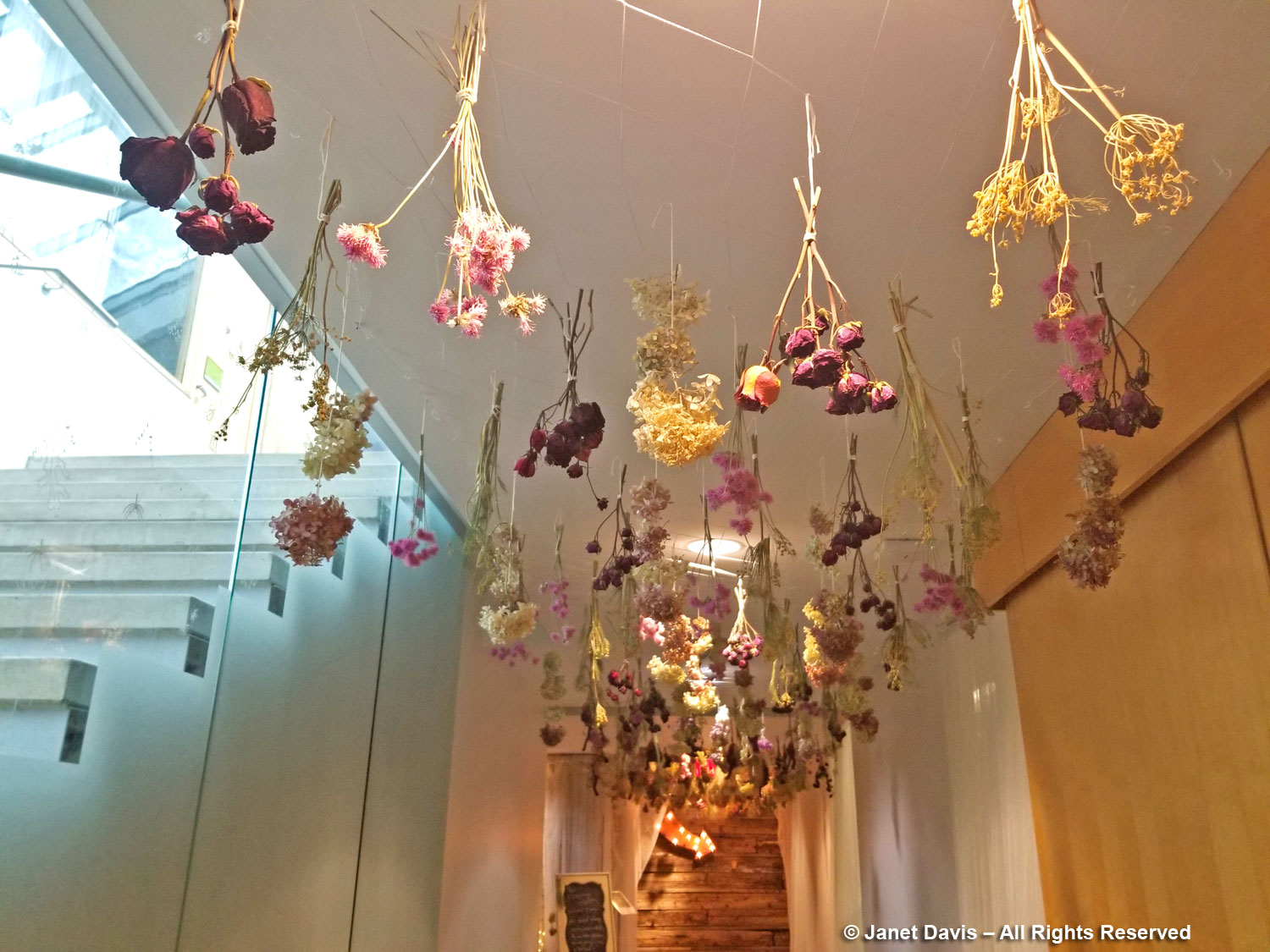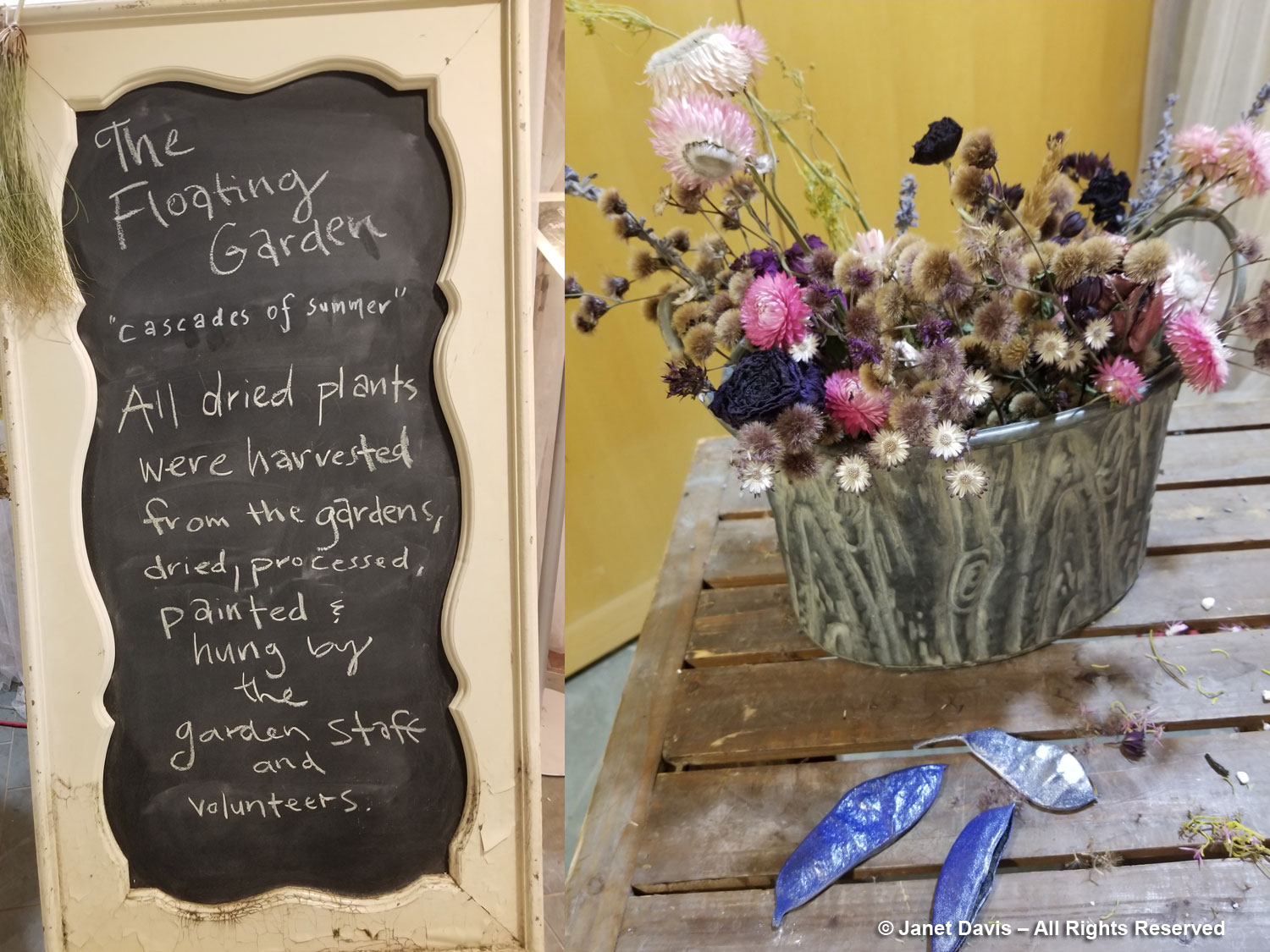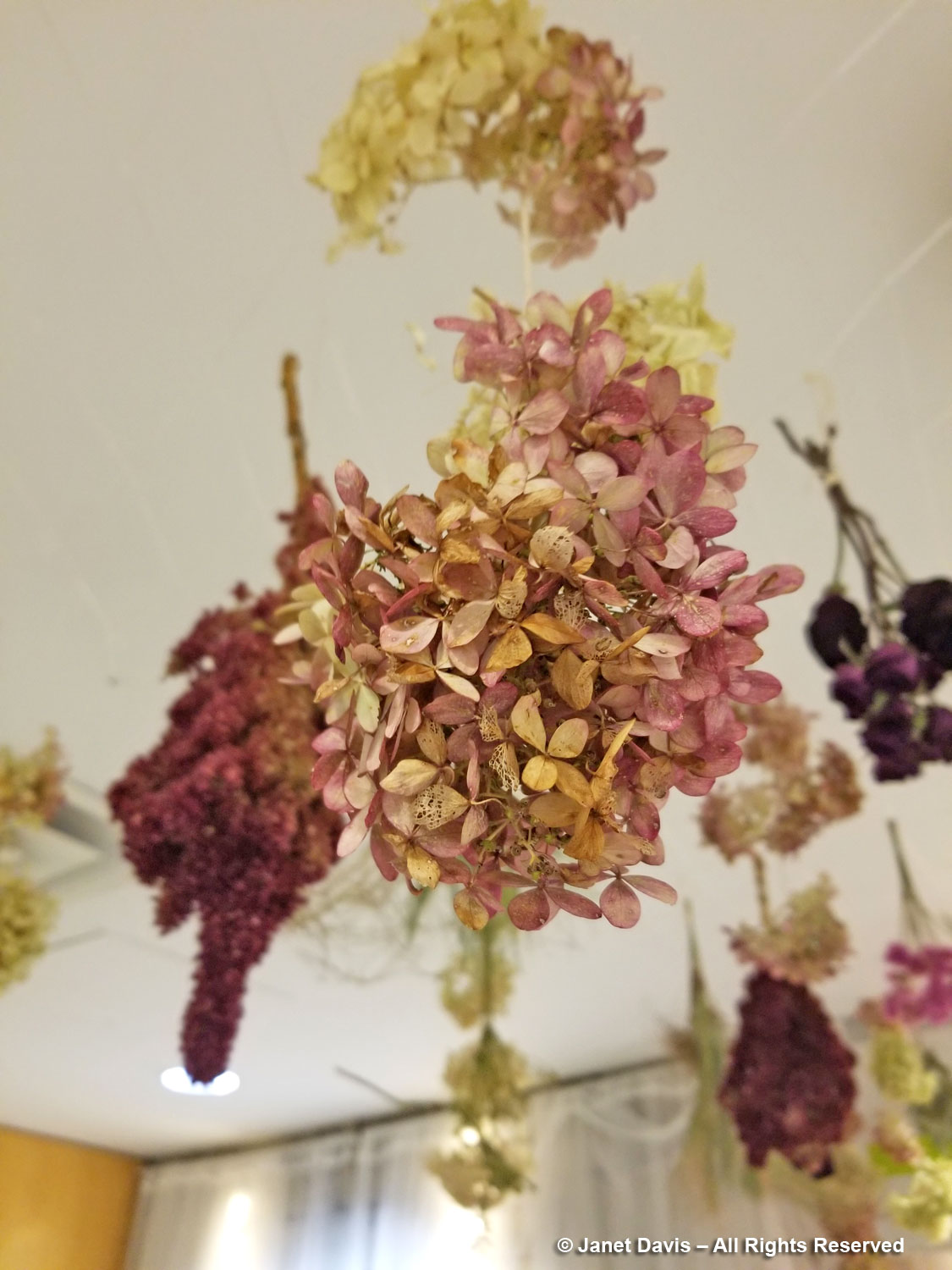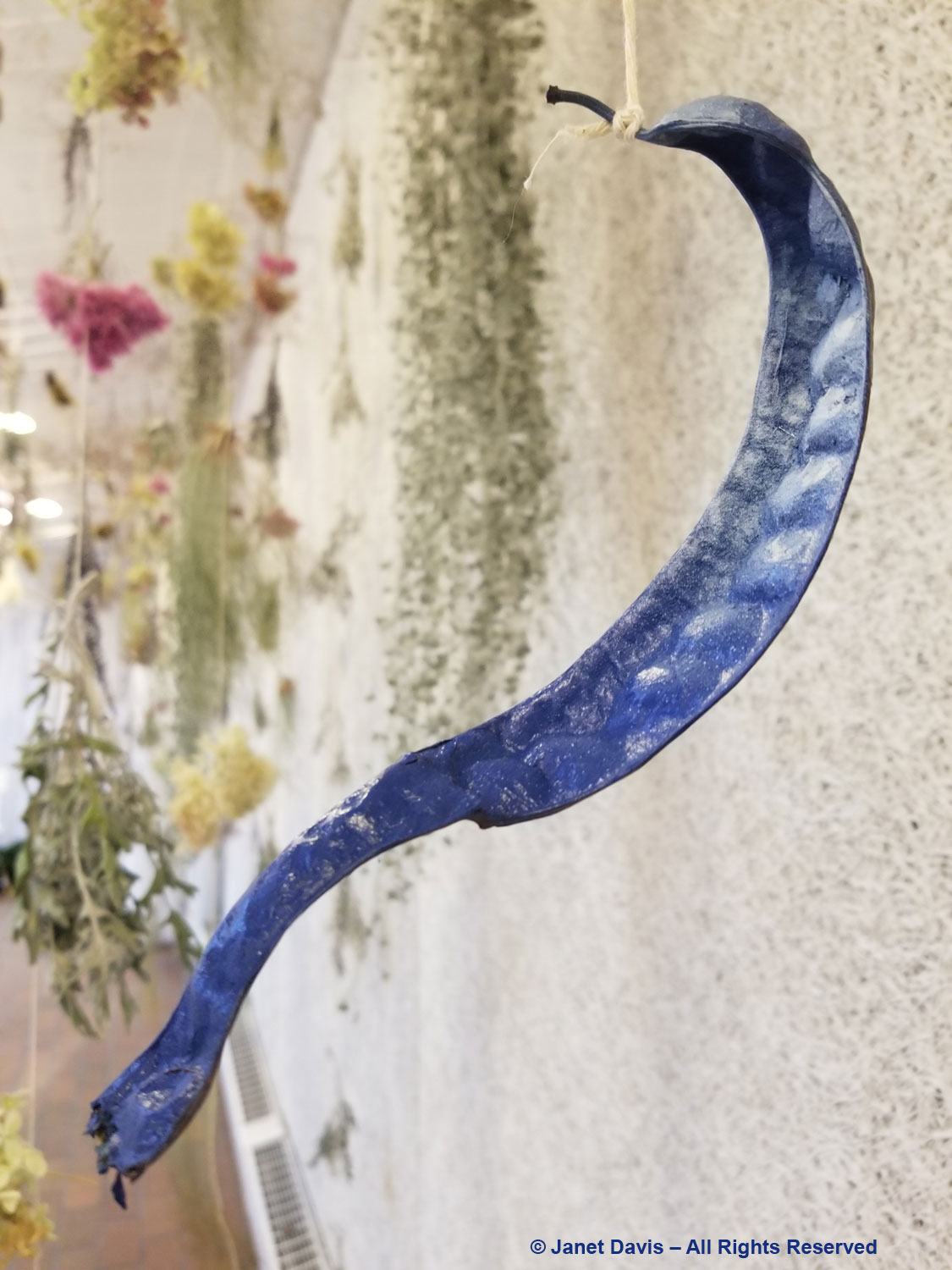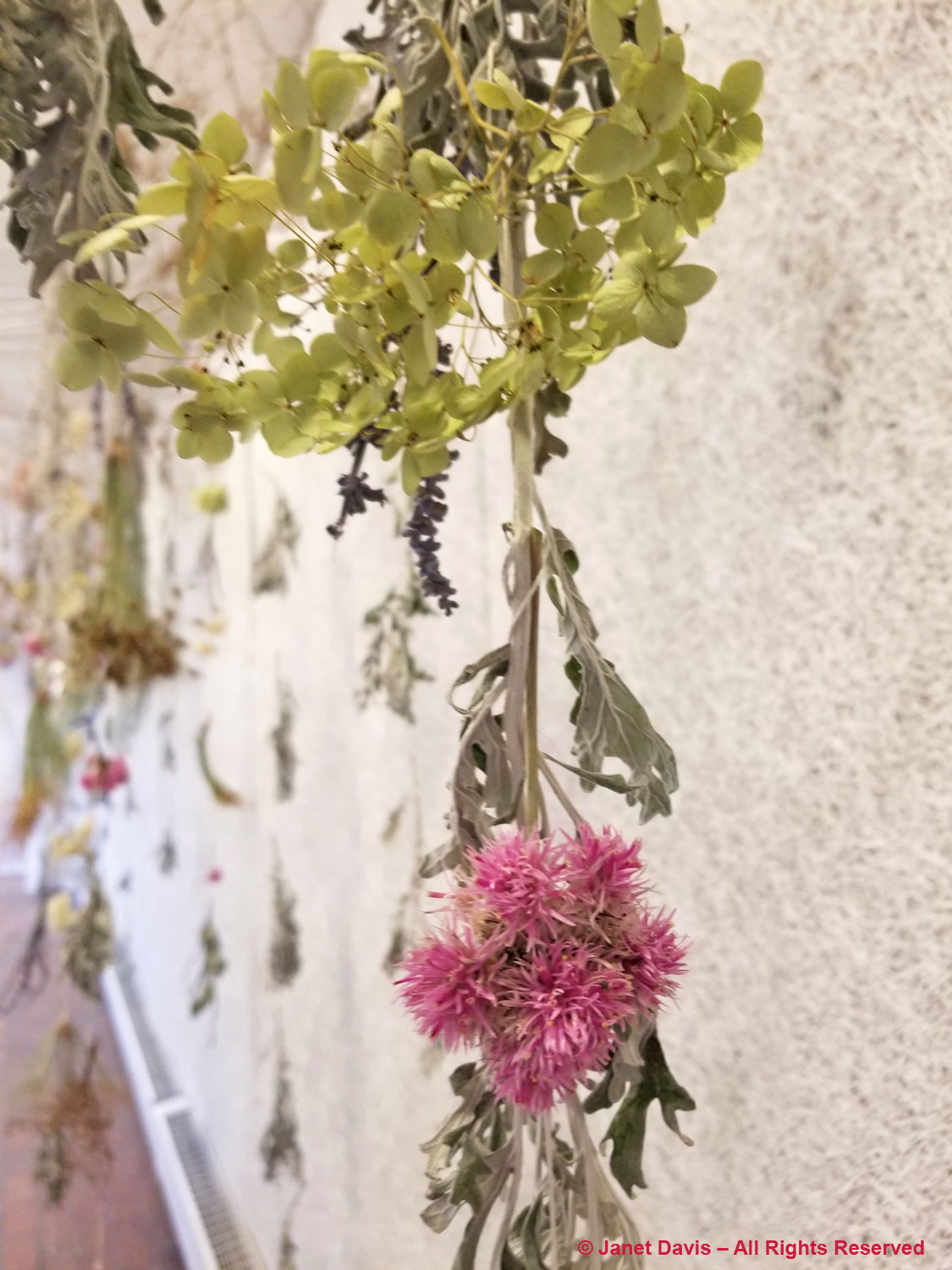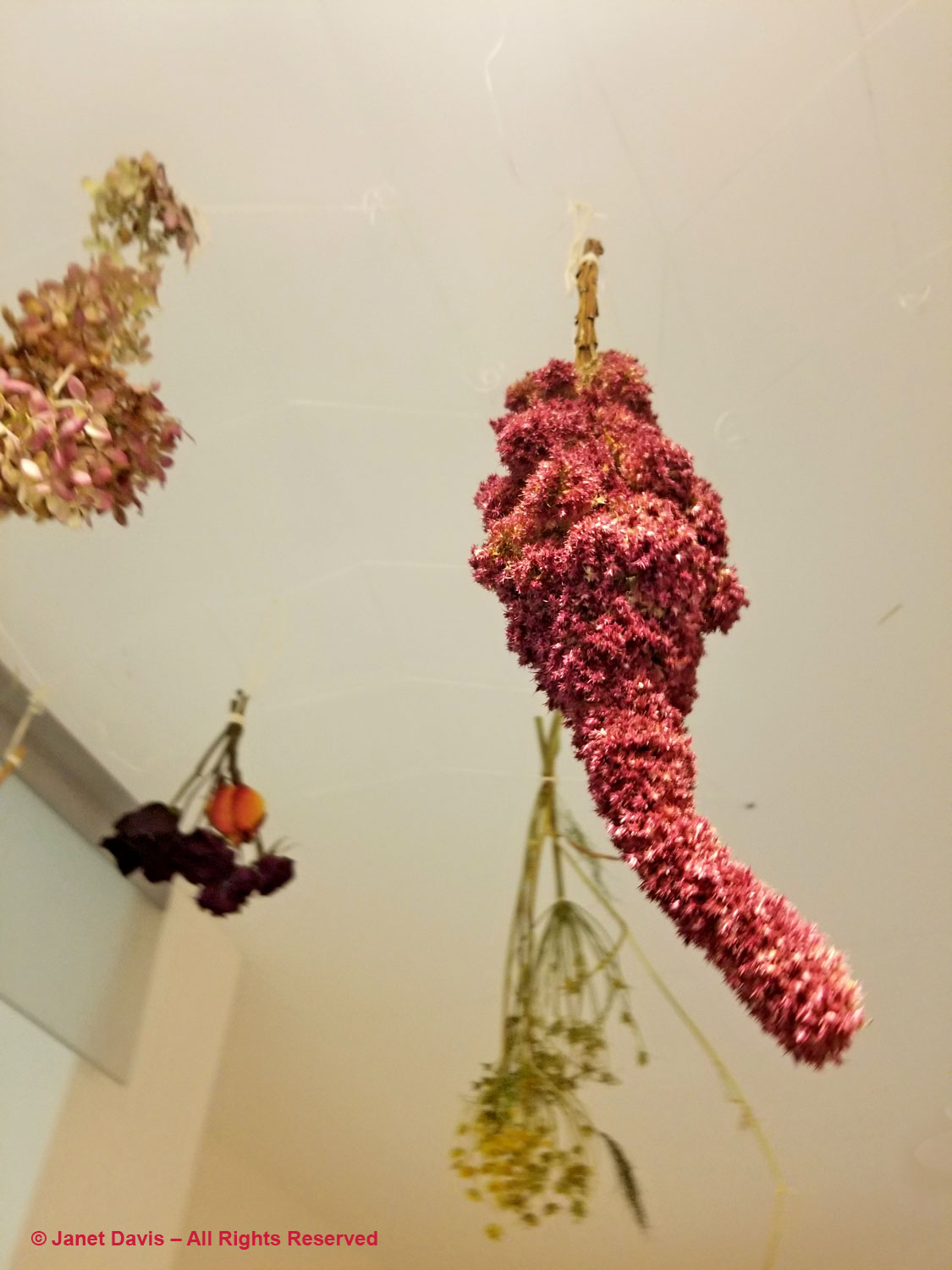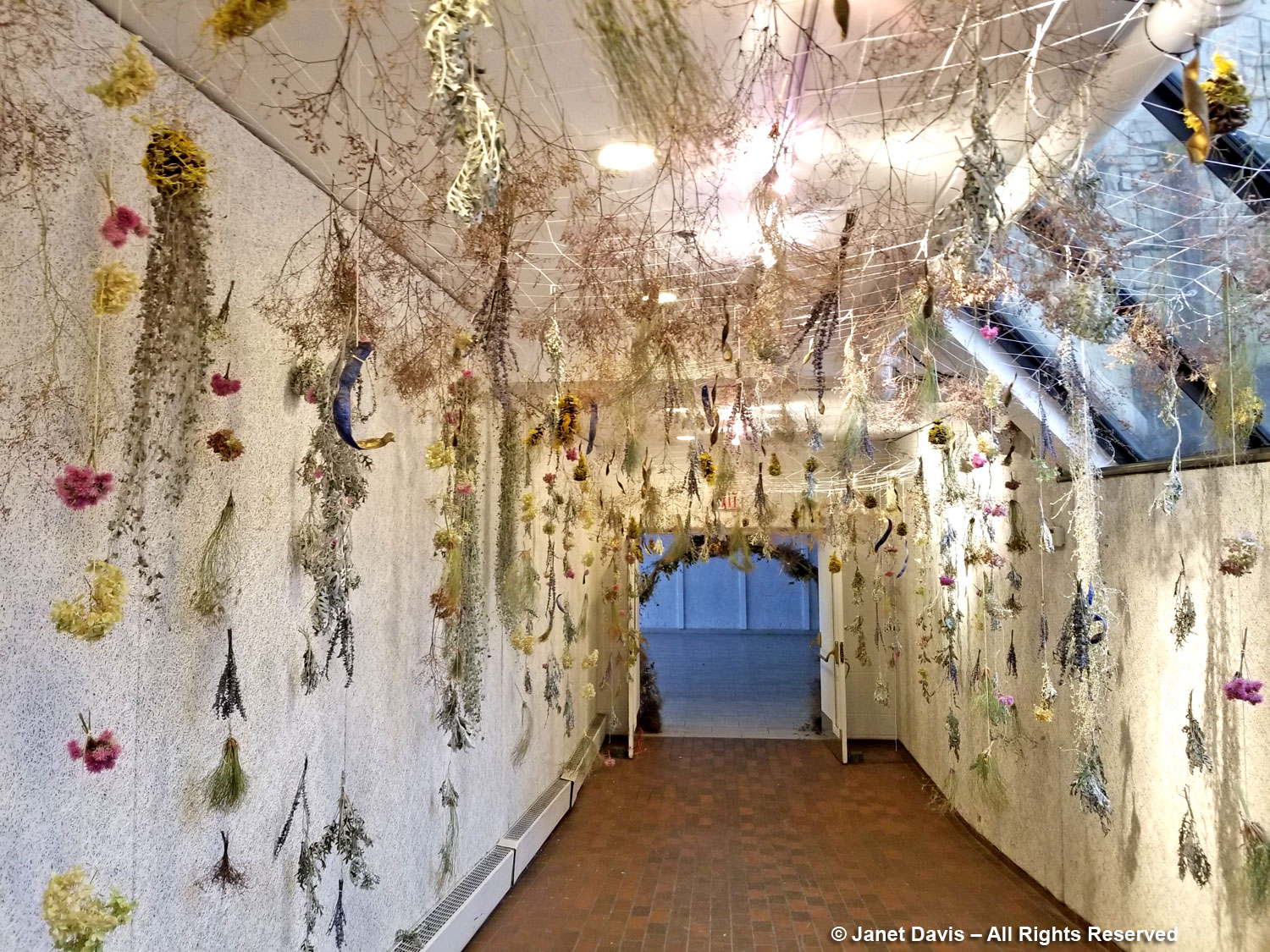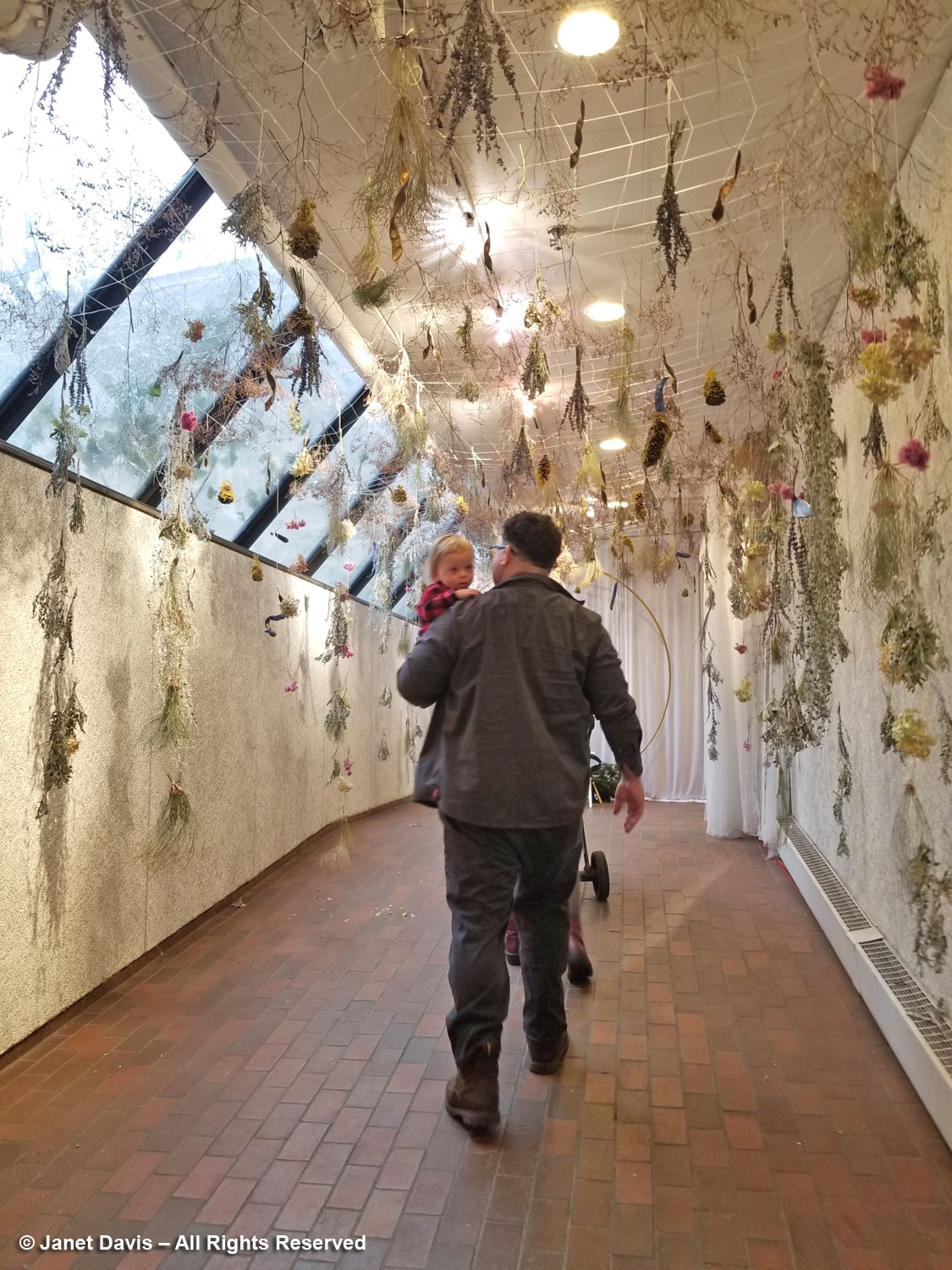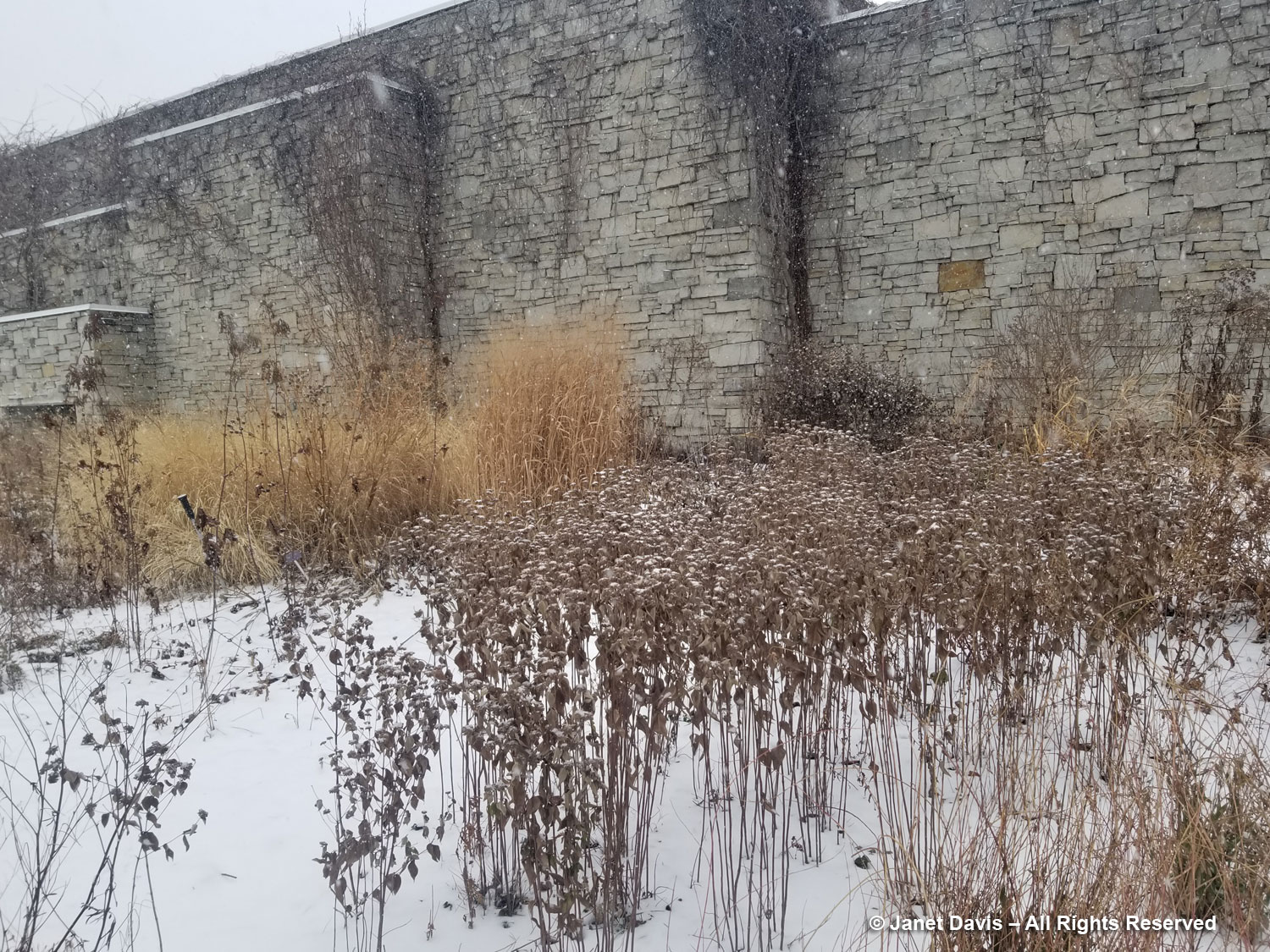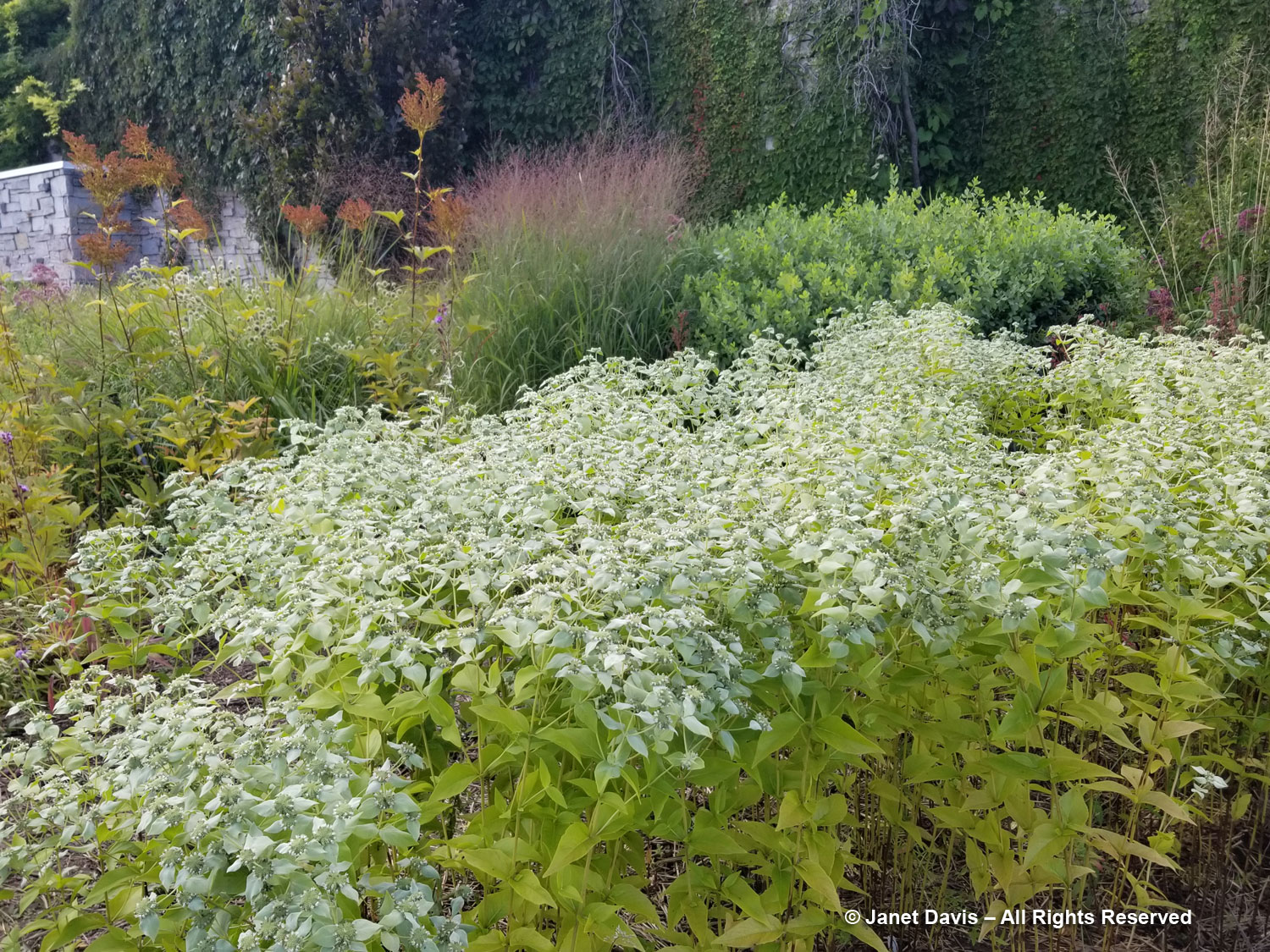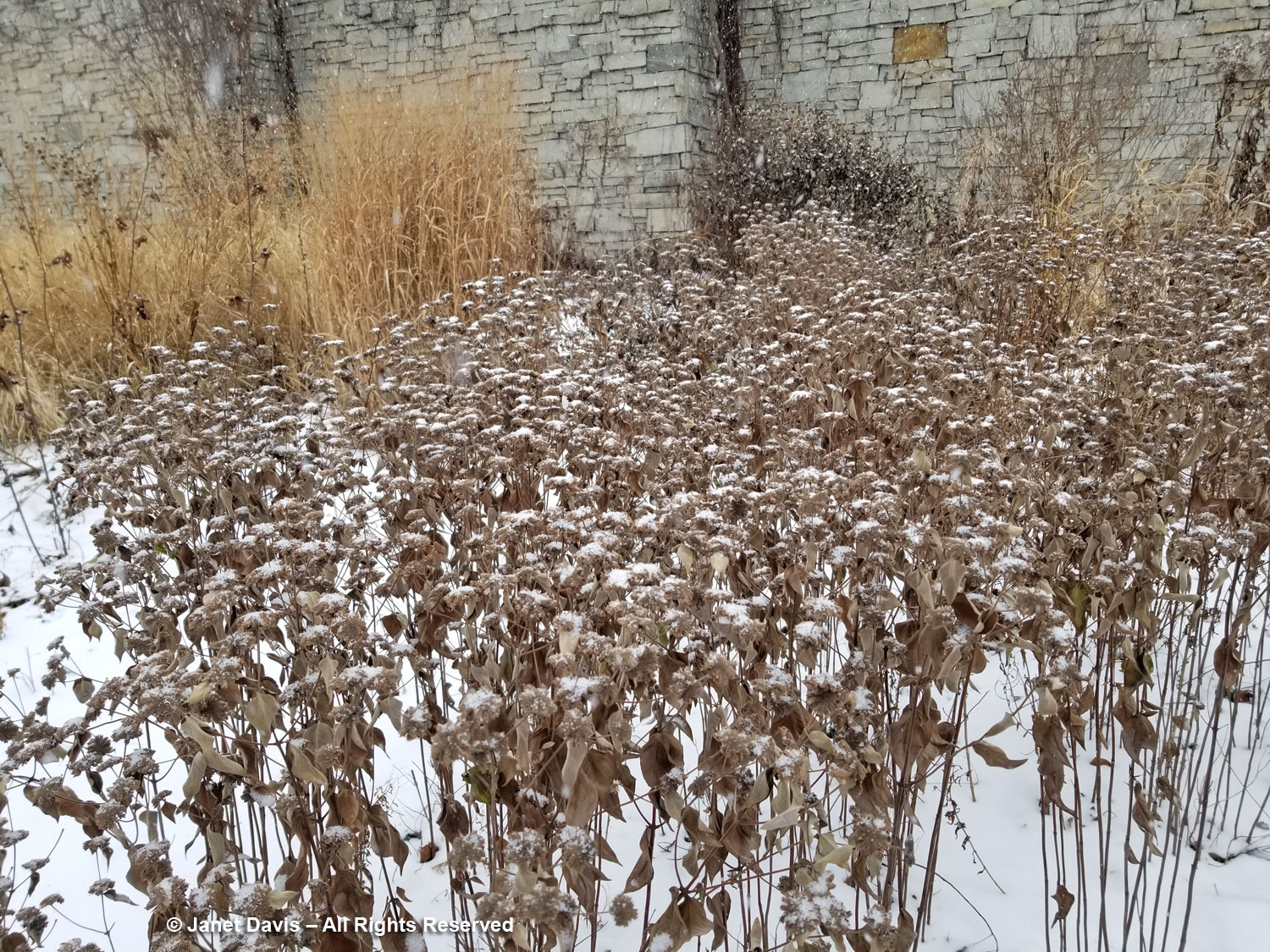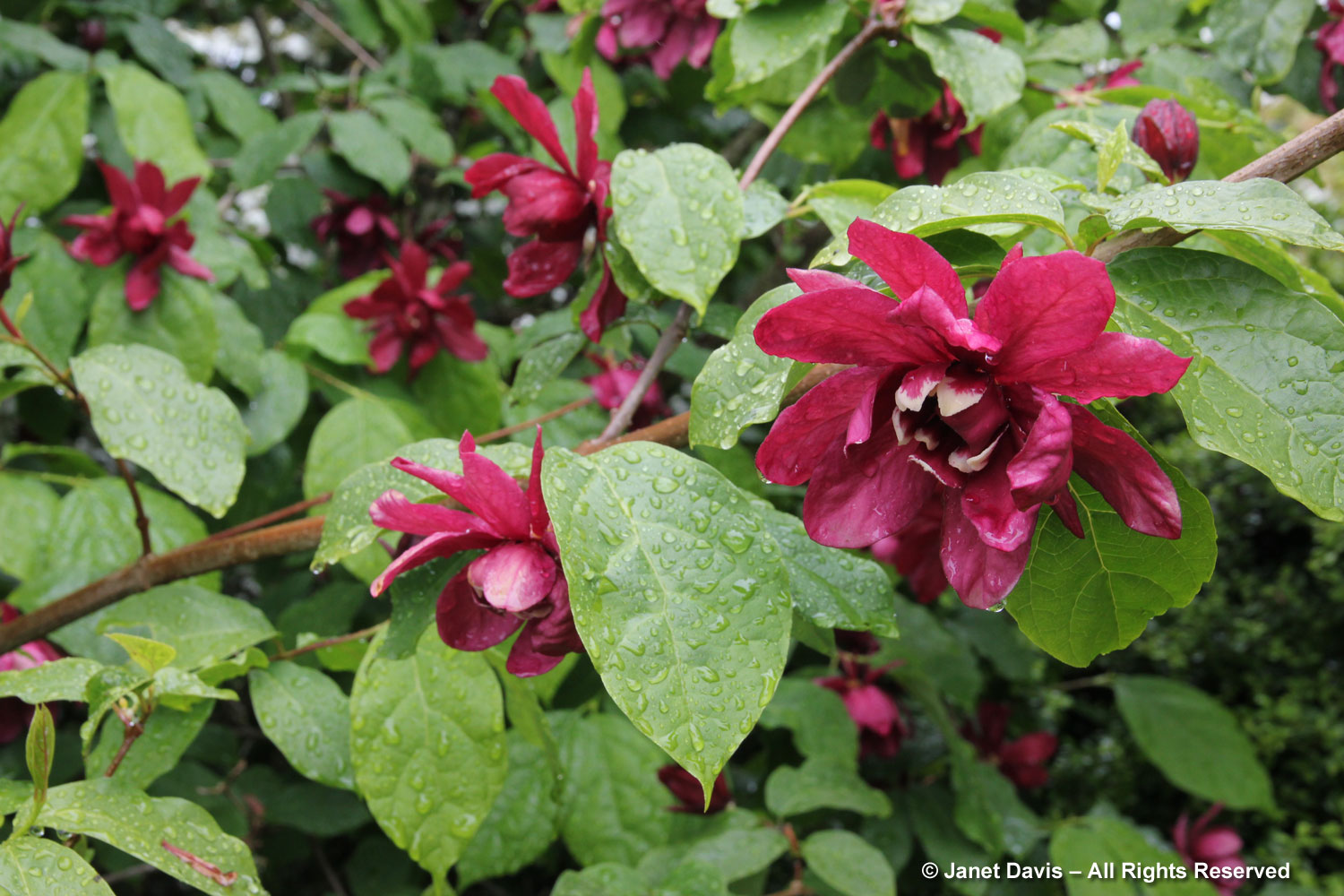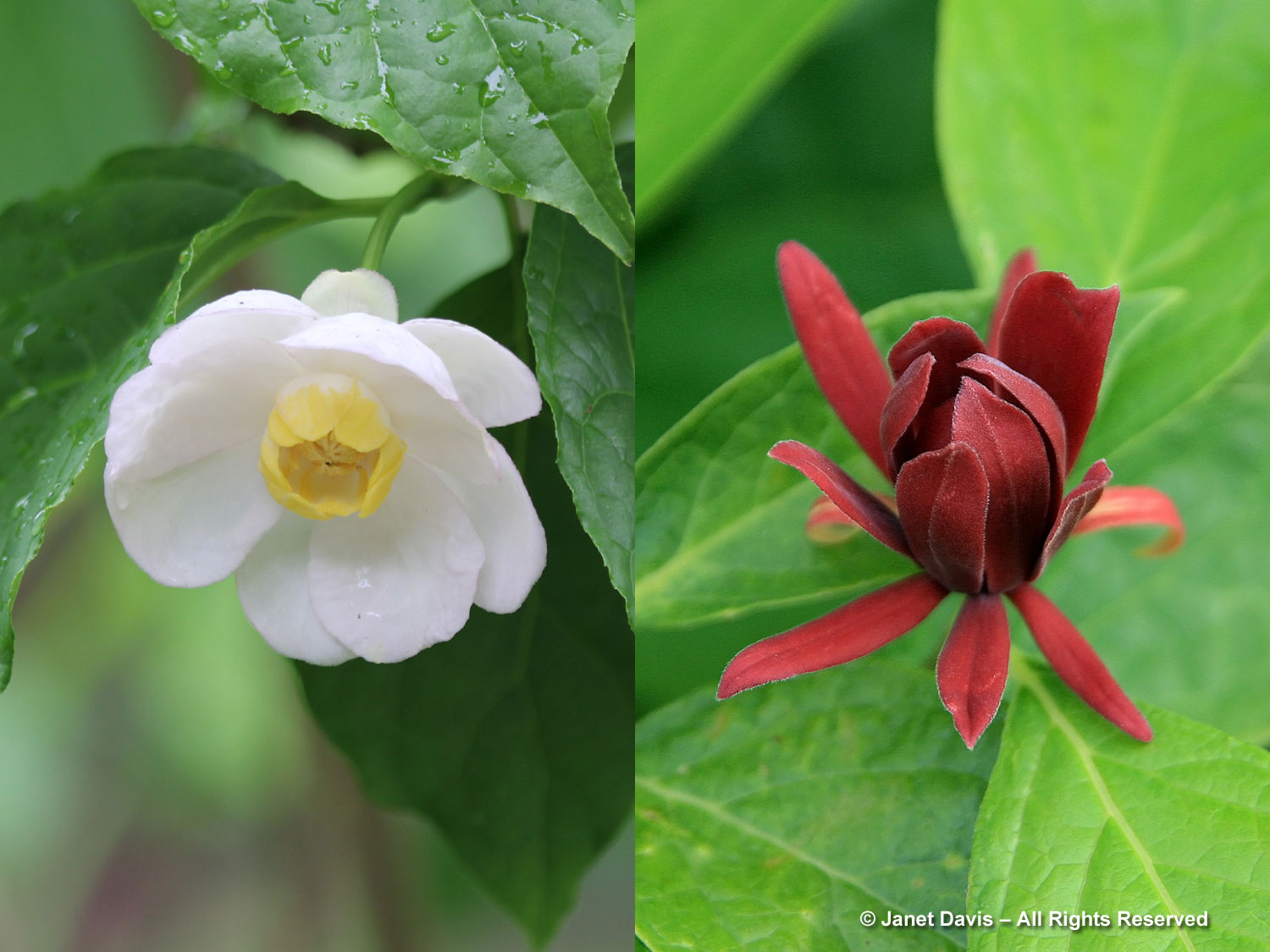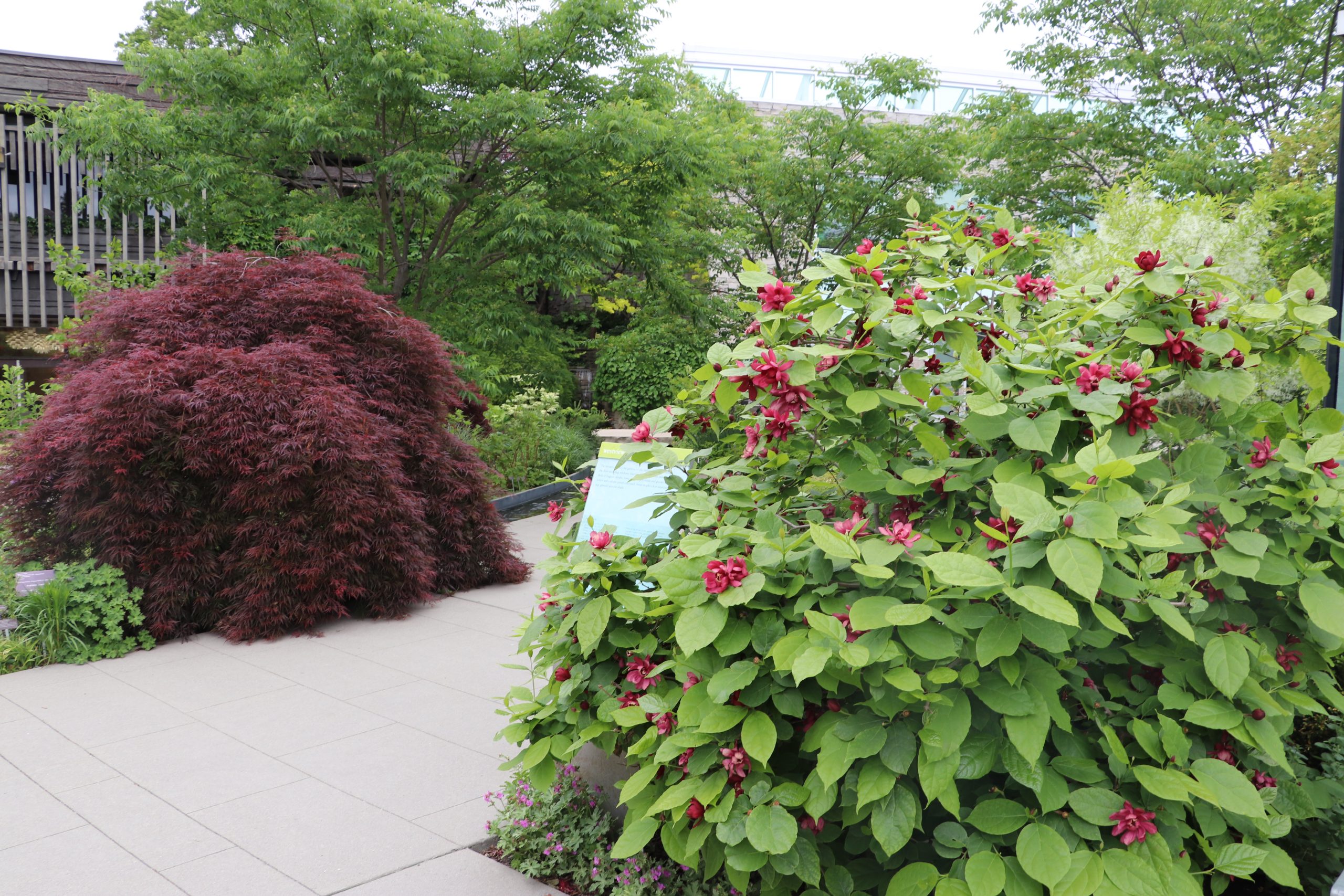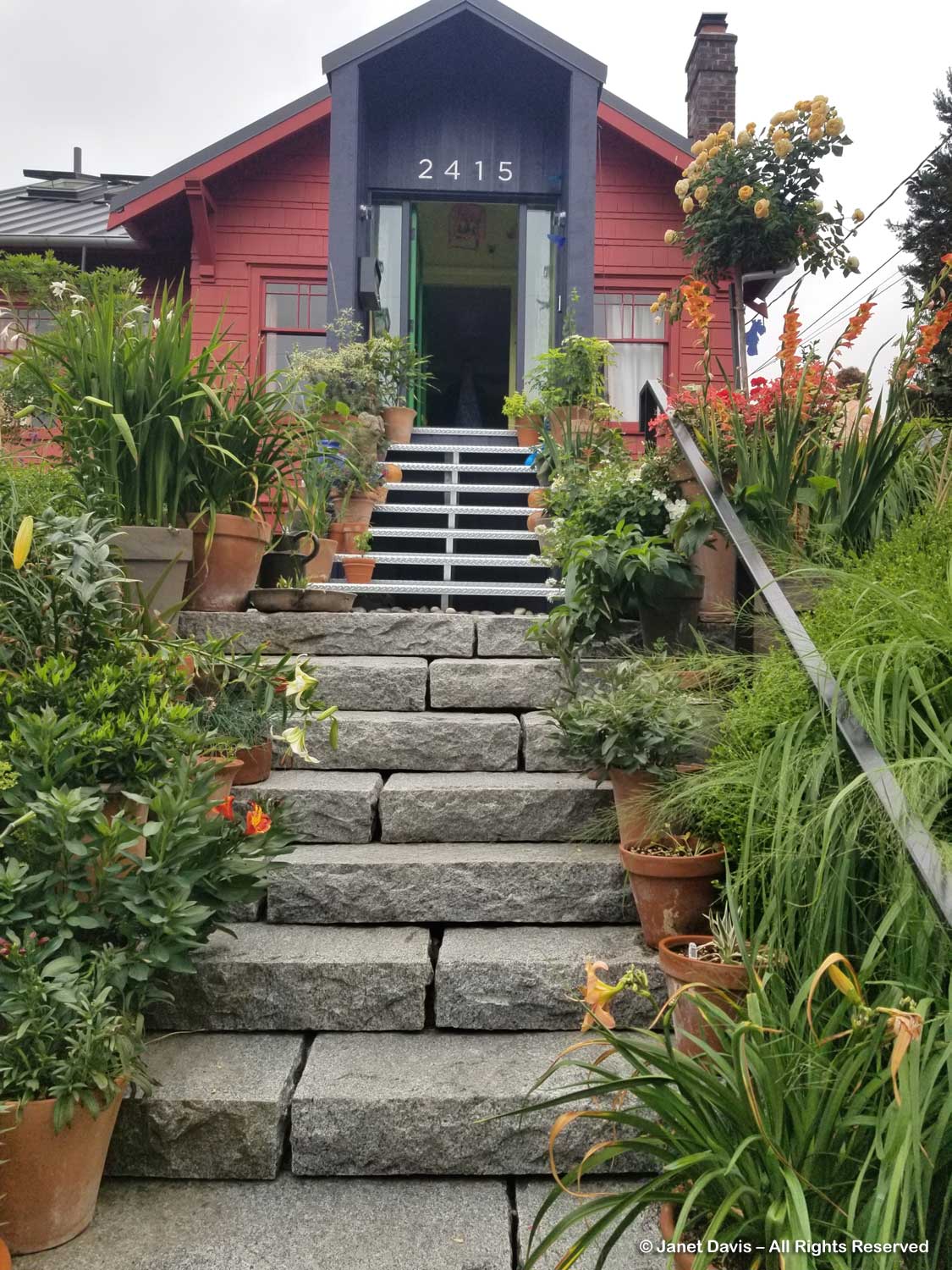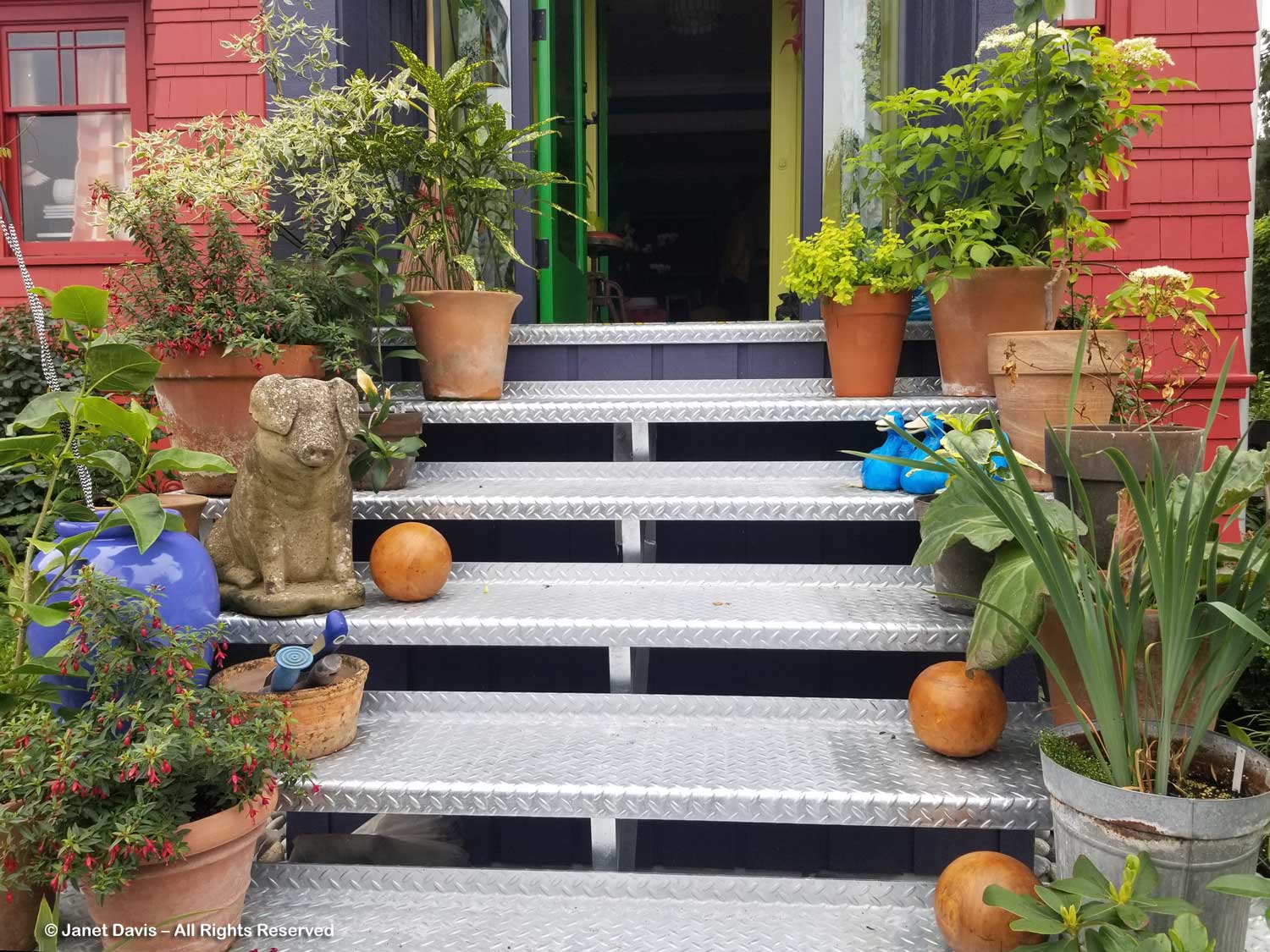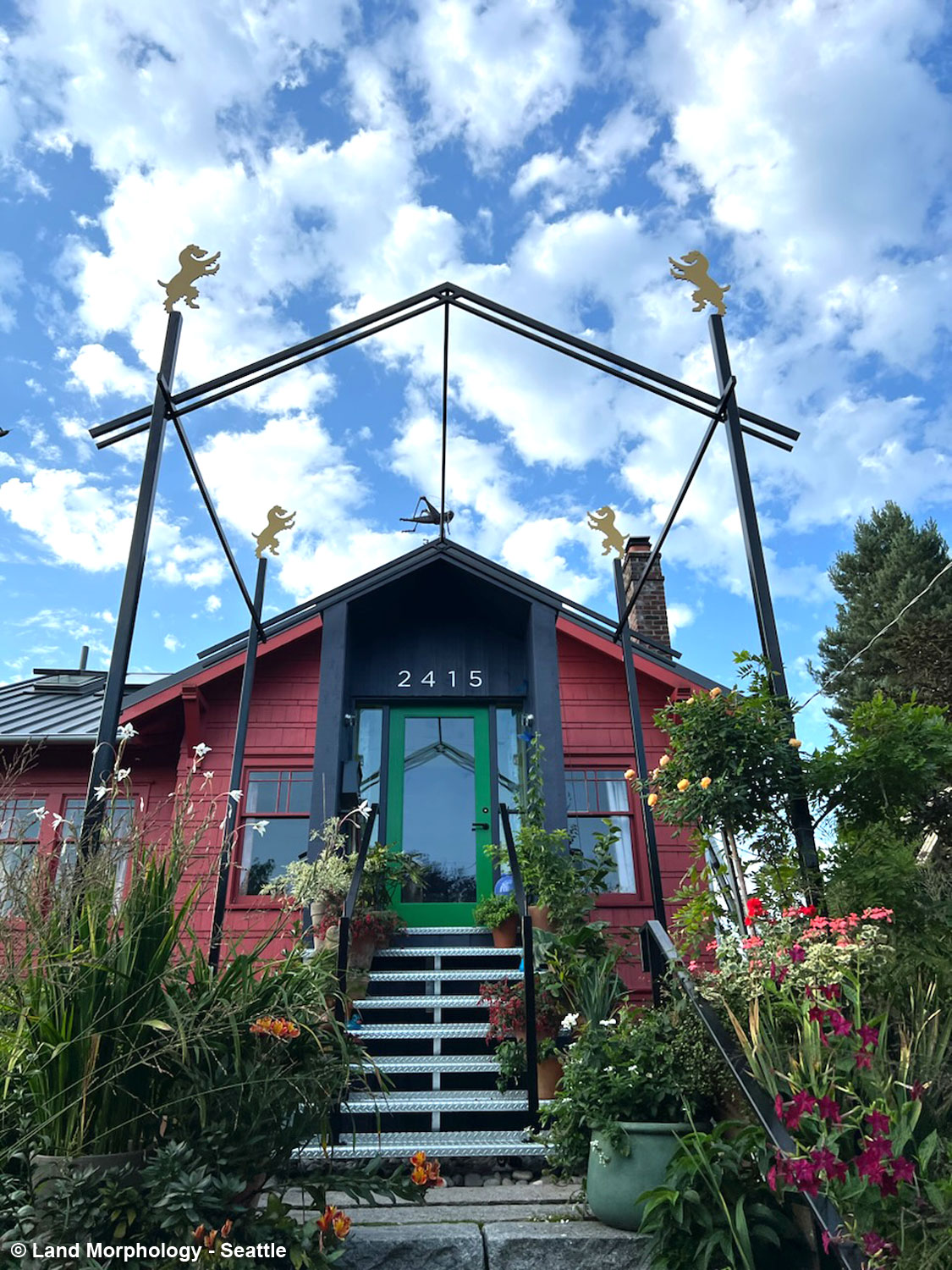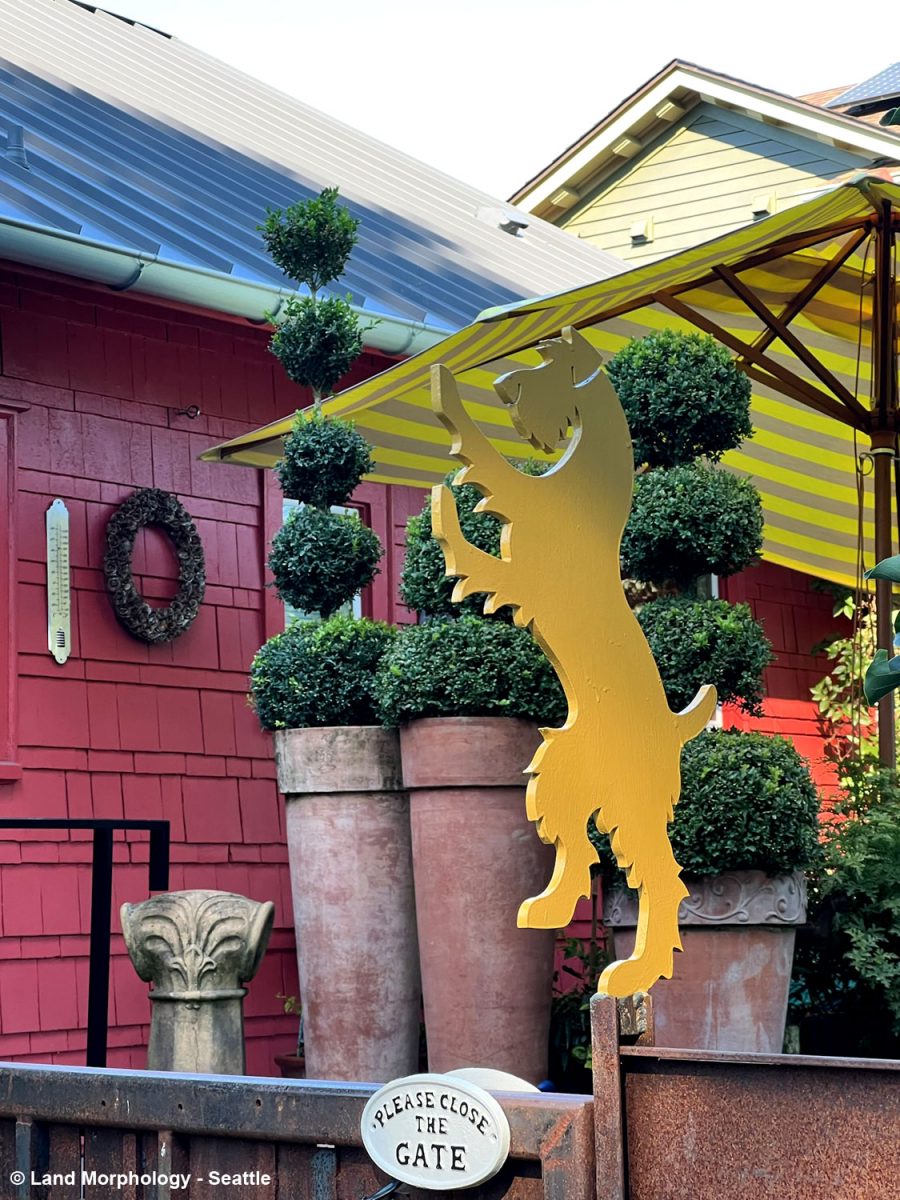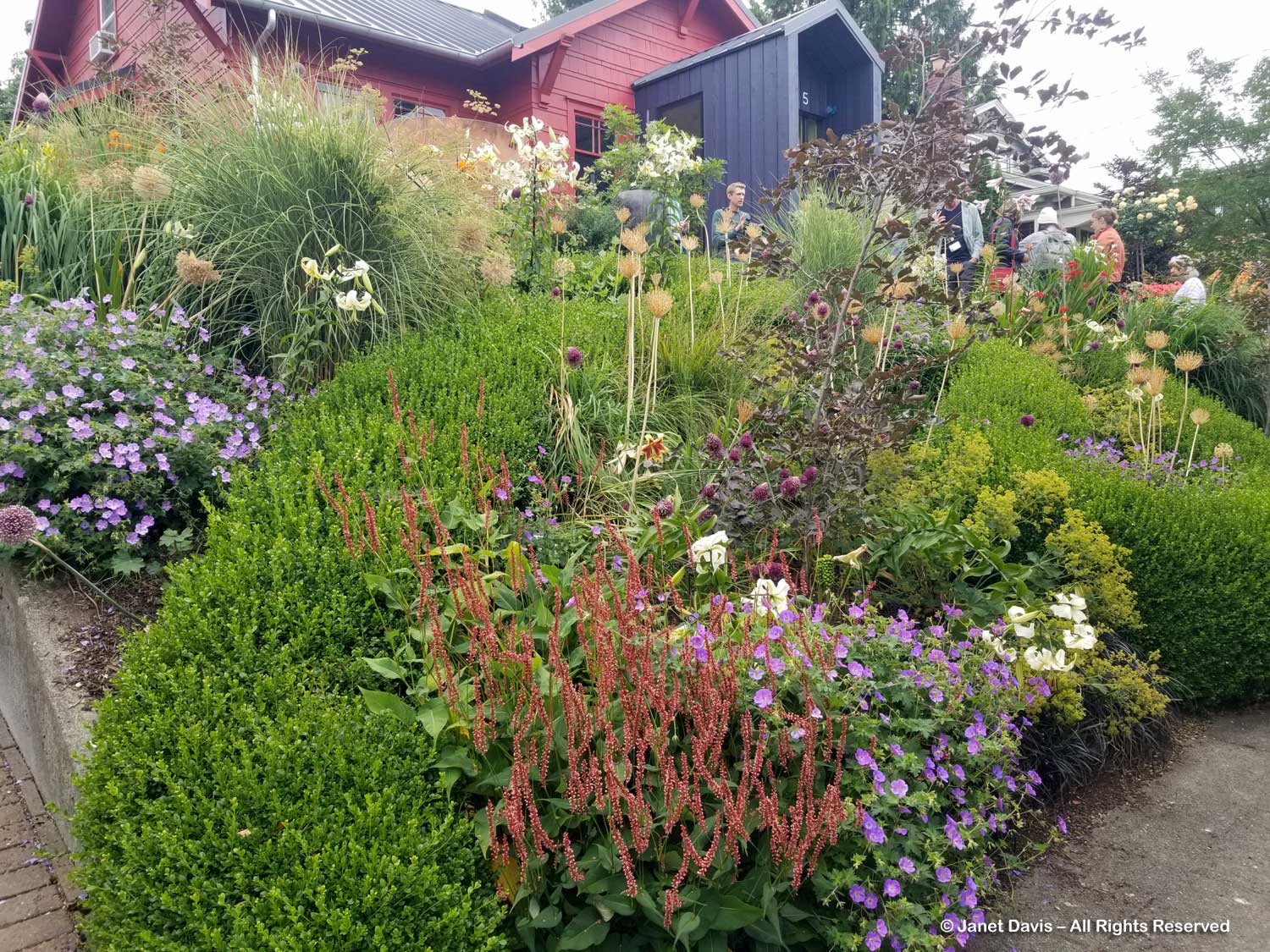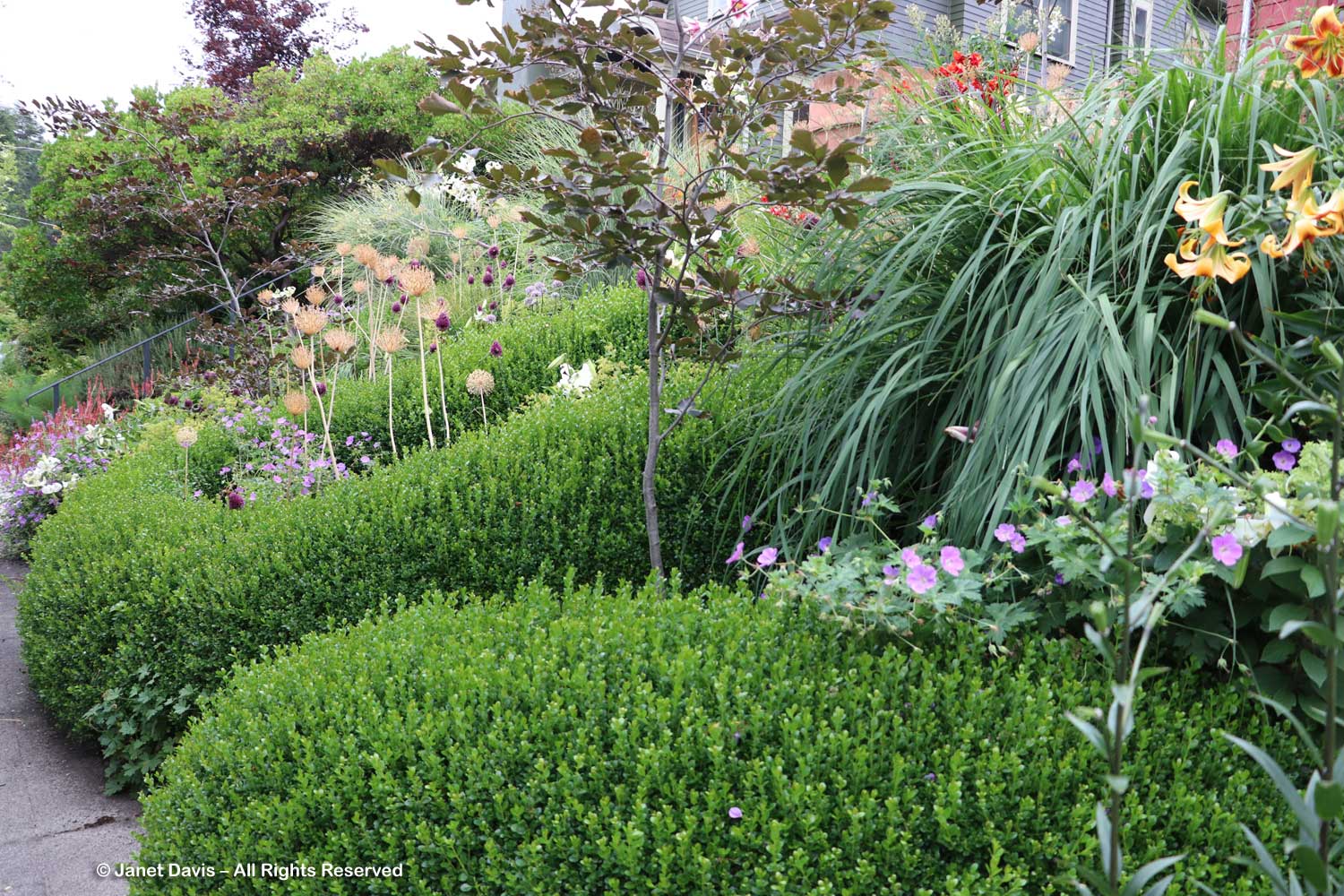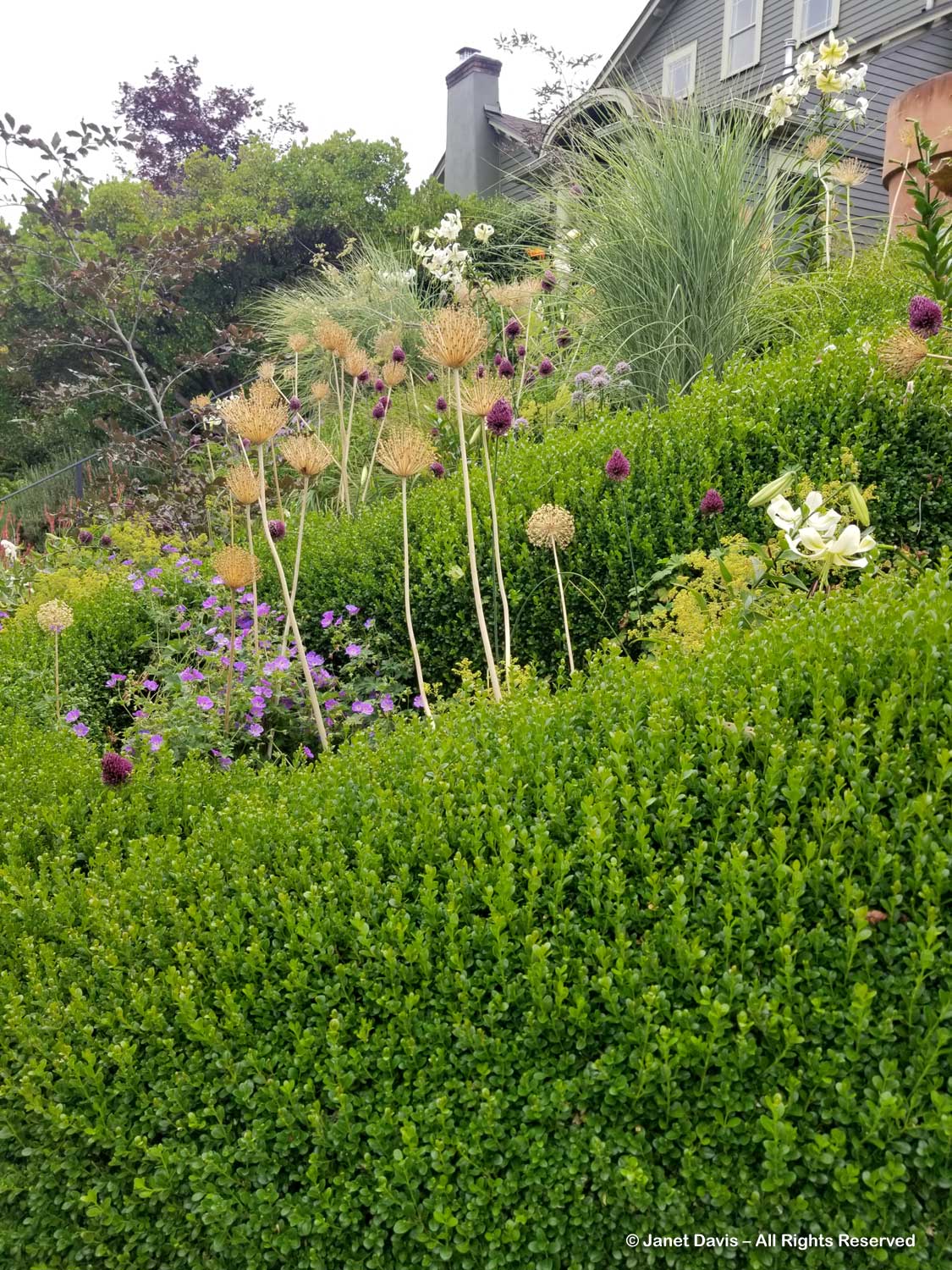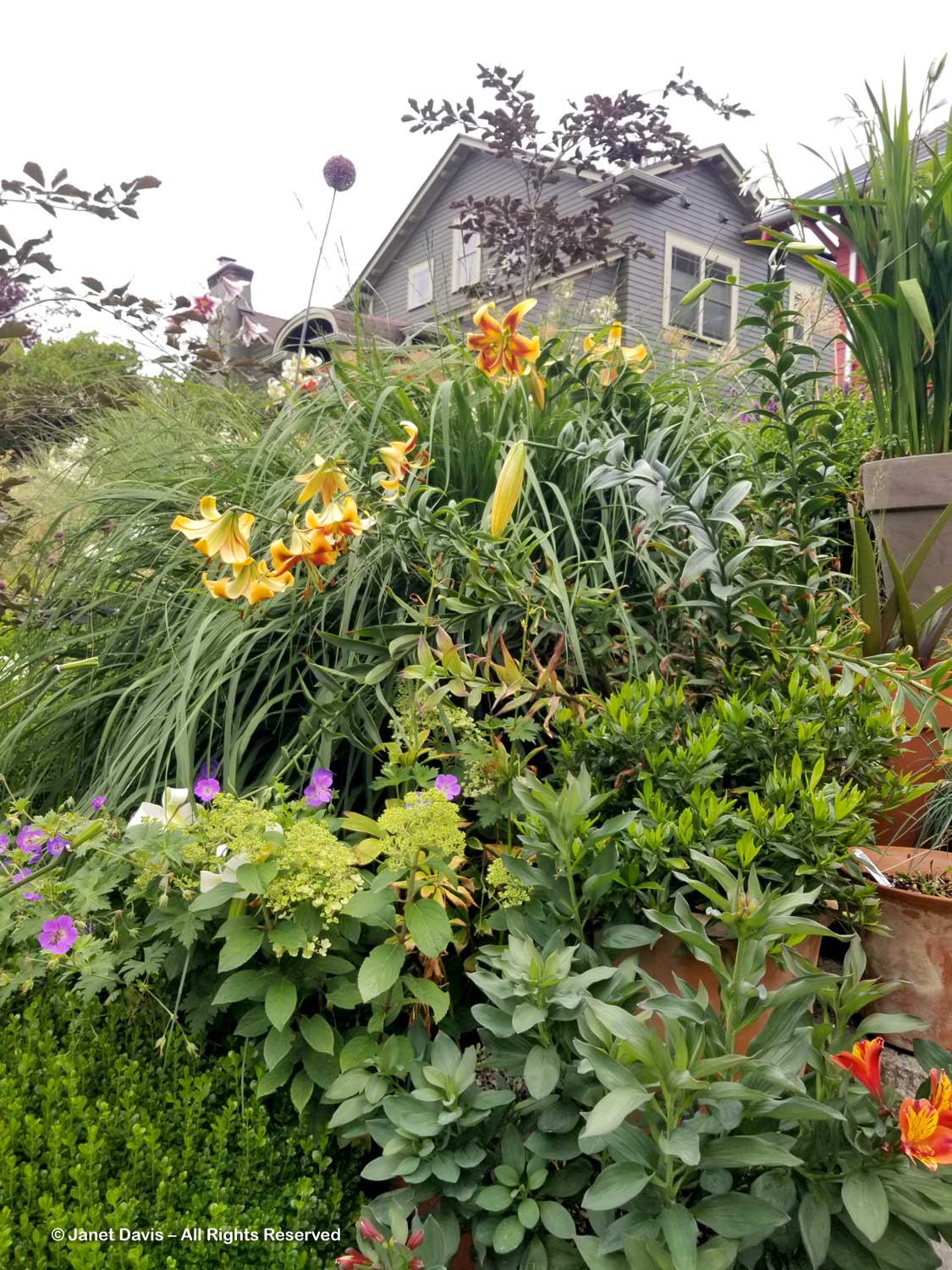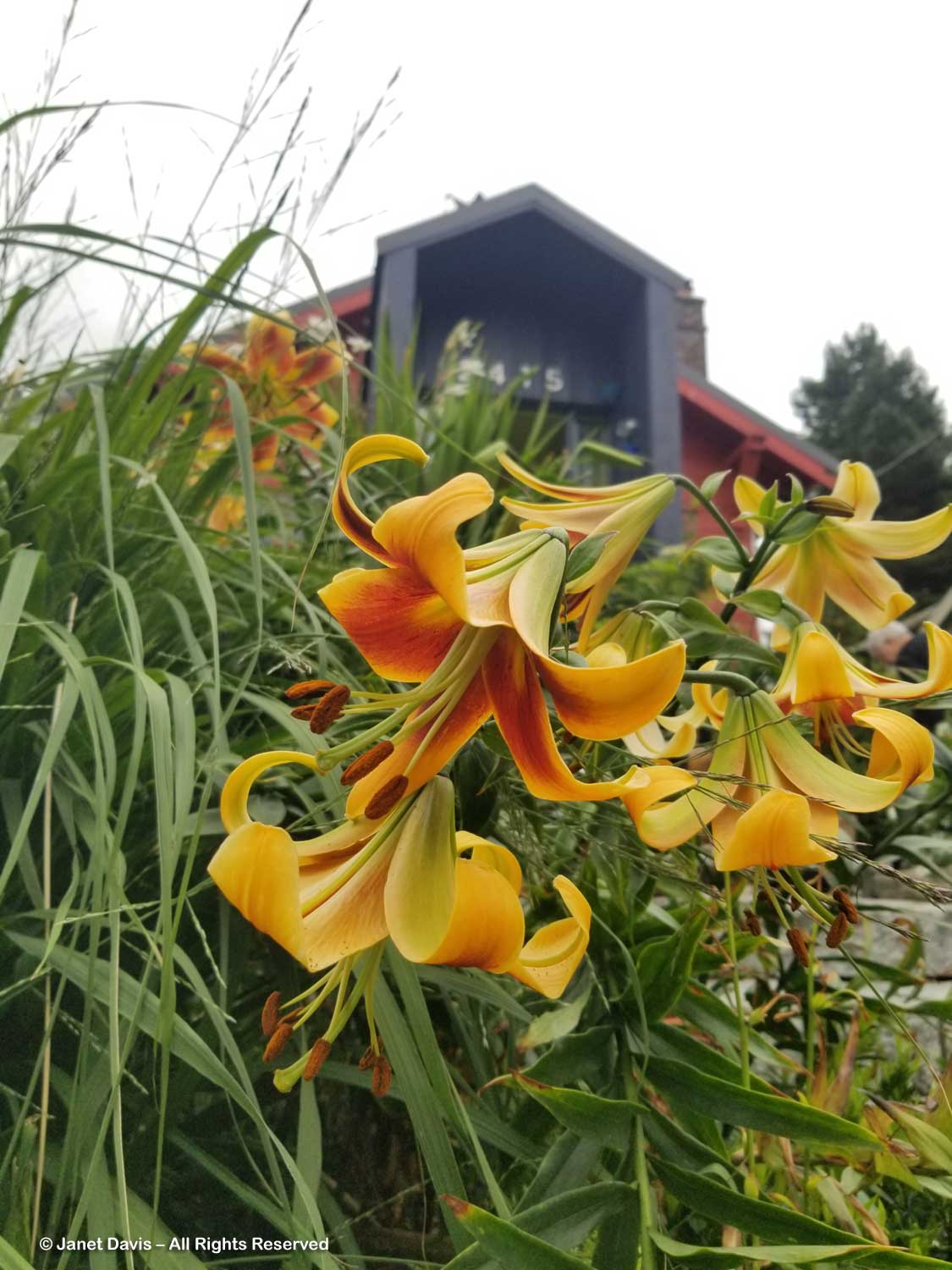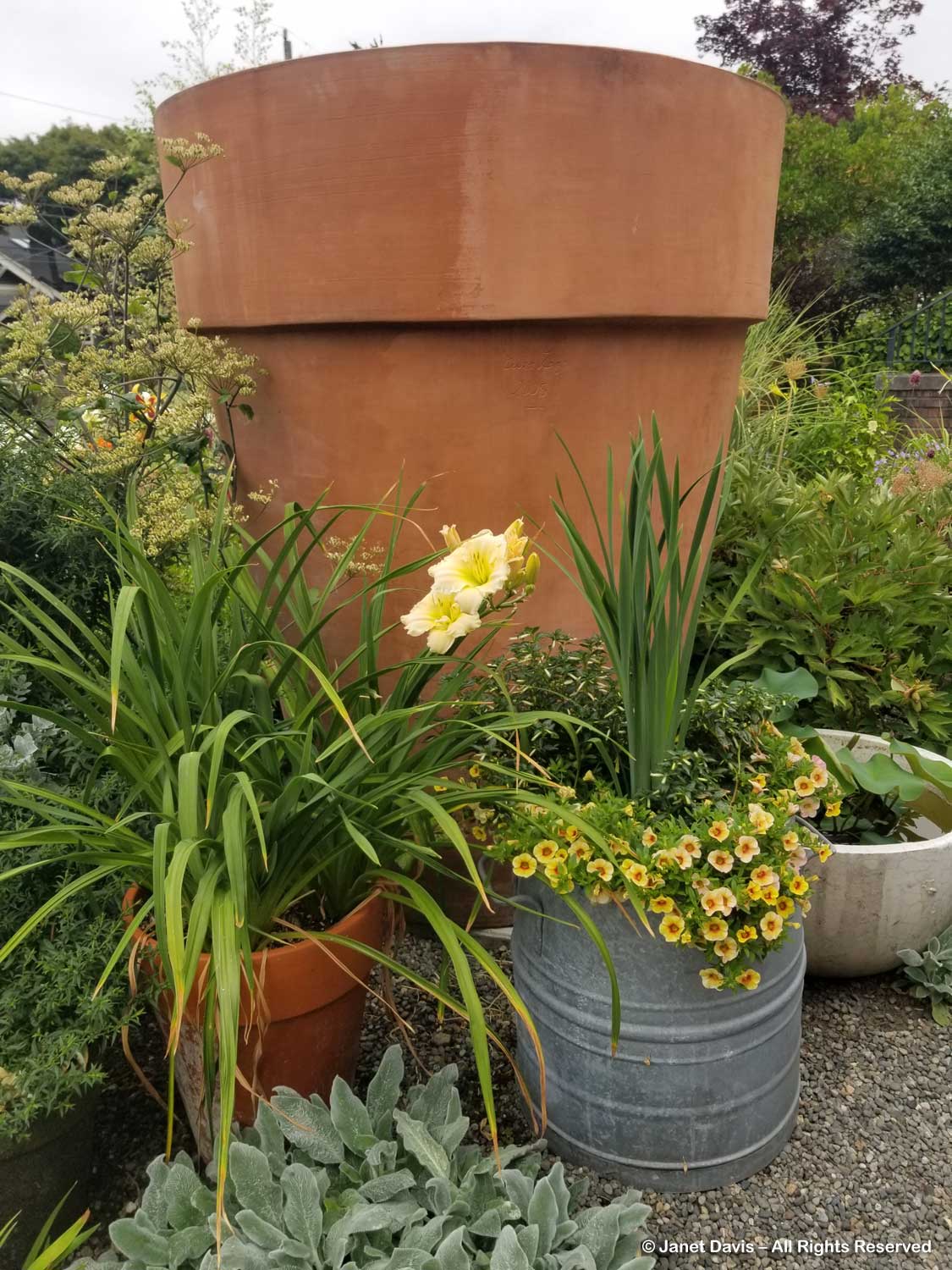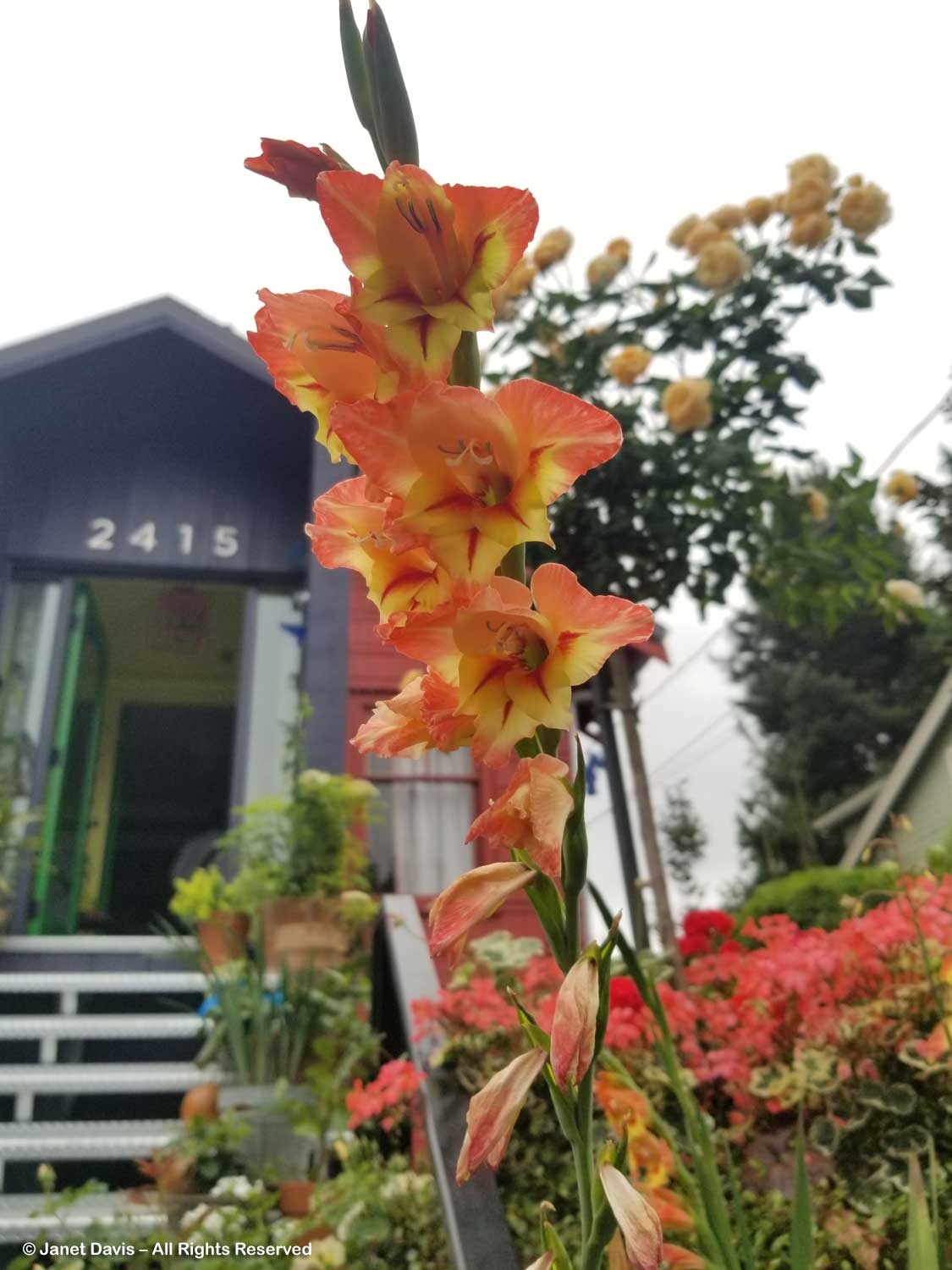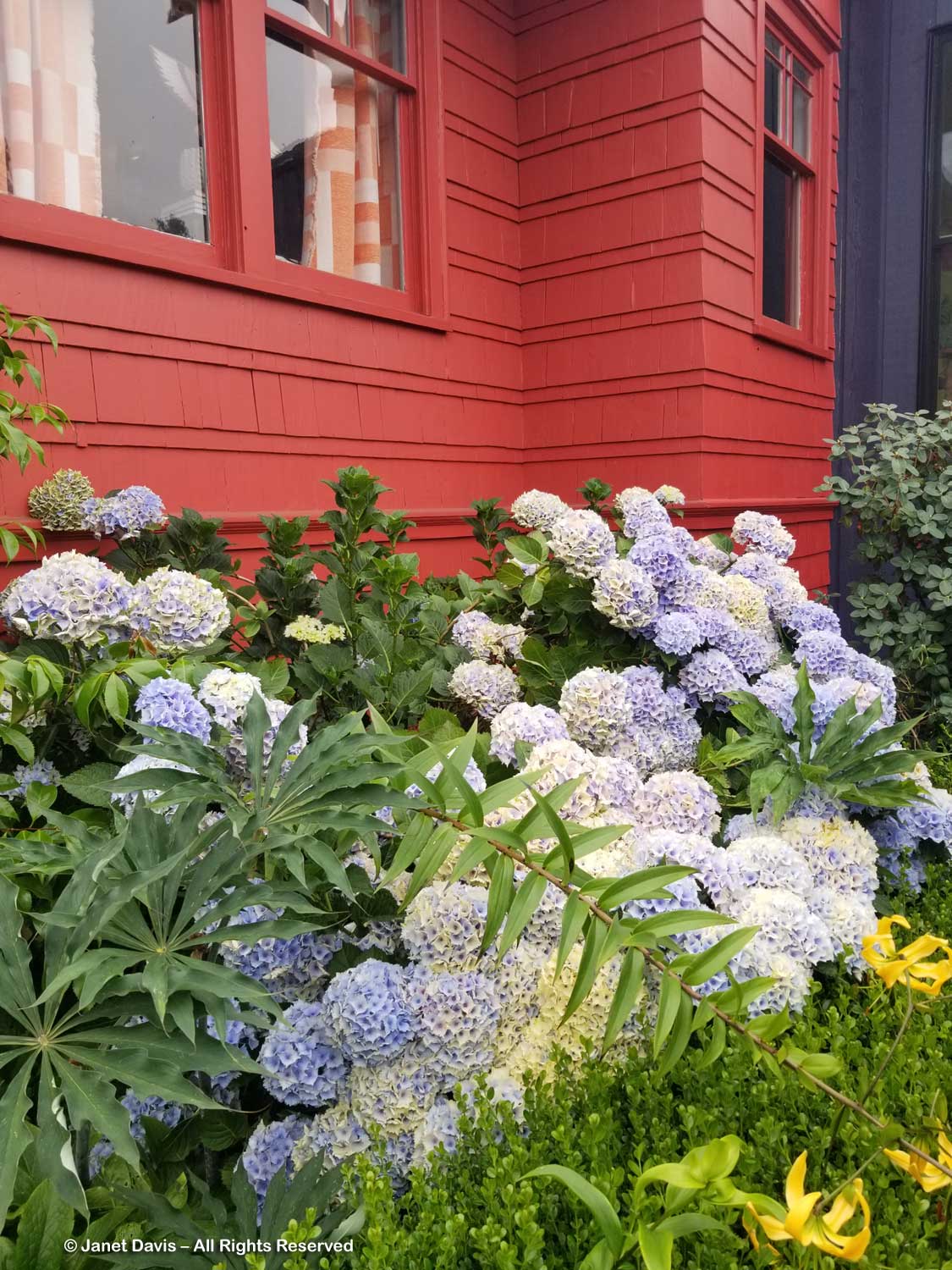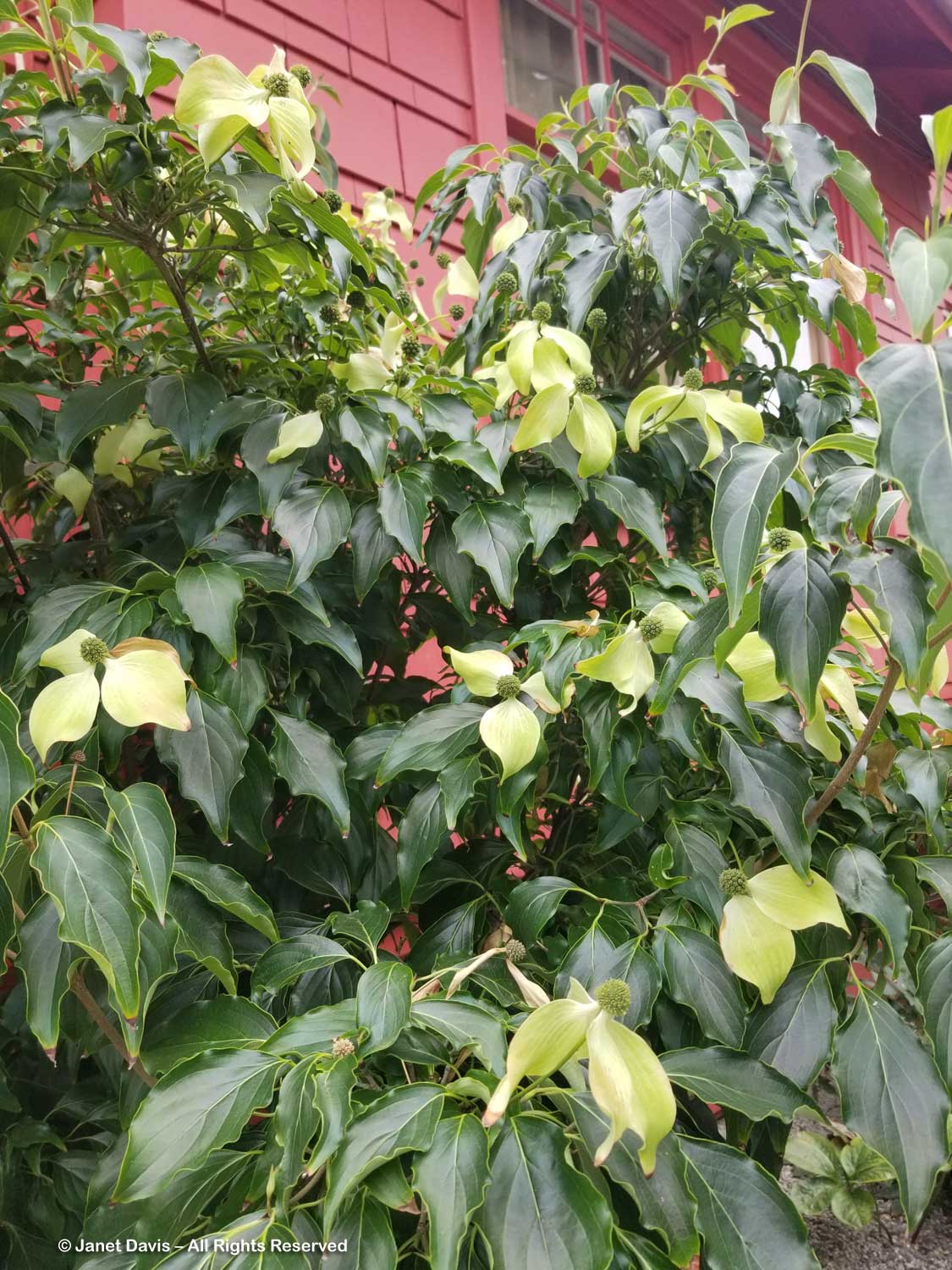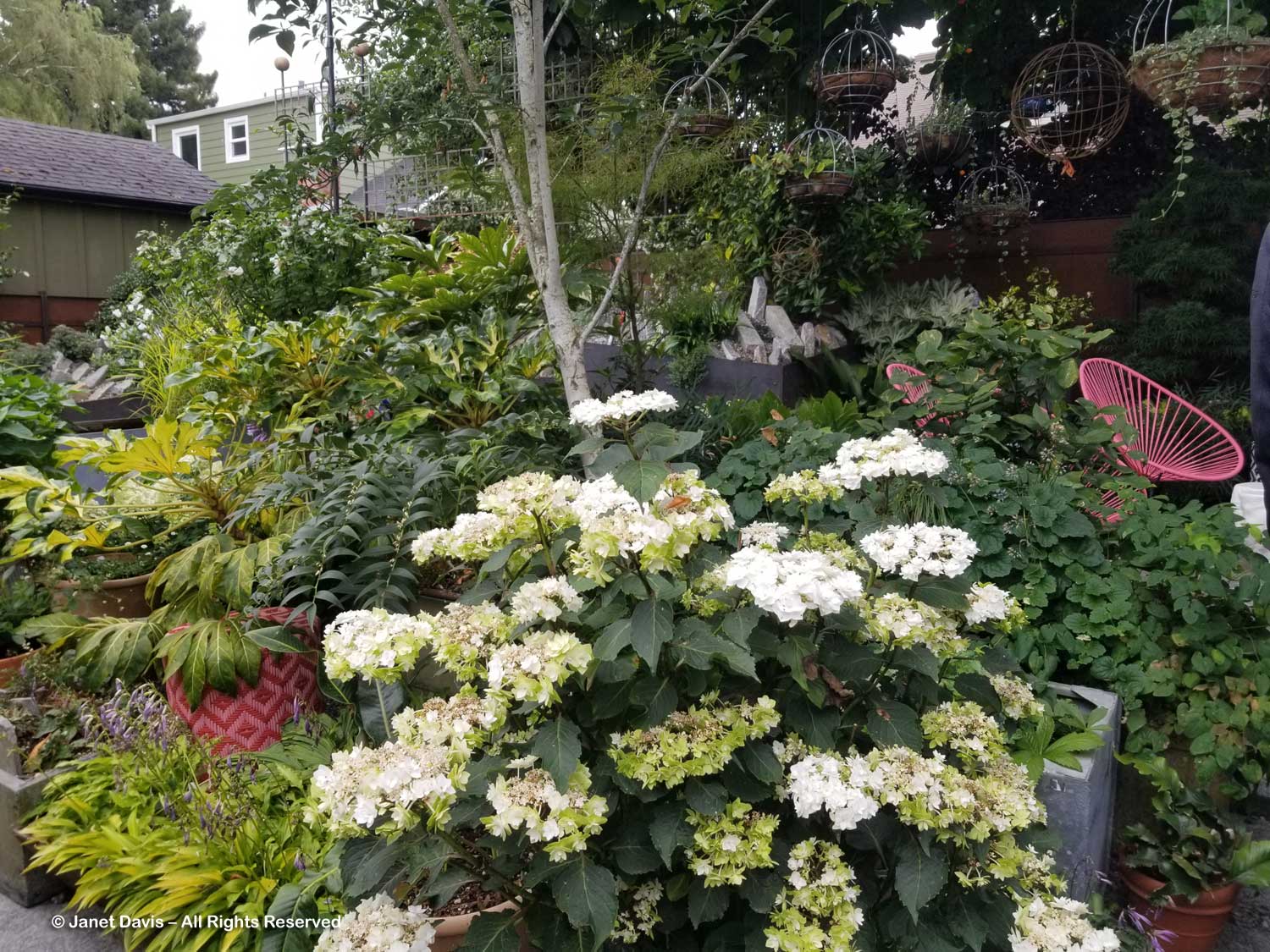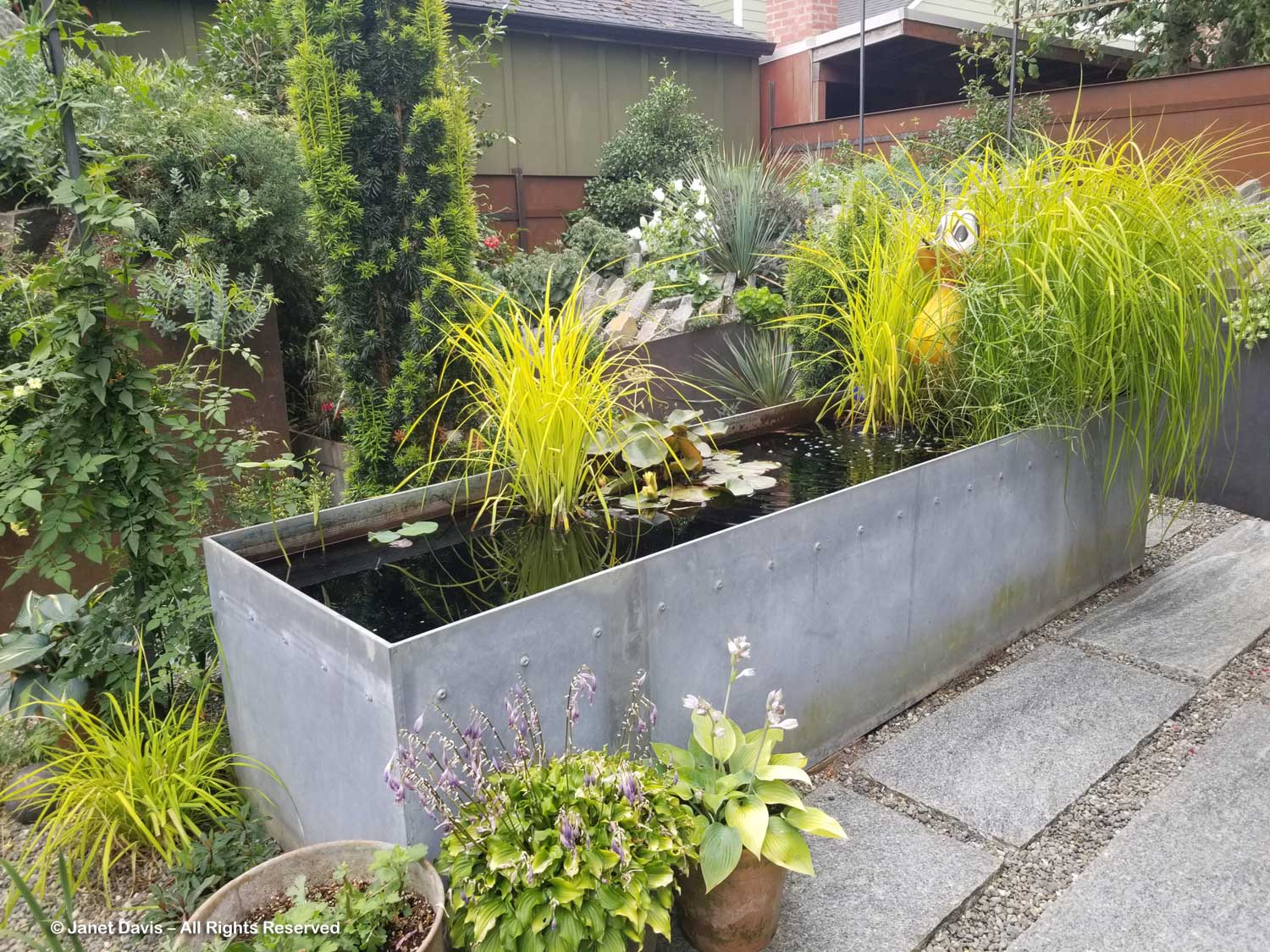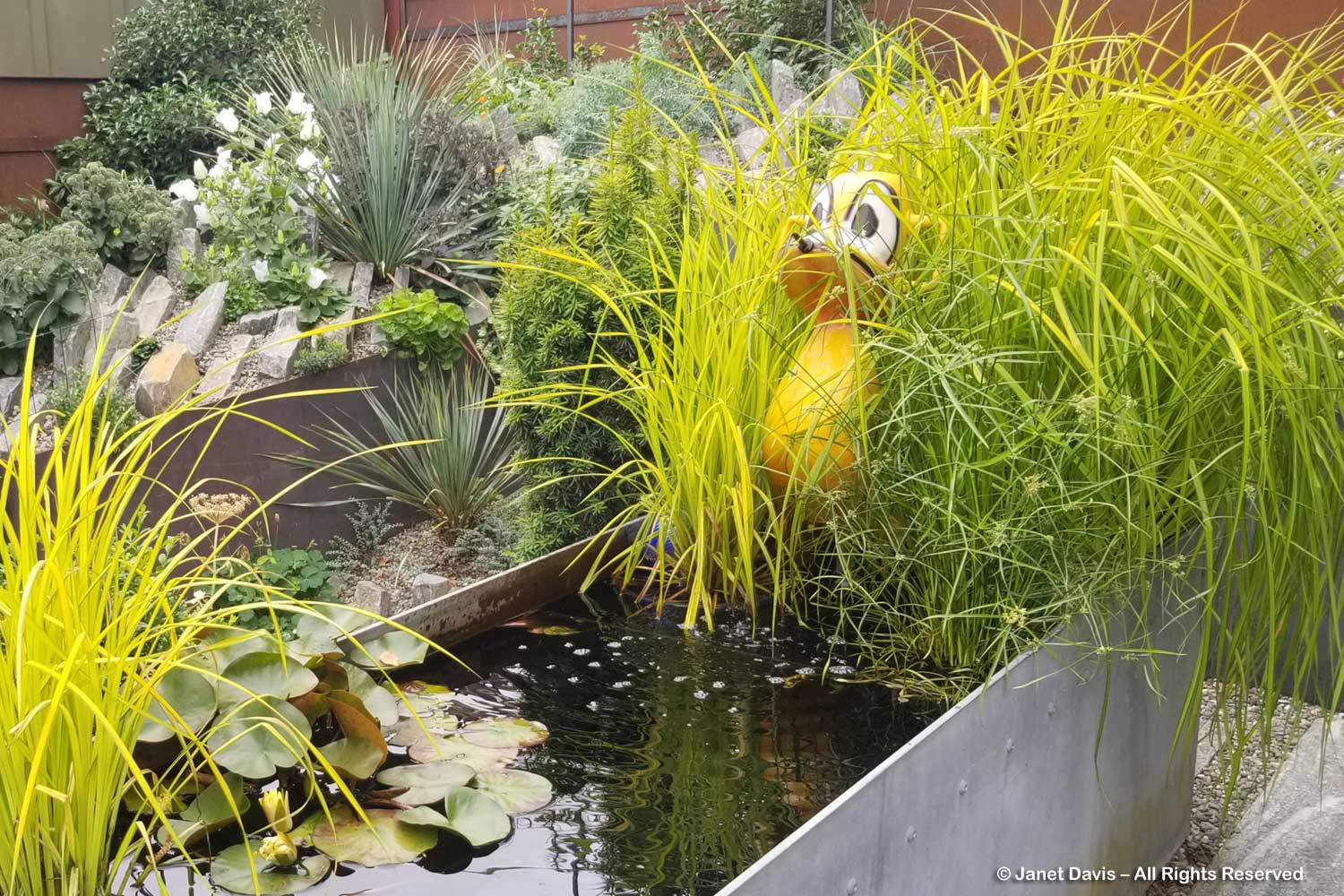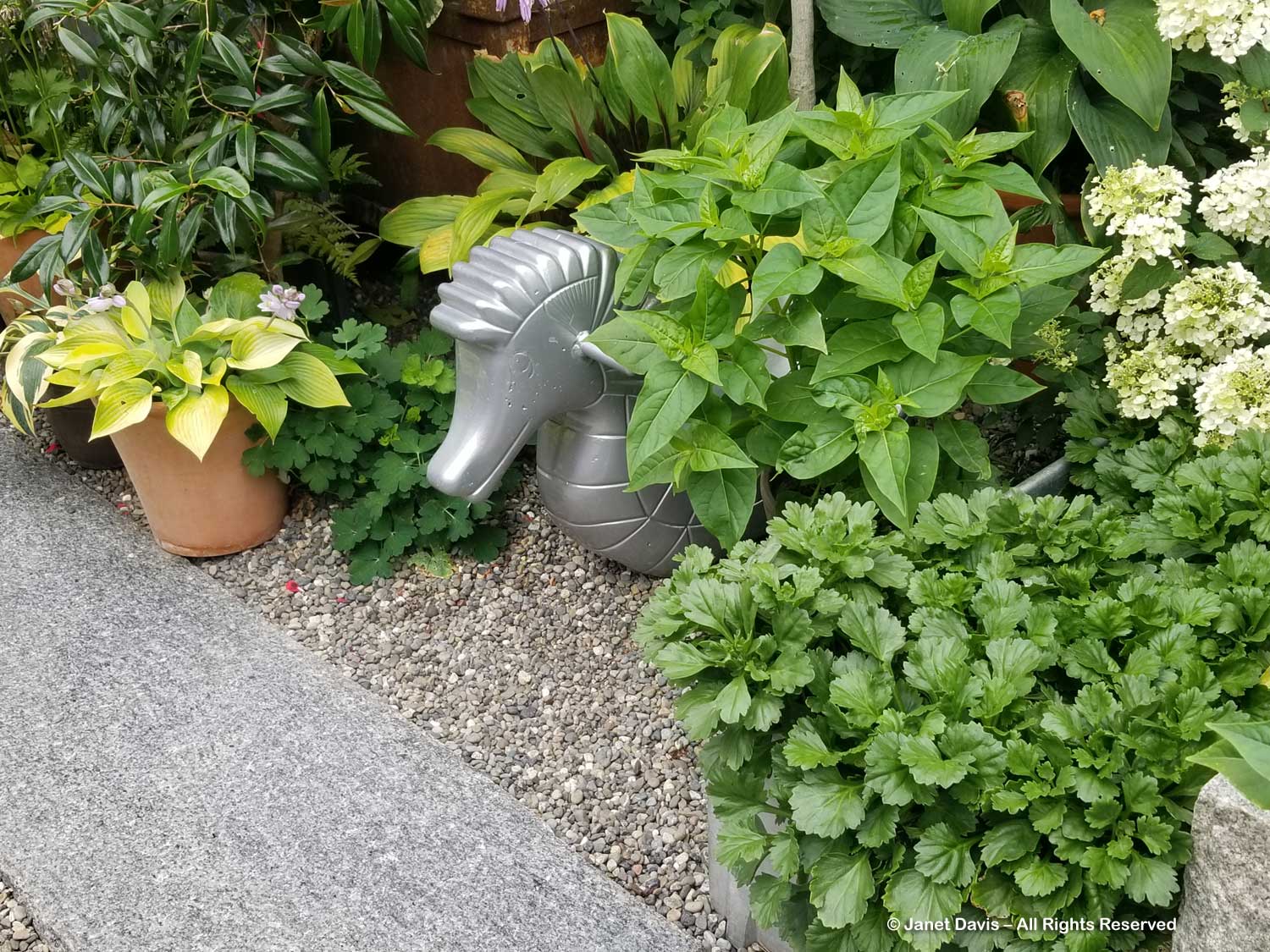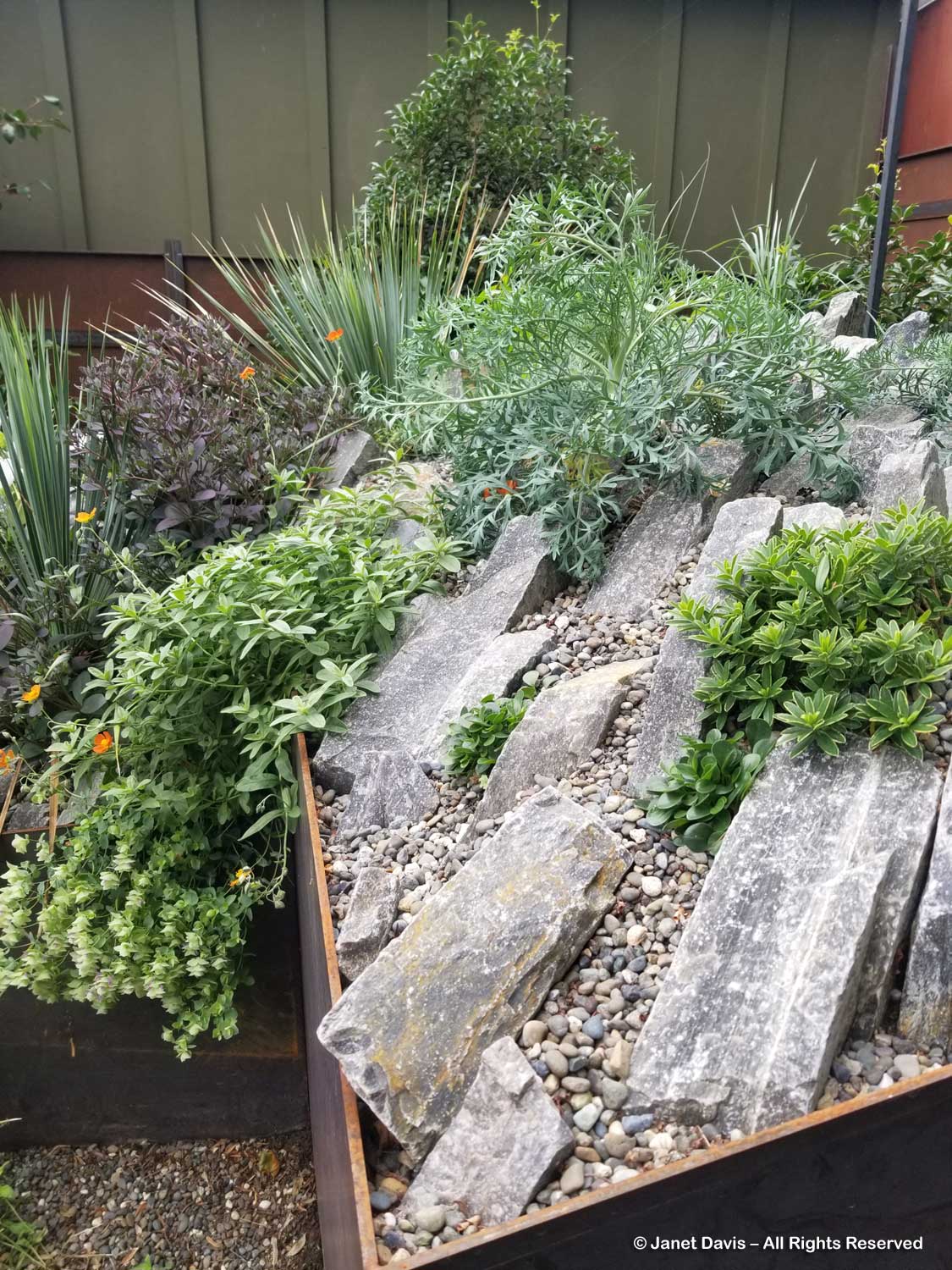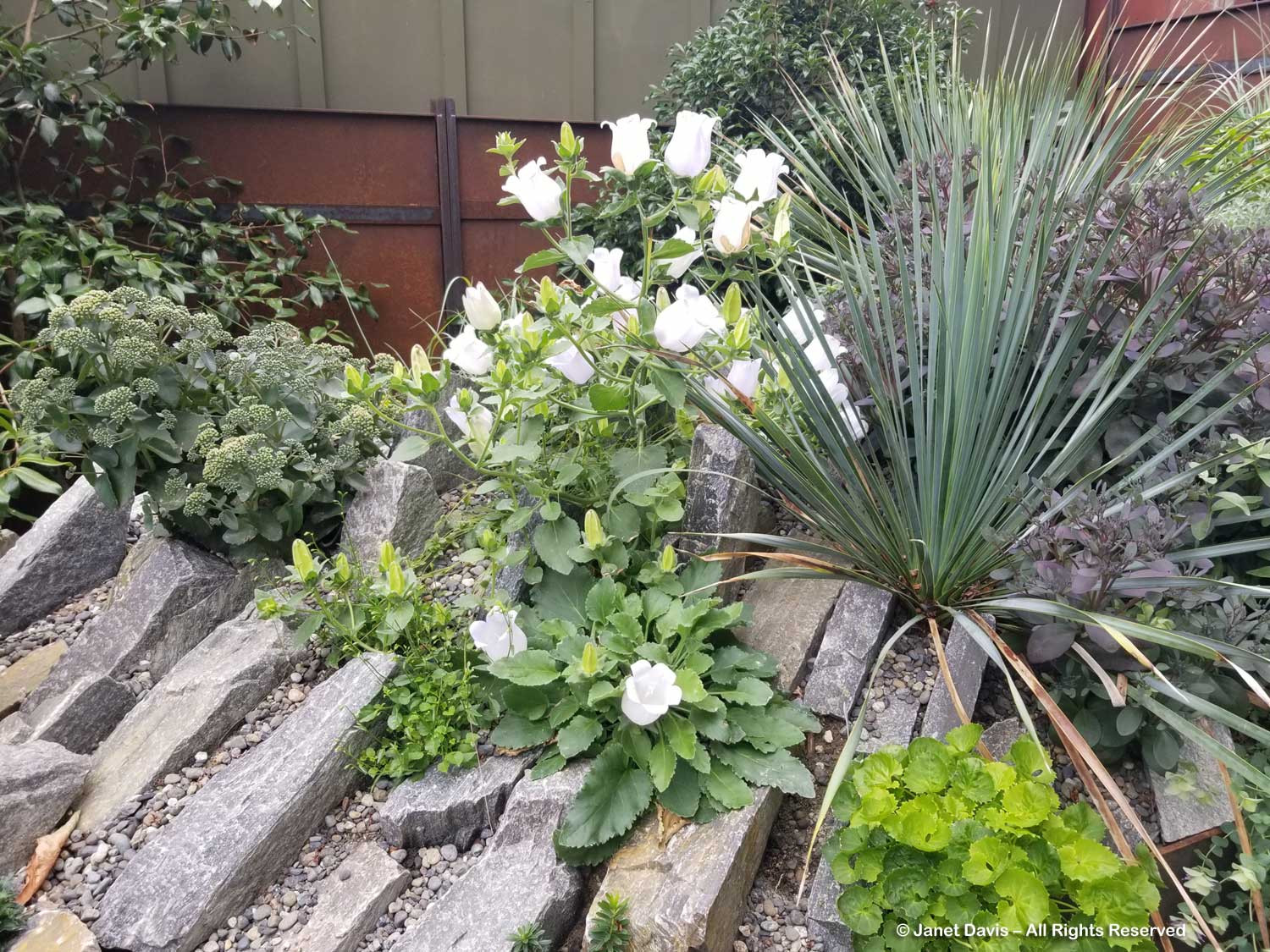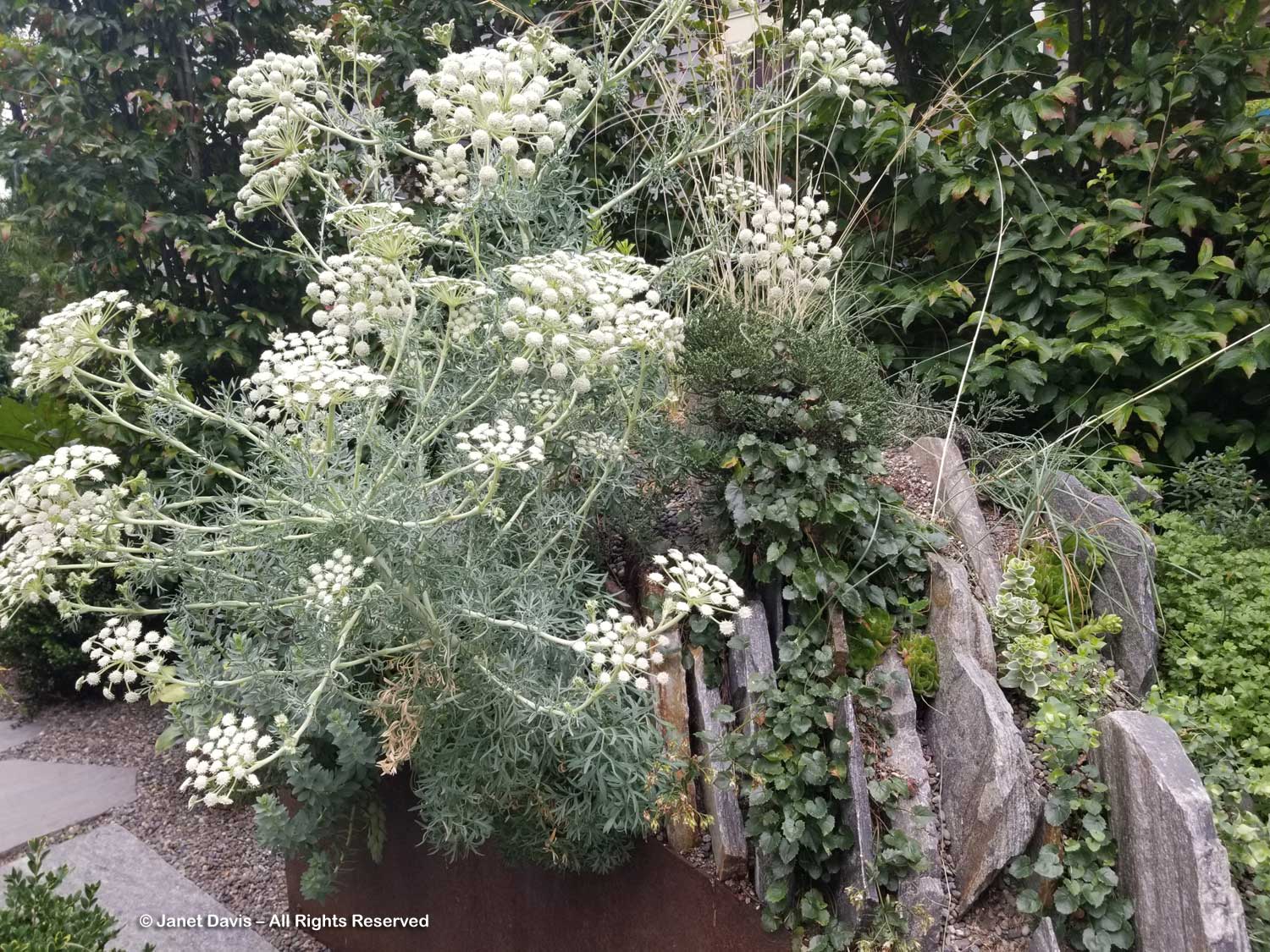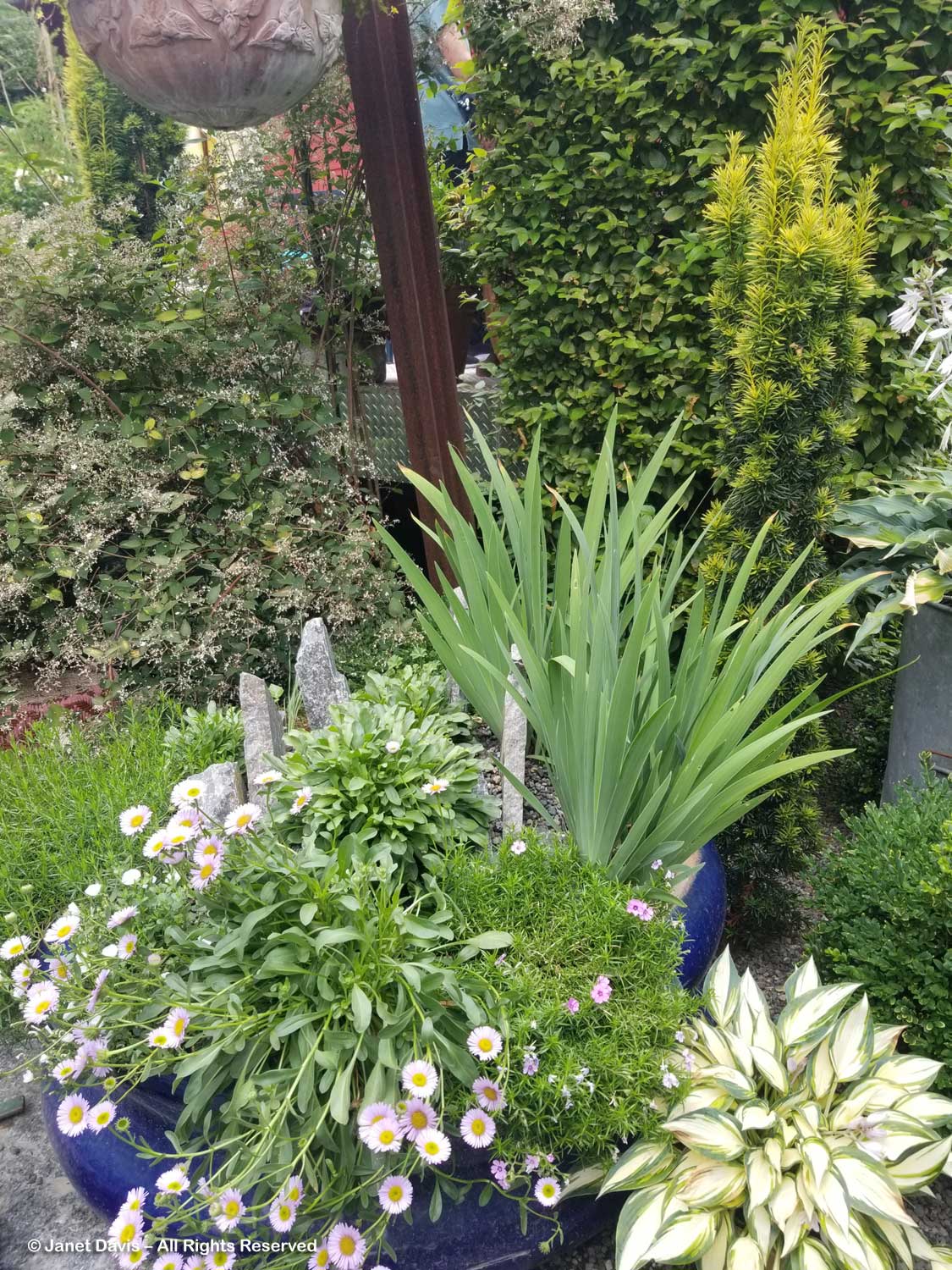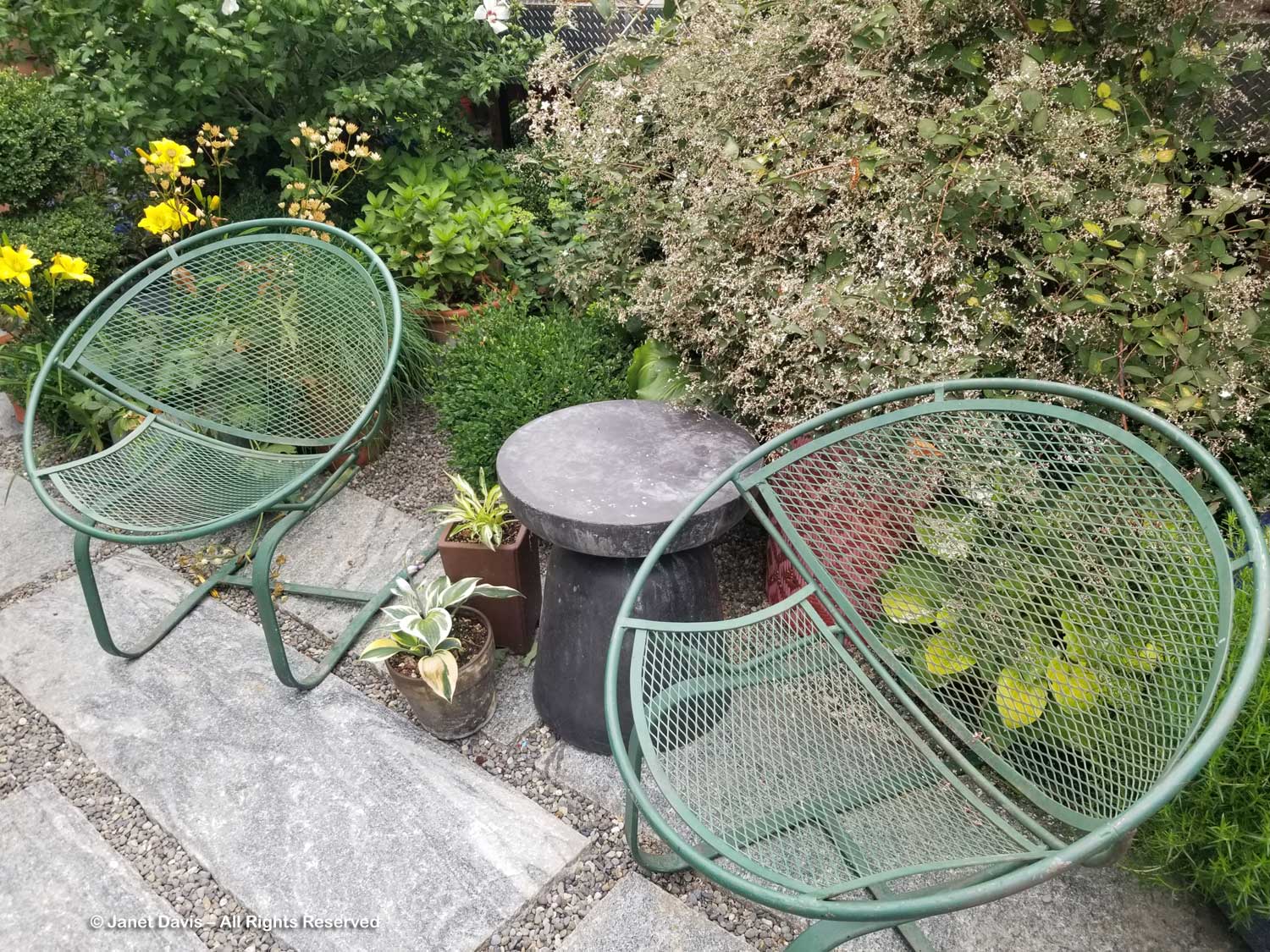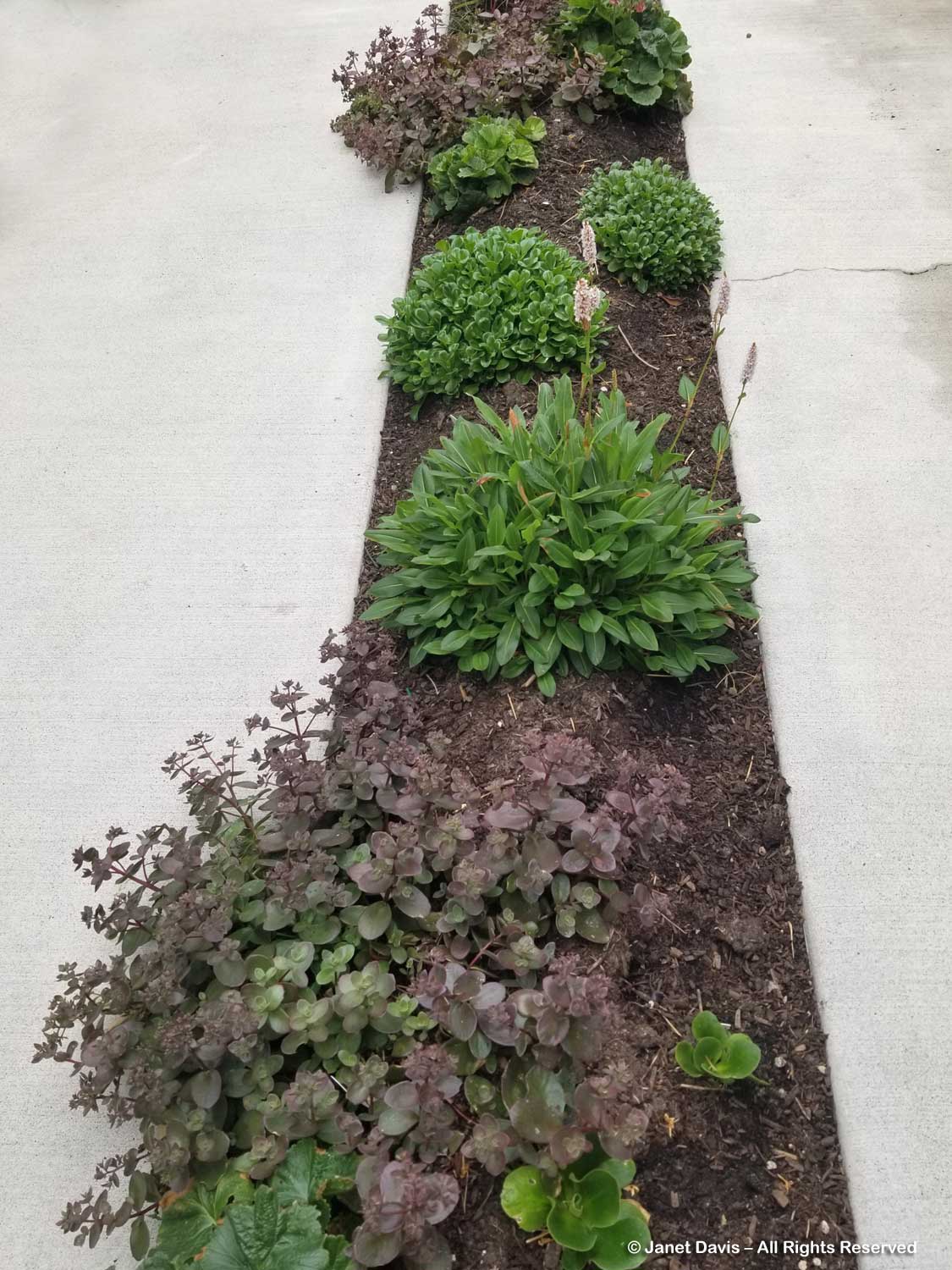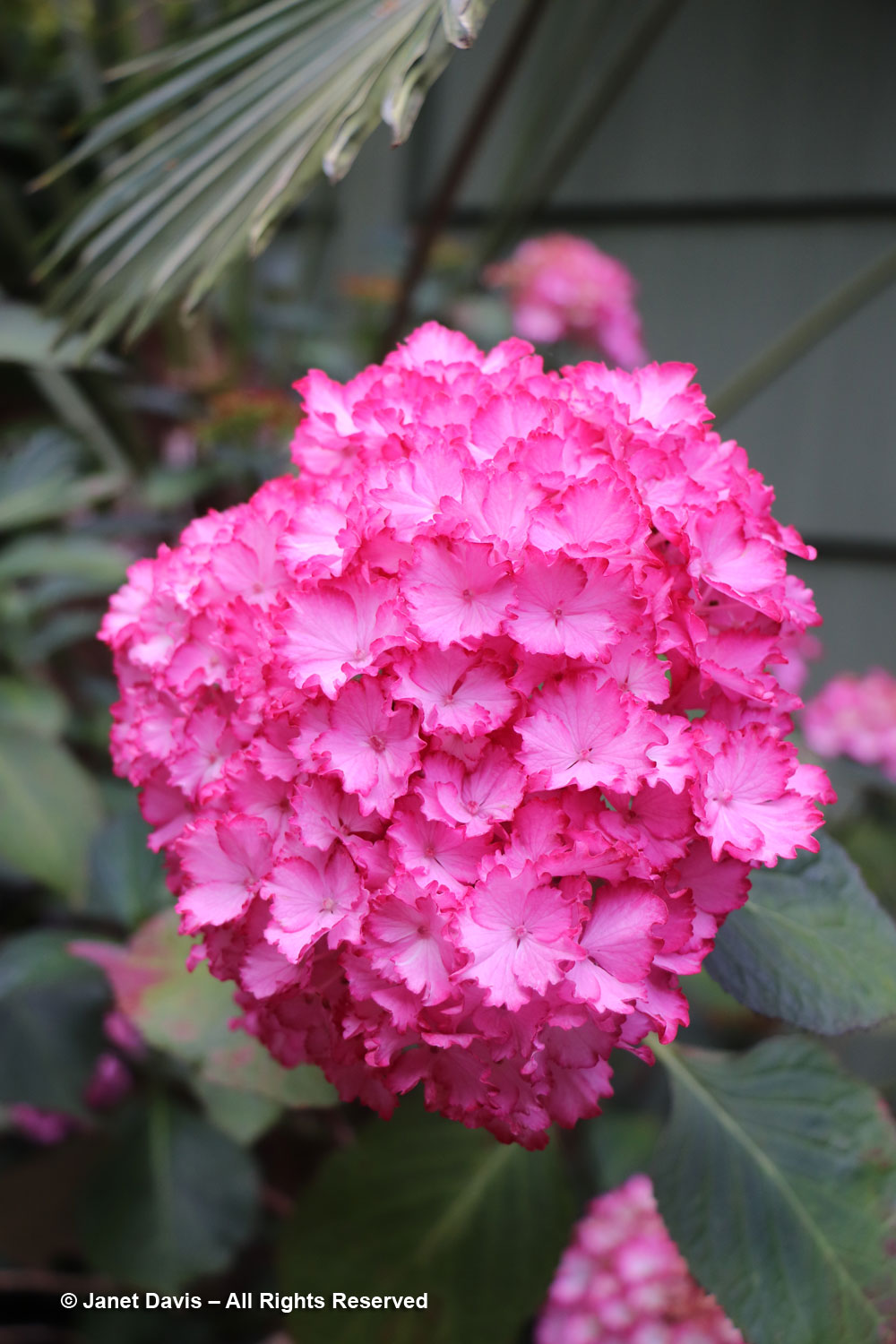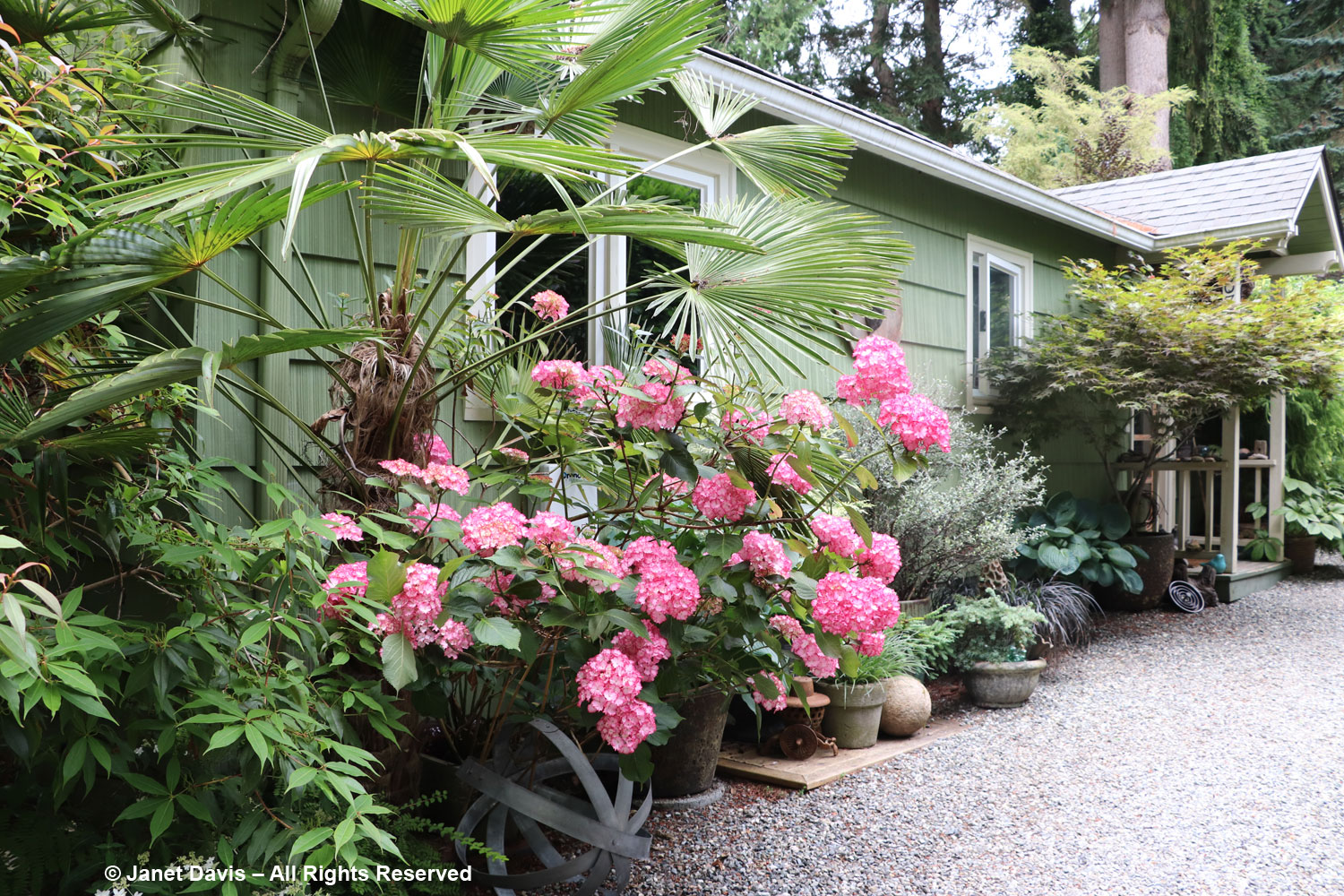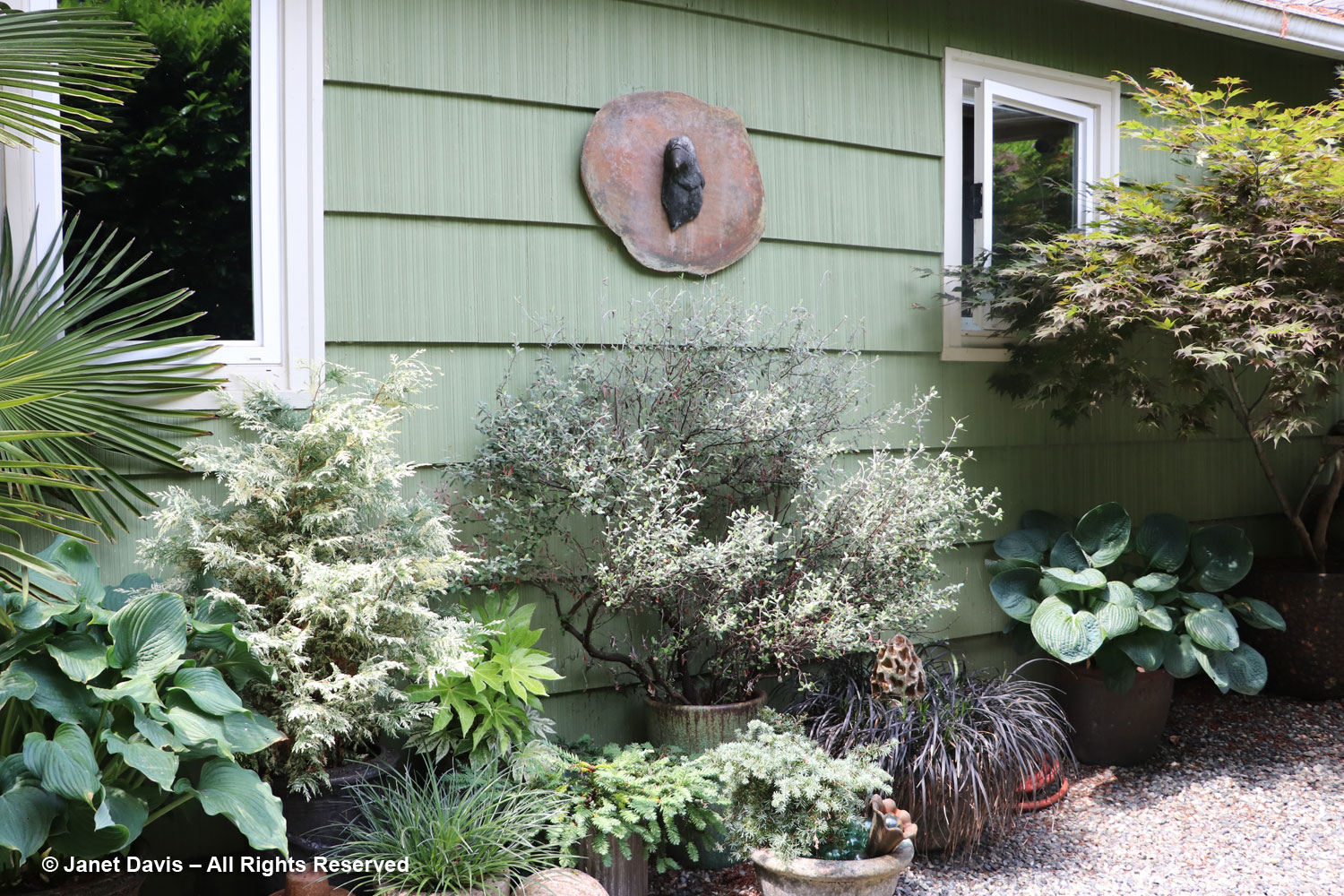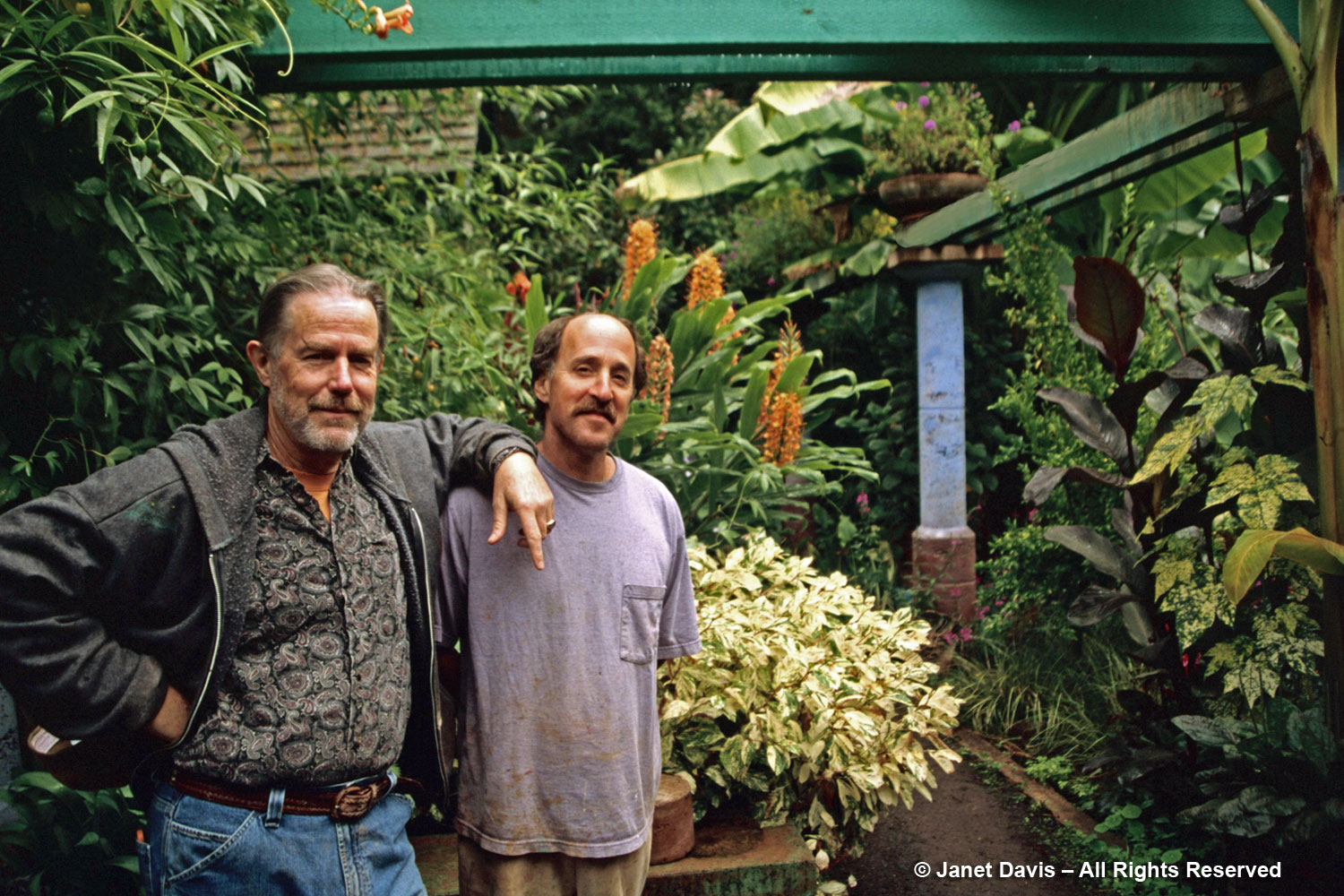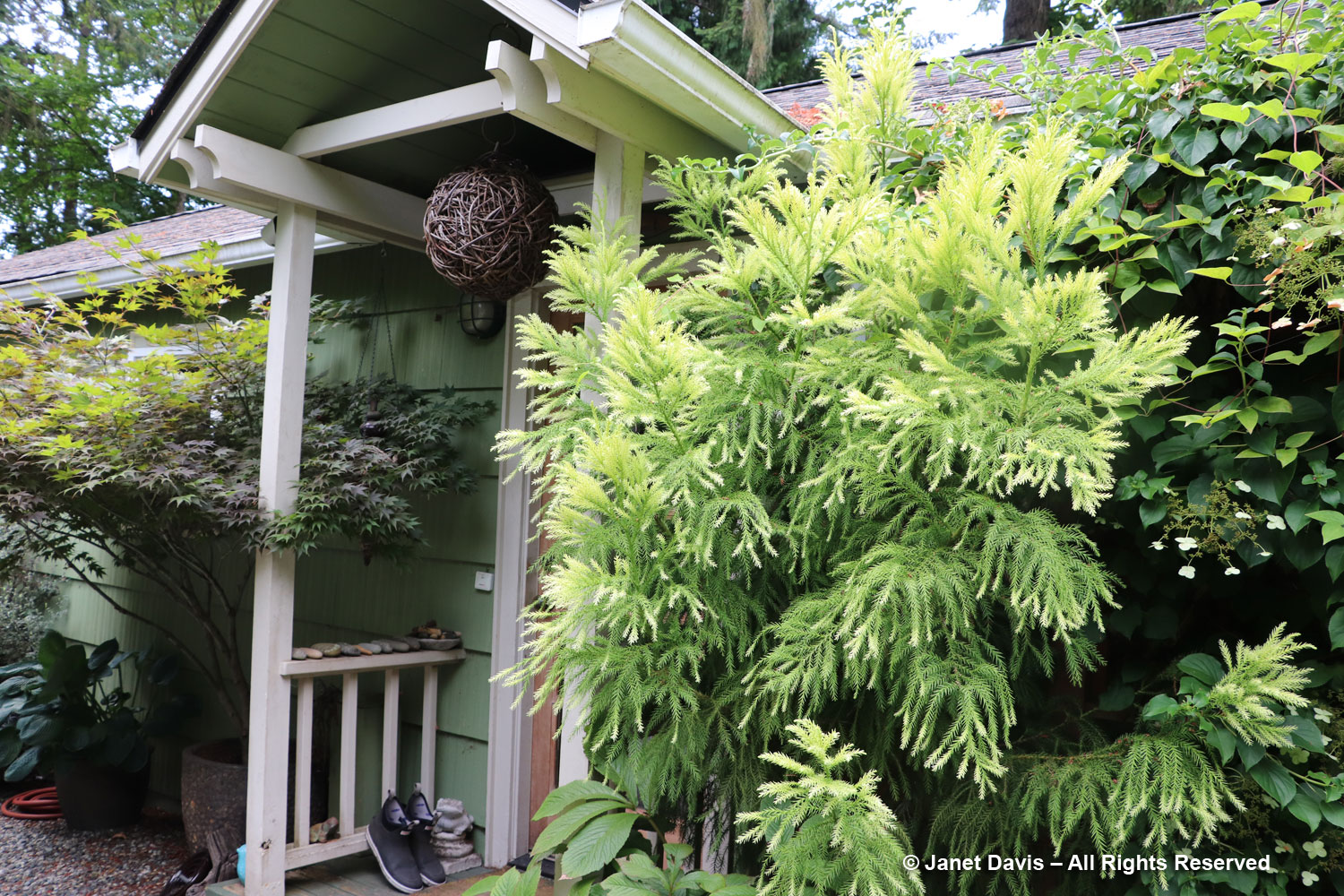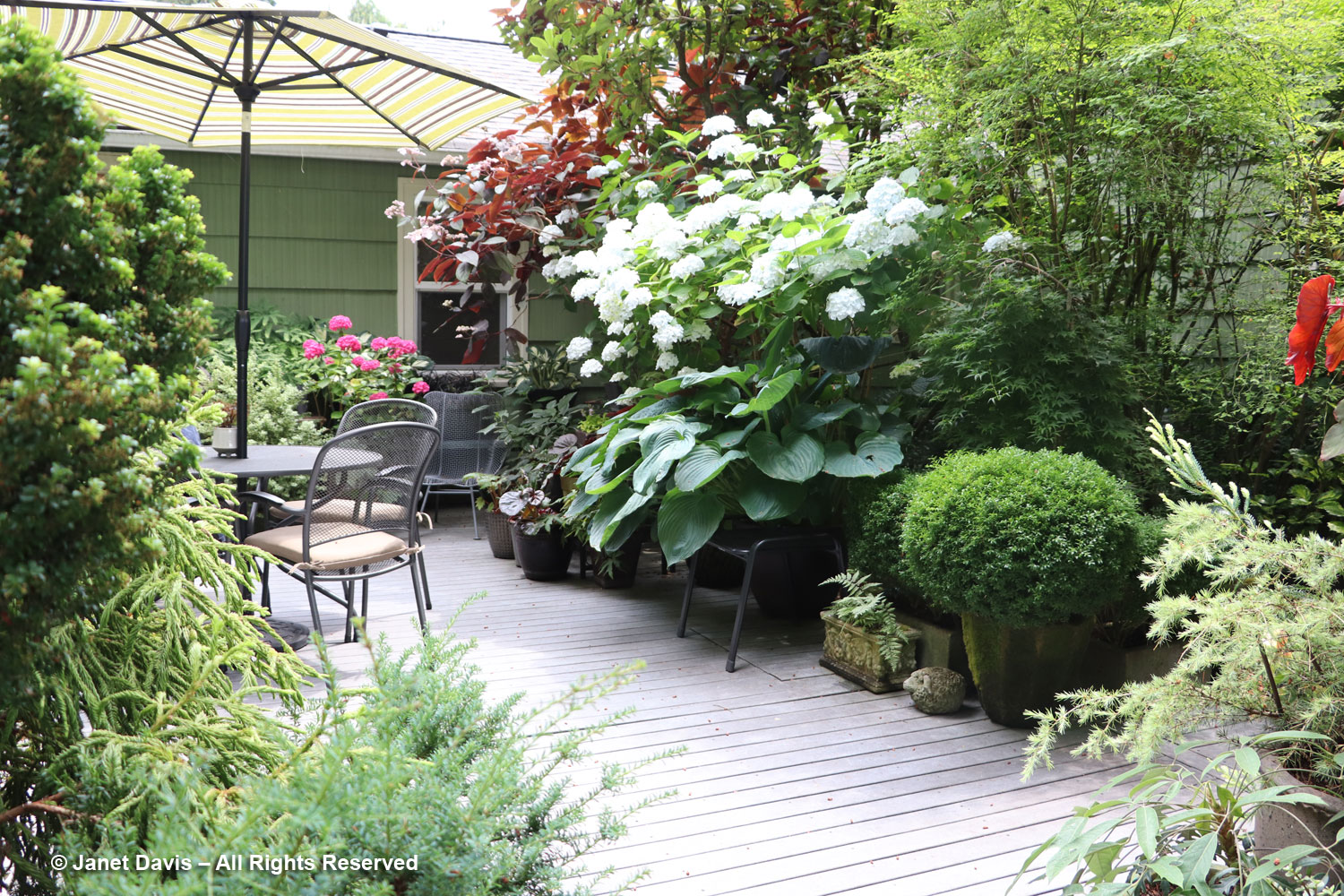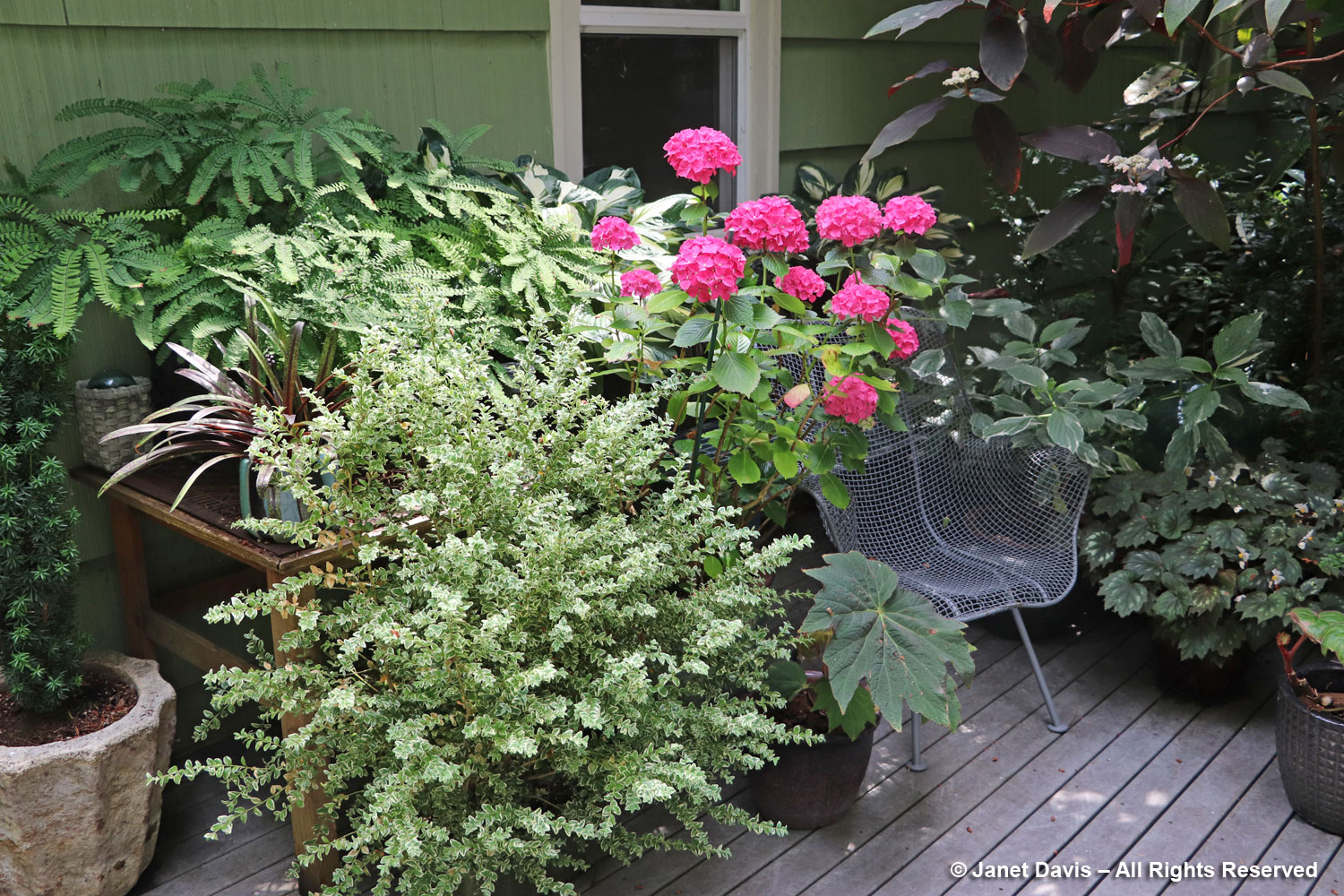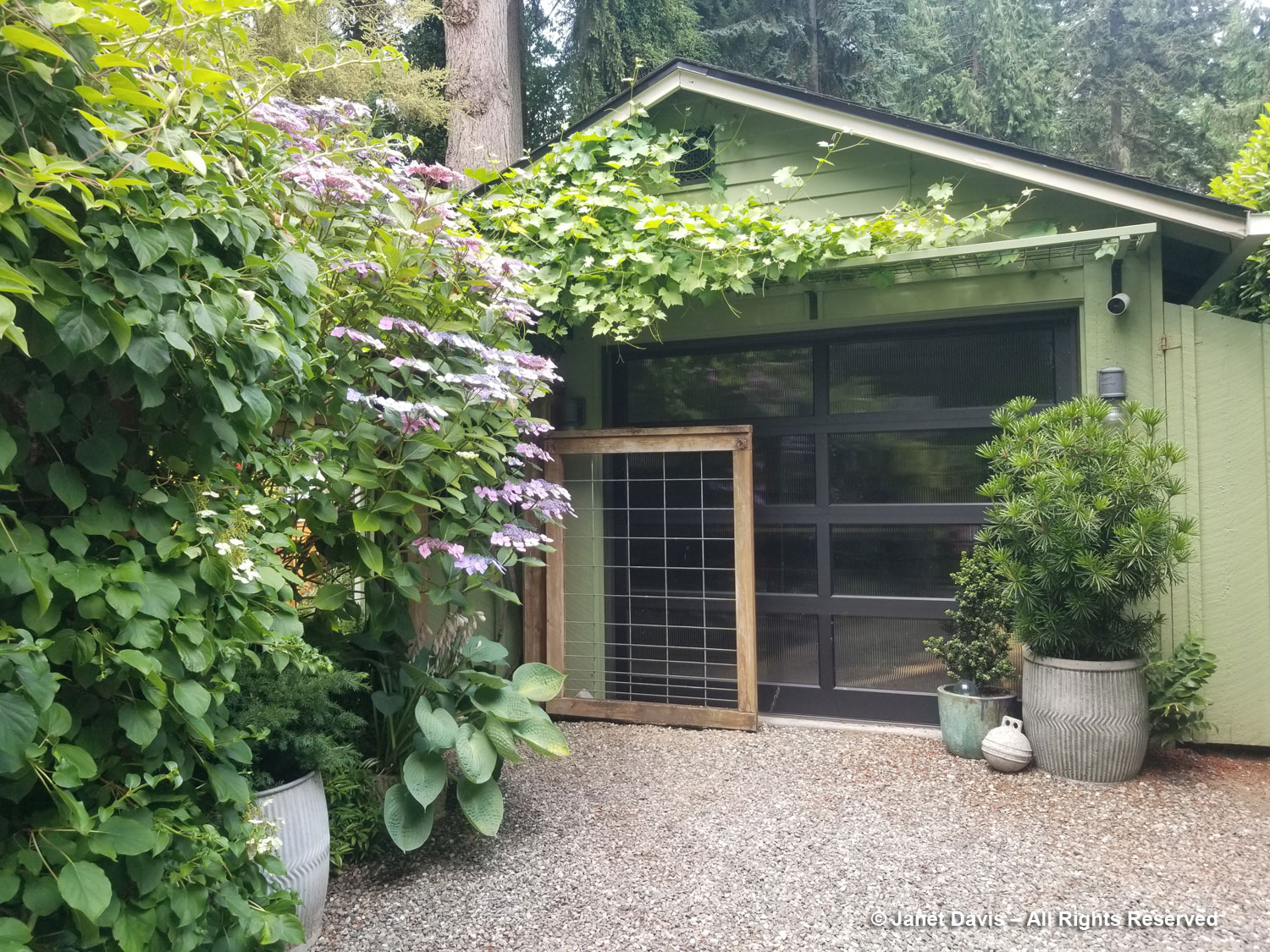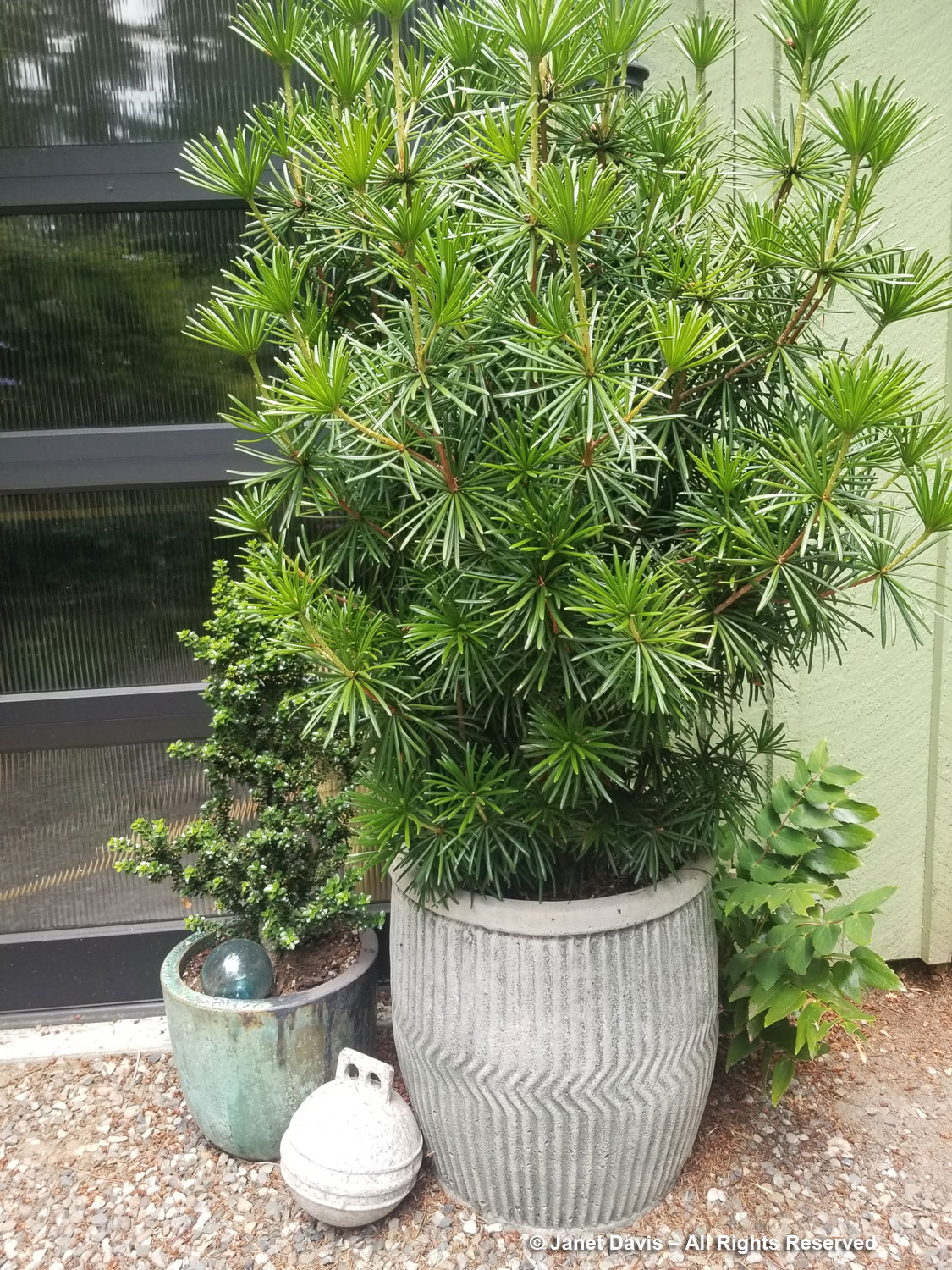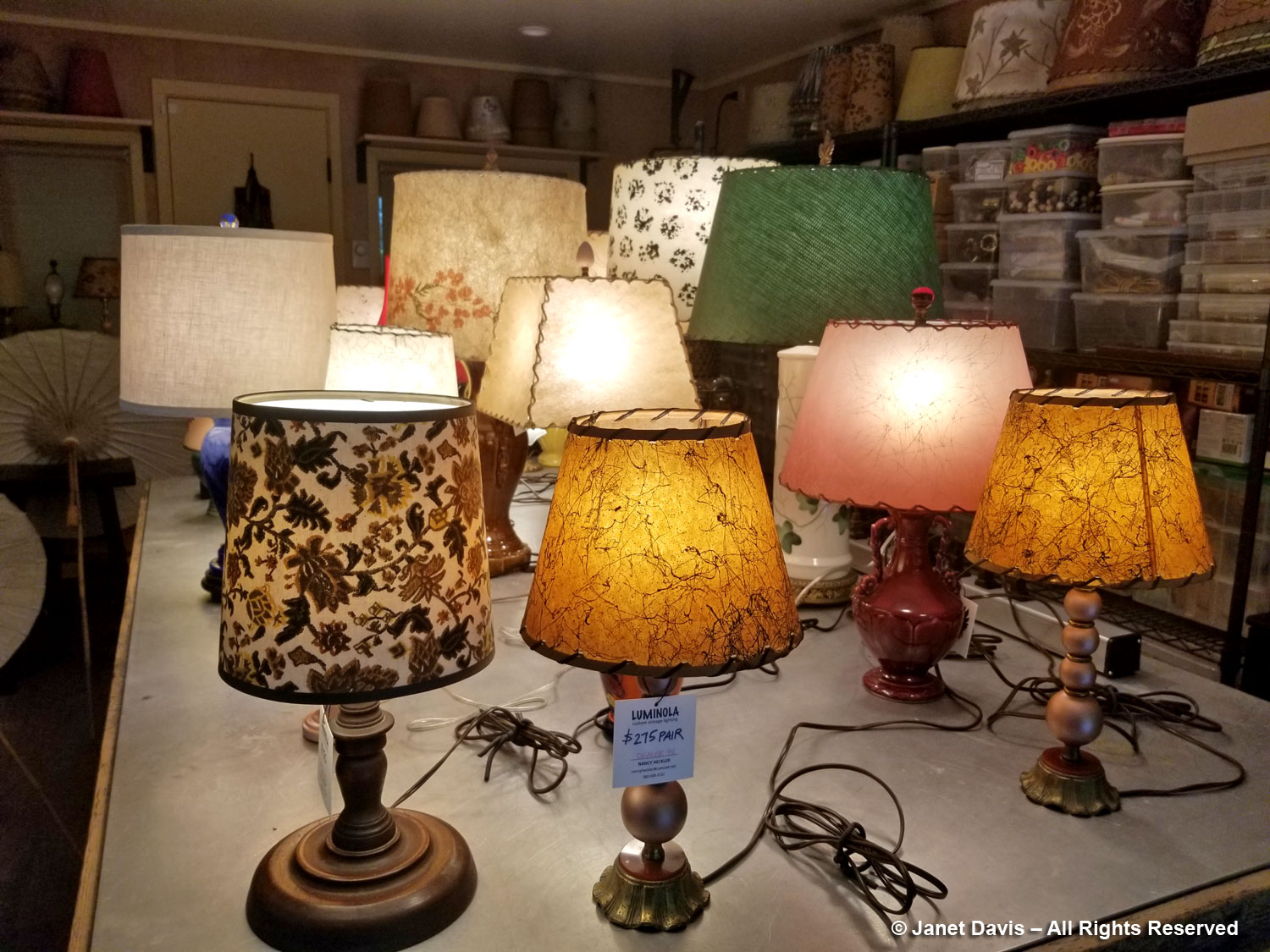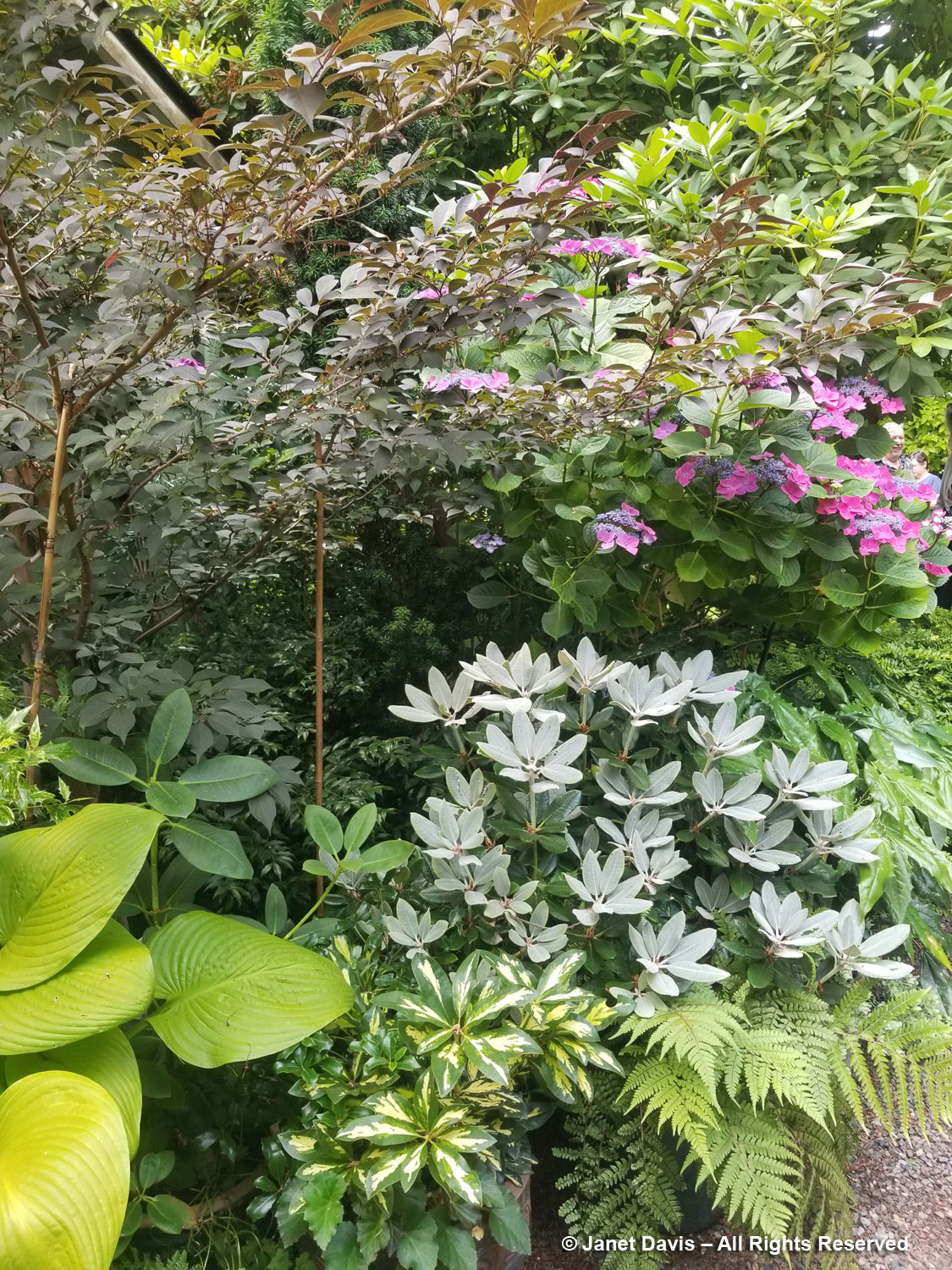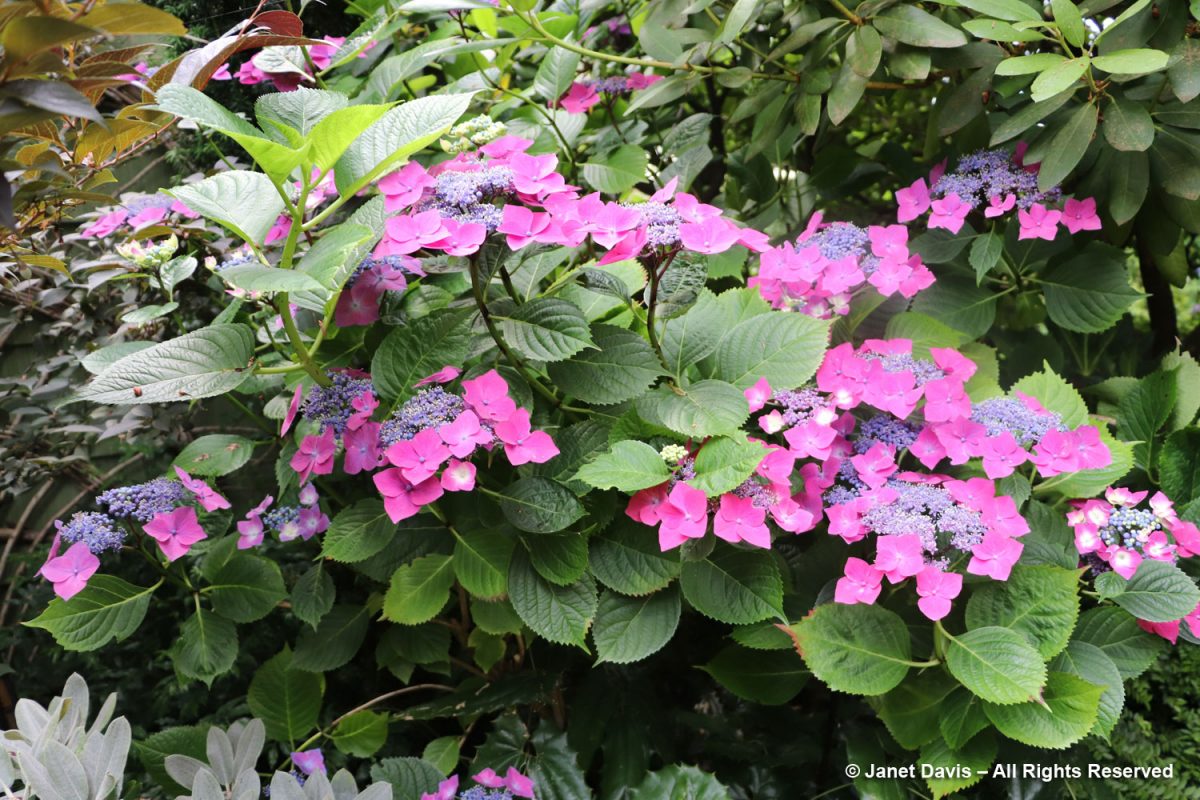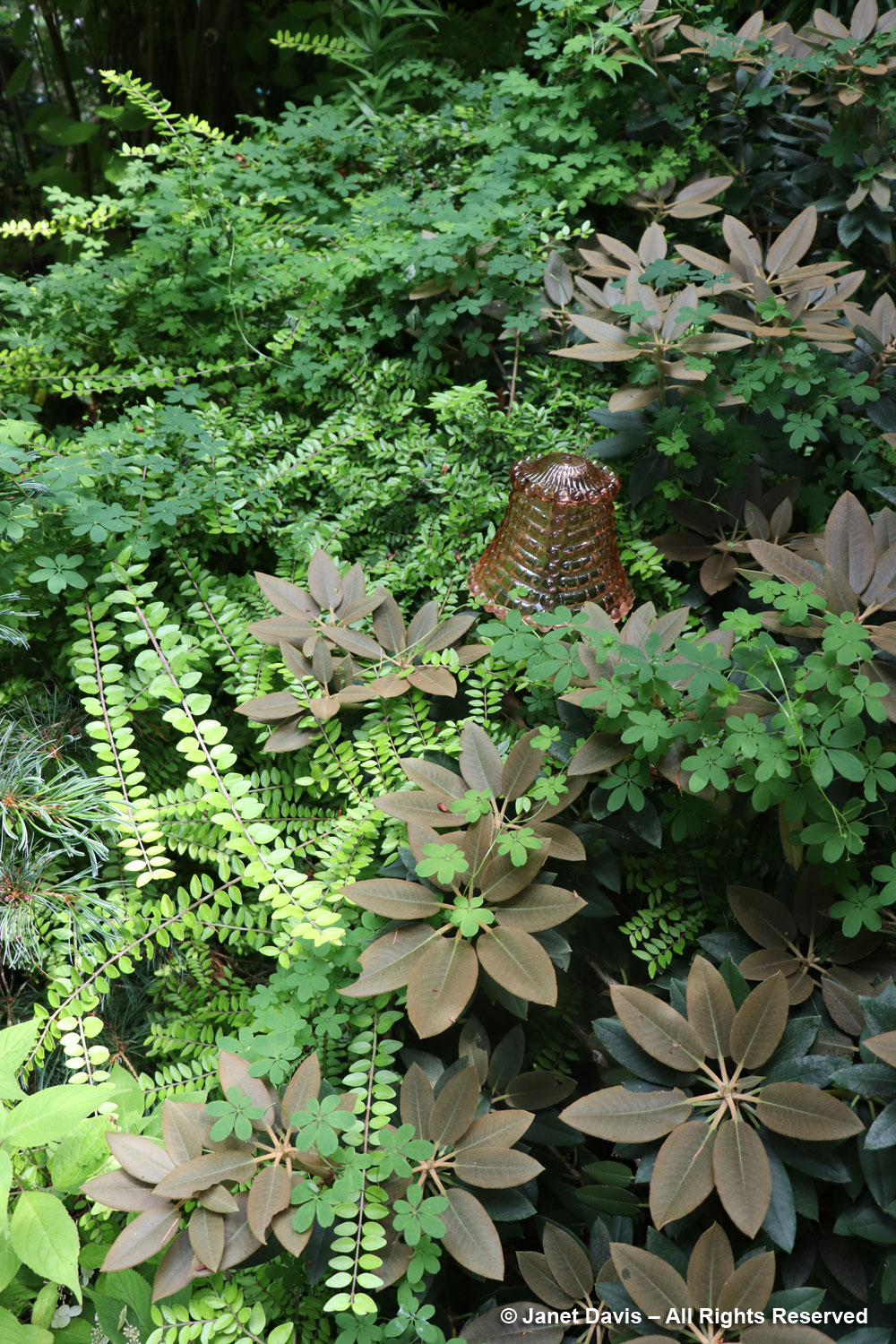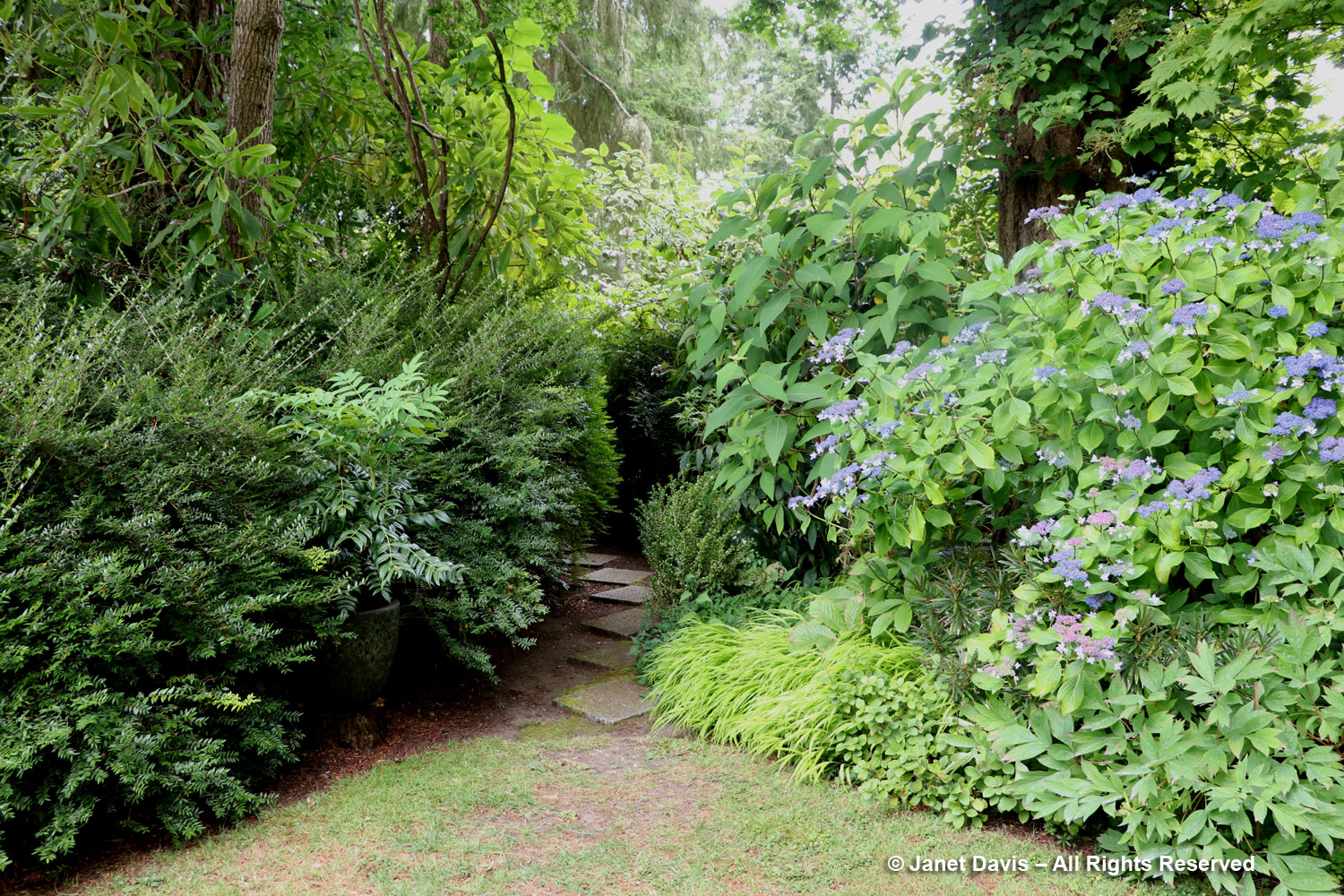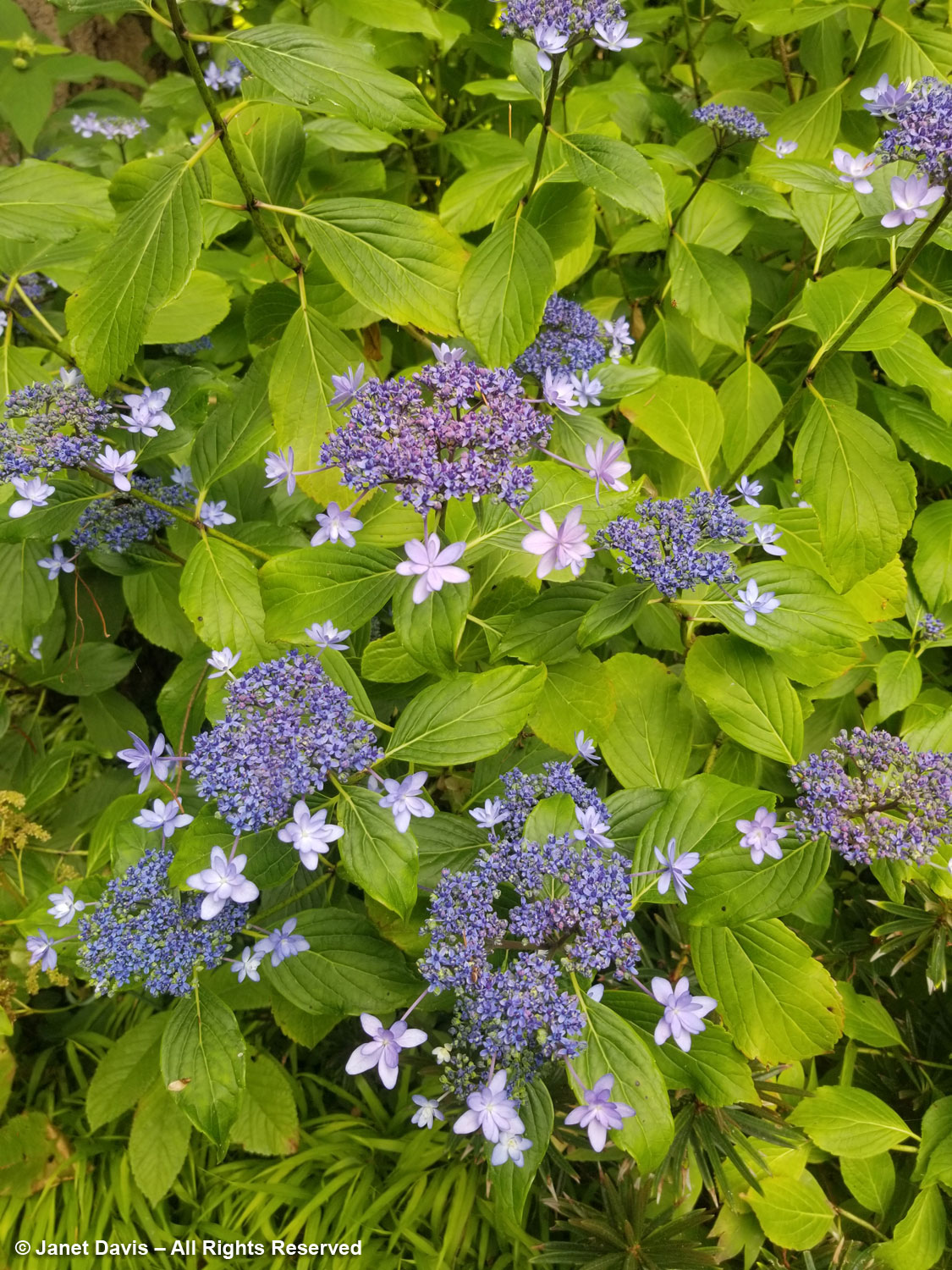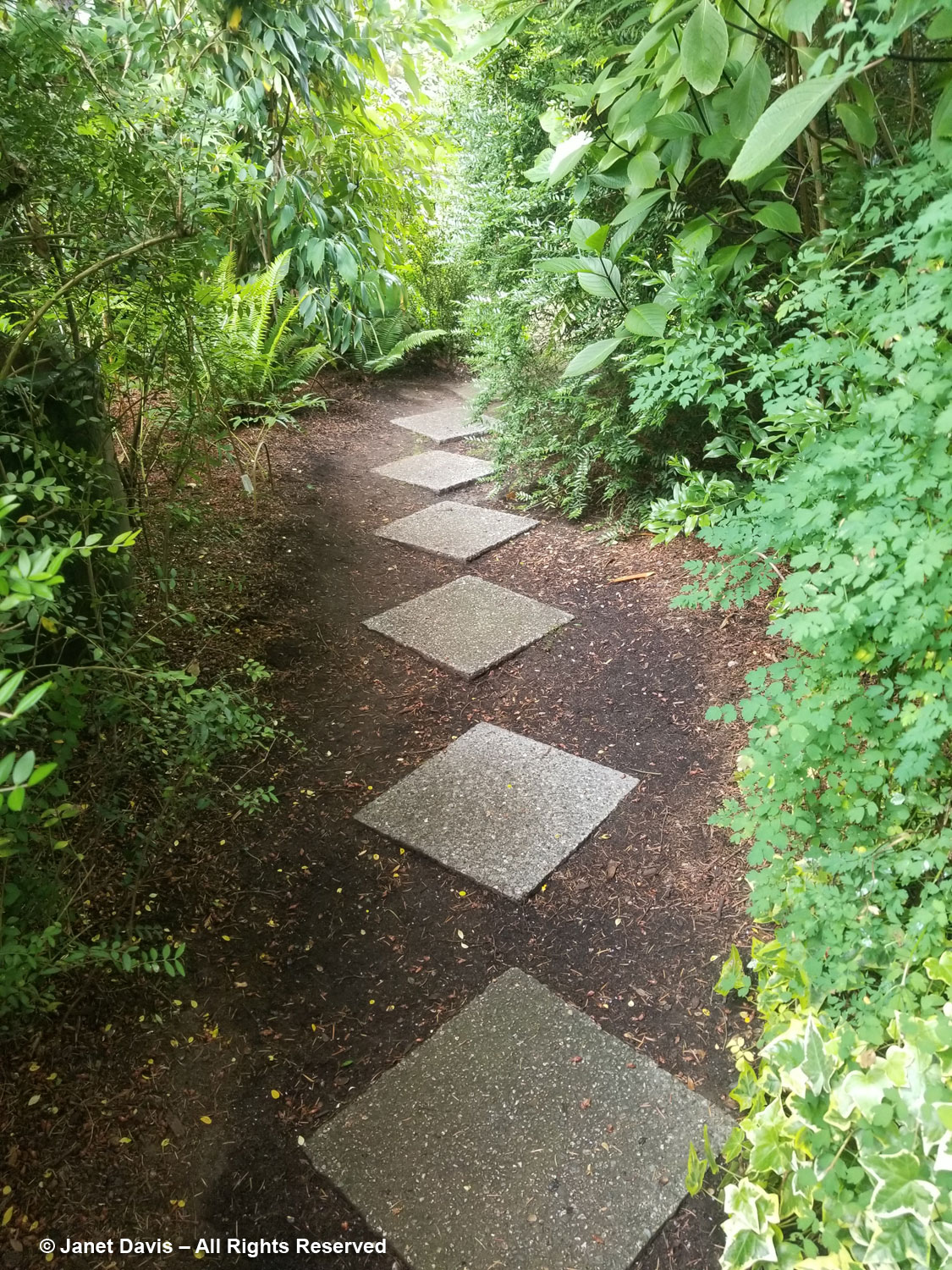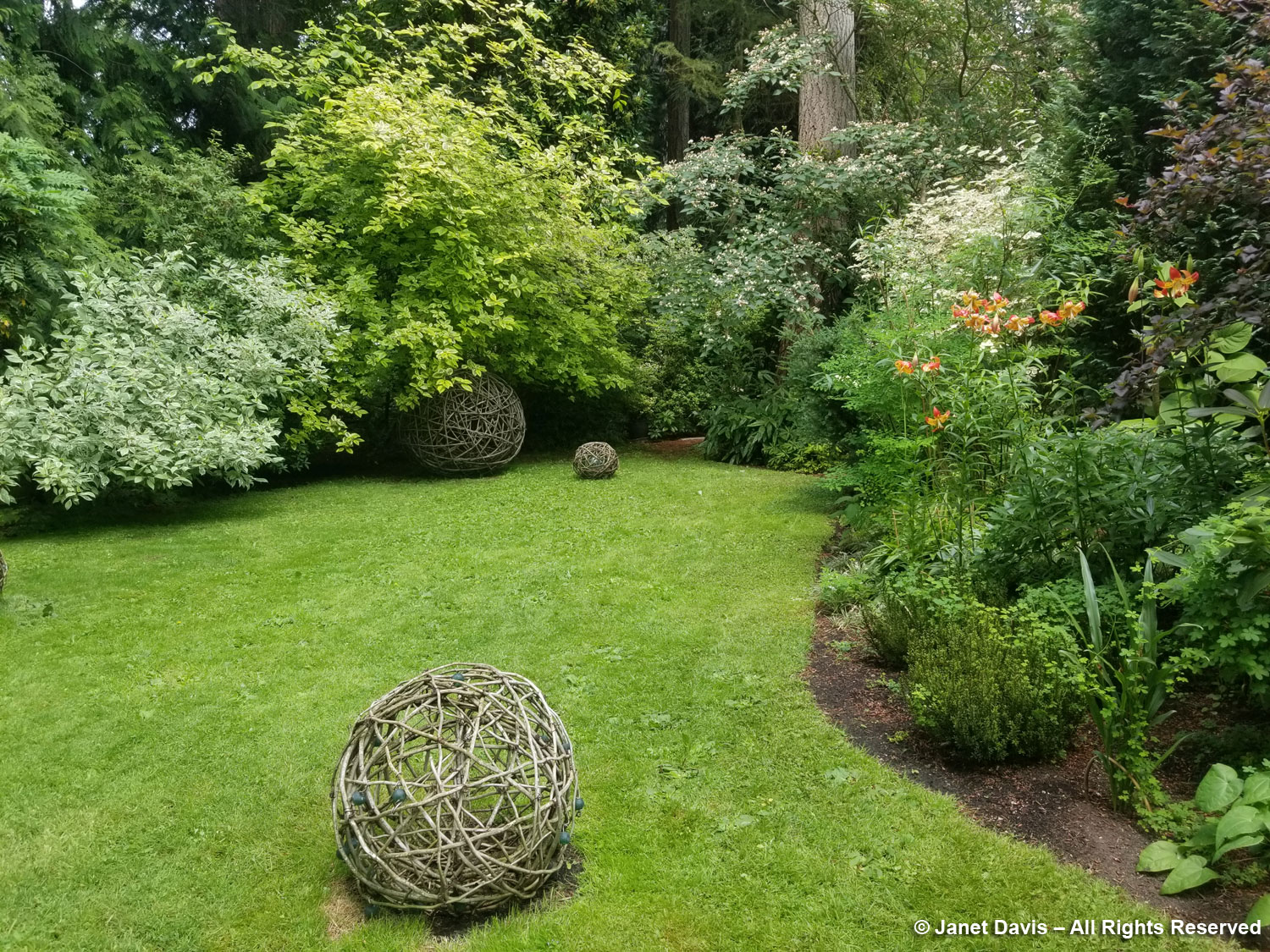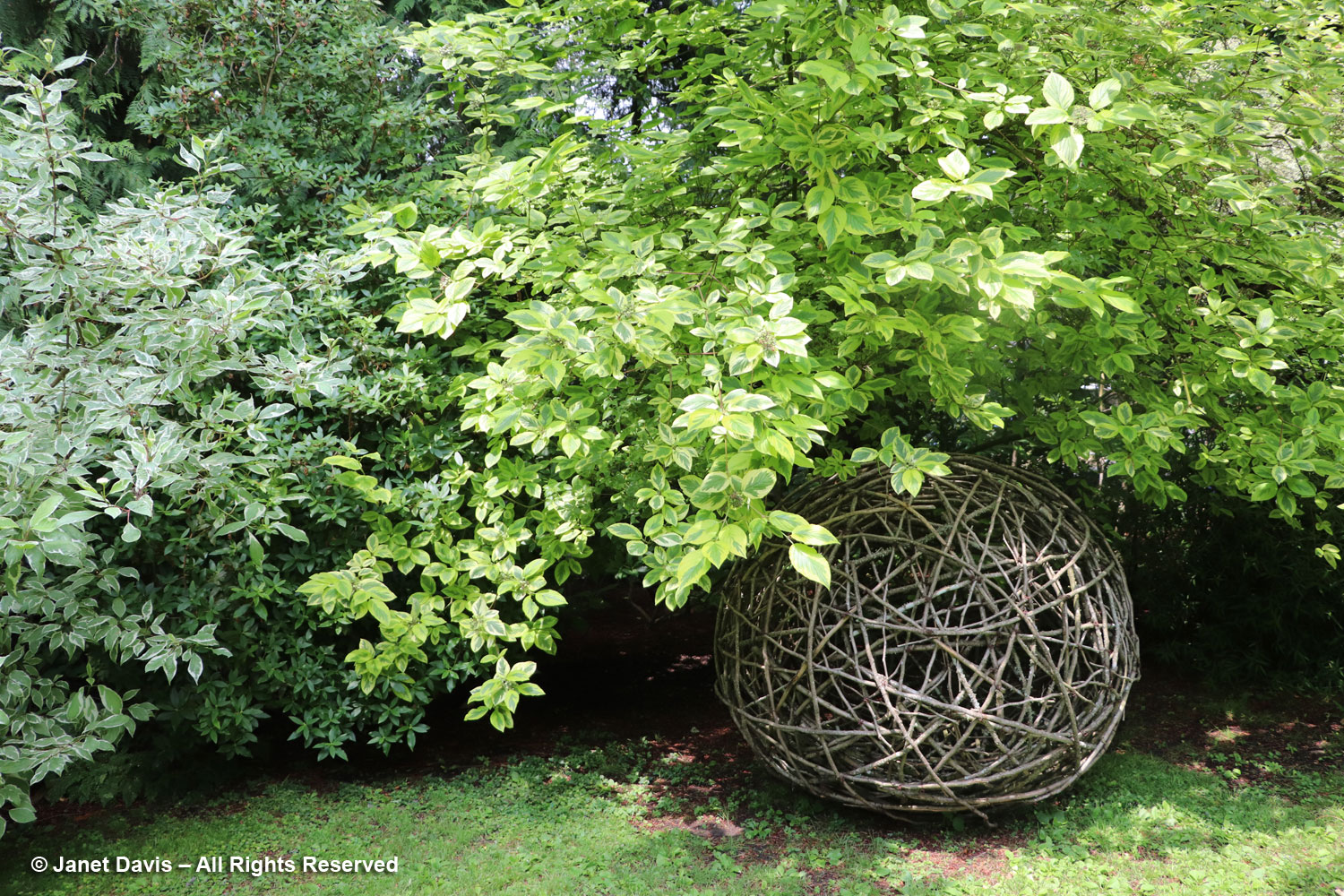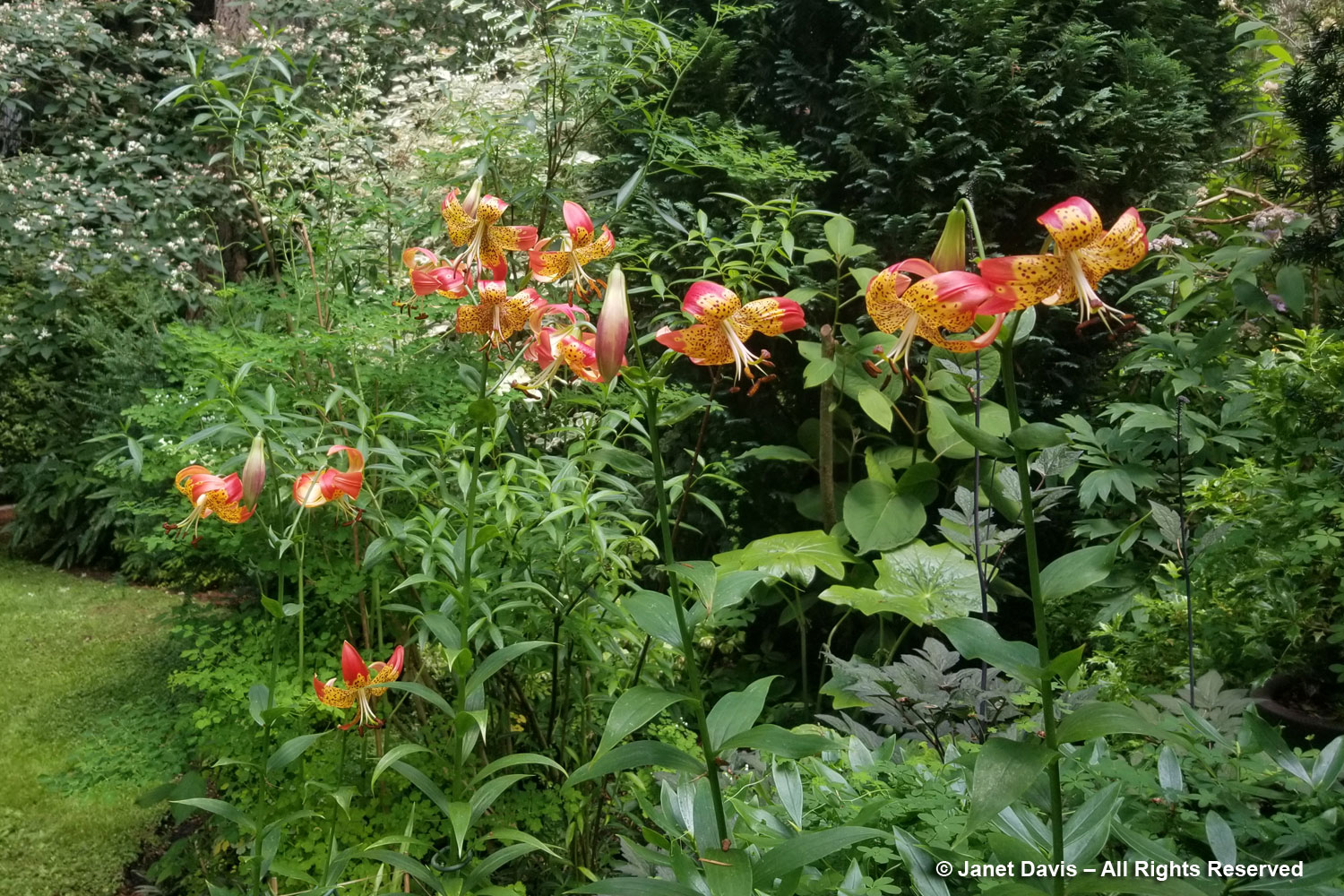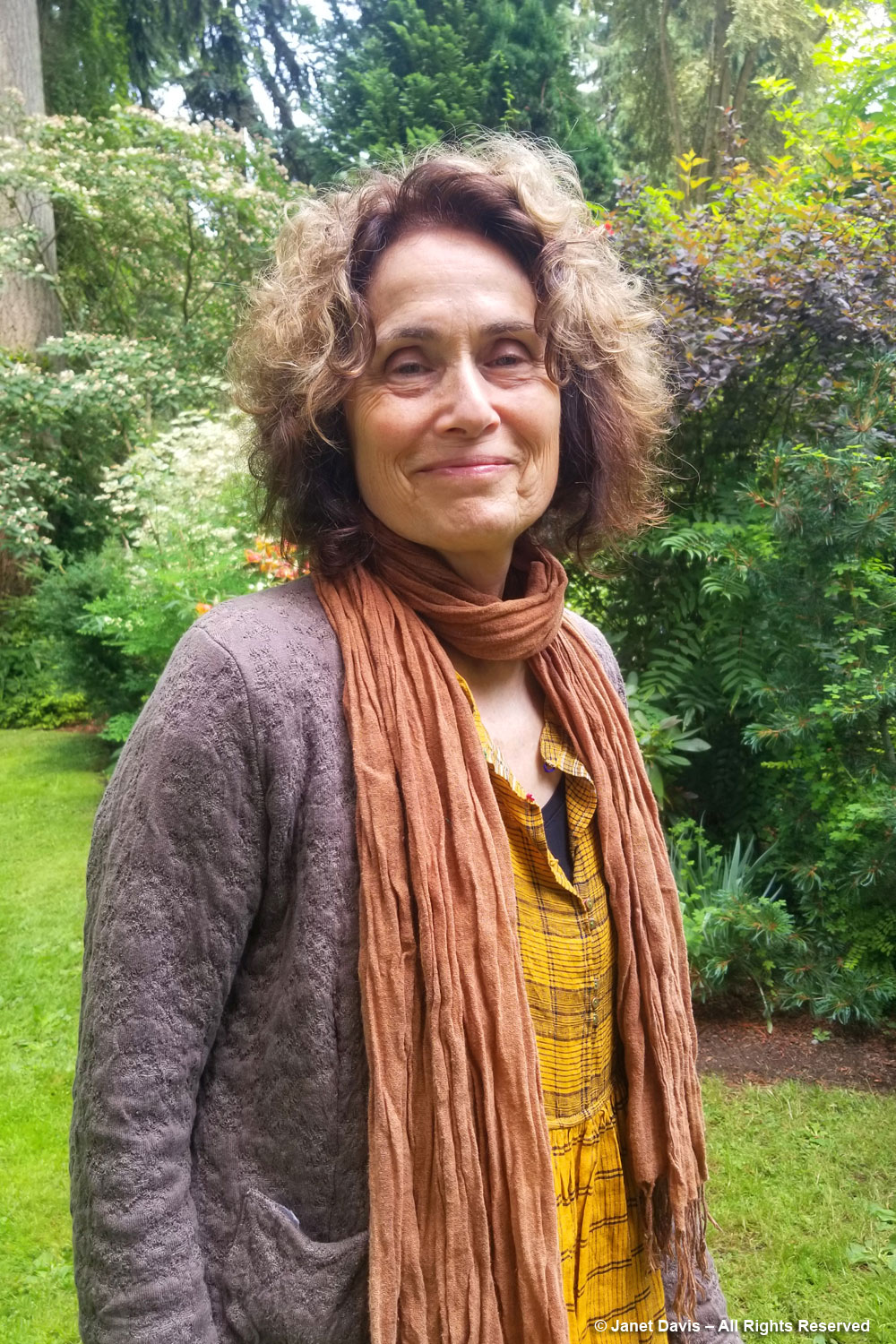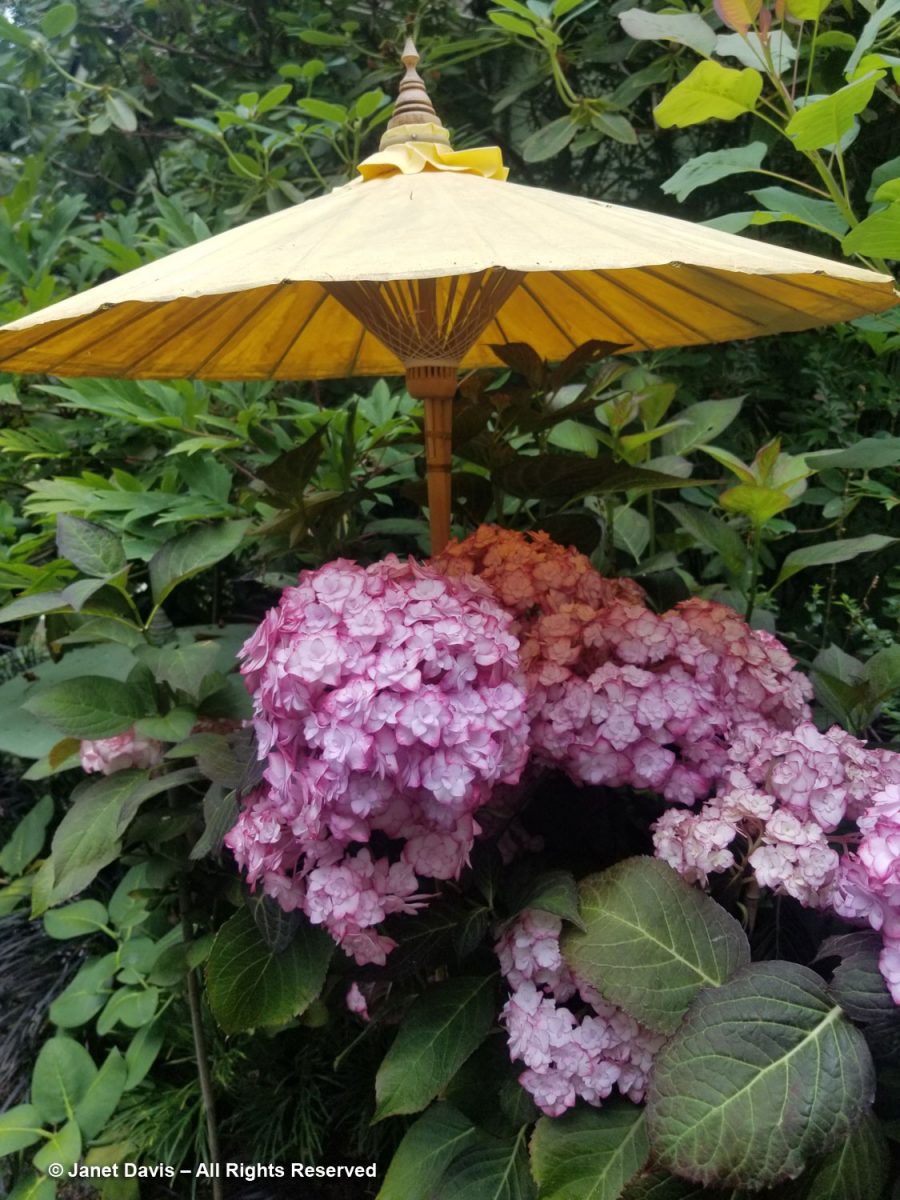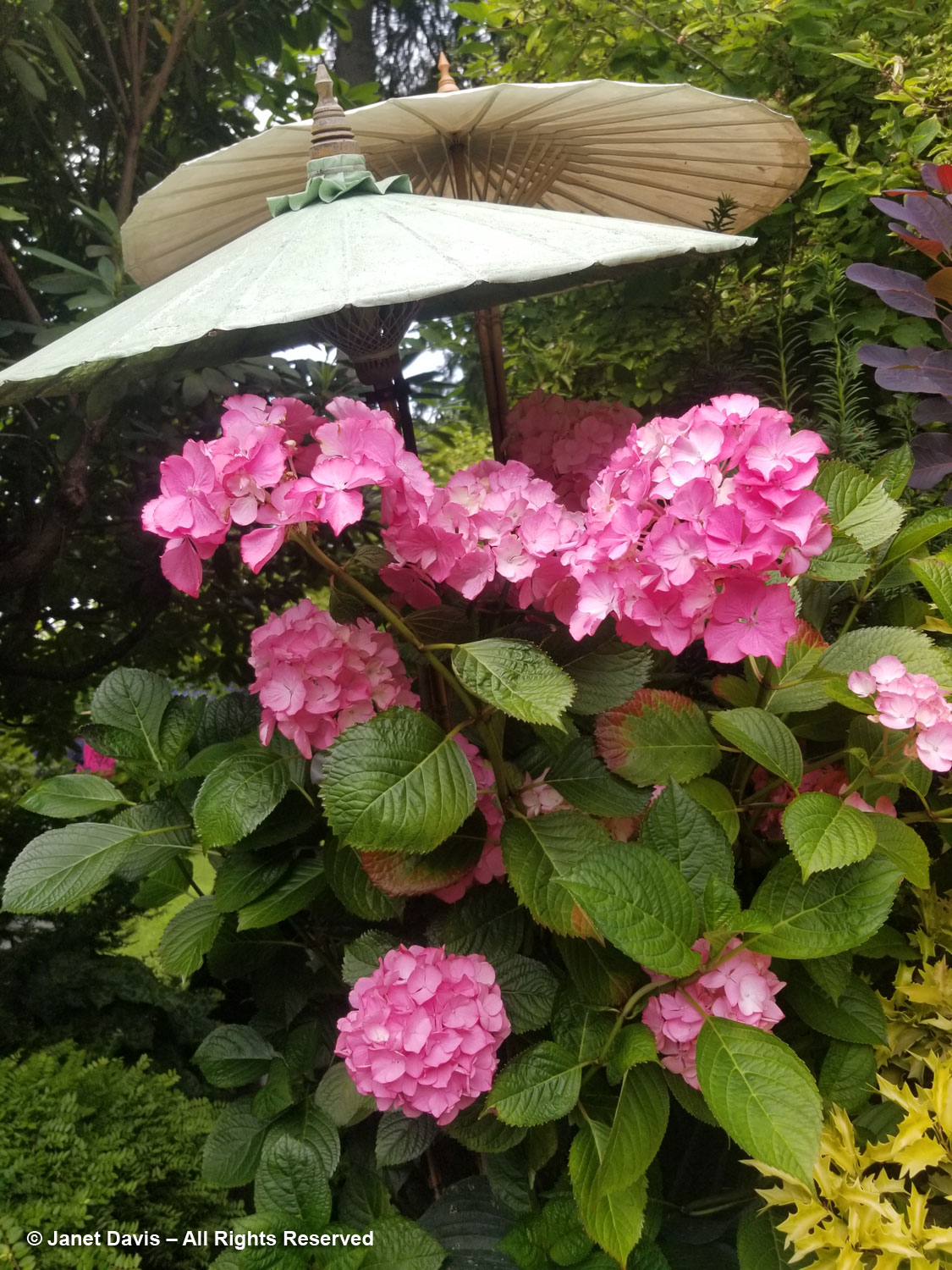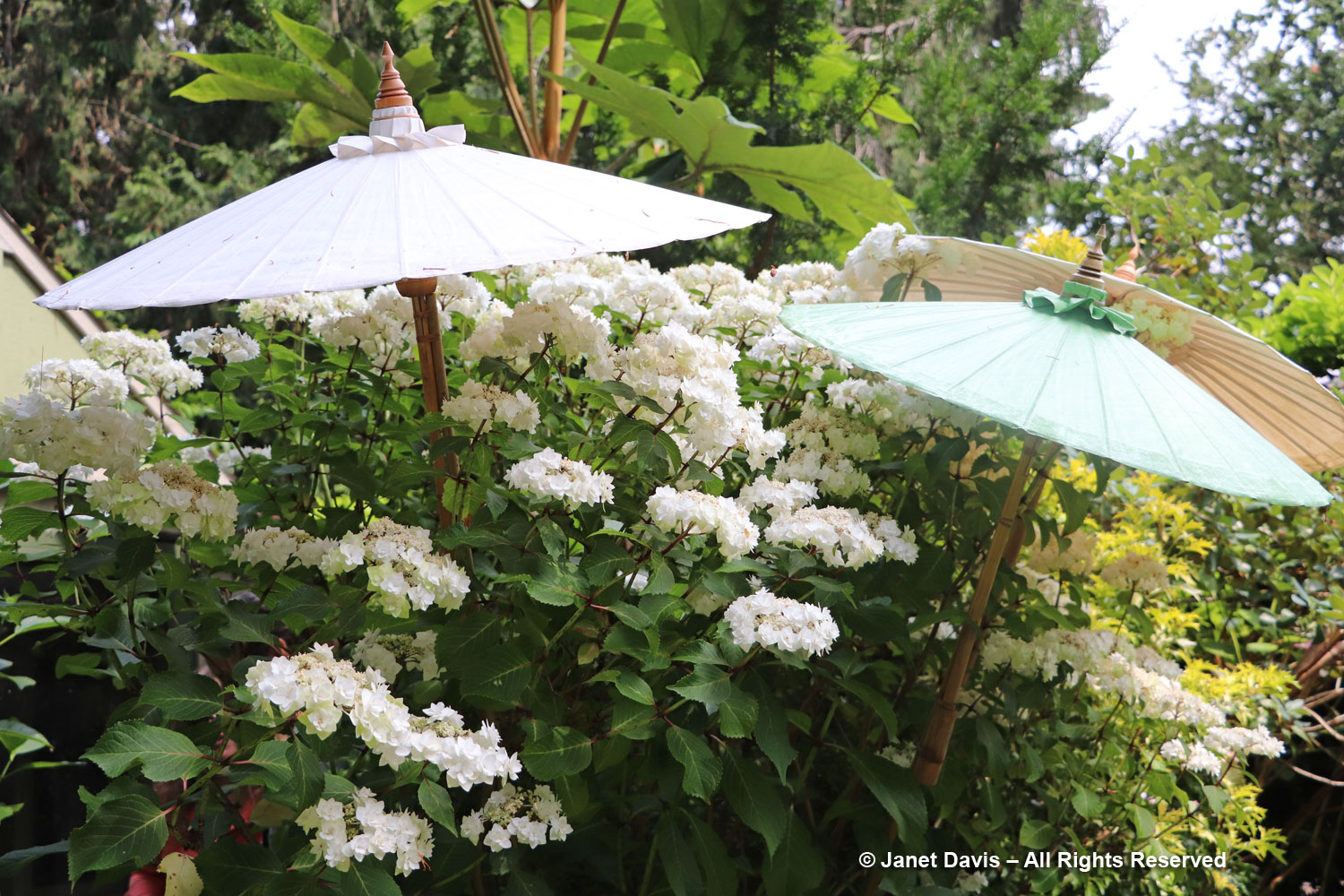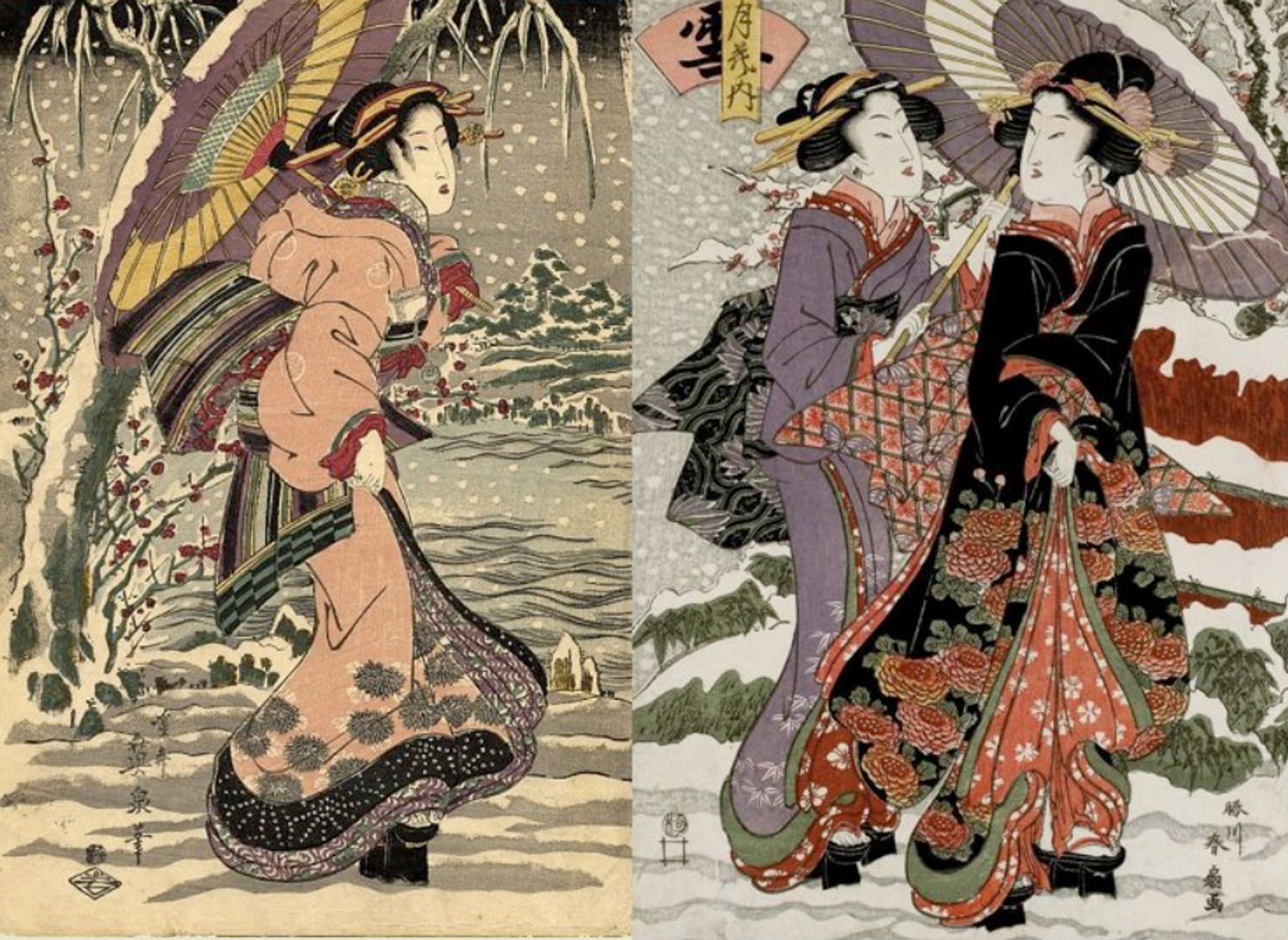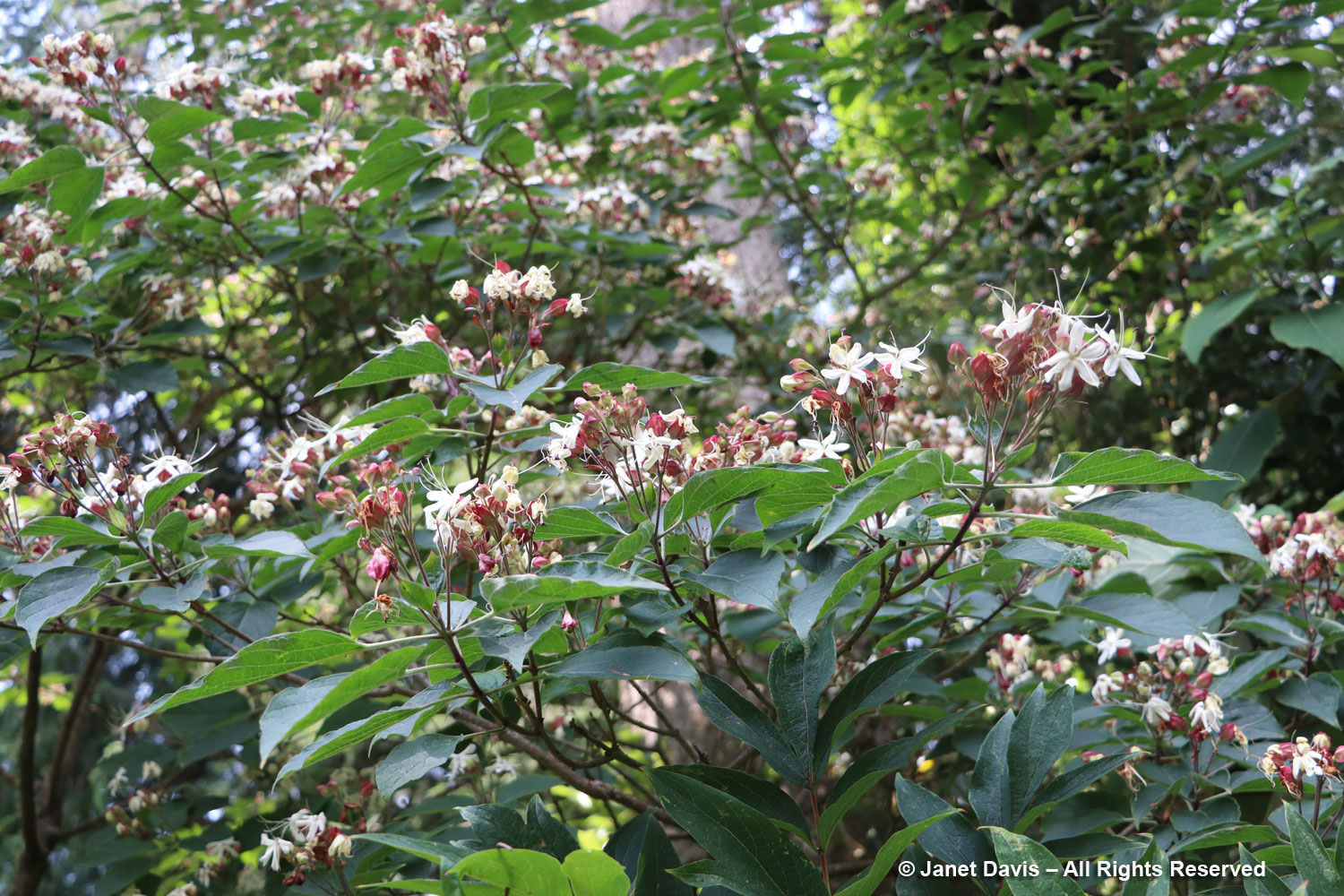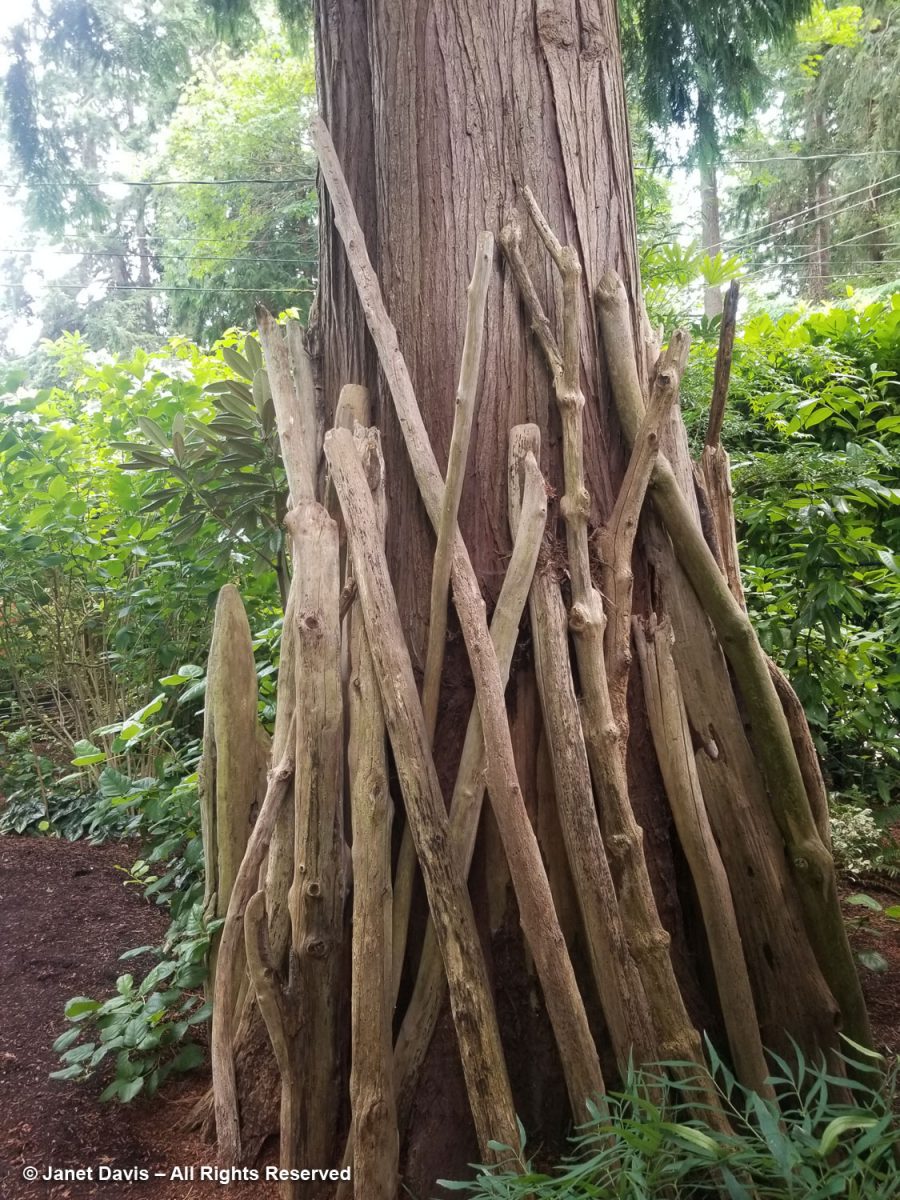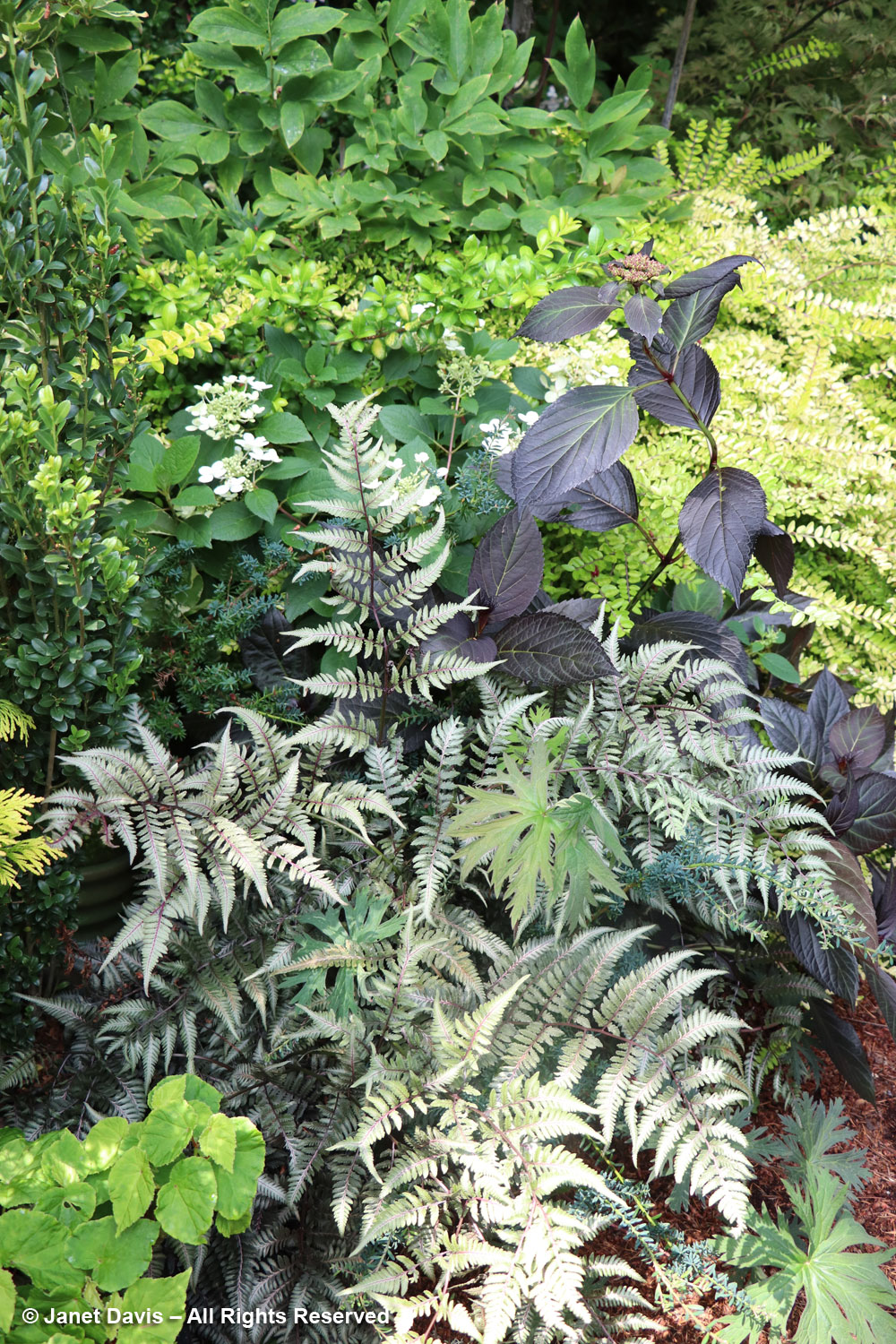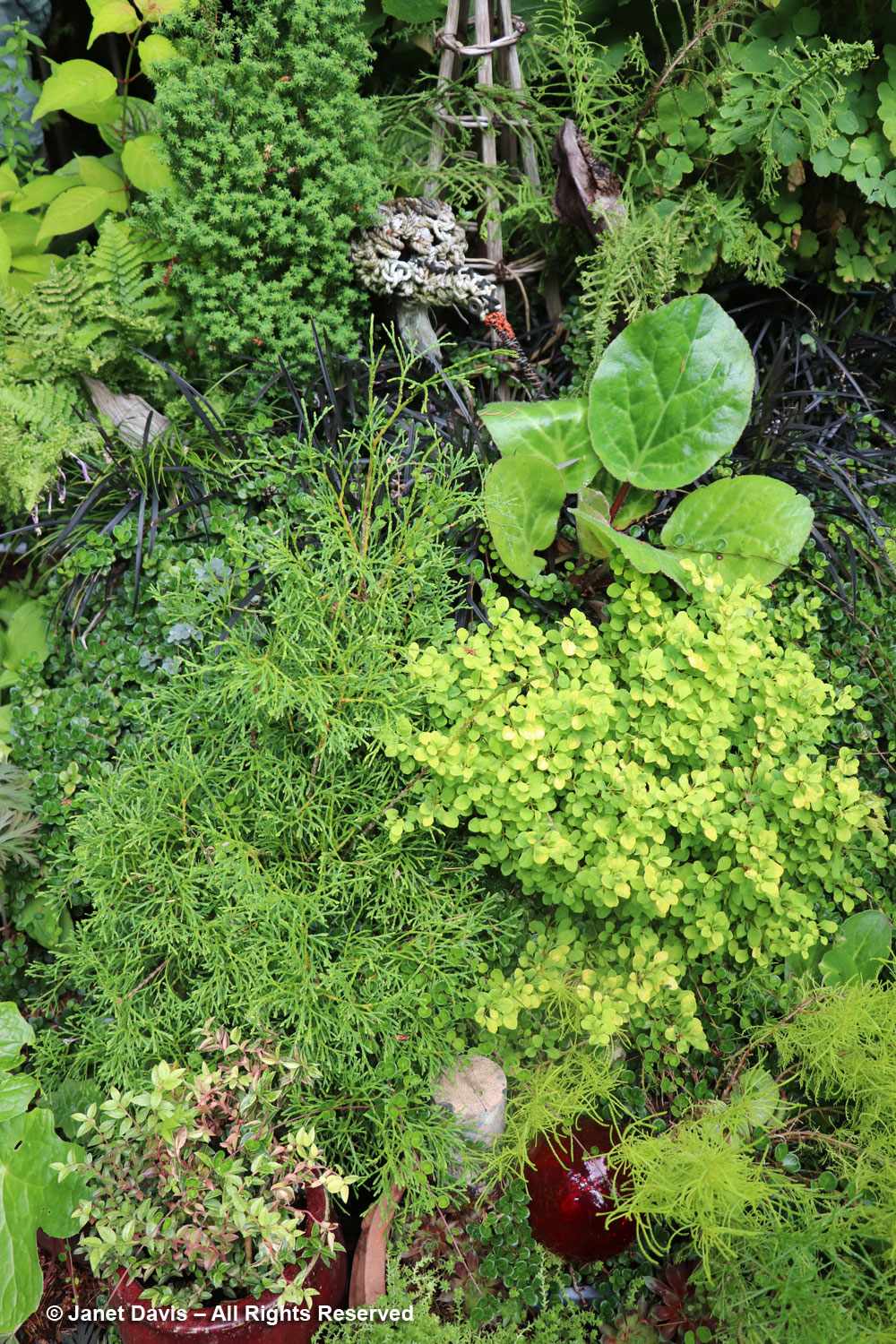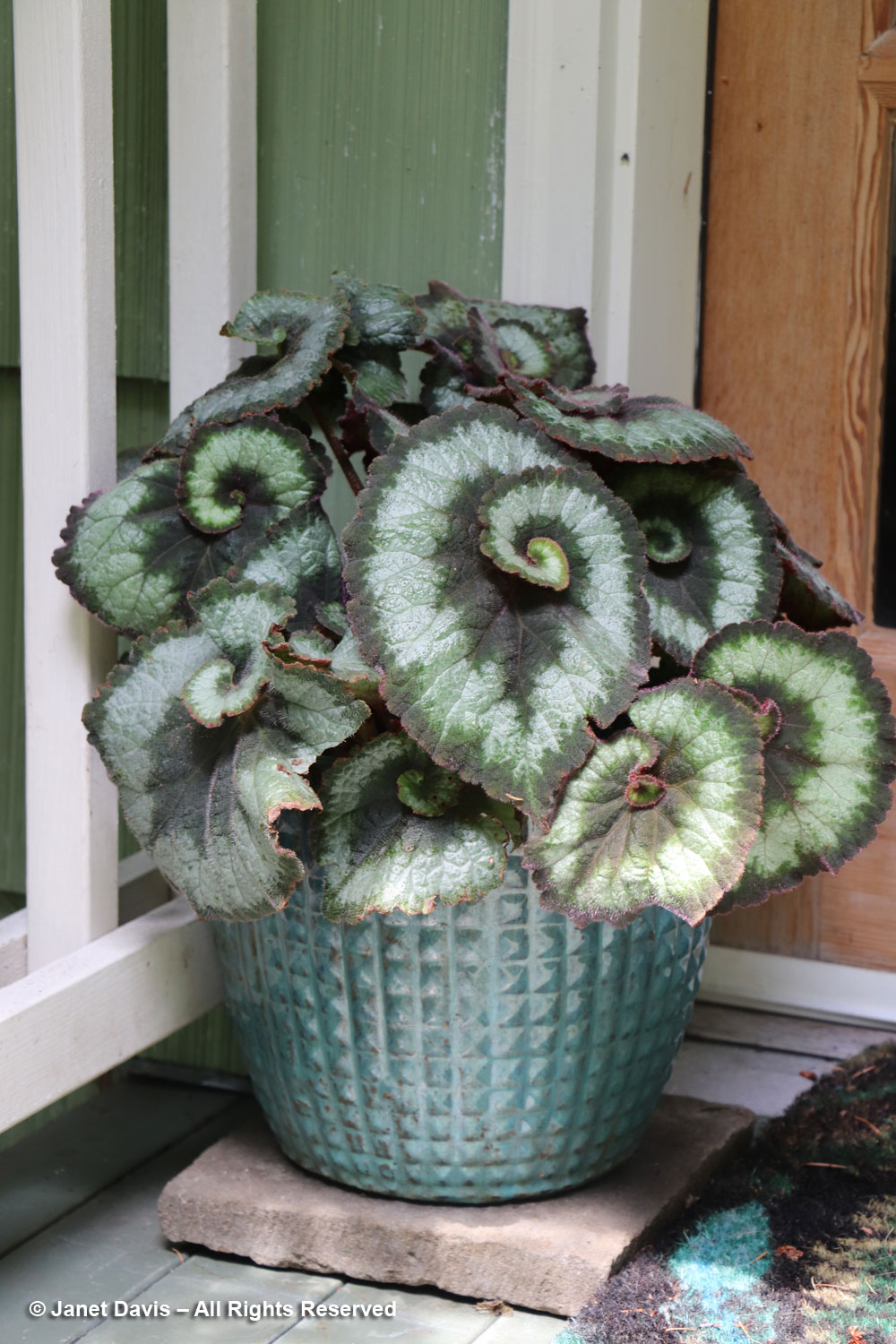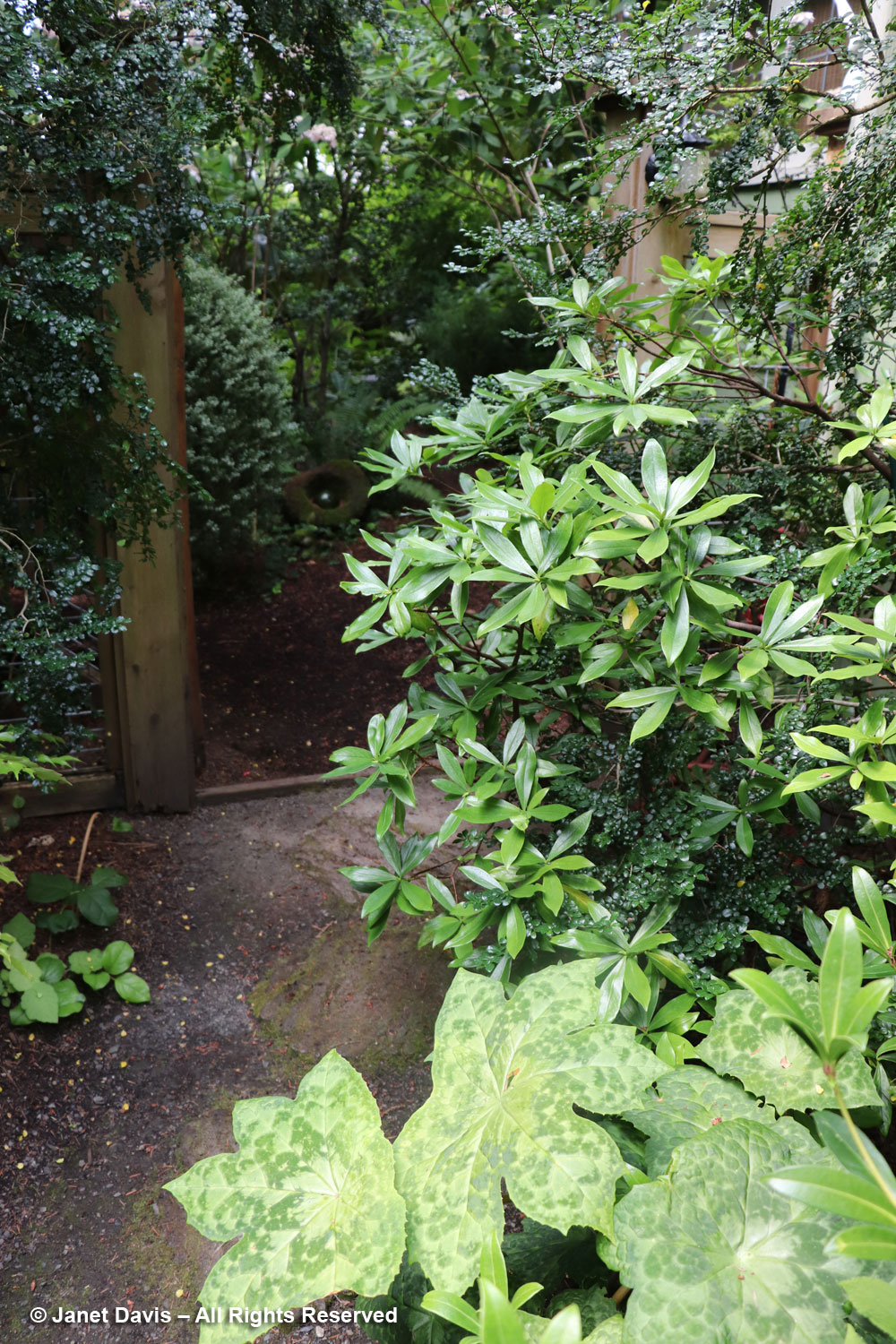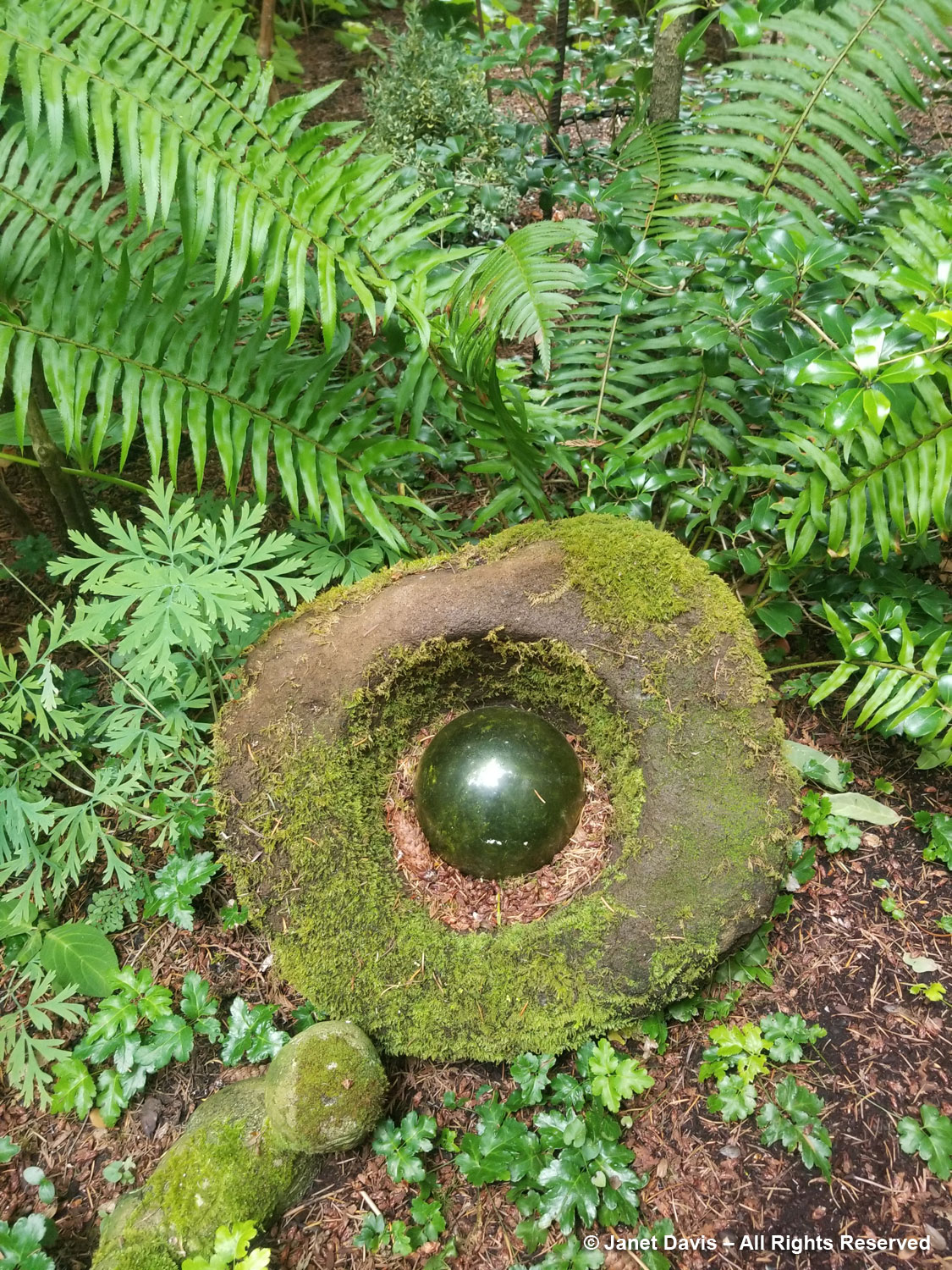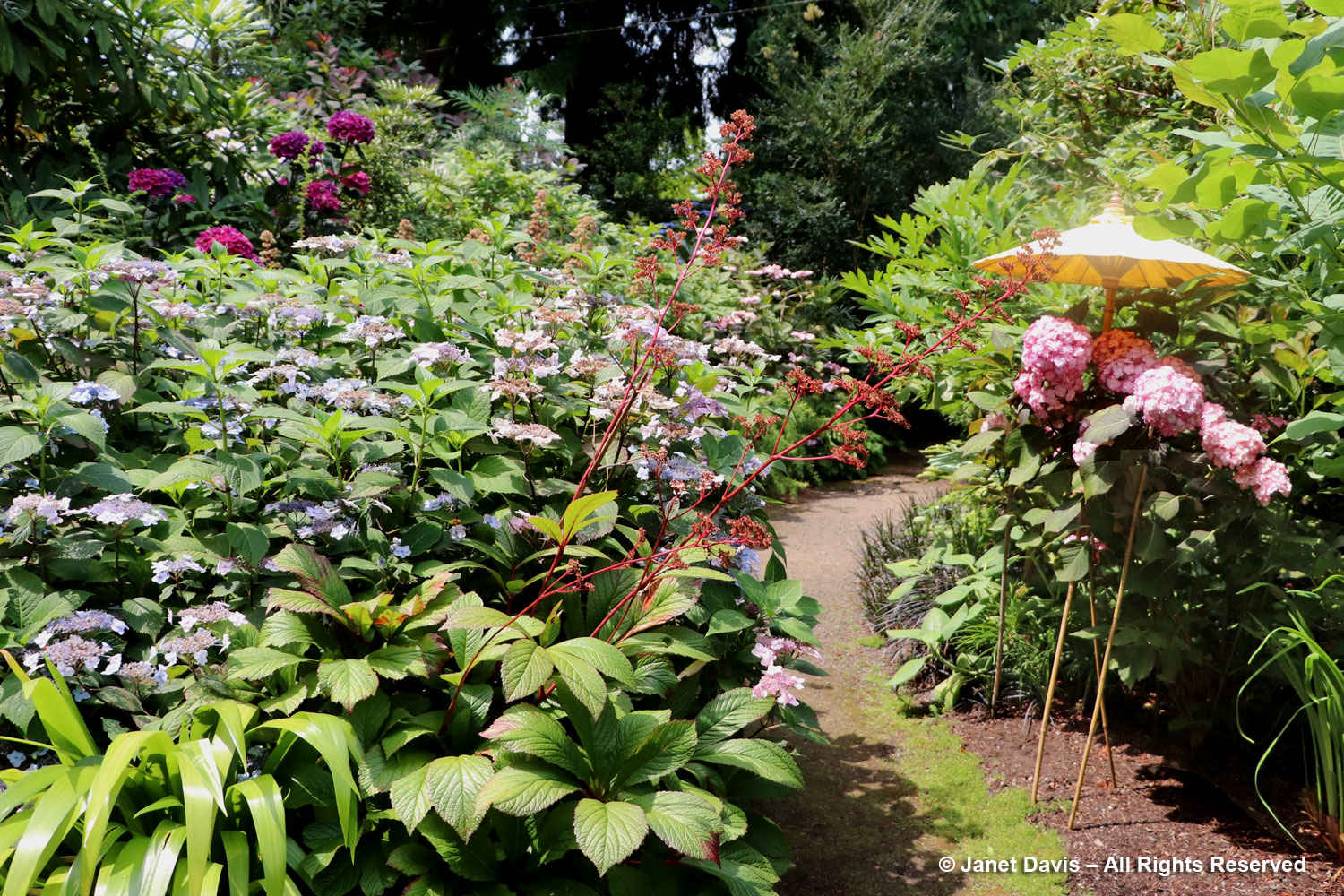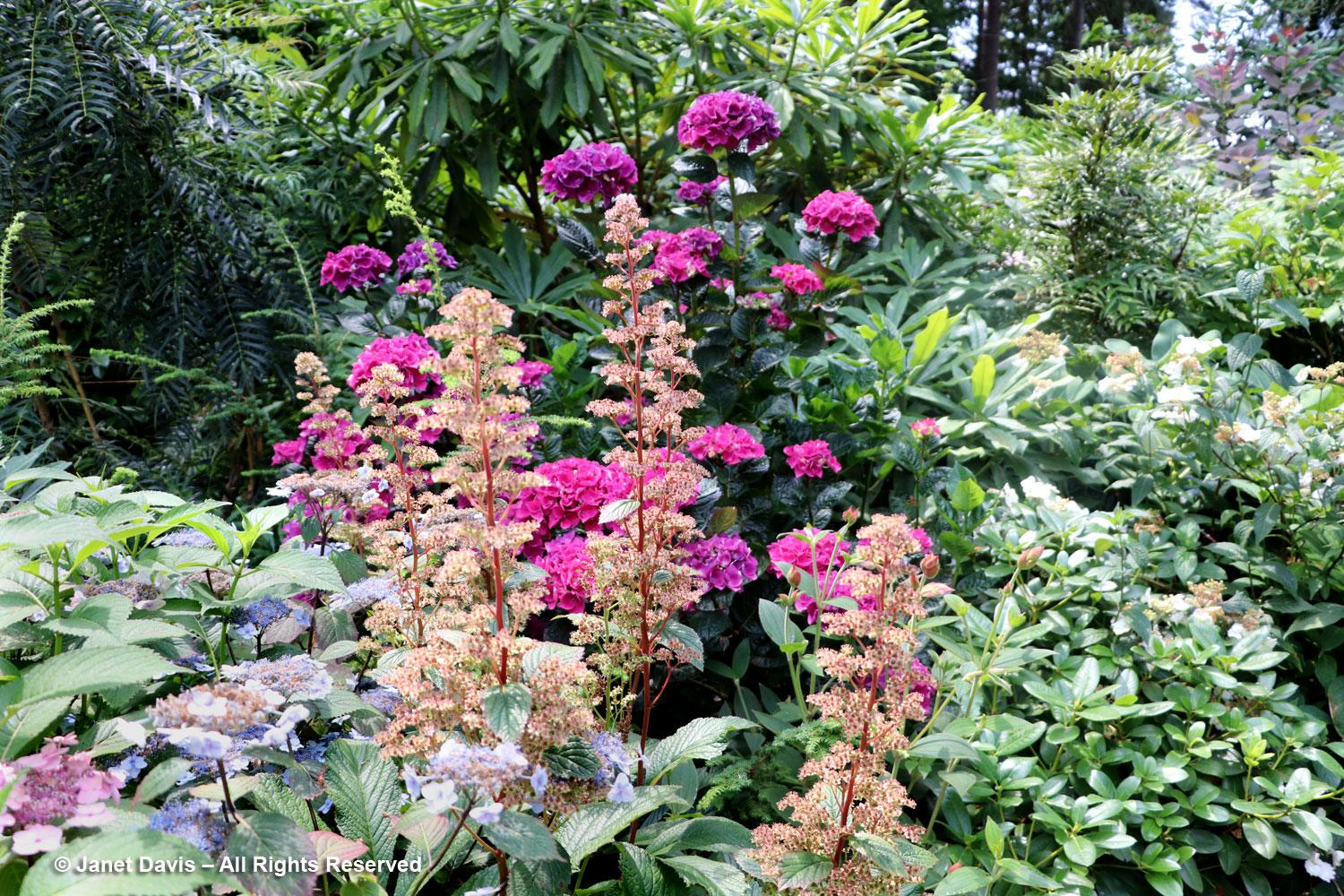Since my last blog explored a variety of arbours and pergolas, I thought it would be good to look at some of the garden arches I’ve photographed over the past few decades. Unlike the first two structures, I consider an arch to be a more simple structure that marks a transition or entrance from one place to the other – often as part of a gate or fence – and sometimes framing a view. It might be rustic or formal, made of natural material or metal; curved or square-cornered; and hosting climbing vines or not. A garden that celebrates the arch is Chanticleer in Wayne, PA, whose Cutting Garden features a series of entwined willow arches that host clematis vines. (Read my 2-part blogs on wonderful Chanticleer in May, June and September).
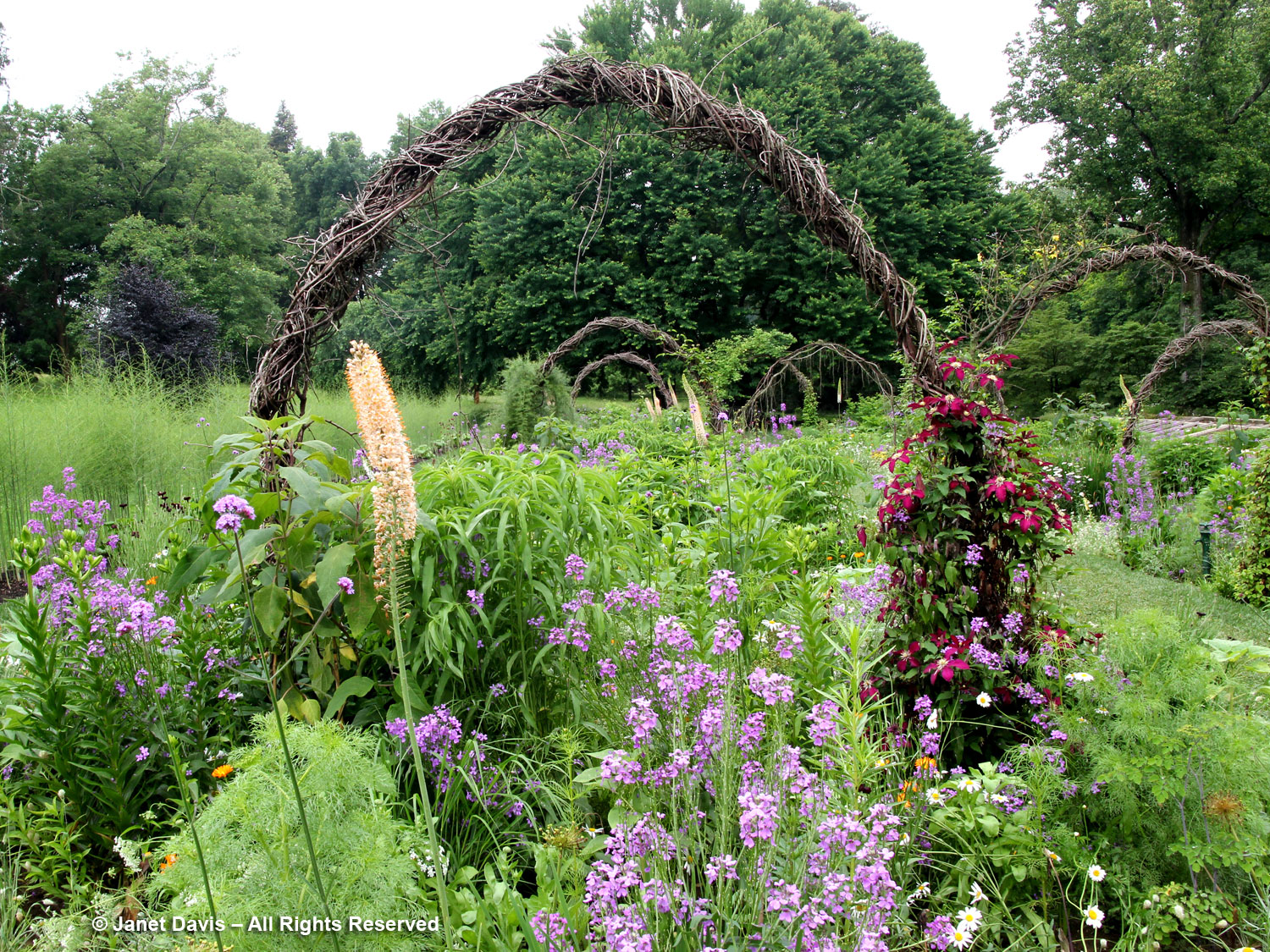
In Suzann Partridge’s extensive Muskoka garden north of Toronto, honeysuckle climbed a rustic bentwood arch each summer during her much-loved Artful Garden sale on behalf of area artists. This is the blog I wrote about her garden – and we all miss that great event.
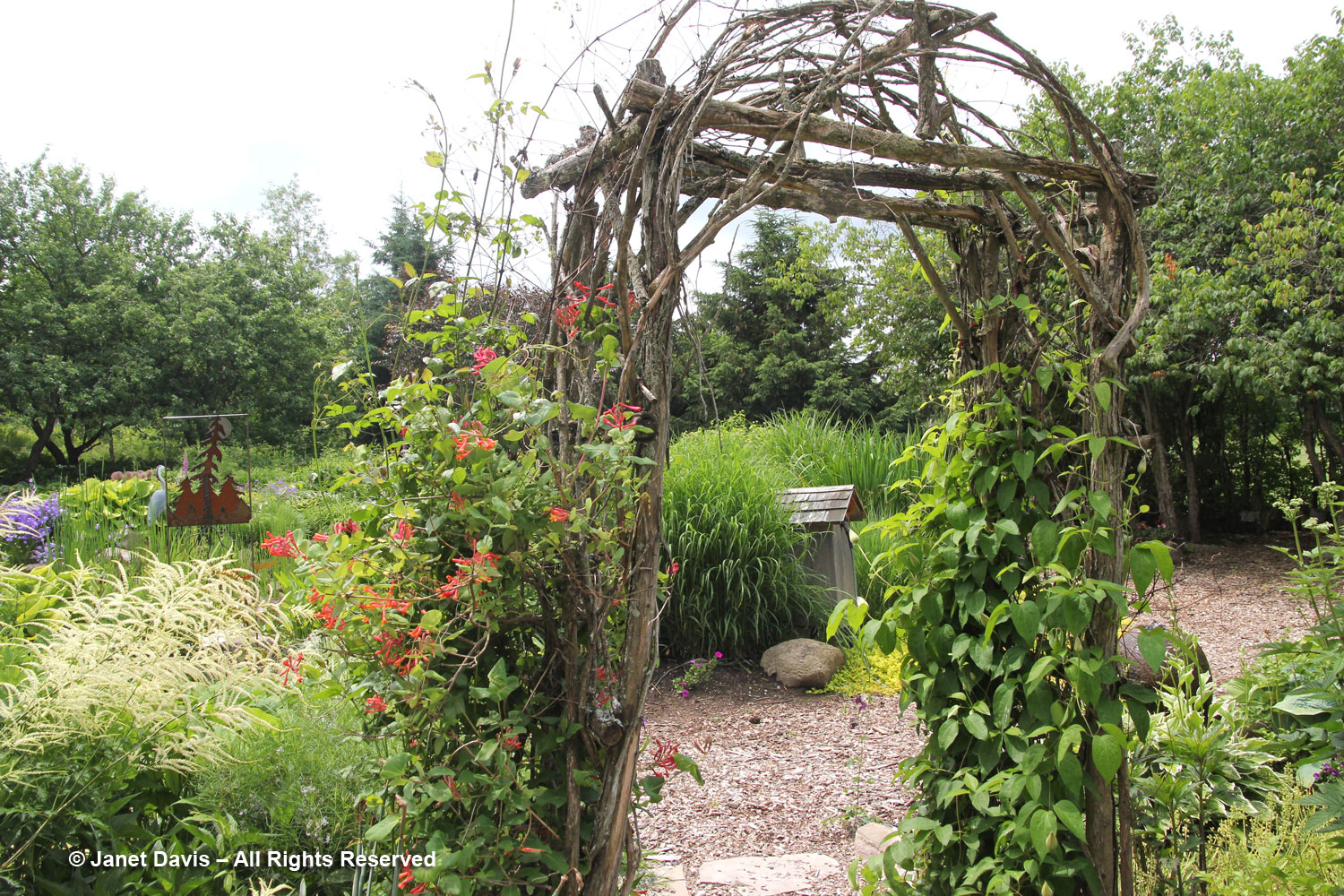
A similar rustic bentwood arch led visitors out of a garden at Toronto’s Casa Loma.
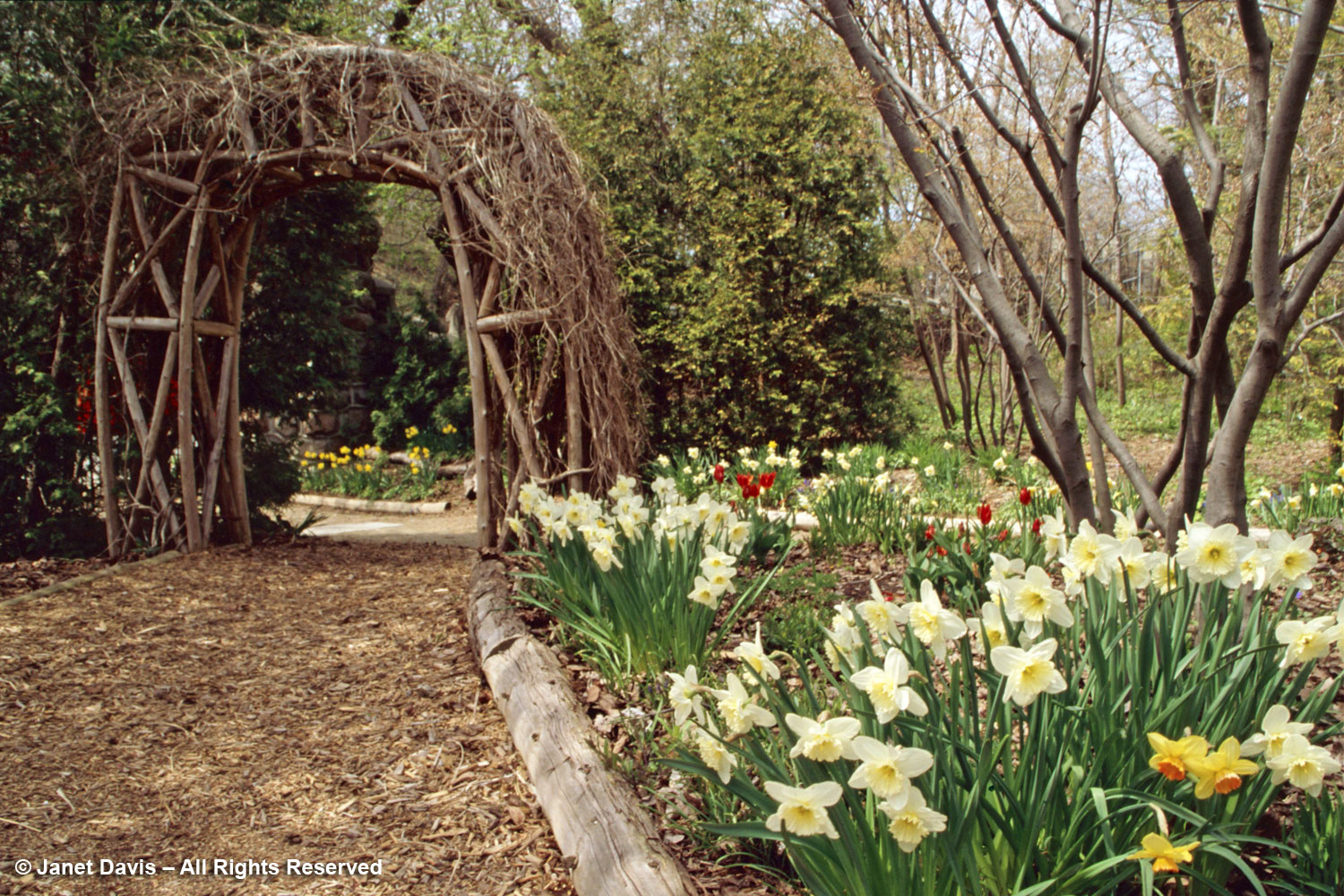
On a long-ago garden tour to Robin Ogilvie’s Caledon, Ontario farm, I was charmed by a David Warburton-designed garden enclosed by a willow wattle fence and arched willow gate created by artist Barbara Guy-Long.
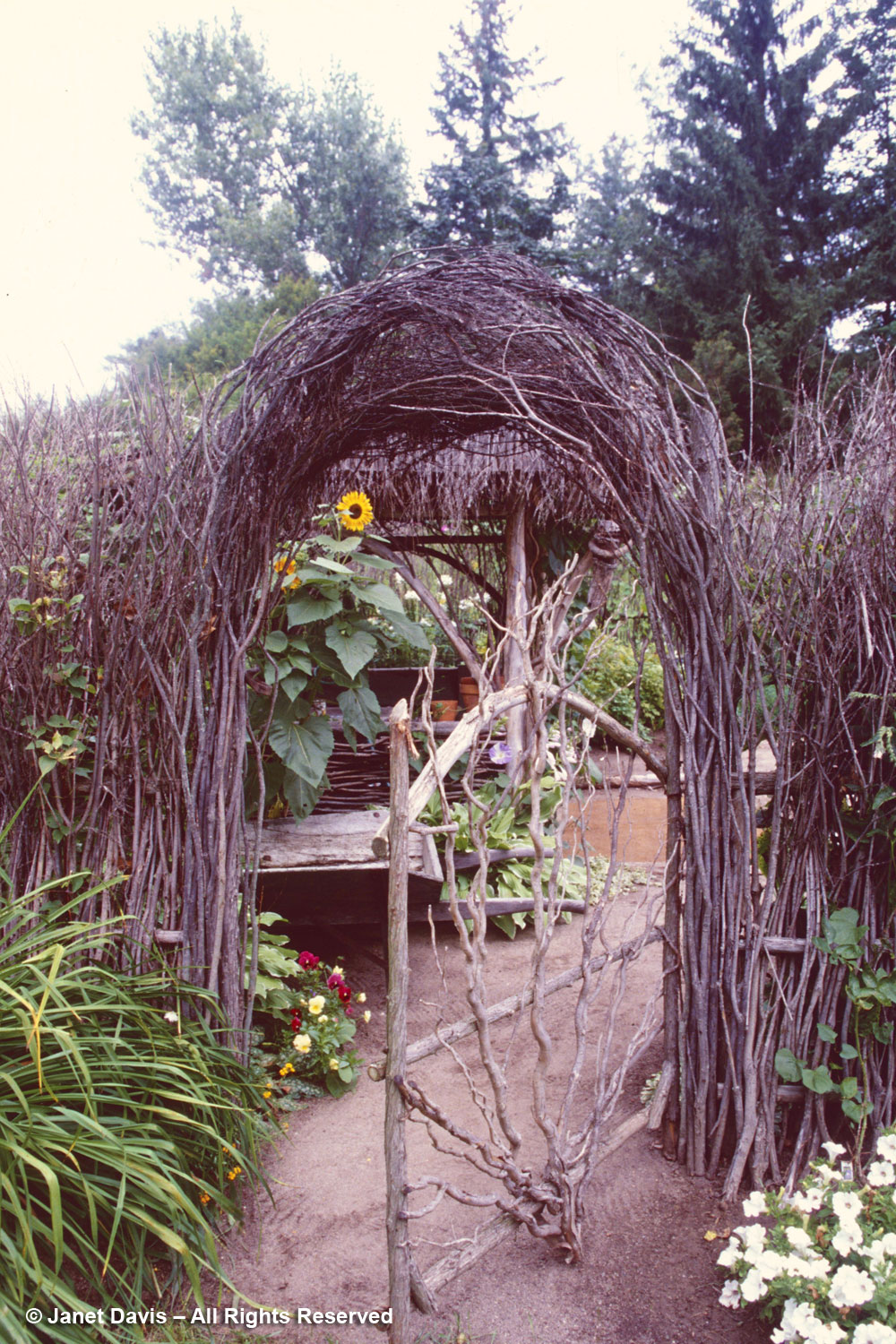
Derek Bennett had a beautiful, functional Toronto garden that I photographed in the 1990s. I especially loved this trellised arch wreathed in hop vine (Humulus lupulus) that led from one garden room to another.
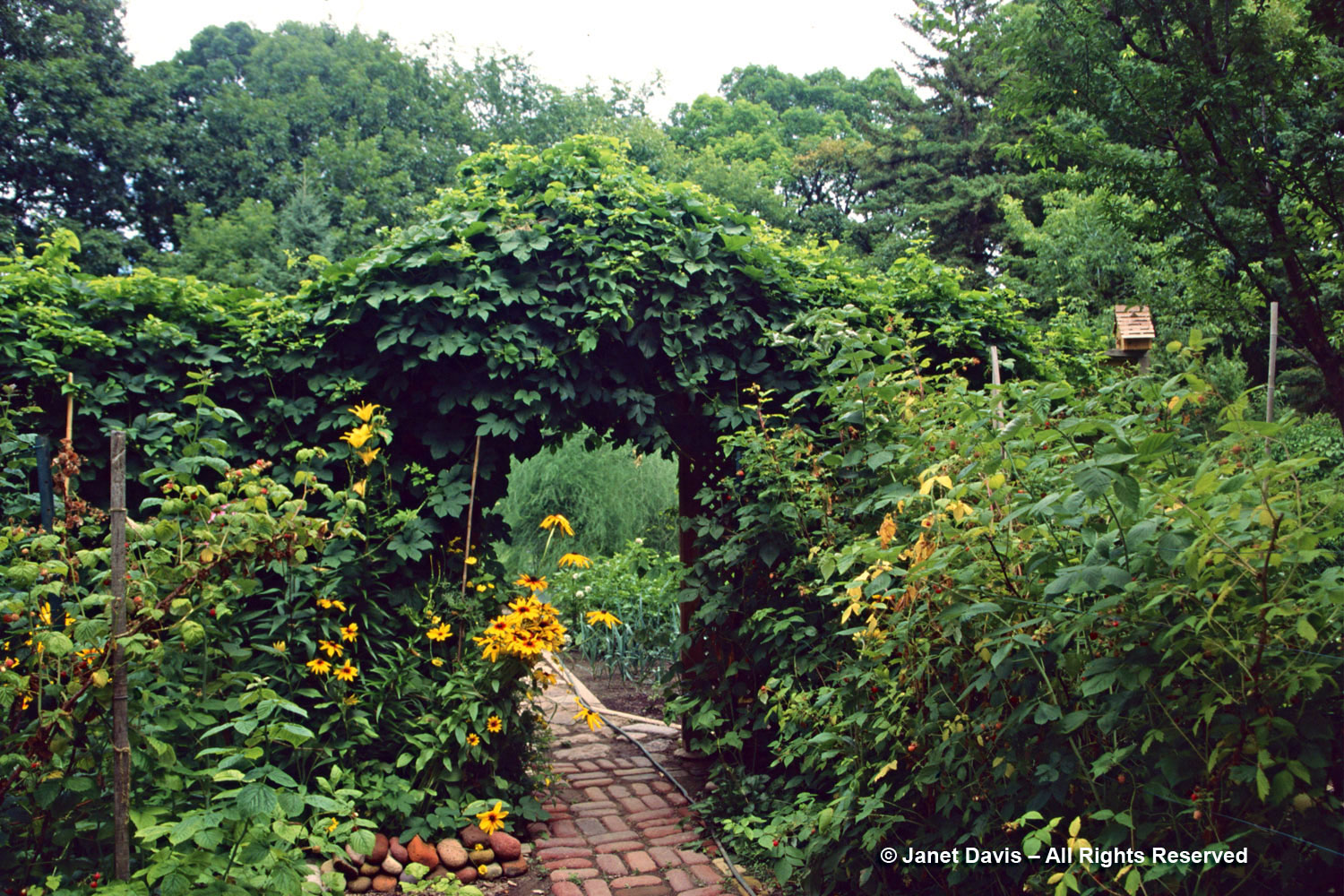
This wooden arch in the back of my artist friend Zora Buchanan’s former Toronto garden appeared to frame a bench, but in reality it led to the ‘utility’ section of her garden where the tool shed and compost bins were located.
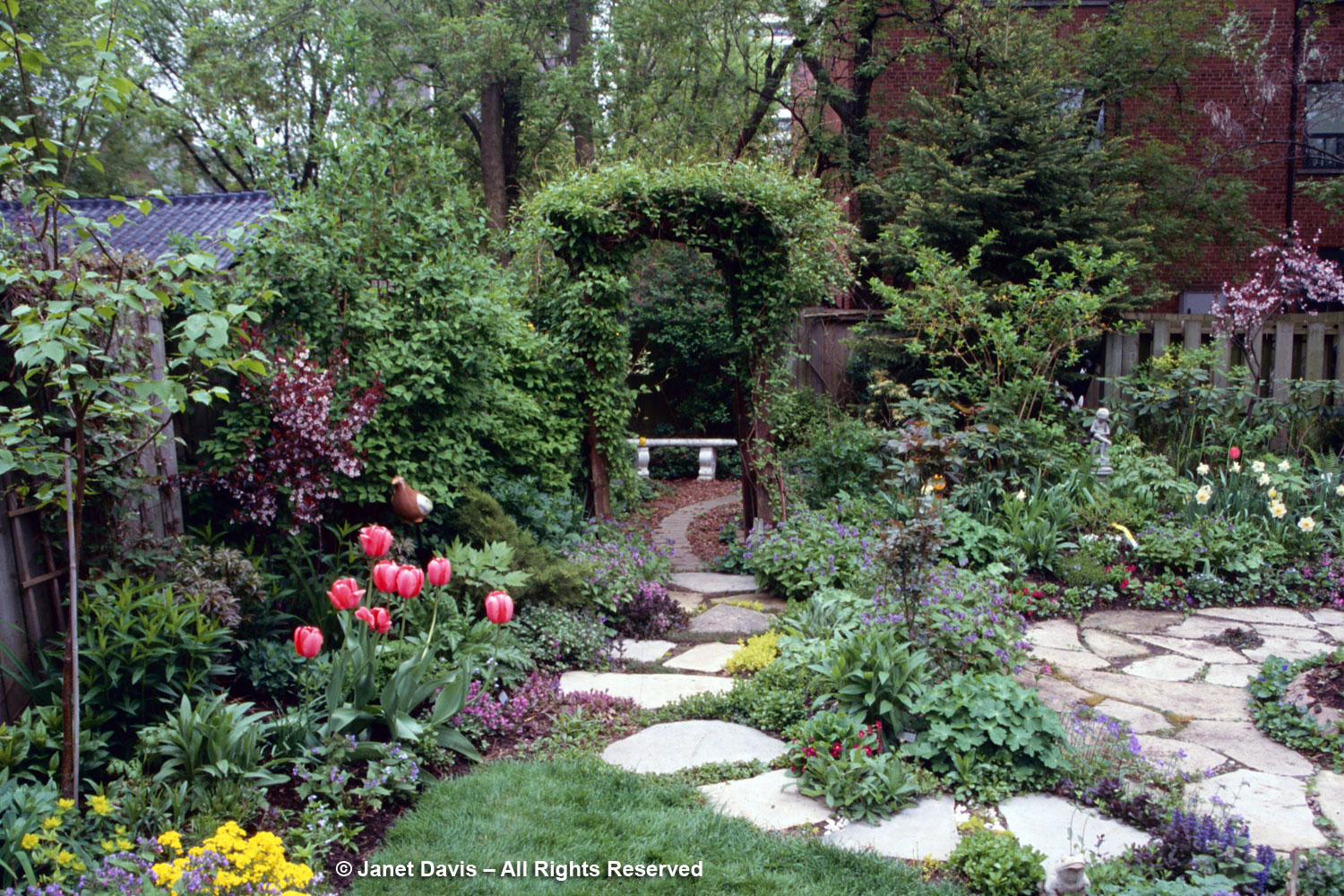
Nothing could be simpler than this 3-piece arch leading into The Québec Corner garden and its maple-hickory forest at the Montreal Botanical Garden. In a way, it reminded me of a Japanese torii gate. (If you love shade plants, I wrote a blog about MBG’s spectacular shade garden some years ago.)
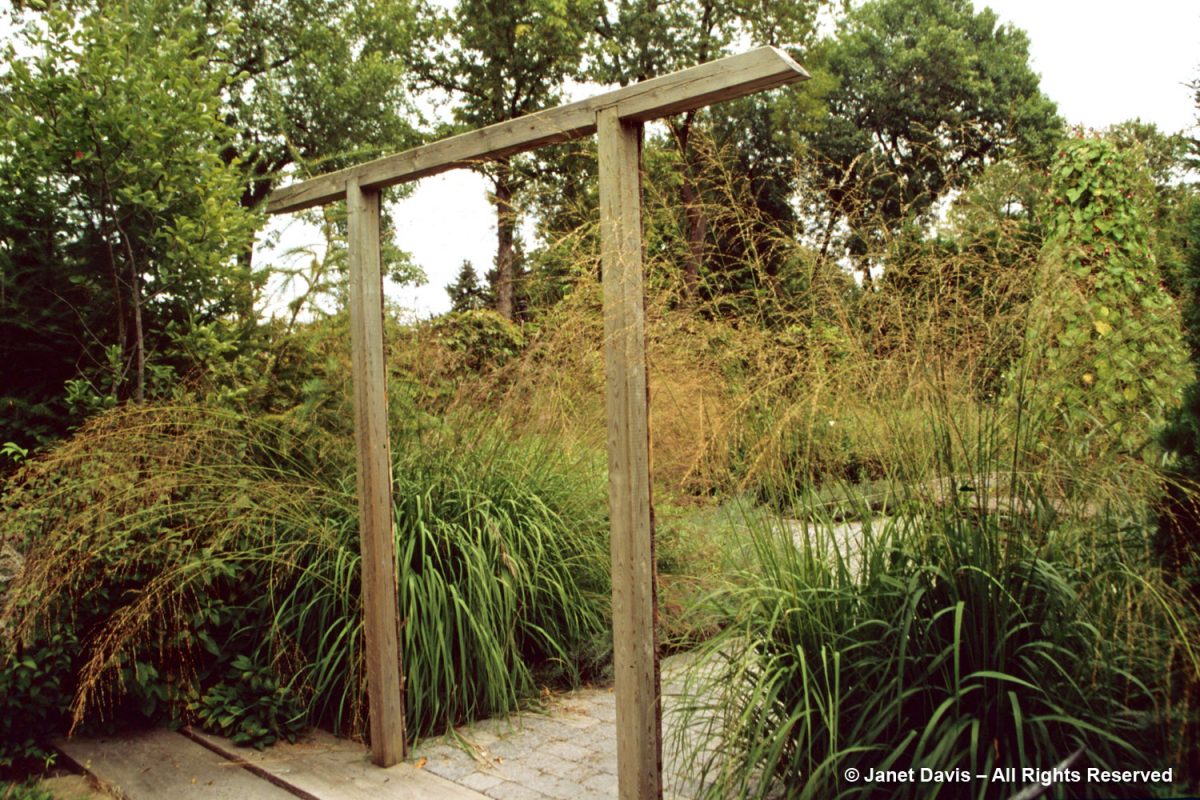
A wooden arch wreathed in ‘New Dawn’ climbing rose spanned a path in a garden near my home in Toronto. Like many of the more substantial arches in my collection, the uprights for this structure would be anchored in cement.
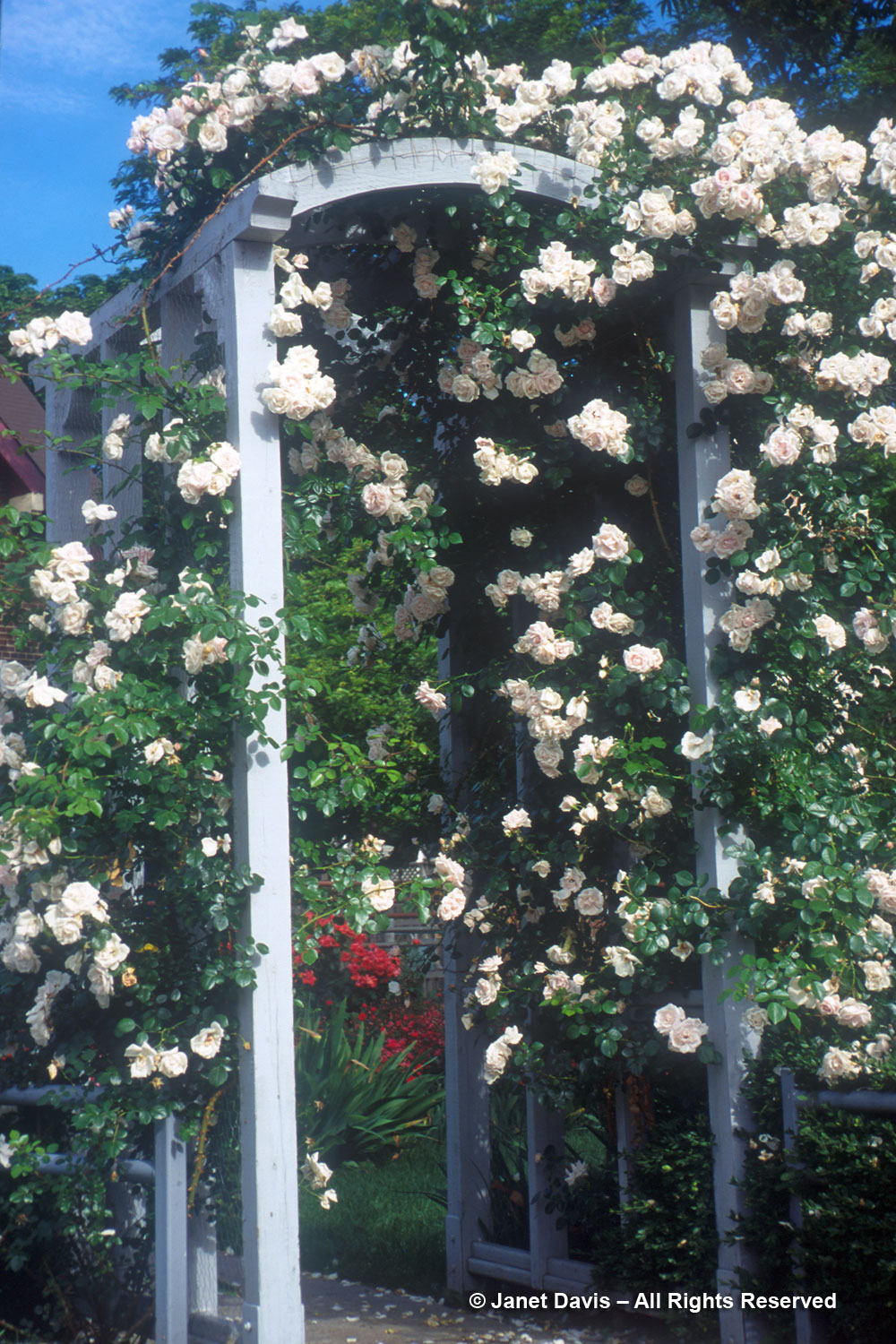
An interesting asssemblage of steel mesh structures formed this artistic arch in Toronto landscape architect Sheila Murray-Belisle’s garden on Ward’s Island. I visited in spring but roses were already climbing the uprights.
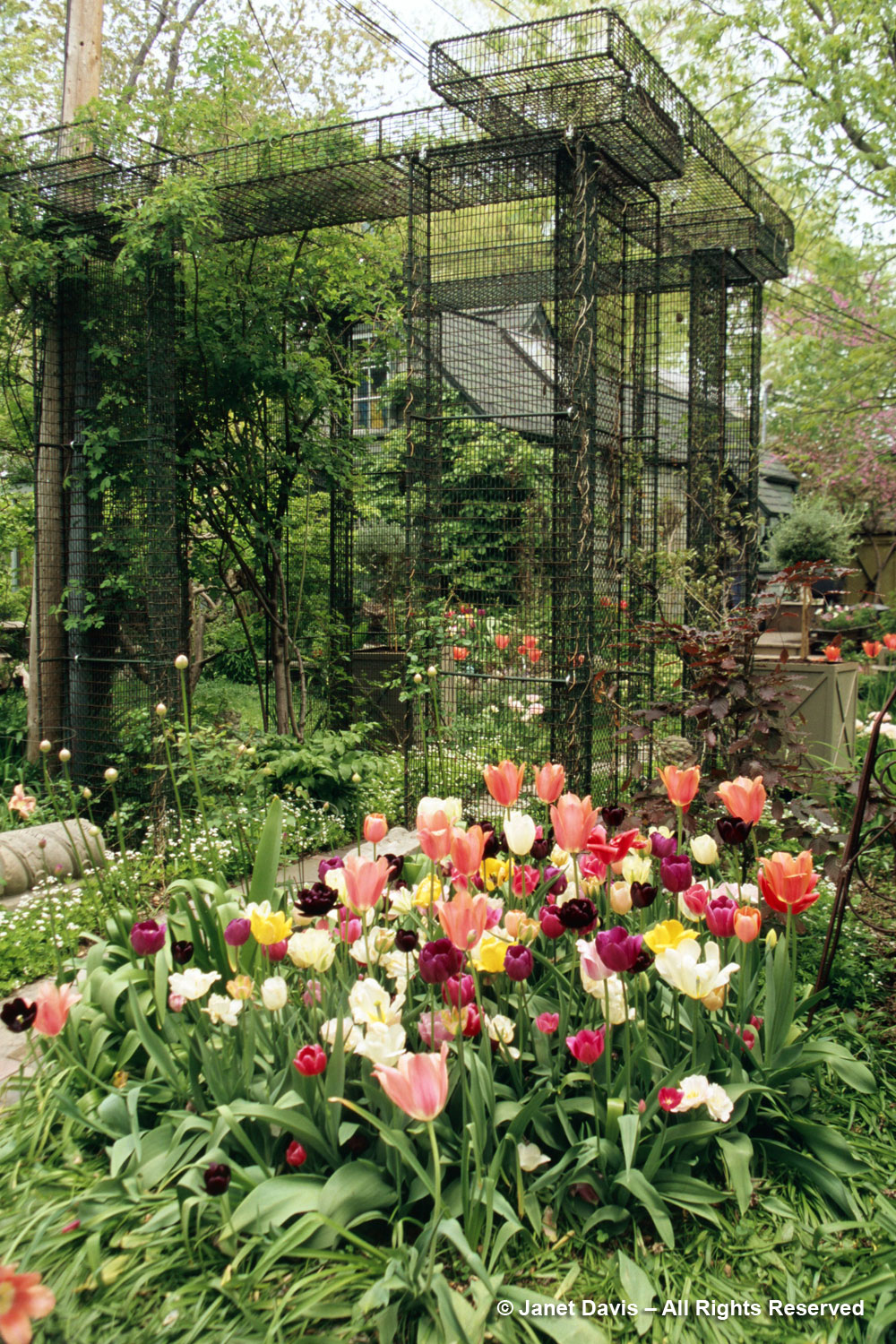
The colour blue was a central theme in Linda Hostetler’s former garden in Plains, Virginia where this metal arch formed part of the journey. I wrote a blog called ‘Rhapsody in Blue’ about this fabulous garden.
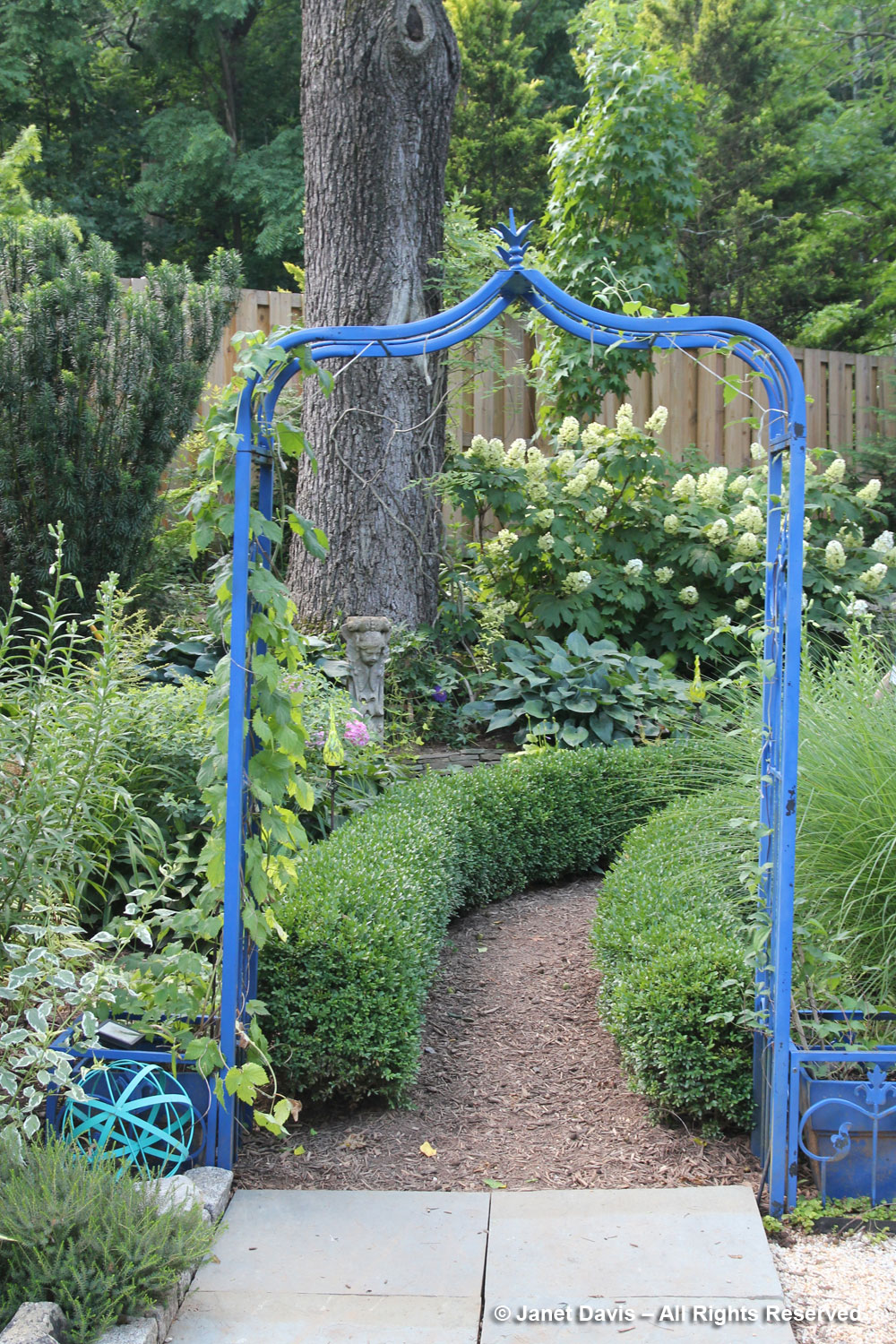
The Royal Botanical Garden in Burlington, Ontario found a metal fabricator who could turn industrial rebar into a charming arch hosting yellow-flowered Clematis tangutica.
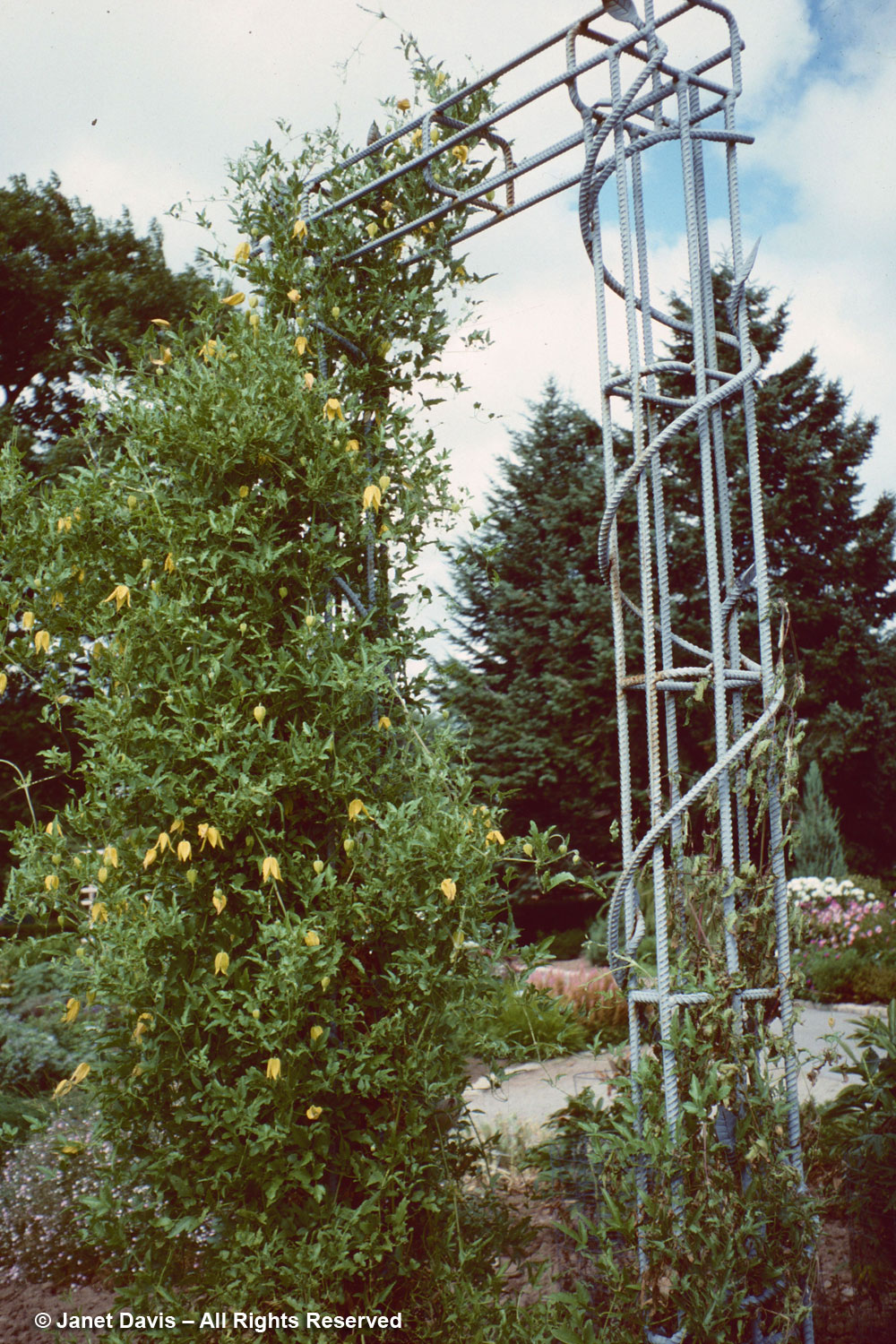
Technically, the asymmetrical structure over my pal Marjorie Harris’s former garden path in Toronto might be called a colonnade or pergola, but it featured a series of geometric arches that led past a stunning display of foliage plants to the very back of the garden and a place to sit. And yes, I blogged about my visit to Marjorie’s garden.
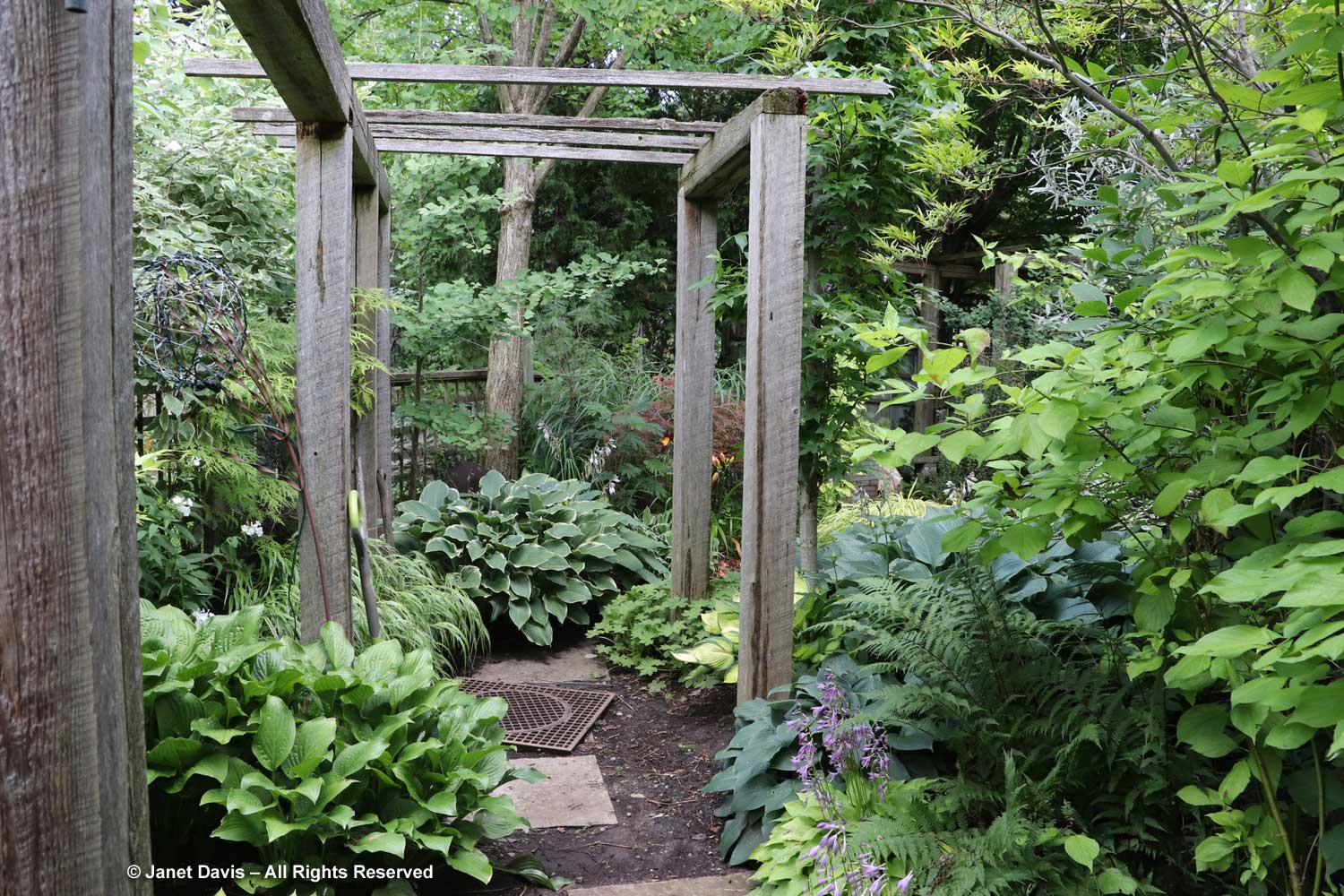
Hugh Stout is famous for his nursery in Oklahoma specializing in irises. But I photographed this lovely carved arch in his private garden on a tour long ago.
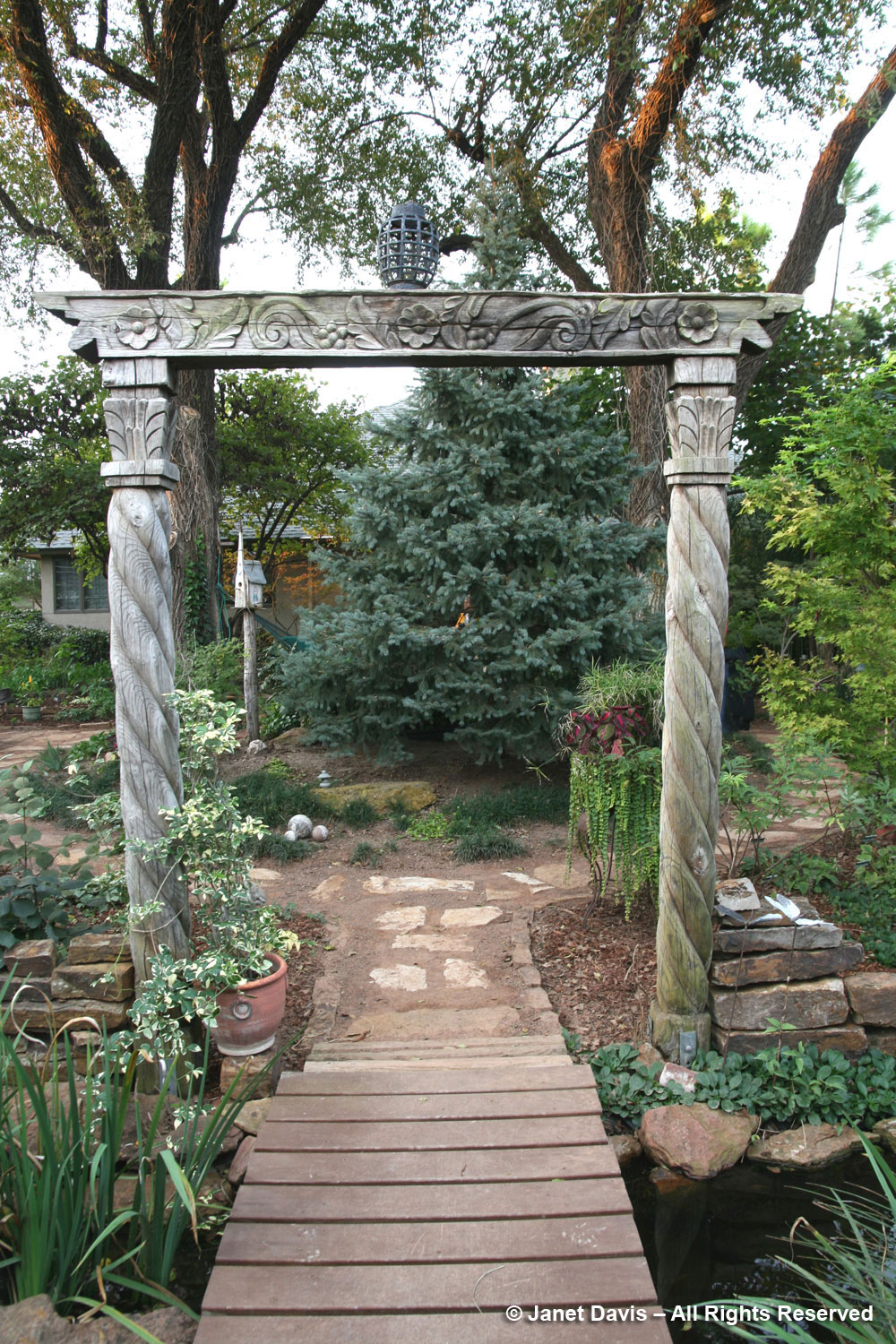
At Cady’s Falls Garden in Morrisville, Vermont, a tamarack (Larix spp.) had been trained over a metal framework to provide a living arch spanning a garden path.
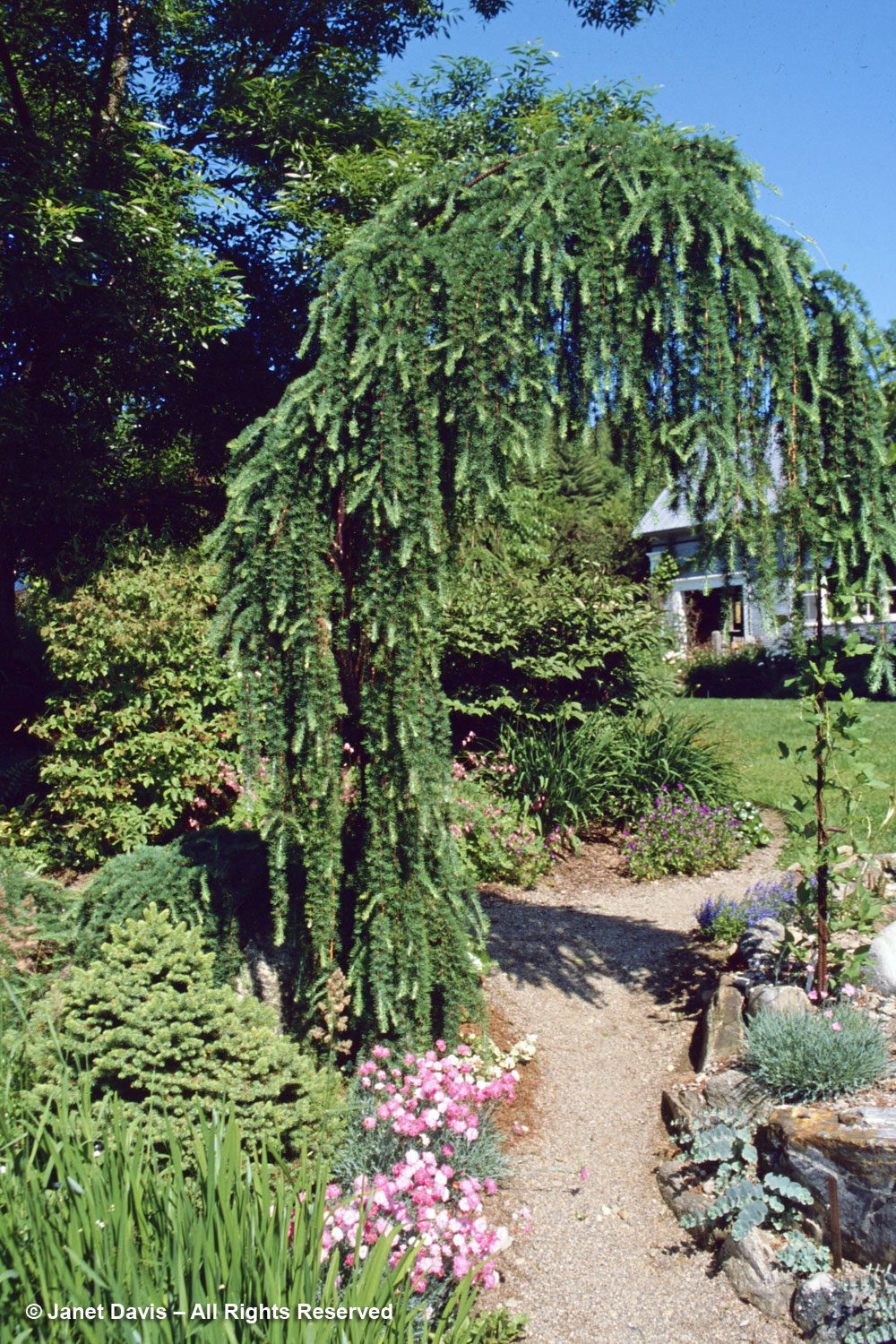
Another structure that might have fit my ‘arbour’ blog (because of its built-in bench) is the arched lathe house at Montrose Garden in Hillsborough, North Carolina. And look at those bananas on the far side!
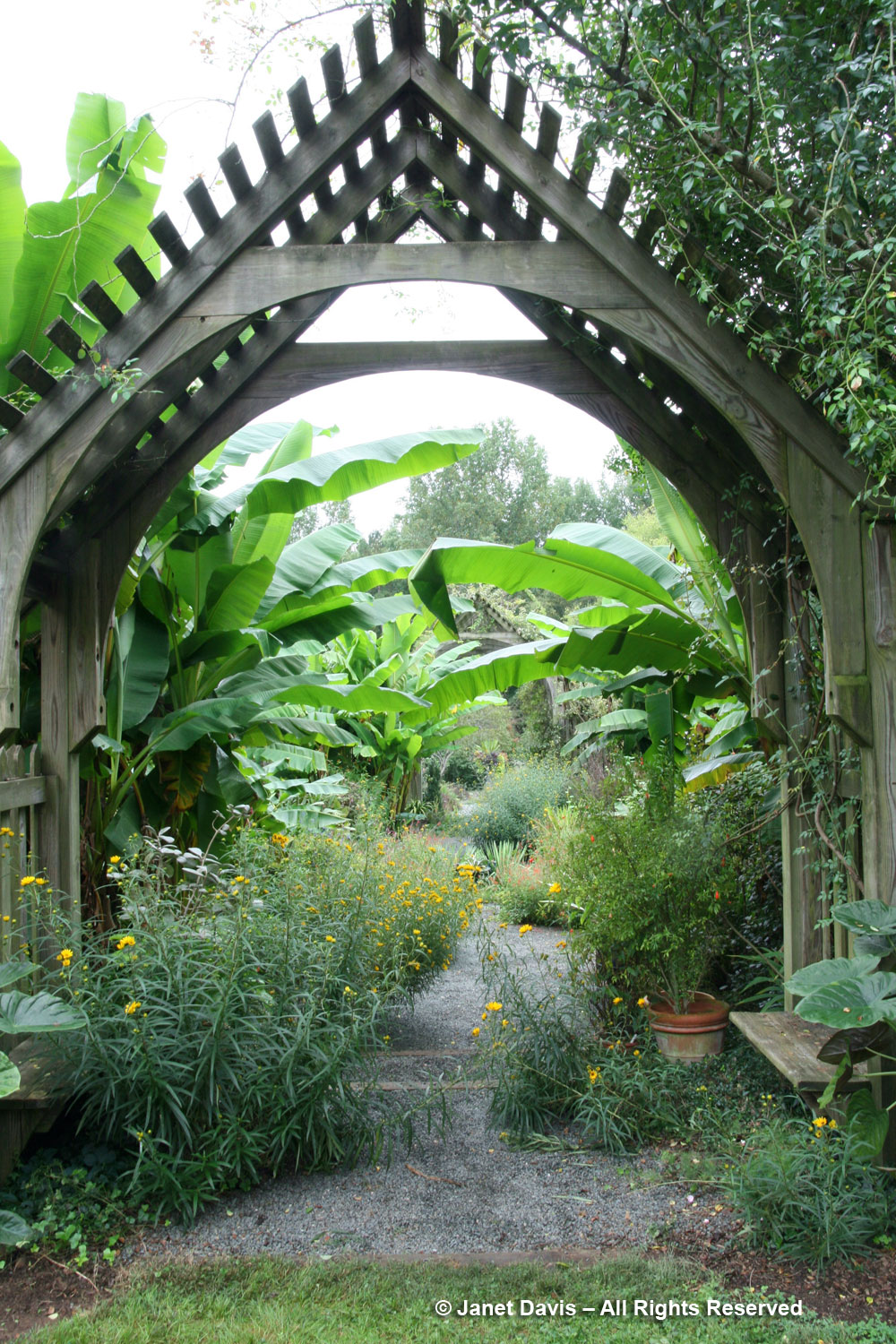
A series of fabricated metal arches with entwined vines span a path in the Children’s Garden at Chicago’s Morton Arboretum.
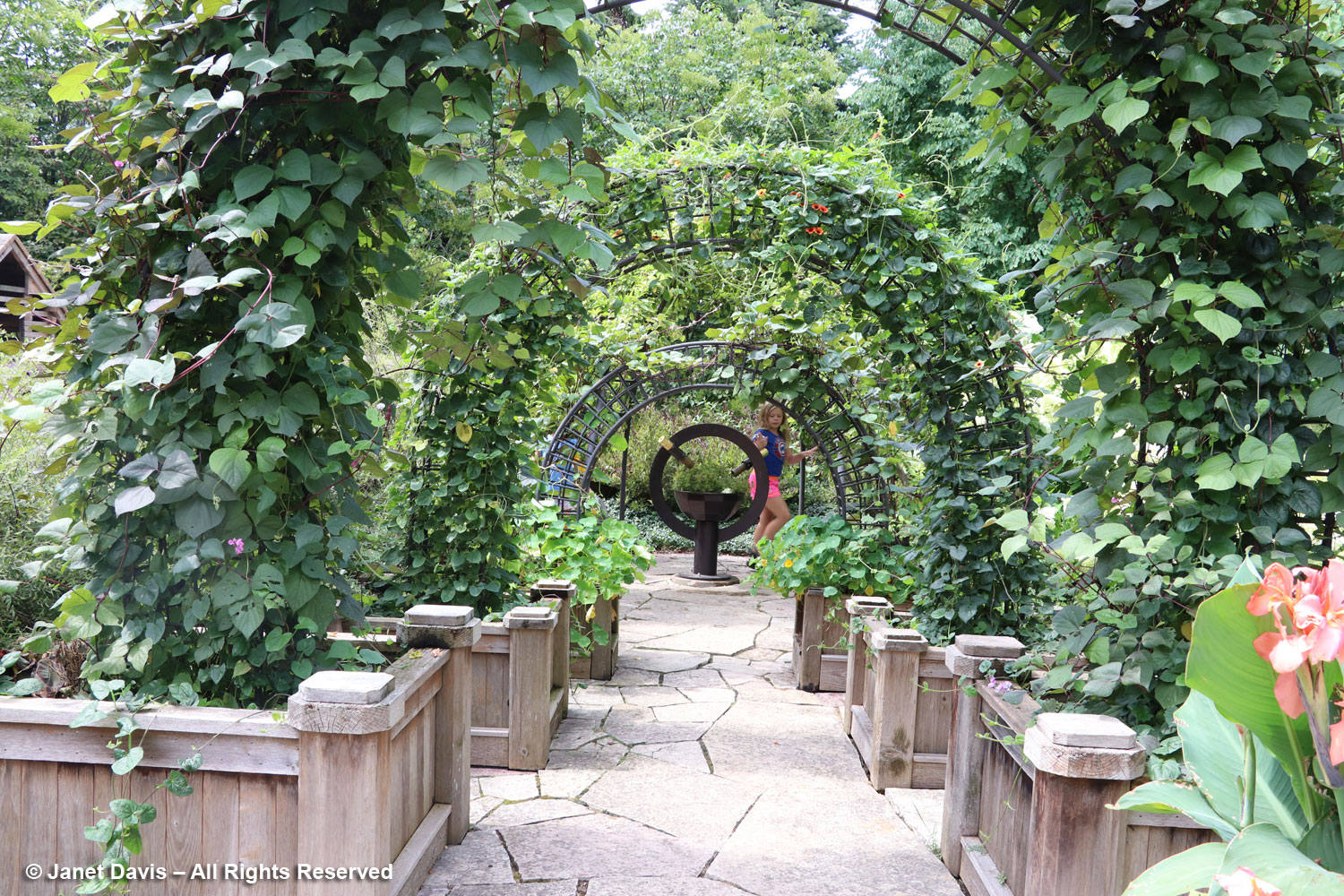
A colonnade of brick pillars supporting sturdy beams in the Chicago Botanic Garden’s Regenstein Fruit & Vegetable Garden features grape vines. (Here’s my blog on one of the best botanic gardens around!)
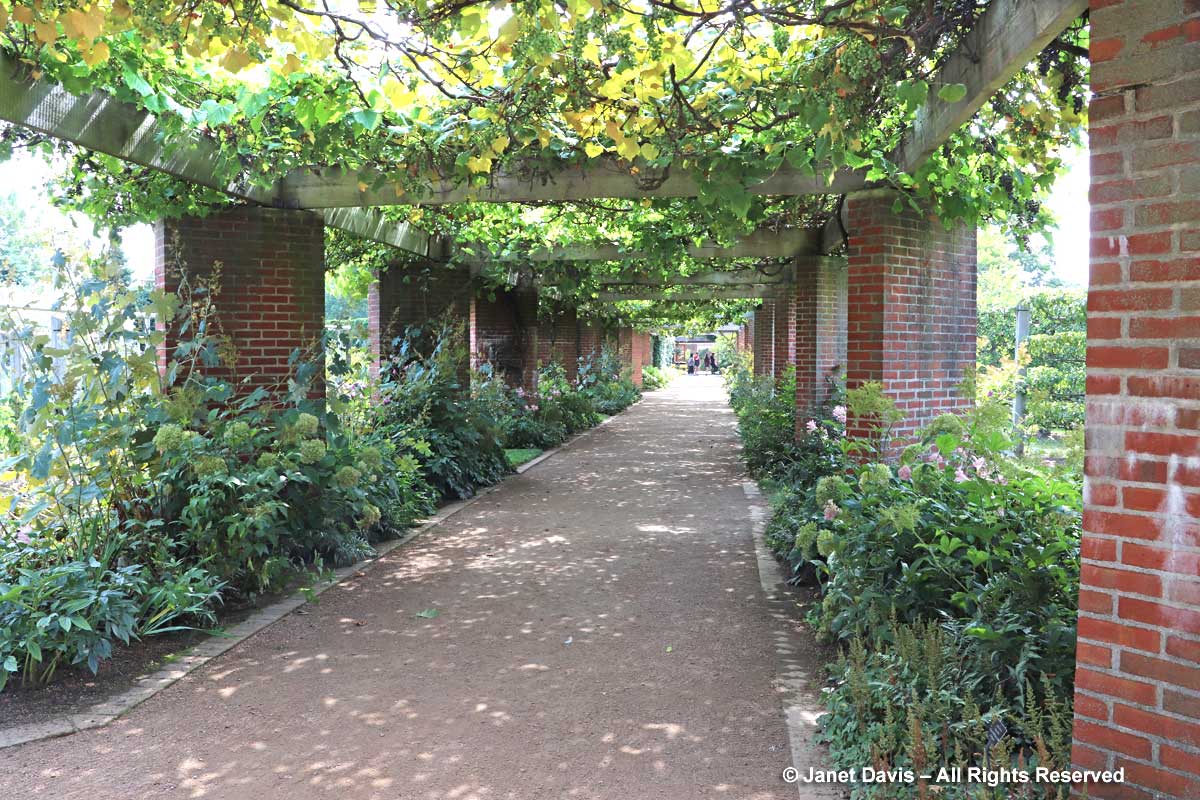
At Babylonstoren in South Africa, one of the finest gardens I’ve visited – and blogged about – climbing roses are grown on airy gazebo-like structures that form arches above a central path.
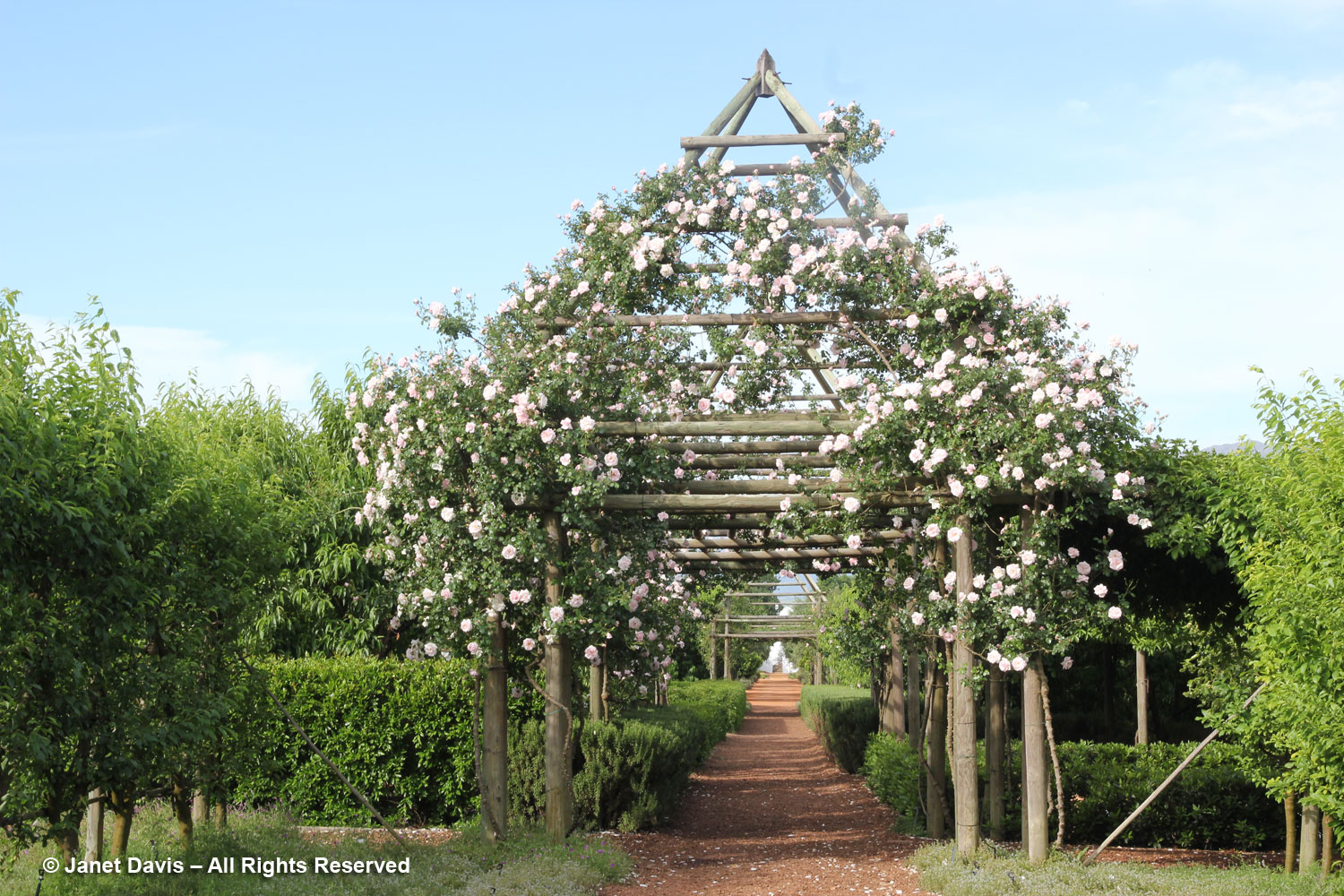
The gardens at Filoli near San Francisco feature a brick wall with the “Bourn Door” (named for the original owner) leading out into the main garden. I’ve visited Filoli in springtime when that leafy ‘Phyllis Bide’ rambler rose above the door is in full, lovely bloom.
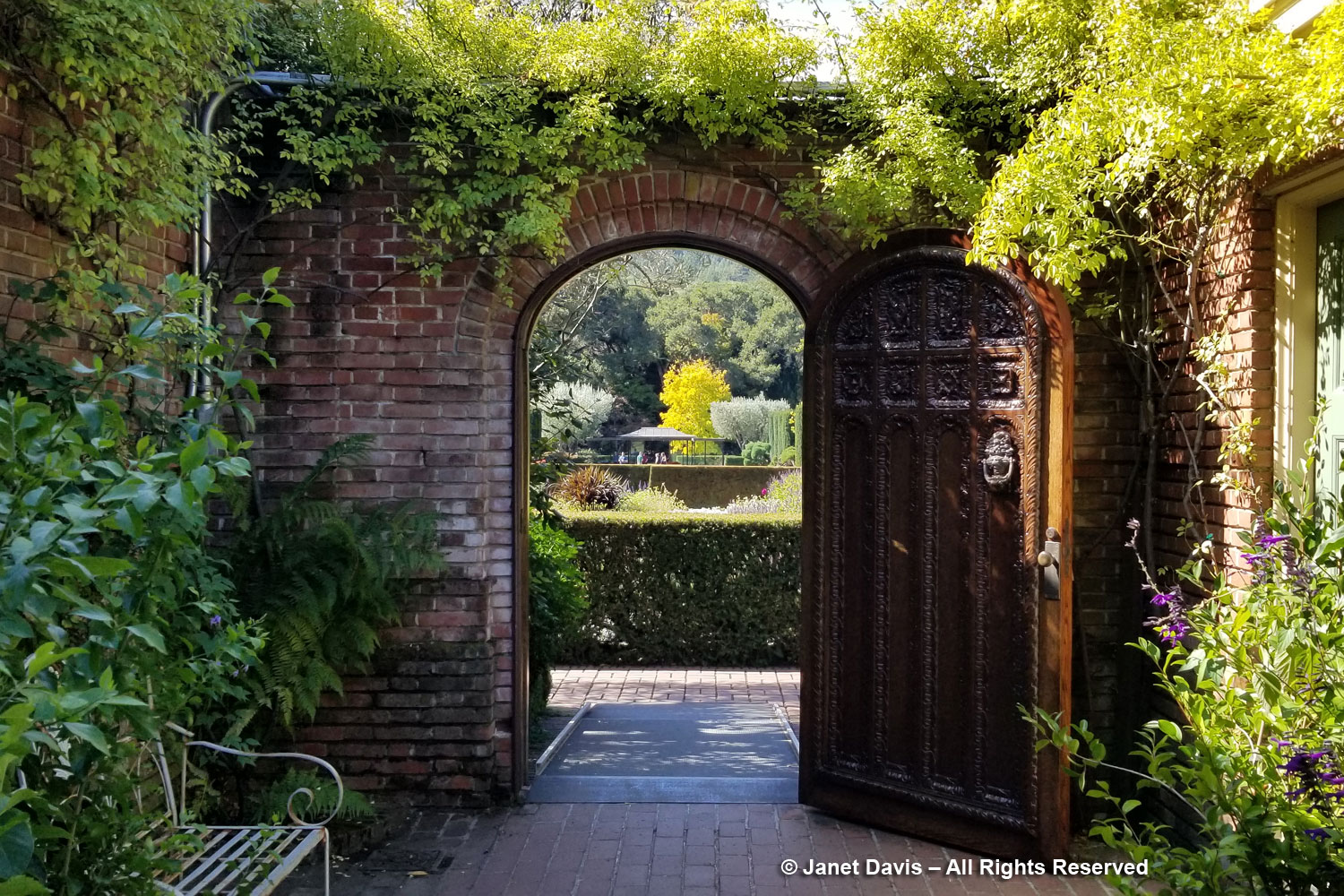
When I visited Bonnie Berk’s beautiful Seattle garden last July (see my blog on Casa Nirvana here), I was enchanted by this large decorative arch over a sitting area which Bonnie commissioned from metal sculptor Jim Honold. It is planted with the variegated vine Kadsura japonica ‘Chirimen’.
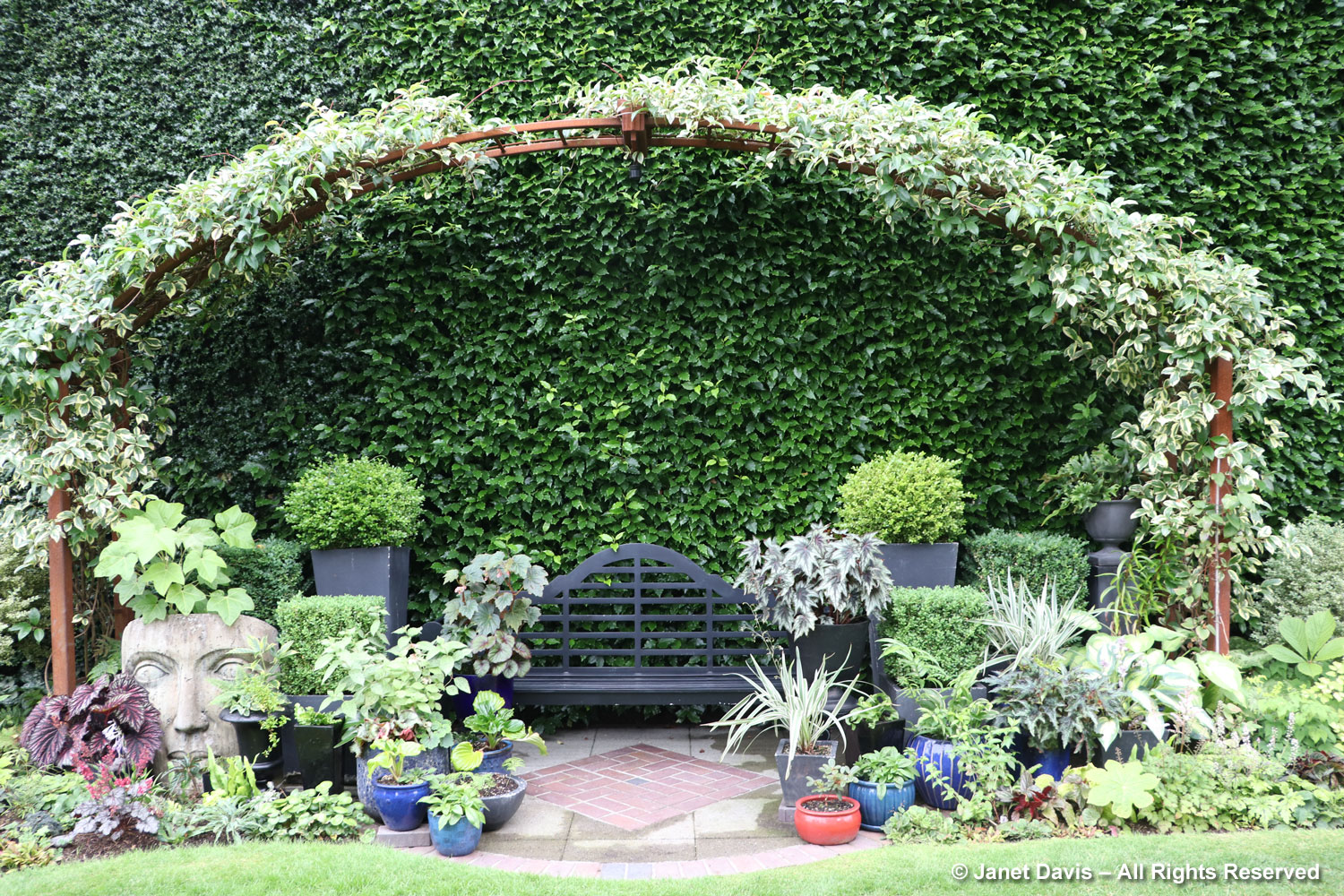
Each year, we visit Niagara-on-the-Lake with friends to attend plays put on by the Shaw Festival. For several of those summers, we stayed at a bed-and-breakfast called Lakewinds, which featured an expansive flower and vegetable garden. I even wrote a blog to celebrate the garden, which could be entered via an airy iron gate set within an arch and trellis fence.
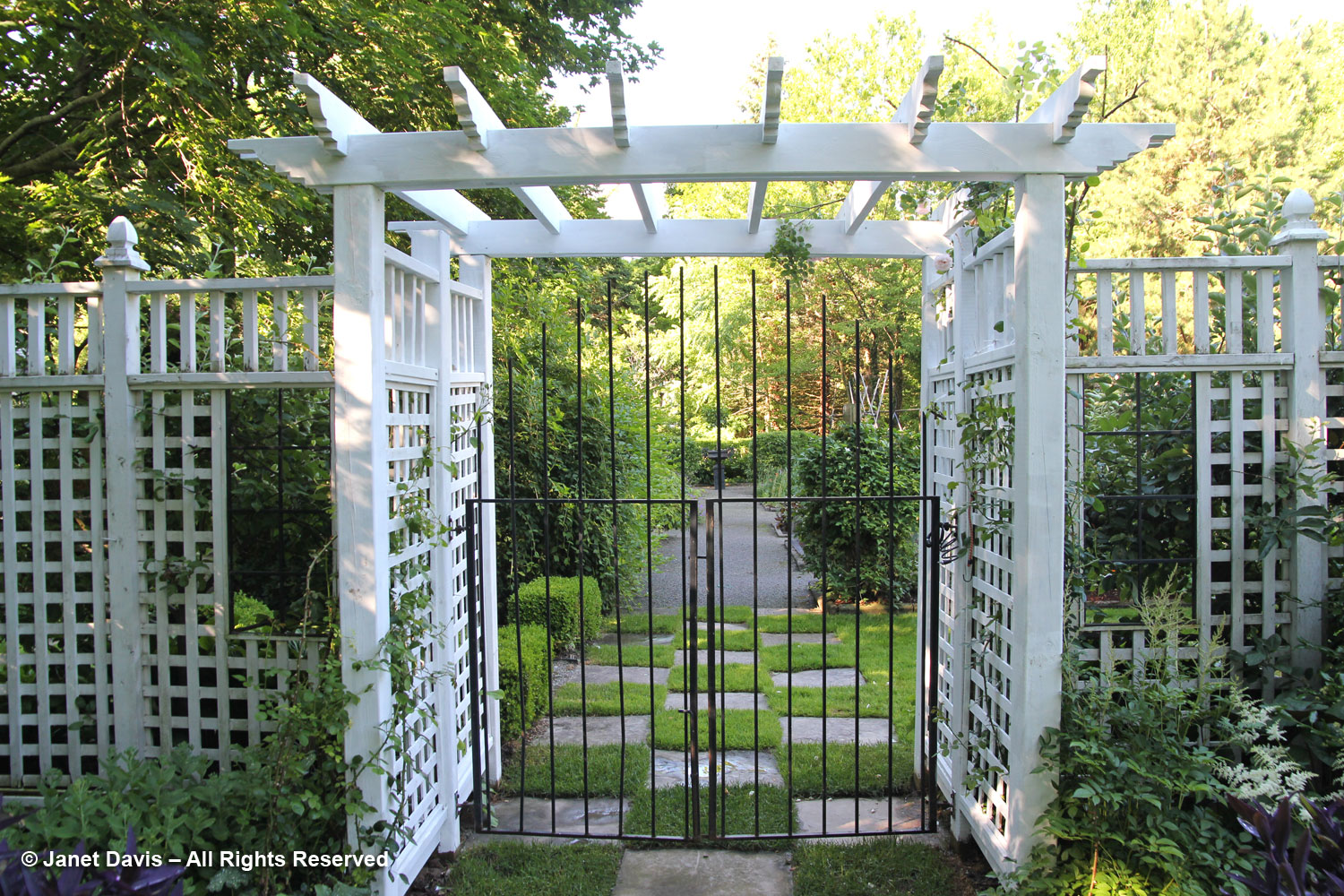
On a Toronto garden tour one year, I admired the design of this walk-through arch with its matching scalloped-top gate framing wooden spindles – the work of Acme Environmentals.
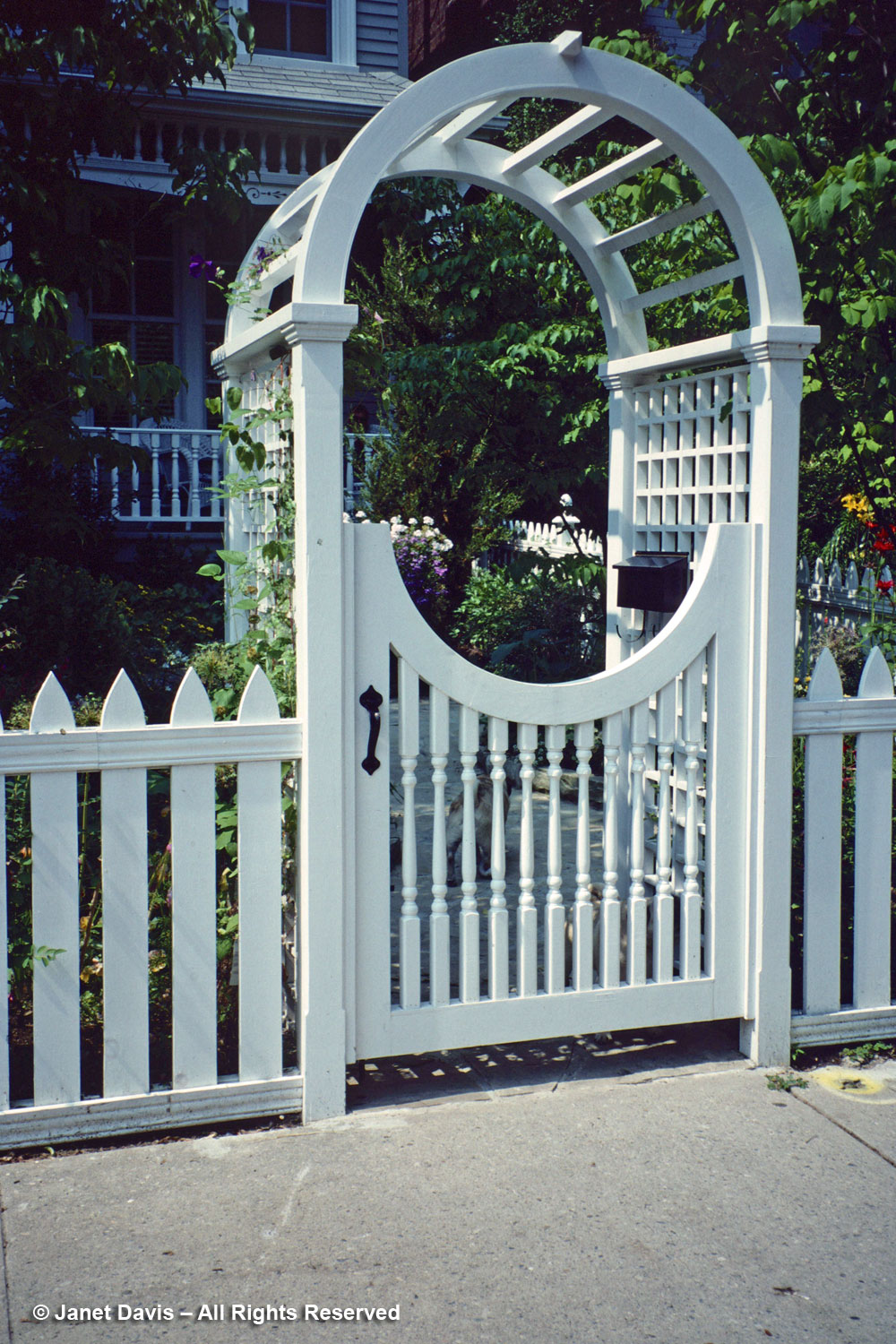
Peter Jones designed this attractive Toronto arched gate.
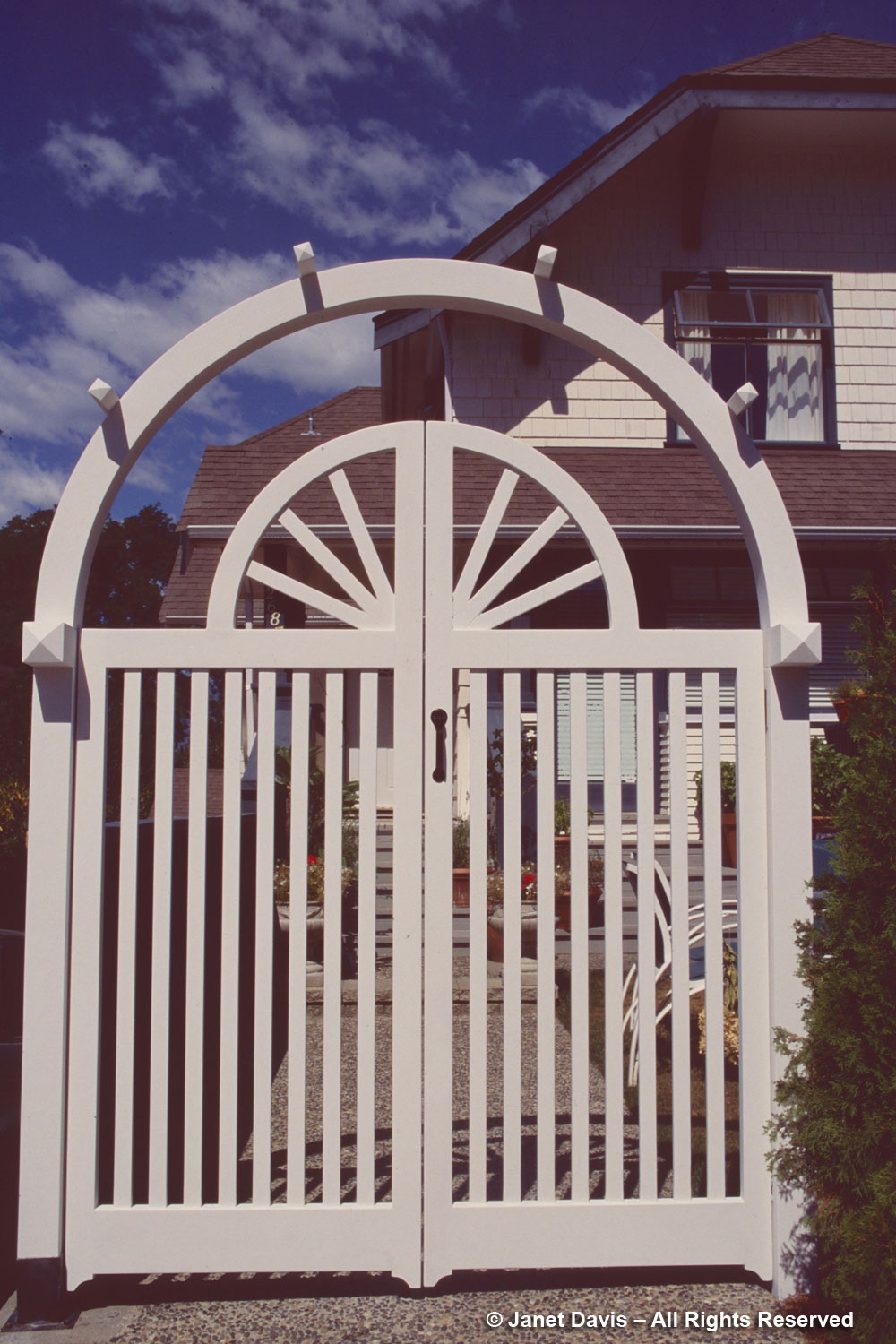
I photographed this handsome Dorothea Lovat-Dickson-designed arched gate, trellised fence and paved path in 1997. It’s now long gone, but I always loved Dorothea’s sense of occasion for the entry into this garden.
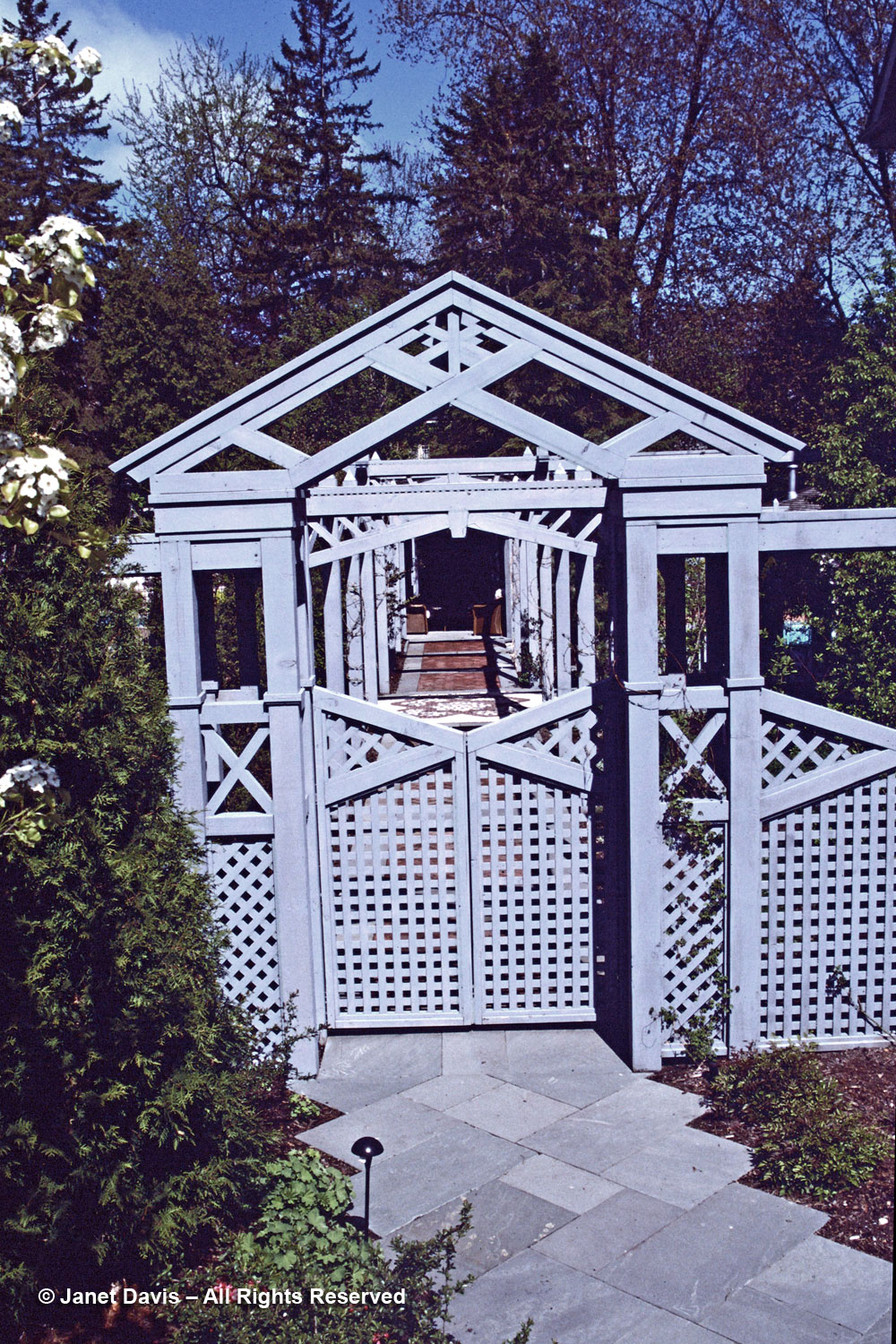
I’ll finish up with my own arched gate, built in 1988 and chosen as cover girl for the inaugural edition of Canadian Gardening magazine in spring 1990. (I featured this gate as part of my 2024 blog on my side garden and its path, “The Gate, the Grate, the Path” but it asked to be included with the arches here too.)
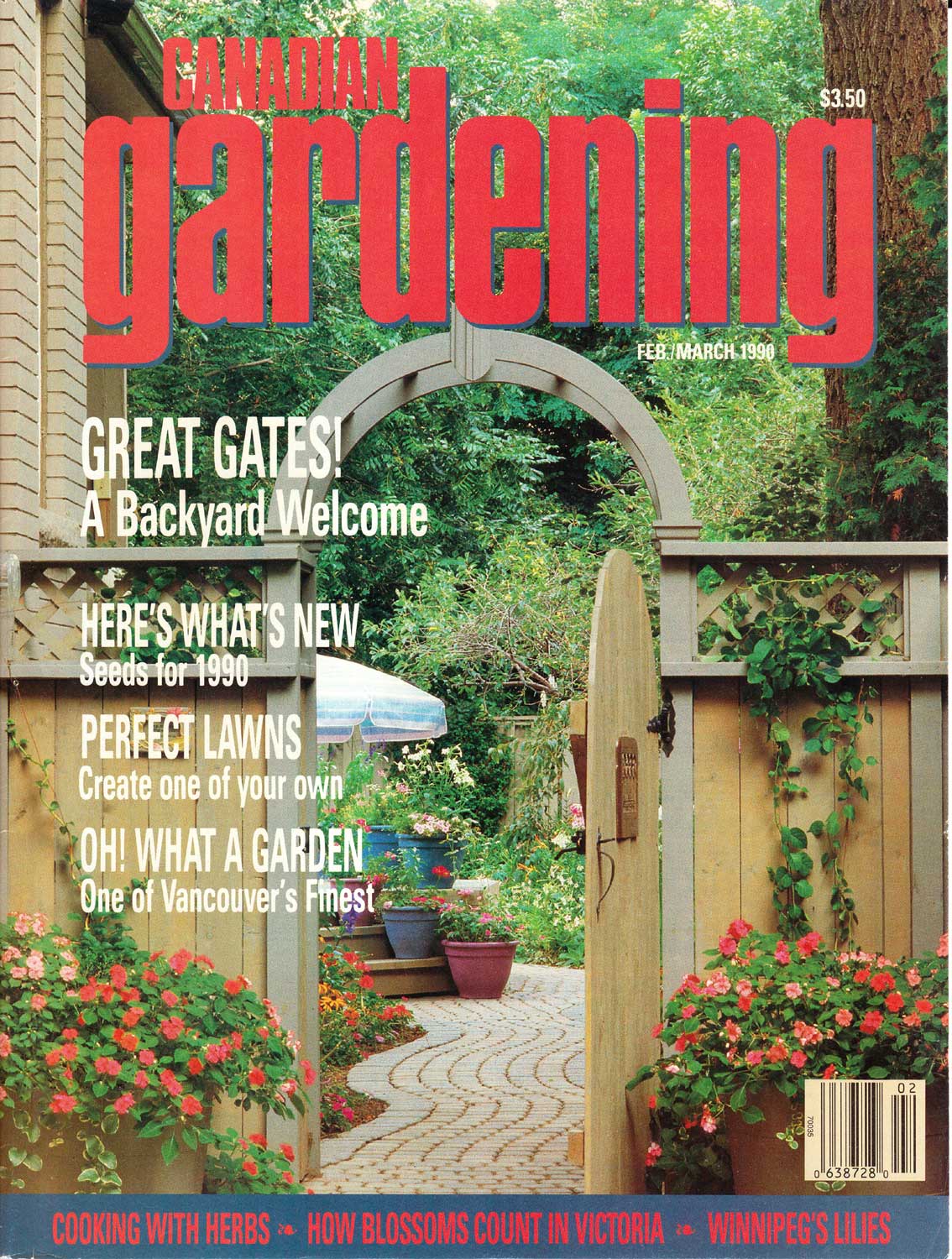
As I wrote in that blog, an arborist working in the branches of the black walnut tree that towers over my side yard dropped a heavy branch onto the gate and broke the arch. I elected not to replace it and just go with the gate, still working well 37 years later — even if the gardener is becoming increasingly creaky!
